

17 Top-Rated Tourist Attractions in Valencia
Written by Lisa Alexander Updated Dec 22, 2023 We may earn a commission from affiliate links ( )
In a dreamy seaside setting, this balmy Mediterranean port town lives up to the local saying "a piece of heaven fallen to earth." Under the warm rays of the southern sun, Valencia's palm-fringed plazas are full of life, and its churches sparkle with brightly colored azulejo domes.
As the old capital of the kingdom of Valencia, the city is rich in cultural attractions. Magnificent historic monuments, such as the 15th-century Silk Exchange, the 18th-century Marquise Palace, and the Museum of Fine Arts, tell the story of a wealthy merchant and aristocratic past.
Valencia has a charming historic center, the Ciutat Vella (Old Town), but the city has entered the 21st century with gusto. The sleek Modern Art Institute, along with the futuristic City of Arts and Sciences immerse visitors into a brave new world of artistic and scientific discovery.
Learn about the best places to visit with our guide to the top attractions and things to see and do in Valencia, Spain.
1. La Ciutat de les Arts i les Ciències
2. las fallas festival, 3. oceanogràfic de valència, 4. la lonja de la seda, 5. go shopping at mercado central, 6. iglesia de san nicolás de bari y san pedro mártir de valència, 7. admire the catedral de valència, 8. plaza de la virgen, 9. iglesia de santo tomás y san felipe neri, 10. meet the animals at bioparc valència, 11. museo arqueológico de la almoina, 12. palacio del marqués de dos aguas (ceramics museum), 13. museo nacional de bellas artes de valència, 14. institut valència d'art moderne, 15. torres de serranos (ancient town gate), 16. spend a day at playa del saler, 17. day trip to the medieval town of requena, where to stay in valencia for sightseeing, map of tourist attractions in valencia, valencia, spain - climate chart.
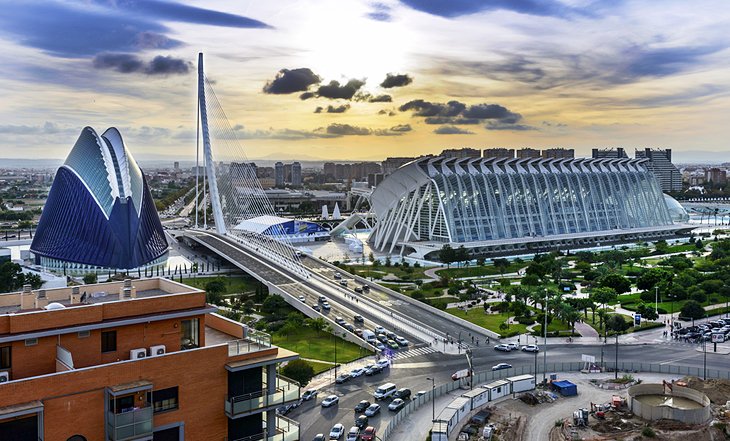
You can discover the fascinating world of arts and sciences at this futuristic complex on the outskirts of Valencia. La Ciutat de les Arts i les Ciències (The City of Arts and Sciences) is one of Europe's most impressive centers dedicated to cultural and scientific exhibitions.
In a two-kilometer space along the Turia River, the complex includes several stunning examples of avant-garde architecture designed by architects Santiago Calatrava and Félix Candela.
The Ciudad complex has six main areas: the Hemisfèric IMAX Cinema , which screens 3-D digital films and serves as a planetarium; the Umbracle landscaped area that features shaded walkways; the Museu de les Ciències , an interactive museum with exhibits about science, the environment, and technology; the Oceanogràfic , Europe's largest aquarium; the Palau de les Arts opera house; and the Ágora concert space.
The City of Arts and Sciences also hosts conferences, exhibitions, and workshops related to science and art topics.
Address: 7 Avenida del Professor López Piñero, València
Official site: http://www.cac.es/en/home.html
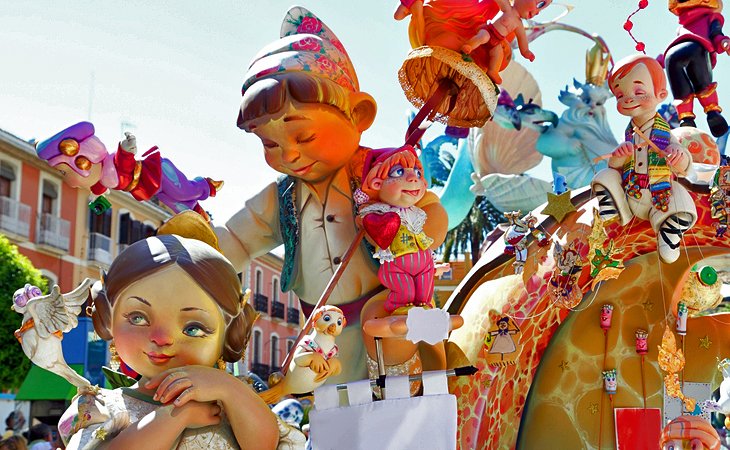
Valencia is one of the best places to visit in March . For over two weeks during the month of March, the city becomes a scene of joyous celebration during the Fiesta de San José (Feast Day of Saint Joseph), a lively religious festival that brims with creative spirit and interesting things to do. The festival includes traditional music and food (paella), a parade, fireworks, and unique art exhibits.
This festival is known for its creative installations called fallas , large floats featuring figures made of papier-mâché. These creations are set up in the streets and then burned at midnight on the last day of the fiesta. The custom originated in the Middle Ages, when carpenters and other craftsmen would burn leftover scraps of wood and other materials on the feast of Saint Joseph.
The Museo Fallero (Fallas Museum) on Plaza Monteolivete offers a chance to see the ninots (figures) that have been created over the years. It is interesting to see how the ninots have evolved with technology, from early wax figures dressed in real clothes to cartoon-like modern figures made of papier-mâché and most recently of polystyrene.
Address: Plaza Monteolivete 4, València
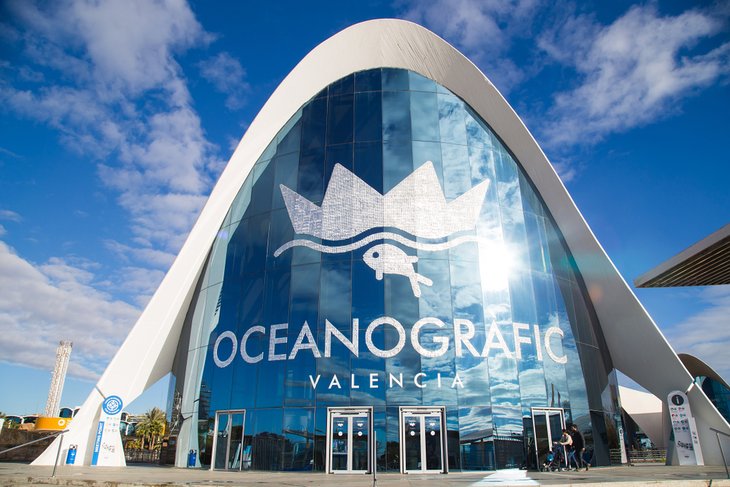
This striking building designed by architect Félix Candela as part of The City of Arts and Sciences houses the largest aquarium in Europe .
It is actually a complex of several buildings, each dedicated to one of the earth's most important marine ecosystems and environments: Wetlands, Temperate and Tropical, Oceans, Mediterranean, Antarctic, Arctic and Islands, and the Red Sea.
More than 500 different marine species are represented by 45,000 sea creatures, visible in nine towers that allow viewing as though you are underwater. The most dramatic of these is the tunnel, where you walk surrounded on both sides and overhead by swimming sharks.
Some of the most popular things to see are the beluga whales, sea lions, walruses, penguins, seals, sea turtles, and dolphins. Along with watching the sea life, you can experience mangrove swamps, marshlands, kelp forests, and other wetland environments with their native plant species.
If you're looking for something special to do, enjoy a meal at the Submarine Restaurant within the Oceanogràfic de Valencia building. The dining room is surrounded by a circular aquarium and features a chandelier that looks like a swarm of jellyfish. The menu focuses on modern-fusion cuisine with a Mediterranean influence. The restaurant serves lunch every day and dinner Monday through Saturday.
The Oceanogràfic de Valencia is open every day year-round. You can purchase combined tickets for admission to the Oceanogràfic aquarium and the Museu de les Ciències or the Hemisfèric.
Address: 1 Carrer d'Eduardo Primo Yúfera, València
Official site: https://www.oceanografic.org/en/
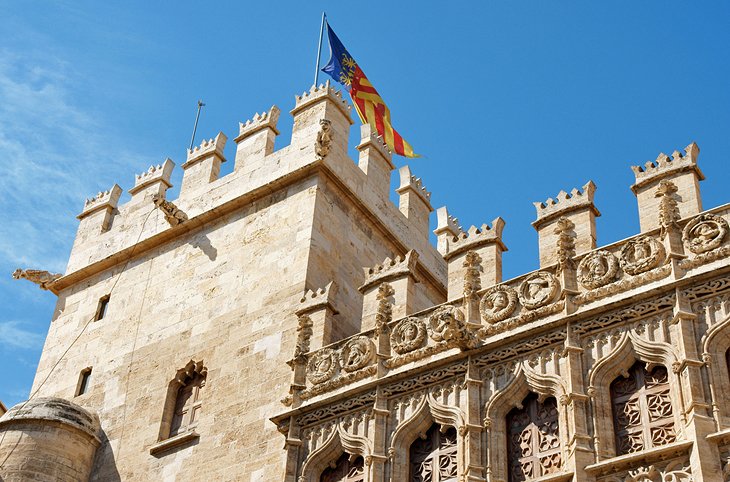
This magnificent Gothic structure was built in the 15th century to house the city's Silk Exchange , the marketplace where the famous Valencian silk was traded with merchants (to be sold all over Europe). The monument is listed as a UNESCO World Heritage Site .
One of the finest examples of Gothic civil architecture in Europe, La Lonja de la Seda resembles a medieval castle with its crenellated exterior and formidable tower. The façade features richly decorated doorways, decorative windows, and gargoyles (the grotesque carved creatures that function as water spouts). The main hall has rich stellar vaulting borne on twisted columns.
You can climb the 144 stone steps of the tower's helical staircase. From the top of the tower, the views of the town are stunning. This attraction is open to the public daily (except Mondays).
Address: Plaza del Mercado, València
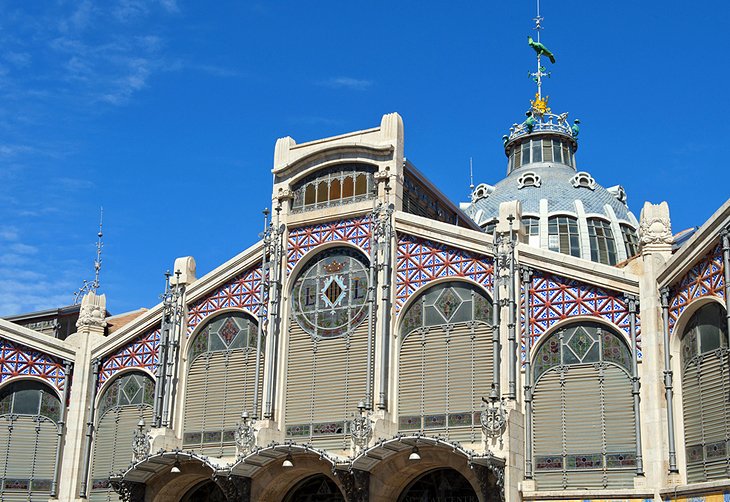
Just steps away from La Lonja de la Seda, the Mercado Central ( Central Market ) is a spacious marketplace built in 1928.
The Art Nouveau building is lavishly adorned with azulejos, decorative ceramics typical of the region. The hall contains hundreds of market stalls where vendors sell fresh fruits, vegetables, and food products from the Valencia region, as well as other areas of Spain.
The Iglesia de los Santos Juanes , a lovely historic church, is found on the Plaza del Mercado immediately next to the Mercado Central. This National Historic and Artistic Monument was built between the 14th and 16th centuries on the site of a hermitage church that replaced an old mosque.
While the interior is Gothic in style, the exquisite Baroque façade was designed by Vicente García in the 17th and early 18th centuries. Gorgeous frescos grace the interior's vaulted ceiling; the fresco paintings were created by Antonio Palomino in 1700.
Address: Plaza de la Ciutat de Bruges, València
Official site: https://www.mercadocentralvalencia.es/
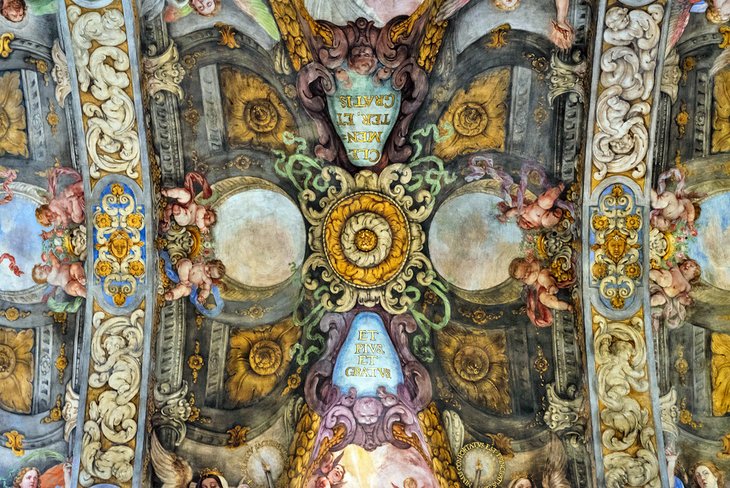
This church dedicated to St. Nicholas of Bari and St. Peter the Martyr was founded in the 13th century on the site of a Roman sanctuary. The Romanesque church was renovated in the Gothic style in the 15th century, and its interior was finished in the 1690s in the Baroque style.
Although the exterior is quite simple and somber, the church has a sumptuous interior that is one of the most ornate of all Valencia's churches. The sanctuary features breathtaking wall and ceiling frescoes designed by Antonio Palomino, while the actual painting was completed by Dionis Vidal. The frescoes represent scenes from the lives of Saint Nicholas and Saint Peter Martyr.
With its lavish frescoes and sculptural embellishments, this church is a gem of Baroque art and is sometimes compared to the Sistine Chapel in Rome . The impressive scale of the ceiling frescoes is unique in the world.
Address: 35 Calle de los Caballeros, València
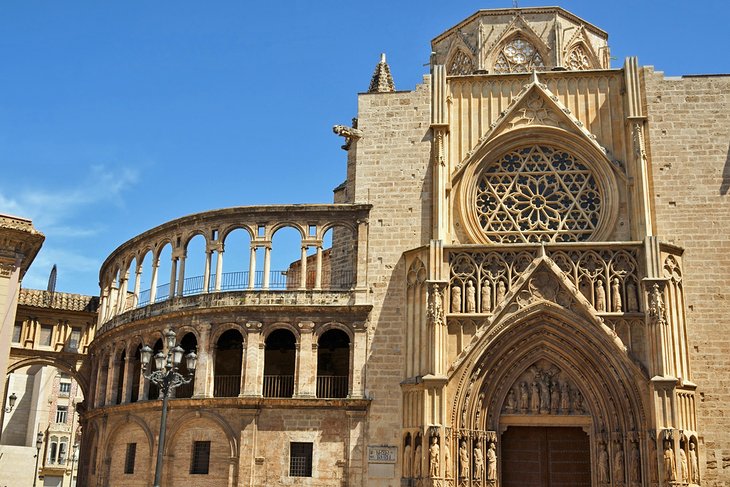
The Catedral de València (Catedral del Santo Cáliz) stands out as one of the most unusual cathedrals in Spain owing to its mishmash of architectural styles. Originally this location was the site of an ancient Roman temple and then a Moorish mosque.
At this spot that is steeped in history, the cathedral was constructed beginning in the 13th century. Renovations were made in the 15th century and 17th century.
The exterior combines original Romanesque architectural elements with sculptural details added later in the Middle Ages. Spend some time admiring the façade before entering the cathedral. The splendid Puerta del Palau doorway dates to the Romanesque era, while the Puerta de los Apóstoles (Apostles' Doorway) dates from the 15th century.
The interior has an inspiring ambience with its majestic domed ceiling and a rose window illuminating the space. Dazzling in its Gothic splendor, the somber high-vaulted nave is embellished with Renaissance paintings and elegant Baroque art. The various chapels are adorned with masterpieces of art, including paintings by Goya and a crucifix by Alonso Cano.
A highlight of the sanctuary is the Chapel of the Holy Grail (Capilla del Santo Cáliz), with delicate vaulting and star motifs. This chapel illustrates a scene of the 12 apostles in Heaven and the coronation of the Virgin Mary. The most sacred object is a reliquary containing the Holy Chalice, an artifact from the first century CE said to be the goblet that Jesus used to perform the Holy Eucharist.
The Cathedral of Valencia also has a museum, the Museo Catedral de València , which displays a prestigious collection of religious art. A variety of styles from different time periods (Gothic, Renaissance, etc.) are on display. The museum boasts many exceptional artworks including paintings by Mariano Salvador Maella and Francisco de Goya.
In addition to visiting the interior of the cathedral and the cathedral museum, you may ascend El Miguelete (the Miguelete Tower) to admire superb views. The 207-step climb to the top of the tower rewards with panoramic vistas of Valencia's cityscape.
The Cathedral of Valencia and the Cathedral Museum can be visit with an admission fee, which includes an audio-guide with various language options. Both the cathedral and its museum are open to the public year-round every day (except for Sundays during wintertime). The Miguelete Tower is open daily year-round; admission requires a small entrance fee.
Address: Plaza de l'Almoina, València
Official site: http://www.catedraldevalencia.es/en/
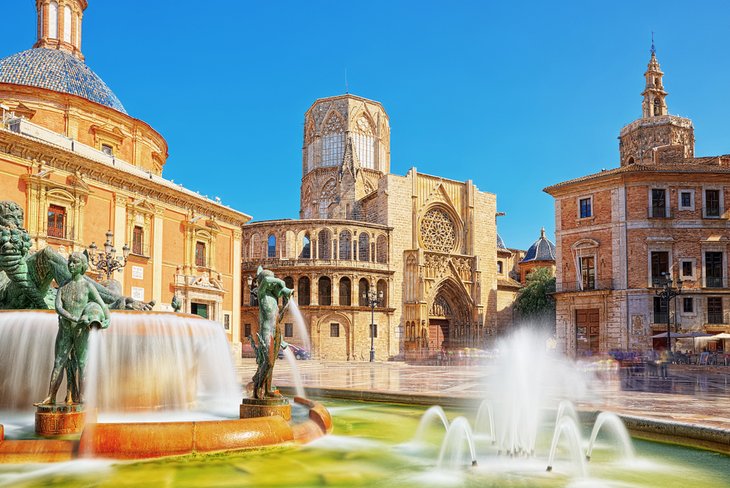
Overlooking the cathedral, the Plaza de la Virgen is among the oldest (it dates to Roman times) and loveliest of Valencia's many plazas.
The graceful Neptune fountain at the center of the Plaza de la Virgen is the work of Valencia sculptor Silvestre Edeta. Lighted at night, it's a favorite meeting place among locals.
The square is bordered by several landmark buildings. Across the square is the Palace of the Generalitat and next to the Catedral de València is the Real Basílica de Nuestra Señora de los Desamparados , the most important (and also the first) Baroque church in Valencia. This church is renowned for its magnificent fresco on the dome ceiling that was painted by Antonio Palomino in 1701 and is considered a masterpiece of Spanish Baroque art.
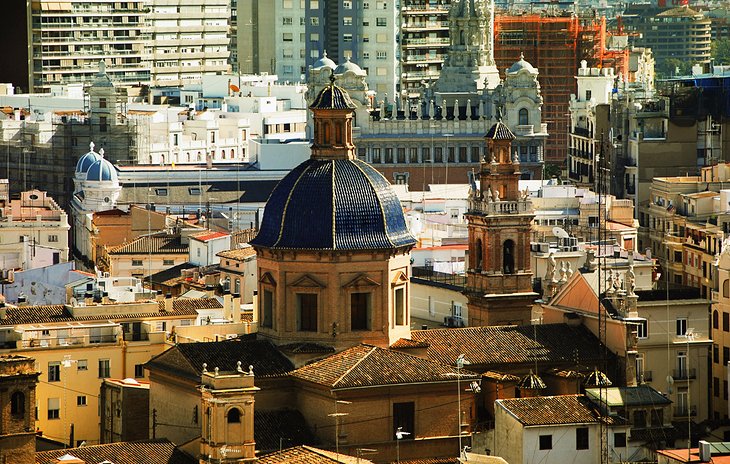
With its dazzling blue-tiled dome, this beautiful church exemplifies the characteristic Mediterranean style of Valencia. Built in 1725, the Church of Saint Thomas and Saint Philip was listed as a National Historic Monument in 1982.
The church has a fancifully decorated Baroque façade, and the architectural layout was modeled after the much-imitated Il Gesú church in Rome . The breathtaking interior has a spacious central nave lined with numerous side chapels.
Catholic mass is held at the church daily. The monument is not open to the public for visit, but tourists may attend a mass to see the lovely sanctuary.
Address: Plaza de San Vicente Ferrer, València

Valencia's zoo covers 25 acres north of the park created by the diversion of the River Turia's course. The landscape was created to house animals in as close to their native habitats as possible, and the zoo is especially known for its large collection of African animals.
The environment is designed so that you immediately feel as though you have been transported to Africa as they view animals almost barrier-free in landscapes typical to the savannah, Madagascar, and equatorial Africa.
Instead of separating different species, they coexist as they would in their native environments. On the savannah, for example, lions, giraffes, antelopes, and rhinoceros all live together as they do in the wild. Gorillas inhabit a dense equatorial forest, while hippopotami and crocodiles cool in the water.
Bioparc is actively committed to sustainability of resources and to wildlife conservation, using solar panels to heat water, and recycling more than 95 percent of it.
Address: 3 Avenida Pío Baroja, València
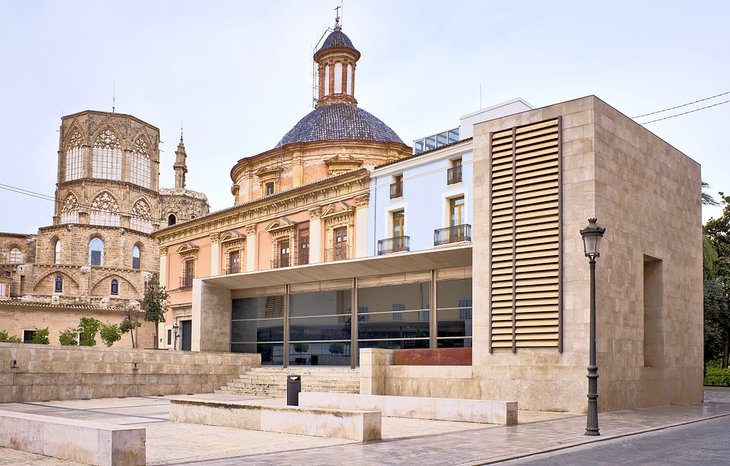
Beneath a sleek modern building across from the cathedral, La Almoina Archaeological Museum offers a glimpse of the civilizations that have contributed to Valencia's heritage. Discovered during excavations between 1985 and 2005 are well-preserved remains of the first settlement here by the Romans, more than 2,000 years ago.
There are remnants (dating to the 2nd century CE) of the Roman baths and streets, including a sanctuary, part of the forum portico. A baptistery and the apse of a church are from early Christian times. The era of Moorish rule is revealed in vestiges of a courtyard, pool, and fortifications from the Alcázar of the old Muslim city.
Together with historic pottery and other artifacts found underneath modern Valencia, the excavated area is considered one of Europe's best archaeological sites . The ancient ruins are covered with plexiglass to allow for easy viewing, and walking paths are lined with railings for a pleasant experience.
Address: Plaza Décimo Junio Bruto, València
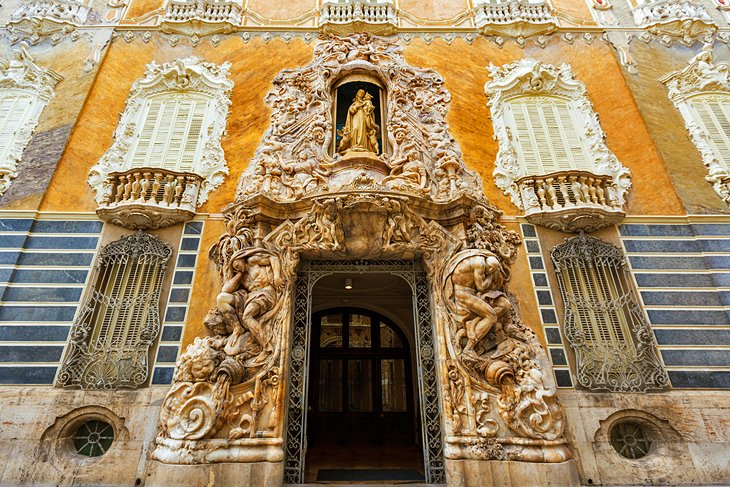
Near the Església de Sant Martí (Church of San Martín) is the Palacio del Marqués de Dos Aguas, an 18th-century aristocratic palace that belonged to a prominent noble family. The palace is renowned for its opulently decorated façade and refined, ornately decorated interior.
The palace now houses the González Martí National Museum of Ceramics , which opened in 1947. The museum presents more than 5,000 examples of traditional pottery from Valencia and the surrounding area, azulejos (blue glazed ceramic) from Teruel, and faience (glazed earthenware) from Toledo and Seville.
Other interesting items on display include ancient Greek, Roman, and Arab pottery; and fine porcelain from the Silk Route (China) and Japan. The collection also contains modern pieces, including works by Picasso, and contemporary items.
A highlight of the collection is the fully-equipped 19th-century Valencian kitchen featuring traditional tiles.
The González Martí National Museum of Ceramics is open Tuesday through Sunday.
Address: 2 Calle Poeta Querol, València
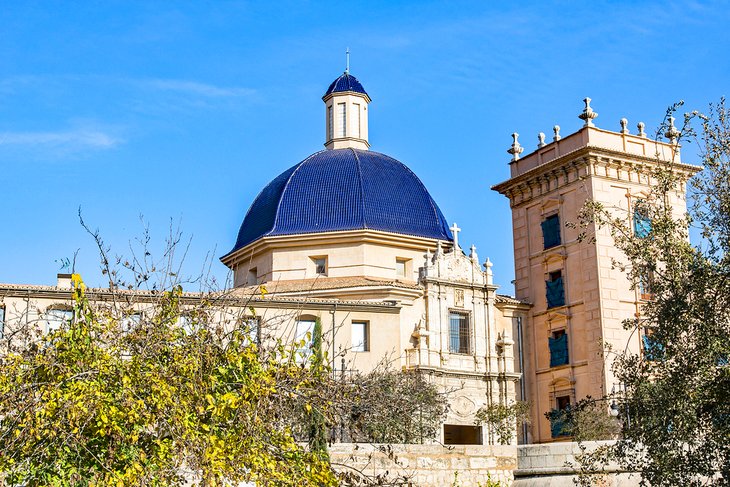
The National Museum of Fine Arts is a wonderful place to discover the artistic heritage of the Valencia region.
The museum displays archeological findings, paintings, and sculptures, from the medieval period to the 20th century. Much of the art collection represents medieval religious paintings created by Valencian artists or works created for Valencia churches.
Among the museum's most precious works are the 14th-century altarpiece of Fray Bonifacio Ferrer (a Valencian friar) and a triptych of the Passion by Hieronymus Bosch. The assortment of 16th- to 19th-century Spanish paintings is also interesting.
Highlights of the Valencian painting collection are the Last Supper and Saint Bruno by Francisco Ribalta and Saint Jerome by Jusepe de Ribera. Other Spanish masters represented include Diego Rodríguez de Silva y Velázquez, Bartolomé Esteban Murillo, El Greco, Francisco de Goya and Luis de Morales.
Adjoining the Museum of Art is the Jardines del Real , a peaceful green space filled with statues, fountains, and walking paths.
The museum is open Tuesday through Sunday. Admission is free of charge.
Address: 9 Calle San Pío V, València
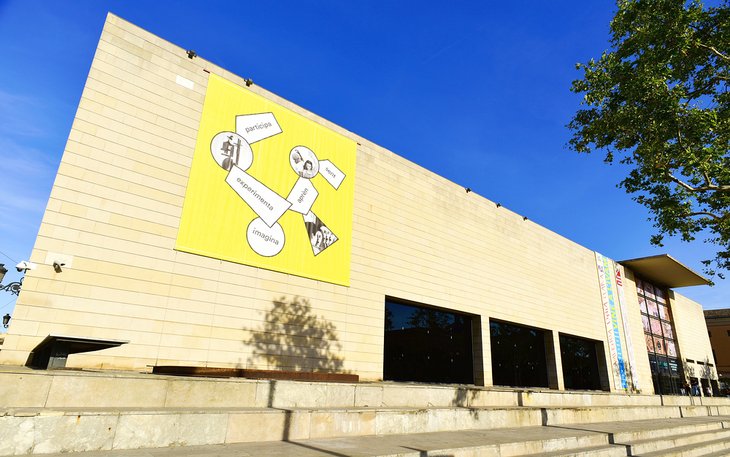
Housed in a surprising space-age building, the Valencia Institute of Modern Art is dedicated to the avant-garde art of the 20th century. The permanent collection covers all movements of modern and avant-garde art, including Analytical Abstraction, Pop Art, and New Figurative.
The museum also hosts temporary exhibitions, lectures, and workshops. In striking contrast to the modern building, an underground room of the museum reveals ruins of Valencia's medieval city wall. The archeological remains were uncovered during construction of the museum.
Well-designed for visitors, the museum has a trendy casual restaurant, Mascaraque , which serves contemporary-style Mediterranean cuisine and has a pleasant outdoor terrace.
There is also a library with a bookshop and Reading Room; the library contains over 40,000 books and documents on topics of modern art.
The Valencia Institute of Modern Art is open Tuesday through Sunday and is open late on Fridays. Admission is free of charge.
Address: 118 Calle Guillem de Castro, València
Official site: http://www.ivam.es/en/
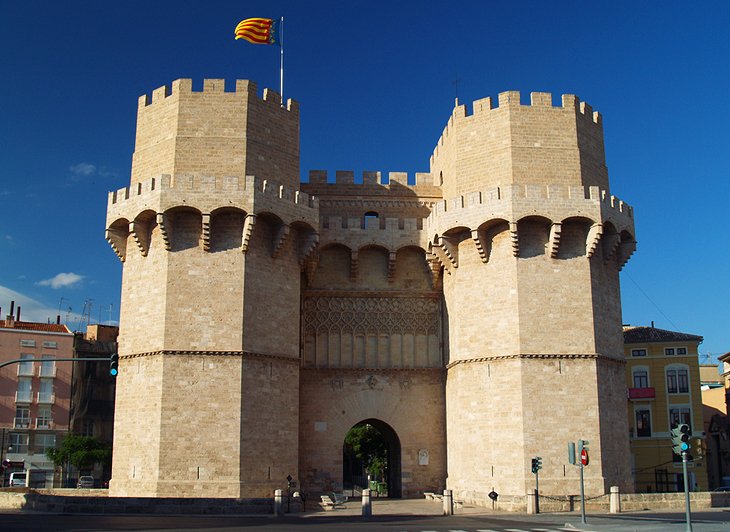
This impressive landmark is a symbol of Valencia . The Torres de Serranos represents an ancient gate of the Old Town and recalls an era when the town was surrounded by defense walls. The town ramparts were built in the 14th century on top of Roman foundations.
In 1930, the Serranos Towers were restored to their former glory. From these massive towers, take in sweeping views of the cityscape. The archway of the entrance gate features decorative Gothic details and two shields of the city.
Address: Plaza dels Furs, València
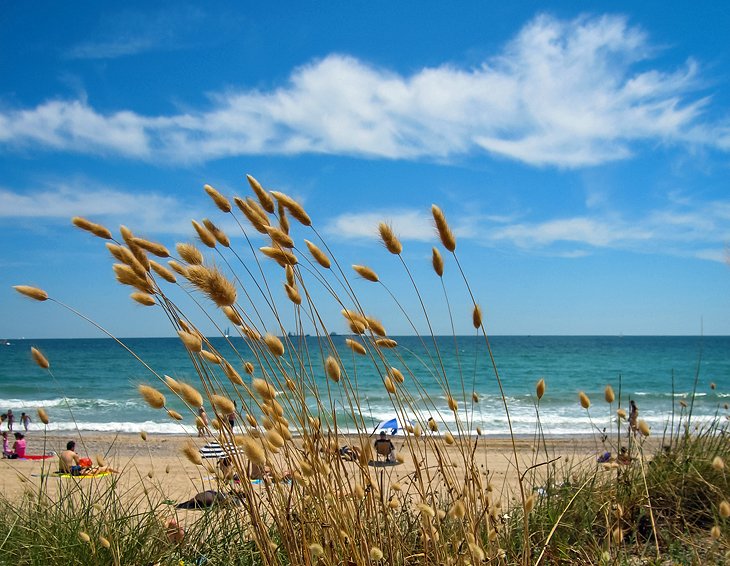
One of the most popular beaches in the Valencia region, this pristine stretch of sand is just 16 kilometers from Valencia in the La Albufera Natural Park . Two other beautiful beaches border El Saler Beach: Playa L'Arbre del Gos; and to the south, La Garrofera beach. This idyllic stretch of fine sandy shoreline extends for 2.6 kilometers and is protected from the wind by dunes and pine trees.
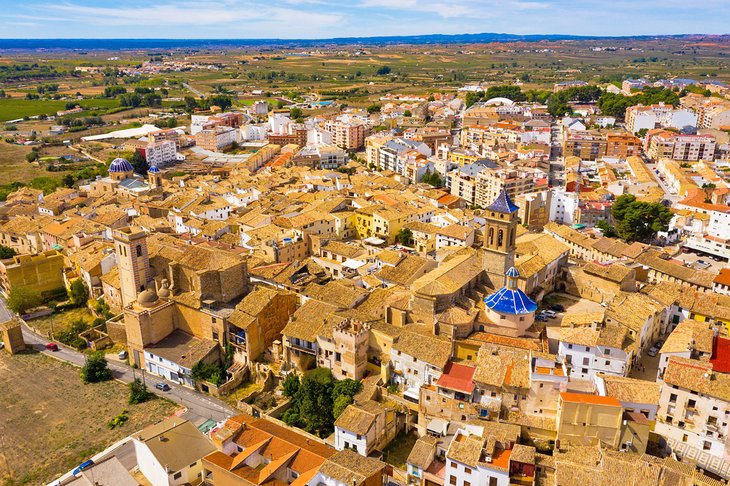
Located 68 kilometers from Valencia, the charming medieval town of Requena reveals a typical Hispanic-Arabic ambience with its old Moorish castle , many narrow pedestrian streets, peaceful squares, and houses adorned with decorative tiles and wrought-iron balconies.
The town has two important 14th-century churches, the Iglesia de Santa María and the Iglesia del Salvador ; both feature ornate Isabelline Gothic facades. Other noteworthy medieval monuments include the El Cid Palace and the Iglesia de San Nicolás .
For those seeking relaxation, the Fuente Podrida spa resort is a worthwhile 30 kilometers from Requena in a pristine natural environment.
The top tourist attractions in Valencia are mostly in the Ciutat Vella (Old Town), the historic city center around the cathedral and Plaza del Ayuntamiento. Fortunately for tourists, other attractions (such as the beach) are accessible by an excellent transit system. These highly rated hotels in Valencia are convenient for sightseeing:
Luxury Hotels :
- On a quiet street near the cathedral, the five-star Caro Hotel occupies the Palacio Marqués de Caro, a historic monument that has been beautifully restored. The recently updated interior décor is sleek and minimalistic. Amenities include a concierge, small swimming pool, and a Michelin-starred gastronomic restaurant.
- Styled with Art Deco interiors, the five-star The Westin Valencia is in a quiet neighborhood near The City of Arts and Sciences. Lush Mediterranean landscaping, a fitness center, spa, indoor swimming pool, and three restaurants make for a resort-like atmosphere.
- The five-star Hotel Las Arenas Balneario Resort is a beachfront property with a large outdoor swimming pool. Many guest rooms feature private balconies with sea views. The hotel is on a metro line to the center, a good compromise between the beach and sightseeing.
Mid-Range Hotels:
- Ideally located in the center of Valencia on the Plaza del Ayuntamiento, the four-star Meliá Plaza is within walking distance of many historic attractions, as well as shops and restaurants. Some rooms have balconies with views onto the Plaza de Ayuntamiento. The hotel's restaurant specializes in Mediterranean cuisine.
- The three-star Petit Palace Plaza de la Reina is located in the historic center of Valencia near the cathedral and the Palacio del Marqués de Dos Aguas. The contemporary-style guest rooms feature modern amenities such as flat-screen televisions and iPads. Some rooms feature balconies with city views.
- The SH Ingles occupies a beautifully restored 18th-century palace in the historic La Xerea neighborhood near Palacio del Marqués de Dos Aguas. This four-star boutique hotel has a concierge, 24-hour front reception desk, and a gourmet restaurant known for its authentic paella. The guest rooms are spacious, bright, and minimalistic in style.
- Within easy walking distance of The City of Arts and Sciences, the four-star AC Hotel by Marriott Colón Valencia offers sleek contemporary-style guest rooms, a fitness center, and room service.
Budget Hotels:
- Just off Plaza del Ayuntamiento, near restaurants and historic attractions, the three-star Catalonia Excelsior offers well-situated accommodations at affordable rates. The hotel provides a 24-hour front reception desk, concierge services, and a buffet breakfast.
- The four-star Barceló Valencia is just opposite The City of Arts and Sciences, with great views of the iconic buildings. The hotel offers many luxuries for the price, including a rooftop terrace with a swimming pool and sundeck.
- Another hotel overlooking The City of Arts and Sciences, the three-star NH Valencia Las Ciencias is a 15-minute drive to the beach and a 10-minute bus ride to the historic center (Ciutat Vella) of Valencia. Amenities include concierge service and a 24-hour front reception desk.
More Related Articles on PlanetWare.com
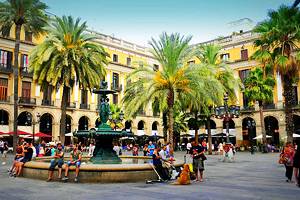
Exploring the Mediterranean Coast : The beaches of Mediterranean Spain are some of the loveliest in the world, one of the most famous being El Milagro in the UNESCO-listed Tarragona , which sits north of Valencia. Iconic Barcelona is just beyond, famous for its medieval Barri Gòtic, Modernist architecture, and sandy beaches.
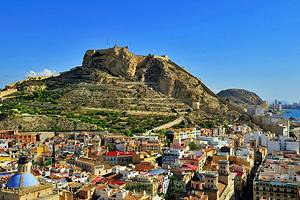
Historic Towns near Valencia: South of Valencia, the Castillo de Santa Bárbara looks down over the extensive beaches and historic town of Alicante . For those who want to venture inland, the art museums of Madrid and cultural diversity of the medieval walled city of Toledo are top picks for sightseeing.
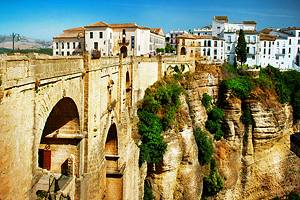
Other Must-See Cities in Spain : A treasure-trove of cultural attractions, Zaragoza boasts ancient Roman ruins, as well as Moorish and Baroque landmarks. West of Alicante, Córdoba is best known for its UNESCO-listed mosque, La Mezquita. To the south, Andalusia 's pride, Granada is a top tourist destination thanks to its vibrant cultural life full of flamenco dancing and cuisine influenced by neighboring Arabian countries. From here, the seaside old-world paradise of Málaga is just a short jaunt to the southern shores.
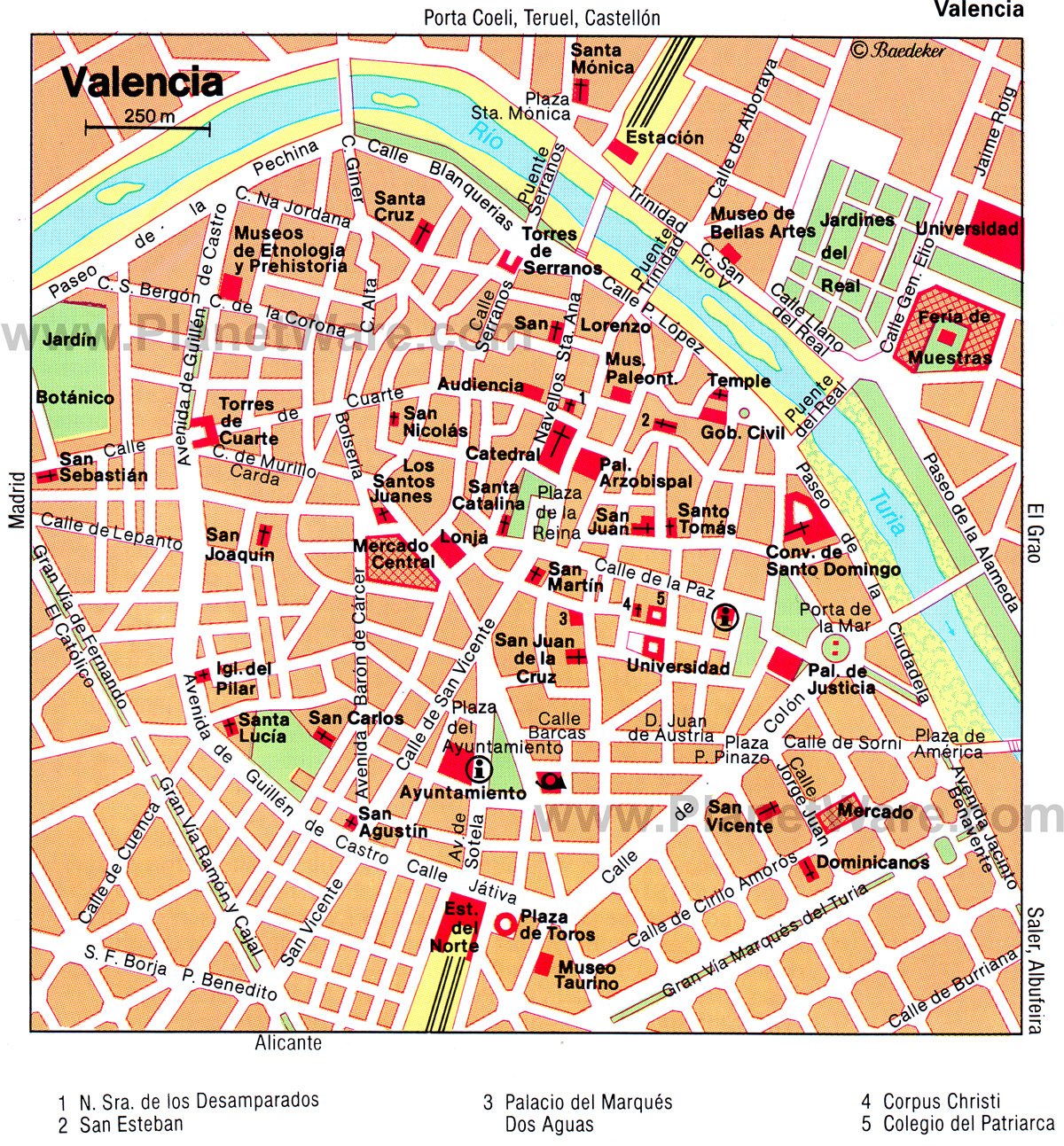
More on Spain

Valencia Travel Guide
Courtesy of Sergio Formoso | Getty Images

26 Best Things to Do in Valencia, Spain
Valencia's three beaches feature soft golden sand and spectacular views of the Mediterranean. Visitors who enjoy exploring outdoors can spend their days strolling dozens of gardens, parks and plazas located within the city or hiking the trails of
- All Things To Do

Central Market (Mercado Central) Central Market (Mercado Central) free
This is where local Valencians gather to do their shopping, though you'll find the atmosphere a bit different than your local supermarket. One of the oldest food markets in Europe, Mercado Central (Central Market) is adorned with Valencian-style mosaics and filled with residents purchasing local foods from more than 1,200 trusted vendors selling everything from meat and vegetables to pastries and take-away items. Spanning more than 86,000 square feet, the building occupies land once used as an open-air market in the mid-19th century. Opened in 1928, the visually stunning building sits in the El Mercat neighborhood, opposite two other architecturally significant monuments: La Lonja de la Seda and Los Santos Juanes Church.
Recent visitors were invariably impressed by the expansive range of food and beverages on offer here, with some describing the market as a "foodie paradise." Reviewers recommended stopping by, even if you don't plan on purchasing anything, though they do warn that prices are high because vendors recognize this is such a tourist magnet.

City of Arts and Sciences (Ciutat de les Arts y les Ciencies) City of Arts and Sciences (Ciutat de les Arts y les Ciencies)
The Ciutat de les Arts y las Ciències (also known as the City of Arts and Sciences) is a traveler favorite for its futuristic design. Built on the old riverbed of the Turia River, the museum's contemporary architecture (by Santiago Calatrava) shelters the Museu de les Ciències (a science museum), the Hemisfèric (a planetarium and IMAX theater), the Oceanogràfic – the largest aquarium in Europe – and the Palau de les Arts Reina Sofía (a performing arts venue), among other attractions.
Past travelers raved about the complex's myriad offerings, and suggested you wear comfortable shoes; the attraction is so massive (about 452,000 square feet), you'll be doing a lot of walking. Reviewers recommended setting aside an afternoon or even two to three days to see the entire complex. Travelers praise the science museum for its hands-on exhibits and the aquarium for its stunning design.

Turia Gardens (Jardi del Turia) Turia Gardens (Jardi del Turia) free
The Jardí del Túria (or the Garden of the Turia) might seem odd to newcomers, seeing as how it boasts more than a dozen bridges built to span a river that's no longer there. One of the country's largest urban parks, Jardí del Túria was built after a fatal 1957 flood of the Turia River, which was then diverted over the course of the mid- to late 1960s. Today, the gardens shelter orange and palm trees and rose bushes among a wide variety of flora. The park's facilities also include cafes, football (i.e., soccer) fields, children's play areas, rugby pitches, fountains, baseball diamonds, running tracks, skate parks and miniature golf courses. Predictably, the park is especially popular with runners and cyclists. It is also ideal for families with children.
The green space is highly appreciated by recent visitors for the range of activities on offer as well as the peaceful atmosphere.

Popular Tours

Valencia Old Town Tour with Wine & Tapas in 11th Century Historic Monument
(1551 reviews)
from $ 82.83

San Jose Caves Guided Tour from Valencia
(345 reviews)
from $ 76.20

Valencian paella workshop and visit to the Algiros market
(192 reviews)
from $ 70.68

Oceanografic Valencia (L'Oceanografic) Oceanografic Valencia (L'Oceanografic)
Though part of the Ciutat de les Arts y les Ciències , Oceanogràfic Valencia stands as one of the top things to do all on its own. It's the largest aquarium in Europe and also boasts the longest underwater tunnel on the continent, which facilitates close-up views of sharks. The aquarium reproduces multiple habitats, including Arctic, Antarctic, temperate and tropical as well as, appropriately enough, Mediterranean. Some visitors may be disappointed to know it also (controversially) hosts the only family of beluga whales in Europe as well as dolphinarium, which features bottlenose dolphins. The grandstand at the dolphinarium seats more than 1,500 people, making it (you guessed it) the largest in Europe. The attraction also shelters a sizable crocodile preserve.
Past visitors marveled at the aquarium's unique architecture as well as the range of sea creatures on view. Unsurprisingly, perhaps, the place is especially popular among families with children, though some travelers found the tickets rather expensive.

Bioparc Valencia Bioparc Valencia
The Bioparc Valencia is a 25-acre zoo, located in the northwest area of the city. But this isn't just any kind of zoo – it's an immersion zoo, which means it removes or hides many of the barriers most zoos put in place between different species, including humans. Species that naturally (and safely) reside together in the wild are placed together, while other gentle species, like lemurs for instance, are free to meet humans face to face. Other barricades are simply hidden to give visitors the feeling of being out in the wild, a particular highlight for recent travelers. The park aims to recreate the African continent, with animals like zebras, Nile crocodiles, giraffes and elephants spread across four main habitats.
Past visitors enjoyed the chance to see the animals close up and found the unique layout an interesting departure from the typical zoo. Keep in mind the Bioparc's rules concerning the animals: They shouldn't be touched or fed, nor should they be disrupted by yelling or flash photography. Other than that, use your common sense: No jumping over the fence to meet the tigers.

La Lonja de la Seda (Silk Exchange) La Lonja de la Seda (Silk Exchange)
The Lonja de la Seda (Silk Exchange) was built between 1482 and 1533 and is considered a great example of the late Valencian Gothic-style architecture. Today, it's a UNESCO World Heritage Site, partly because of this style, but also because that style was applied to a secular building rather than a religious one, as was the norm in that time. Pay close attention to the gargoyles that crouch throughout the Silk Exchange: Their expressions range from funny to naughty.
Recent visitors found the architectural details endlessly fascinating. Many reviewers also advised opting for an audio guide, which they say helps explain the building's history and various architectural elements. Plus, recent travelers said there is little information available without the aid of the audio guide. Others suggested enjoying the courtyard, which is filled with orange trees.

Valencia Cathedral Valencia Cathedral
Located in the Plaza de la Reina , the Valencia Cathedral is probably most famous for its claim of owning the Holy Grail. Dating back to 1262, the cathedral was raised on the site of a former mosque and displays a number of architectural styles, including Romanesque, Baroque and Gothic.
Past visitors were impressed with the cathedral's interior, though they bemoaned the entrance fee. Others applauded the audio guide that is included with admission, saying it provided important historical context. Audio guides are available in a variety of languages, including English.

Church of St. Nicolas (Parroquia de San Nicolás de Bari y San Pedro Mártir) Church of St. Nicolas (Parroquia de San Nicolás de Bari y San Pedro Mártir)
With more than 20,000 square feet of elaborate frescos adorning its interiors, the Parroquia de San Nicolás de Bari y San Pedro Mártir has been called the Sistine Chapel of Valencia. Originally constructed in 1242, the church was remodeled and restored several times, perhaps most famously between 1690 and 1693 when the interiors were decorated with fresco paintings of scenes depicting San Nicolás de Bari (Saint Nicholas) and San Pedro Mártir (Saint Peter Martyr).
Recent travelers described the frescoes as "beautiful" and "outstanding." Many strongly recommended renting the audio guide, which reviewers say provides important commentary for understanding all of the beautiful frescoes. However, a few were disappointed with the entrance fee required to view the interiors of the church.

E-Bike Grand Valencia Private Tour
(64 reviews)
from $ 88.35

Valencian Paella cooking class, Tapas and Market Visit
(543 reviews)
from $ 66.26

Adventures day: Thermal Springs and Waterfalls
(462 reviews)
from $ 104.92

Plaza de la Virgen Plaza de la Virgen free
Adjacent to the Valencia Cathedral , the marble-floored Plaza de la Virgen is an ideal spot to appreciate some of the city's architecture – and to people-watch. From this viewpoint, you can take in the Gothic Valencia Cathedral (where the chalice from the Last Supper is said to be preserved), as well as the pink walls and blue roof tiles of the Baroque Real Basílica de Nuestra Señora de los Desamparados.
Other points of interest include the beautiful Túria Fountain, which represents the Turia River and features sculptures of eight women pouring water from pitchers as well as a large sculpture of Neptune sitting atop the fountain. The Tribunal de las Aguas meets every Thursday at noon outside the Door of the Apostles – a continuation of a 1,000-year-old tradition. The Water Tribunal is made up of eight farmers dressed in black, who sit in a circle and discuss (in the Valencian language) water access to the orchards. This scene is a curious spectacle through the eyes of tourists.

Palace of the Marques de Dos Aguas (Palacio del Marques de Dos Aguas) Palace of the Marques de Dos Aguas (Palacio del Marques de Dos Aguas)
The Palace of the Marqués de Dos Aguas, or Ceramics Museum, is widely regarded as among the best displays of Baroque architecture in Spain. (It takes its name from a Valencian noble family.) When it was first constructed in the 15th century, it was a Gothic building; it was reworked in the Baroque style in the 18th century, when the ornate entryway was added. Some of the rooms retain the original Gothic look. Since 1949, when the Ministry of Education bought the building, it has housed the González Martí National Museum of Ceramics. The museum boasts the largest collection of ceramics in the country and features pieces from the 18th century to the present, including work by Pablo Picasso.
Recent travelers reported feeling awe-struck by the opulent architecture. Though the building itself may be what impresses people the most, the ceramics museum is also generally deemed well worth a visit.

Plaza del Ayuntamiento Plaza del Ayuntamiento free
This beautiful city square contains the ayuntamiento (town hall). Within the town hall is where you'll find the main tourist office, which offers a variety of tourist information (including ticket sales) in various languages.
Many travelers say the Plaza del Ayuntamiento is a good place to start off any sightseeing, as the square is filled with decadent buildings constructed during Valencia's golden age. In the square's center is a fountain, which is surrounded by fragrant flower stalls. In the winter, an ice rink and carousel adorn the square, and during Fallas festival it becomes the main hub of the celebrations and the grand finale, when the event’s biggest papier-mâché statue is set alight.

Albufera Natural Park (Parc Natural de l'Albufera) Albufera Natural Park (Parc Natural de l'Albufera) free
To commune with nature – specifically 300 bird species and miles of walking and biking trails – make a visit to the Albufera Natural Park, a large freshwater lagoon. The park is surrounded by the rice fields that helped prompt the invention of paella. Indeed, there are a number of restaurants nearby in the towns of El Palmar (the village where paella was born) and El Saler, and many travelers find the food alone a reason for taking a trip to the area.
Visitors can explore the country’s largest freshwater lake in traditional flat-bottomed wooden boats with the help of local boat operators. During the 40-minute trip, they will explain (in Spanish, Valencian or English) how the lake was formed and was used to develop rice farming, whilst punting passengers past 16-foot-high reeds. Some passengers are lucky enough to spot elusive otters. The boats depart from the main jetty and cost 8 euros (approximately $8.70).

Plaza de la Reina Plaza de la Reina free
Within walking distance of the Valencia Cathedral , the Plaza de la Reina is a great space to sit and observe activity in the old part of town. While smaller than Plaza de la Virgen , it offers a different perspective of the Valencia Cathedral (from the main entrance), as well as excellent views of the famous Miguelete bell tower. Occasionally, the square is filled with craft market stalls, and the zone between Plaza de la Reina and Plaza de la Virgen is lined with artists demonstrating their skills and selling paintings.
Past travelers found the area lively at all times of the day and said they visited on several different occasions during their trip. Multiple options for food and beverages flank the square, including ice cream shops and tapas bars. The streets surrounding it offer a cornucopia of shopping options, from independent fashion retailers to artisanal products.

Valencia Highlights with Private Vehicle (Private Tour)
(32 reviews)
from $ 276.10

Valencia Best Food, Traditions & History Tour
(60 reviews)
from $ 96.08

Albufera Natural Park Tour with Boat Ride from Valencia
(149 reviews)
from $ 65.16

Gulliver Park (Parque Gulliver) Gulliver Park (Parque Gulliver) free
If a park designed with the giant from Jonathan Swift's "Gulliver's Travels" in mind sounds fanciful, that's because it is. Yet Gulliver Park is not merely a literary tribute; rather, it's a playground consisting of numerous slides and staircases arranged in the shape of its prone namesake. The figure's hat contains a smaller version of Gulliver, providing a sense of what the massive character looks like when glimpsed from above. To give a sense of the size of the "giant," the strands of Gulliver's hair are huge slides. According to past visitors, the park is best suited to adventurous kids 10 and older.
While some adults appreciated the bibliophilic reference, the park is a hit with children. However, adults will be grateful for its recent refurbishment in November 2022, which includes safety ropes at the edge of the steepest drops and soft floor surfaces. Recent visitors warn the slides can get hot in the Valencian sun, and to be prepared for your kids to go home dusty, but happy.

Old Town Old Town free
U.S. News Insider Tip: Look behind the cathedral to find the glass-bottomed artificial pond where you can see part of the Roman city walls below. Then, head inside to La Almoina Archaeological Museum to see the remains of Roman and Moorish streets. – Sarah Harvey
The Ciutat Vella, or Old Town, is a buzzing combination of historical sights, bars and restaurants, set within the former boundary of the ancient city walls. This UNESCO-listed district encompasses some 2,000 years of history, and conveniently, you’ll find many of the top attractions in close proximity. They include Valencia Cathedral , the city hall, the Central Market and the Silk Exchange , as well as numerous displays of vibrant street art. While the ancient walls have been lost to time and urban development, the Serranos Towers and Torres de Quart (fortified city gates) still mark the boundaries.

Miguelete Miguelete
Adjacent to the Valencia Cathedral is the imposing Miguelete bell tower. This 166-foot-high tower was built in the Gothic style between 1381 and 1424. An 18th-century steeple was later added. At the top, incredible views of the city (and even the fields beyond) await. However, there is no elevator, so visitors must be prepared to climb the more than 200 steps of the spiral staircase to the top. Inside is the largest collection of Gothic bells in Spain. Some of them are still rung by bellringers while others have been automated, but you can hear the peals throughout the day.
Travelers commented on the tough, 10- to 20-minute climb to the top, but said the views were worth the effort. Some mentioned how the “traffic signal” system helped make the ascent easier, as you don’t have to squeeze past anyone heading in the opposite direction.

Malvarrosa Beach Malvarrosa Beach free
The golden sand and shallow blue waters of Malvarrosa Beach have been inspiring artists and travelers for generations. At an average of 440 feet wide, the beach is ideal for sports, as well as relaxation. As with Playa de las Arenas, its vibe is similar to that of southern California beaches. What’s more, it offers almost everything beachgoers could wish for, from juice bars and cafes to free gym equipment, as well as chairs and parasols for rent. There’s an area set aside for water sports, including paddleboarding and windsurfing, and even dive centers offering access to the nearby reef.
Visitors appreciate how easy Malvarrosa is to get to by tram, as well as the cleanliness of the water (it earned a Blue Flag, a European award granted to beaches that are recognized for their clean sand and water). Despite the promenade being lined with homes rather than cafes (unlike at Playa de las Arenas), travelers were impressed with the range of cuisine available in close proximity. However, some were disappointed with the lack of public restrooms and changing rooms.

Serranos Towers Serranos Towers
The Serranos Towers are a surviving feature of Valencia’s long-gone city walls. They were built in 1392 as a defensive structure surrounding the city gates, and used as a prison for aristocrats between 1586 and 1887. Today, they are an iconic Valencian landmark, and only one of two remaining towers of its kind in the city. Visitors can climb the ancient steps to take in views of the city and the Turia River. During Fallas festival, crowds gather at the foot of the towers to watch a fireworks display.
Travelers praised the Valencian Gothic architecture, as well as the convenient location (just a stone's throw from the Valencia Cathedral ). Some visitors cautioned that climbing the towers isn’t suitable for small children because there are no handrails, but most agreed the views were worth it.

Valencia Complete Tour by Tuk Tuk
(303 reviews)
from $ 44.18

Valencia Private Walking Tour with Official Valencian Guide
(132 reviews)
from $ 99.40

Valencia Bike Tour from the City to the Beach
(855 reviews)
from $ 38.65

The Fallas Museum (Museo Fallero de València) The Fallas Museum (Museo Fallero de València)
If you're not in Valencia in time for Las Fallas – a raucous annual celebration of spring and Saint Joseph's Day – then be sure to check out the Museu Faller. The distinctly Valencian museum displays ninots , individual figures made of papier-mâché that are part of a bigger falla composition. These usually satirical effigies are paraded through the city and then burned in bonfires during their yearly namesake festival. Only the ninots deemed to be the best are spared and then preserved here. The museum also contains a variety of other historic items from past festivals, including posters and images of the large Falleras Mayores .
Museumgoers invariably found the Museu Faller fascinating, and exhibits are believed to offer insights into the city's culture and folklore.

Barrio del Carmen Barrio del Carmen free
U.S. News Insider Tip: While you’re soaking up the sights of El Carmen, don’t forget to look up! You’ll notice that the underside of many of the balconies are adorned with beautifully patterned tiles. – Sarah Harvey
El Carmen is the most famous of all six neighborhoods in the Old Town (El Carmen, La Seu, La Xerea, El Pilar, El Mercat and Sant Francesc). This hip, gentrified, yet still slightly rough-around-the-edges area is an exciting blend of some of the most attractive historical landmarks with some of the city’s best street art, restaurants and bars. Quirky and fascinating museums and landmarks pepper the area, from the 2-foot-tall House of Cats to the Portal de Valldigna – an ancient entrance to the Moorish quarter, where the Muslims lived after Spain’s King James reclaimed Valencia from the Moors.

El Cabanyal El Cabanyal free
U.S. News Insider Tip: Rent a paddleboard from the nearby marina and use it to cruise around. It’s a great way to admire local landmarks from a new angle like the ultramodern Veles e Vents America’s Cup building, and the ornately-decorated tinglados warehouses dating back to 1910. – Sarah Harvey
El Cabanyal is the neighborhood visitors head to when they want to catch some rays on the broad, golden sands of Playa de las Arenas. Playa de las Arenas is the most southerly of Valencia city’s three beaches, which all run into one another, creating a 3.7-mile-long span of sand. From here, the sand runs north all the way to Port Saplaya.

Mercado Colón Mercado Colón free
U.S. News Insider Tip: The tiger nut drink known as horchata is a must-try at Colón Market, accompanied by fartons (fluffy pastries topped with light frosting or filled with cream). Horchata was brought to Valencia by the Moors and quickly spread across Spain, and beyond. – Sarah Harvey
This popular market is a haven for epicureans. Housed within a Modernist structure dating from 1916, it’s not only a destination for shopping, but also for leisure. That’s because the stalls, shops and a range of temporary exhibitions are surrounded by cafes. The latter was added as part of the 2003 refurbishment, in the form of large glass cubes scattered around the circumference. Tourists rub shoulders with locals at this buzzing spot, including well-heeled staff from offices in the surrounding area, who hit the market’s cafes for after-work drinks. The basement level offers gourmet stores and restaurants.

Mestalla Stadium (Estadio de Mestalla) Mestalla Stadium (Estadio de Mestalla)
Mestalla Stadium can seat approximately 50,000 football (i.e., soccer) fans, and those in Valencia are among the sport's most ardent. The home of the Valencia Club de Fútbol (VCF) since 1923, the stadium is known for its unusually steep grandstands and is regarded as an especially exciting place to catch a match – and absorb a notable side of the local culture.
Stadium-goers generally enjoyed the upbeat atmosphere and noted that the venue is quite family-friendly.

Full Day Tour to Peñíscola from Valencia
(5 reviews)

Walking the Famous Hanging Bridges of Chulilla
(36 reviews)
from $ 152.41

Paint a neon fluorescent picture while drinking unlimited wine
(10 reviews)
from $ 53.01

Fine Art Museum of Valencia (Museu de Belles Arts de Valencia) Fine Art Museum of Valencia (Museu de Belles Arts de Valencia) free
If you're a fan of Spanish artists, such as Velázquez, Goya and El Greco, you won't want to miss the free Museu de Belles Arts, which also houses a sizable collection of medieval paintings, with a heavy emphasis on religious art and relics. Among its holdings are approximately 2,000 paintings and statues, some dating back to the 14th century. The building itself is also quite interesting. It was once the home of the Seminary College of Saint Pius V, which dates back to the 17th century.
Recent visitors appreciated the wide array of artistic styles on display. However, a few said this is not a must-see unless you're interested in Spanish artists, with a strong slant on religious art.

Institut Valencia d'Art Modern (IVAM) Institut Valencia d'Art Modern (IVAM)
The Institut Valencià d'Art Modern (IVAM), or the Valencian Institute of Modern Art, is filled with modern and contemporary works. Its permanent collection, which boasts more than 10,000 pieces, centers on the 20th century and features important works by Julio González and Ignacio Pinazo, among others.
Recent travelers said the museum is worth a visit if you're a fan of modern art. Those who enjoyed it said it offered a wide breadth of exhibits and noted that it would be difficult for an art lover to find fault with its offerings.

Ruzafa Ruzafa free
Ruzafa is a neighborhood just outside the city center that’s better known as a local hangout than as a tourist spot. However, there is plenty to appeal to visitors, particularly those wanting to see another side of Valencia. It’s a gentrified area, popular amongst young expats and local hipsters and artists (think: street art, cupcake bakeries, art galleries and vintage clothing shops). There is also an eye-catching market building, which was built in 1962 in the Brutalist architectural style, then painted in bold graded colors in 2010. Despite the numerous recent changes, Ruzafa still retains a lot of its original character, including cheap and authentic tapas joints and quirky bars.
Many recent visitors commented on the neighborhood’s cool, bohemian vibe.

Things to Do in Valencia FAQs
Explore more of valencia.

Best Hotels

When To Visit
If you make a purchase from our site, we may earn a commission. This does not affect the quality or independence of our editorial content.
Recommended
The 50 Best Hotels in the USA 2024
Christina Maggitas February 6, 2024

The 32 Most Famous Landmarks in the World
Gwen Pratesi|Timothy J. Forster February 1, 2024

9 Top All-Inclusive Resorts in Florida for 2024
Gwen Pratesi|Amanda Norcross January 5, 2024

24 Top All-Inclusive Resorts in the U.S. for 2024
Erin Evans January 4, 2024

26 Top Adults-Only All-Inclusive Resorts for 2024
Zach Watson December 28, 2023

Solo Vacations: The 36 Best Places to Travel Alone in 2024
Lyn Mettler|Erin Vasta December 22, 2023

26 Cheap Beach Vacations for Travelers on a Budget
Kyle McCarthy|Sharael Kolberg December 4, 2023

The 50 Most Beautiful White Sand Beaches in the World
Holly Johnson December 1, 2023

The 26 Best Zoos in the U.S.
Rachael Hood November 16, 2023

44 Cheap Tropical Vacations That Feel Expensive
Holly Johnson|Alissa Grisler November 10, 2023


Home » Travel Guides » Spain » 15 Best Things to Do in Valencia (Spain)
15 Best Things to Do in Valencia (Spain)
Valencia has many of the things that attracts tourists to Spain , all in one place: The city has a vibrant old centre, with a knot of little streets and splendid medieval buildings like the UNESCO-listed Lonja de la Seda.
Valencia is also right on the Mediterranean, so you can laze on broad sandy beaches and tuck into delectable cuisine that draws on the sea. This is the home of paella, surely the most famous Spanish dish of all. There are also ultra-modern visitor attractions at the City of the Arts and Sciences, and it all goes to make Valencia one of Spain’s most complete destinations.
Let’s explore the best things to do in Valencia :
1. City of the Arts and Sciences

It can be difficult to wrap your head around the City of the Arts and Sciences. The attraction is a staggering ensemble of ultra-modern structures that are given an ethereal quality by the reflecting pools that surround them.
The whole thing was started in the mid-90s and the finishing touches were made in 2005. Within these gargantuan buildings are cultural venues and first-class family attractions like L’Hemisfèric, a planetarium and IMAX Cinema, or the breathtaking L’Umbracle, a botanical collection of plant species native to Valencia. Book ahead to avoid queues.
Top rated tour : City of Arts & Sciences Tour with Rooftop Wine & Tapas
2. Oceanogràfic

The star of the City of the Arts and Sciences is this cutting-edge oceanarium that opened in 2003. With 45,000 individual animals from 500 different species, you won’t find another attraction on this scale in Europe.
The aquarium is organised by ten zones, each synthesising a distinct environment, and using real seawater pumped from Valencia’s waterfront. So at the Arctic tank you’ll get to see beluga whales swimming in a spacious and thoughtfully designed tank.
Elsewhere you can spot sand tiger sharks, penguins, walruses, dolphins and sea lions. It all adds up to a day out adults and little guys won’t soon forget.
Tickets are available online: Oceanogràfic Entrance Ticket
3. La Lonja de la Seda

This majestic late-15th-century building is a UNESCO site and held as the masterpiece of Valencian Gothic architecture. La Lonja de la Seda is the finest a monument to Valencia’s golden age, when the city was one of Europe’s main centres for trade and culture.
The name means “Silk Exchange”, where traders from far flung pats of the Mediterranean would meet and make deals. Inside you can marvel at the dainty twisting columns of the main hall (sala de contratación) and look up at the incredible detail of the vaulted ceilings. Its tough-looking crenellated outline sits right in front of the city’s central market.
Related tour: City Highlights Tour in Jeep with Snacks & Drinks
4. Valencia Cathedral

The city’s solemn Gothic cathedral dates to the 13th and 14th centuries, with renaissance, baroque and neoclassical modifications made over the next few hundred years. Go inside to see 15th-century renaissance paintings by artists such as the Valencian, Jacomart as well as several from Rome commissioned by Pope Alexander VI.
But the most fascinating part, and perhaps controversial, is the Chapel of the Holy Chalice. At the altar is one of a few chalices claimed to have been used by Jesus to institute the Holy Eucharist at the last supper. This agate vessel has been dated by archaeologists to between the 4th century BC and 1st century AD, but no scientific analysis as yet been made.
Included in : Medieval Valencia 1-Hour Segway Tour
5. El Miguelete

The cathedral’s octagonal bell-tower graces many postcards sent home from the city. It’s a Valencian gothic construction begun in 1381 and completed just under 50 years later. Originally it stood completely alone from the cathedral, but extensions in the late-1400s brought the two structures together.
If you’re feeling spritely, it’s possible to climb the 207 steps up a slightly precarious stairway to the top for great vistas 50 metres above the city. The big sight at the top is Miguel, the famous bell cast in 1432 and weighing over ten tons.
6. Casco Histórico

Like most historic centres in Spanish cities the heart of Valencia is made for wandering. All of the must-see sights in this part of the city are just couple of minutes away from each other.
Between each landmark is a maze of little streets with cafes, restaurants and local amenities or artisan shops.
To beat the heat in summer stop off at a square like Plaza de la Virgen for a cool glass of horchata, a drink made with ground almonds, tigernuts and a variety of grains and flavoured with cinnamon and vanilla.
On the southern side of the old-town seek out the Neo-Mudéjar Plaza de Toros (bullring) and the spectacular ticket hall of the Estació del Nord.
Recommended tour : Essentials and World Heritages Sites Walking Tour
7. Barrio del Carmen

The northeast side of the old-town is the youngest and most bohemian part of the city. El Carmen took shape in medieval times, situated outside of the 11th-century Moorish walls but within the Christian ones that went up in the 14th-century.
What’s great about this place is the way the palaces next to these cool, shaded alleys have been converted into hip boutiques, bars, restaurants and nightclubs. Calle de Caballeros, which begins at Plaza de la Virgen, is where many nights out in Valencia will end up.
You can also see fragments of Valencia’s late-medieval defences, at Torres de Quart and Torres de Serranos.
8. Jardín del Turia

This astounding park brings you fresh air and relaxation right in the middle of the city. It came about in the 20th century after the River Turia burst its banks in 1957 causing great damage to the city.
The river was diverted and in the 80s its riverbed in the city was turned into nine kilometres of verdant green space. A total of 18 bridges still cross the riverbed, the oldest dating back to the middle ages, and are now just another part of the unusual scenery in the park.
Several landscape architects were drafted in to build these gardens, creating a scene of pine forest, orange groves, palms and paths that lead past sports facilities, play areas and fountains.
9. Central Market

Opposite the Silk Exchange is another prized landmark, the cavernous and palatial Central Market building. Even if you’re just sightseeing here you’ll love the building’s art nouveau metal and glass design.
Despite dating to the early-20th century it blends perfectly with the historic architecture in this part of the old city. And if you do feel like doing some shopping at the market you’ll be in foodie heaven. There are 400 small traders at the market, with 959 selling farm and sea-fresh produce at the best prices in the city.
If there’s a Spanish delicacy you love, like chorizo, jamón ibérico or manchego cheese, this will be your El Dorado.
10. Malvarrosa Beach

Within minutes of the old-town you could be sunning yourself on a Mediterranean beach. Malvarrosa is a wide strip of golden sand that stretches for a kilometre along the city’s seafront.
The beach has been awarded the Blue Flag for all the amenities it provides, from lifeguard towers , a medical station, drinking fountains and showers, to its easily-navigable ramps and footpaths.
The great news is that won’t have to trudge far for a cold drink or bite to eat as there are permanent restaurants right on the promenade next to the beach.
11. El Saler Beach

Malvarrosa is a fine urban beach, but it might be that you want a more natural setting for you day next to the Mediterranean. In which case El Saler is the way to go: the beach starts some way south of Valencia’s port, which you’ll be able to see in the distance.
At 2.6 kilometres in length this beach means peace and privacy as you relax on white sands on the coast of La Albufera Natural Reserve.
Behind you will be little more than sand dunes and pine trees and in front moderate waves and a wash that shelves gently into the sea.
Suggested tour : Valencia: Albufera Jeep and Boat Tour
12. Hire a bike

Riding a bike on Spanish roads might seem like a hair-raising experience, but it’s perfectly safe in Valencia’s web of narrow streets, pedestrianised squares, parks and seafront promenades.
You’ll have the freedom to zip around Valencia’s top sights, head to the beach or take easy rides through the Jardín del Turia.
In 2012 the city implemented the Valenbisi bike sharing network, which is subscription-based and aimed mainly at Valencia’s residents. Still, there are numerous rental companies across the city, ilike PassionBike in Carrer de Serrans.

If you want best paella in Valencia, get off the beaten track and go to restaurants frequented by Valencians. There are plenty around Malvarrosa, and if possible it will always pay to make reservations.
Paella is probably Spain’s most famous dish, and it was first created right here. Everything that goes into it is local, from the rice grown in vast fields north and south of the city, and even the saffron that flavours the rice.
If you didn’t already know, the dish’s name comes from the large iron pans that it’s cooked and served in. You can pick from the traditional meat variety, with rabbit and snails, or go for the seafood version, with prawns and squid.
14. Parque Gulliver

If you’re walking the Jardín del Turia with little ones then make a stop at this imaginative attraction close to the City of the Arts and Sciences. It’s inspired by the classic work, Gulliver’s Travels, written by Jonathan Swift in the 18th century.
At the park you’ll feel like a Lilliputian, and kids while have a whale of a time scrambling over the giant figure of Gulliver prone on the ground.
There are slides, ramps, stairways and all kinds of little interactive features. Also part of the attraction is a skating area, giant chessboard and a mini-golf course.
15. Las Fallas

This celebrations that take place in Valencia in the build up to St. Joseph’s Day on the 19th of March could be the noisiest and most colourful of any fiesta in Spain.
Las Fallas marks the beginning of spring, and in the past the city’s carpenters would hold bonfires on the night before the 19th in honour of their patron saint. Slowly it developed into the awesome spectacle you can see today, with something special to see every day.
For example every day at two in the town square you can see the La Mascletá, an ear-splitting firework display. And throughout the week “Ninots”, huge cardboard sculptures with satirical themes, make their way around the city streets and are eventually burned in the Cremà, massive fires on the night of the 19th.
15 Best Things to Do in Valencia (Spain):
- City of the Arts and Sciences
- Oceanogràfic
- La Lonja de la Seda
- Valencia Cathedral
- El Miguelete
- Casco Histórico
- Barrio del Carmen
- Jardín del Turia
- Central Market
- Malvarrosa Beach
- El Saler Beach
- Hire a bike
- Parque Gulliver
Travel Safe
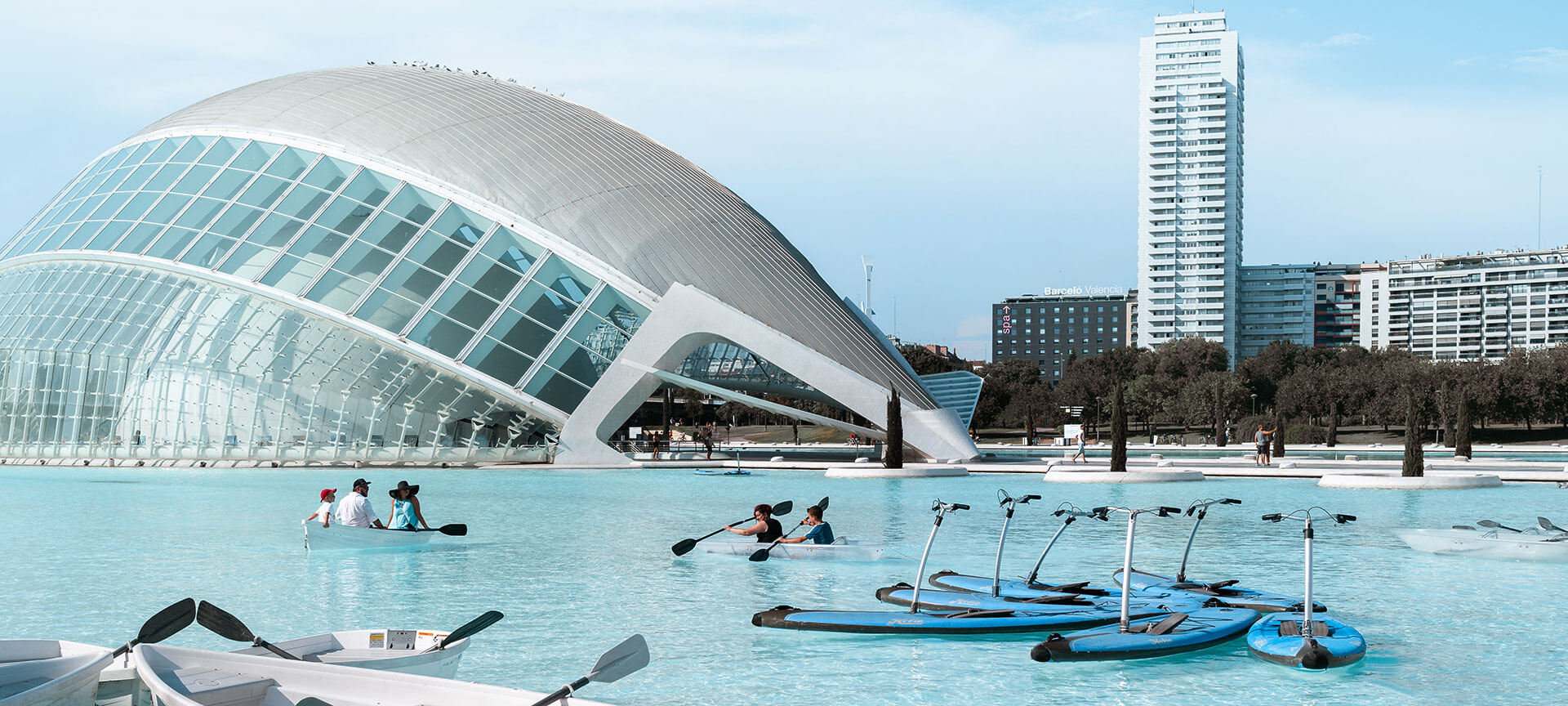
The Mediterranean as a city
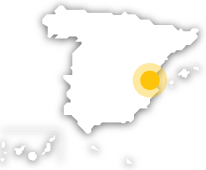
Valencia Institute of Modern Art (IVAM)

Valencia Cathedral
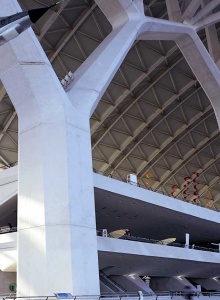
Science Museum
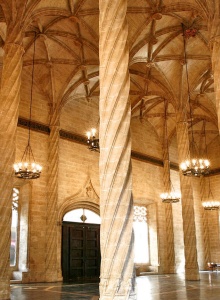
The Silk Exchange
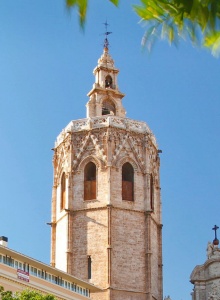
El Miguelete Tower
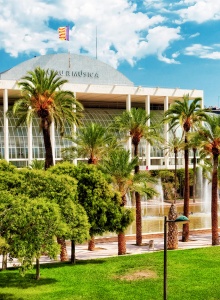
Palau de la Música auditorium
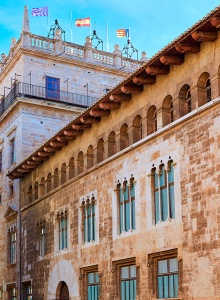
Valencia Regional Government Palace
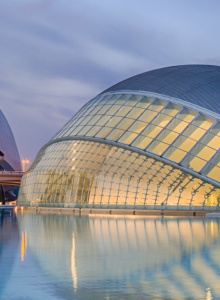
City of Arts and Sciences
Other ideas for your trip
Valencia in two days
If you just have two days to visit this city, we recommend a route taking you to some of its most famous sights.…
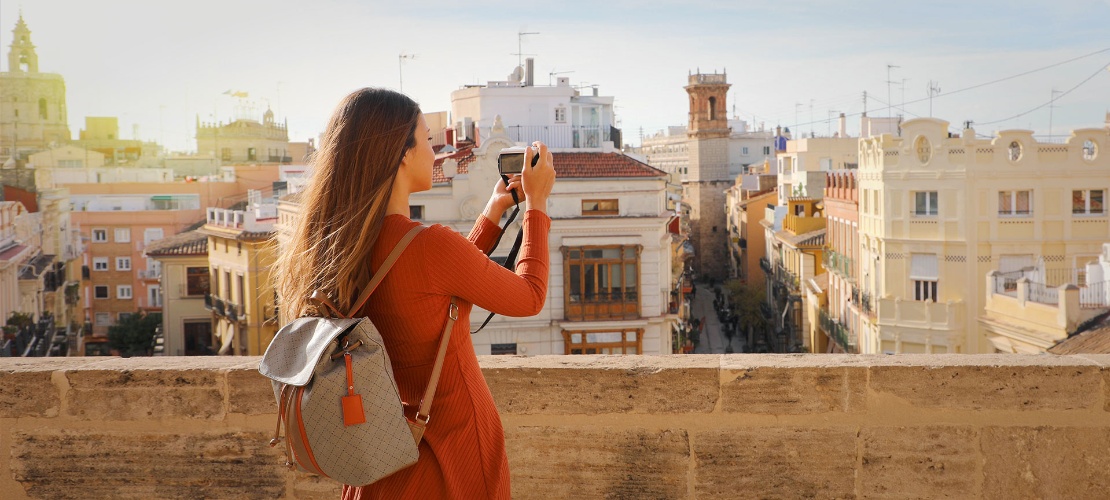
The Silk Route in Valencia
The silk route reveals the importance of silk and its trade to Valencia. The city has Europe’s largest archives relating to silk, and important collections of…
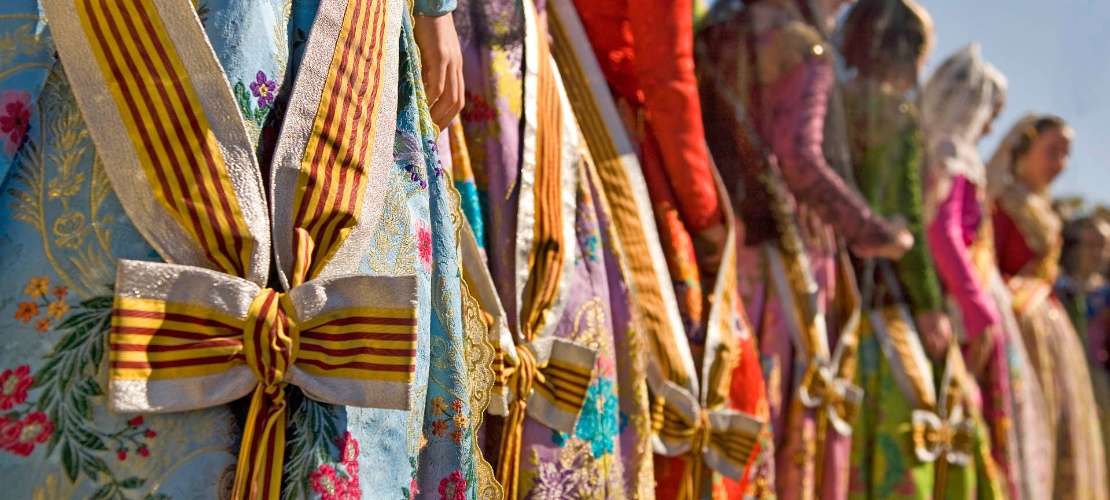
A road trip along Spain’s east coast
A road trip along Spain’s Mediterranean coast is a guarantee of sunshine, lovely beaches, and plenty of destinations with things to see and do.…
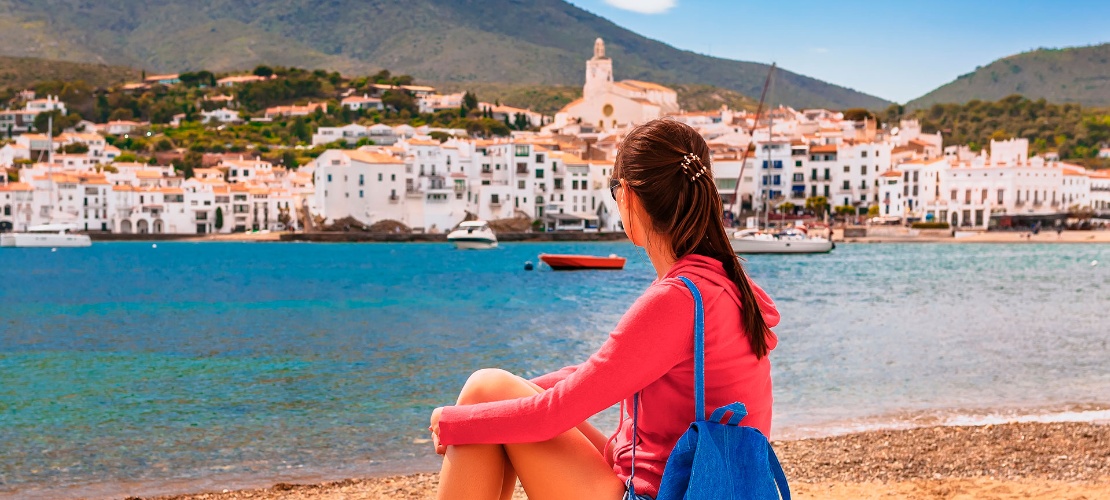
Valencia Marina, plaza of the Mediterranean
The modern seafront of the city of Valencia offers a wide array of activities next to the Mediterranean Sea.…
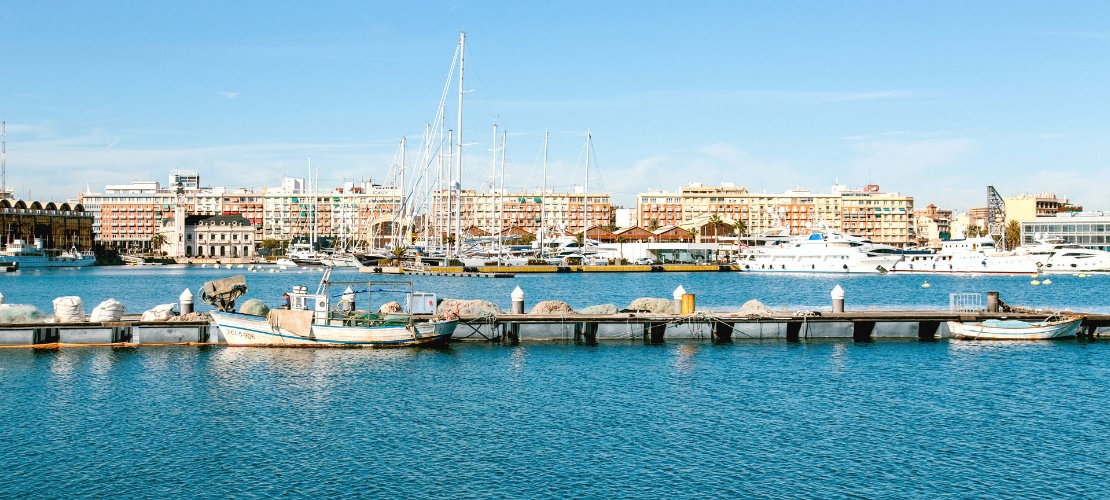
Why Valencia is so much more than a beach destination
When you visit "la terreta" (Valencia's nickname), you will be amazed by what you can do and explore in the capital of the Region of Valencia.…
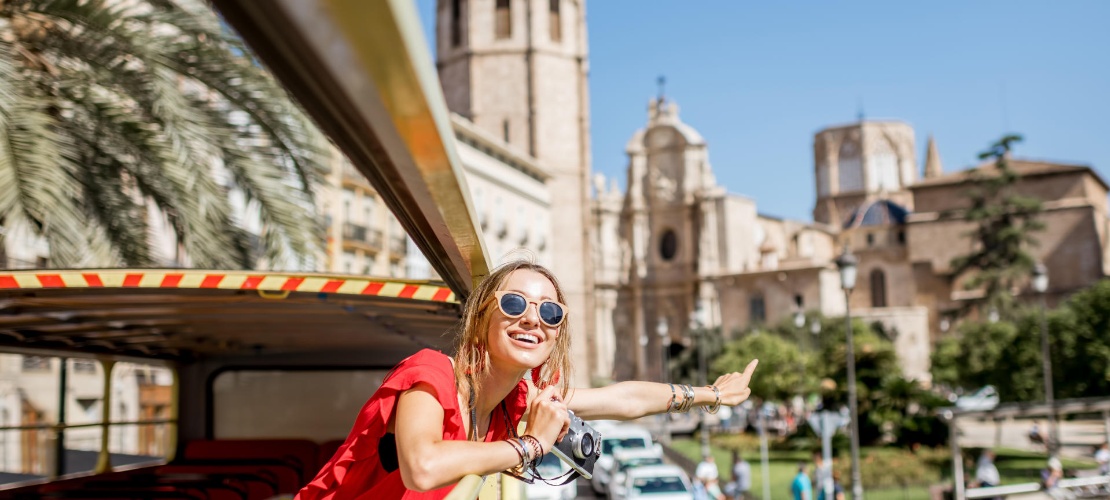
Different ways to explore Valencia
Valencia is a city worth taking time over, exploring every detail and discovering the places you might miss on a first trip.…
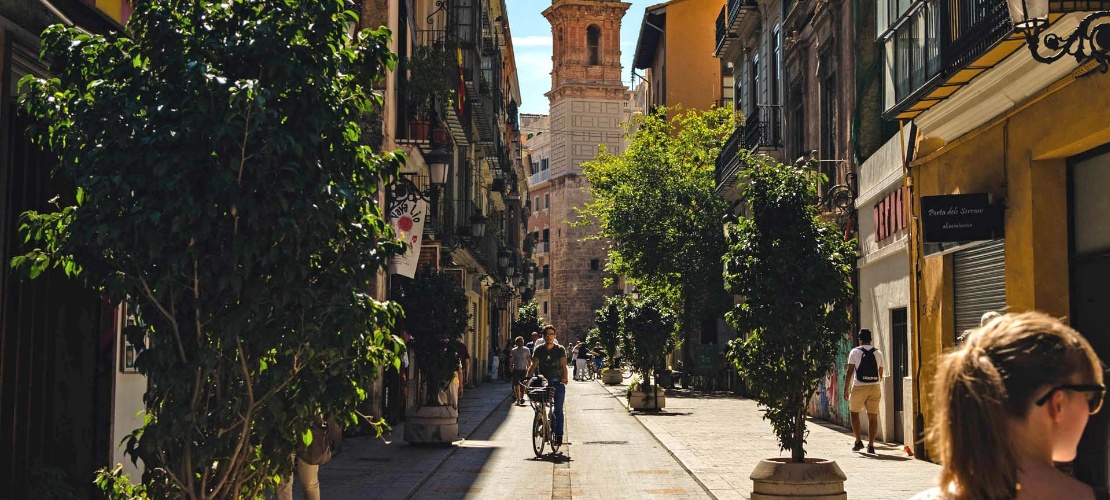
Two weeks in Valencia and the Balearic Islands
If you are thinking of spending your next holiday in Spain and have around 15 days, a great option is to combine Valencia with the Balearic Islands.…
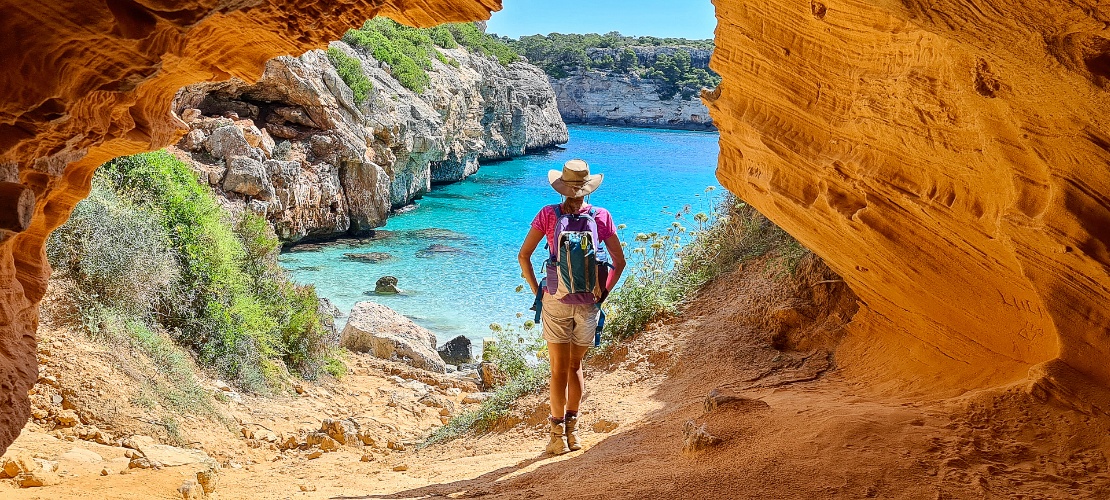
The silk route reveals the importance of silk and its trade to…
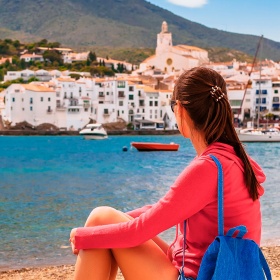
A road trip along Spain’s Mediterranean coast is a guarantee of…
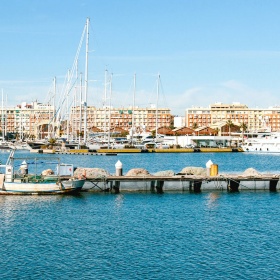
The modern seafront of the city of Valencia offers a wide array…
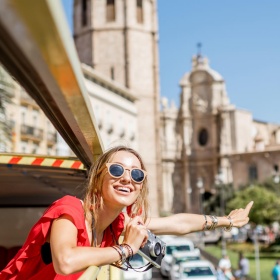
When you visit "la terreta" (Valencia's nickname), you will be…
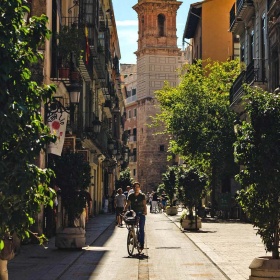
Valencia is a city worth taking time over, exploring every detail…
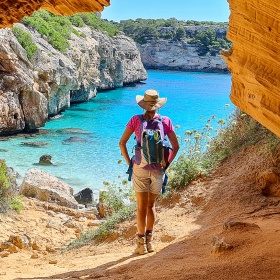
If you are thinking of spending your next holiday in Spain and…
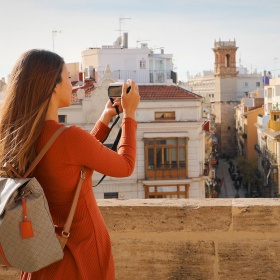
If you just have two days to visit this city, we recommend a…
How to get there - transport information
Select the means of transport to see how to get there or how to get around at your destination.
How to get to aeroplane
The airport is 8 kilometres from the city, about a 15-minute drive on the V-11 motorway.
Metro lines 3 and 5 run between the airport and the city from the metro station on the ground floor of the regional flights terminal. The journey takes around 20 minutes.
City bus 150 takes you into the city centre in about 35 minutes. The bus runs from Monday to Saturday.
More information
How to get to train
Valencia has two main railway stations:
Joaquín Sorolla Station : High-speed AVE trains to Madrid, Cuenca, Seville, and Cordoba, and long-distance Alvia or Euromed trains between Valencia and Barcelona or other cities. There is a free bus service to and from Estación del Norte for travellers arriving by train. You can easily leave the station by public transport: metro lines 1 and 5, bus line 64 and taxi services.
Estación del Norte : This station is mainly for local trains, known as the Cercanías network. You can easily leave the station by public transport: Metro lines 3 and 5, bus lines 5, 6, 7, 8, 10, 11, 14, 15, 19, 32, 35, 40, 63, 70, 71, 73 and 81, and taxi services.
Book your ticket
How to get to boat
The Port of Valencia is about 5 kilometres from the city centre.
Many cruise lines stop here, mostly on routes to and from Italy and France.
There is a free transport service between the cruise terminals and the main terminal.
There are plenty of transport options from the port: bus routes 4 (to the city centre), 95 (to the City of Arts and Sciences) and 95 (to the beach). It also connects with bus line 30.
How to get to bus
Valencia bus and coach station is in a very central location.
The following city bus routes run from the station: 1, 63, 79, 80, 90
Metro line 1 connects to the rest of the metro network.
How to get there by road
The AP-7 motorway links Valencia to Barcelona and Alicante.
The A-3 motorway runs to Madrid.
During 2023, a large part of the city centre will become a Low-Emissions Zone, where driving and parking are restricted. If you plan to visit Valencia by car or motorbike, find out about the possible restrictions before your trip through your accommodation.
Practical information
The main tourist areas can be explored on foot.
Tourist pass: Valencia Tourist Card can be used on the bus, metro and tram for 24, 48 or 72 hours, or you can choose a 7-day option without transport. Free entrance to some museums and monuments and discounts on leisure.
How to get around in metro/tram
The metro network operates from 4 a.m. to 11:30 p.m. during the week. On Fridays, Saturdays and the eve of public holidays, the hours are extended until 3 in the morning.
How to get around in bus
Over 60 routes cover every neighbourhood in the city.
They normally run from 6 a.m. to 10 p.m..
The night bus service begins at 10:00 p.m., at different intervals, on 23 lines (4, 6, 7, 8, 9, 10, 11, 12, 14, 16, 18, 19, 23, 24, 25, 26, 27, 28, 30, 31, 32, 40, 60, 62, 63, 67, 70, 71, 72, 73, 81, 92, 93, 95, 98, 99, C1, C2 and C3).
Take bus routes 24 or 25 or the Albufera Bus Turístic to get to La Albufera Natural Park.
How to get around in other means of transport
Taxi: easily identifiable white vehicles with a red stripe. A green light on the roof shows they are available.
Bicycle: an easy, unusual and sustainable way to get around the city. The city has an extensive cycle lane network. There are many bike rental companies, plus the municipal service Valenbisi.
Excursions to nearby destinations
Castellón de la Plana
The capital of the county of La Plana, situated on the Costa del Azahar, ha...
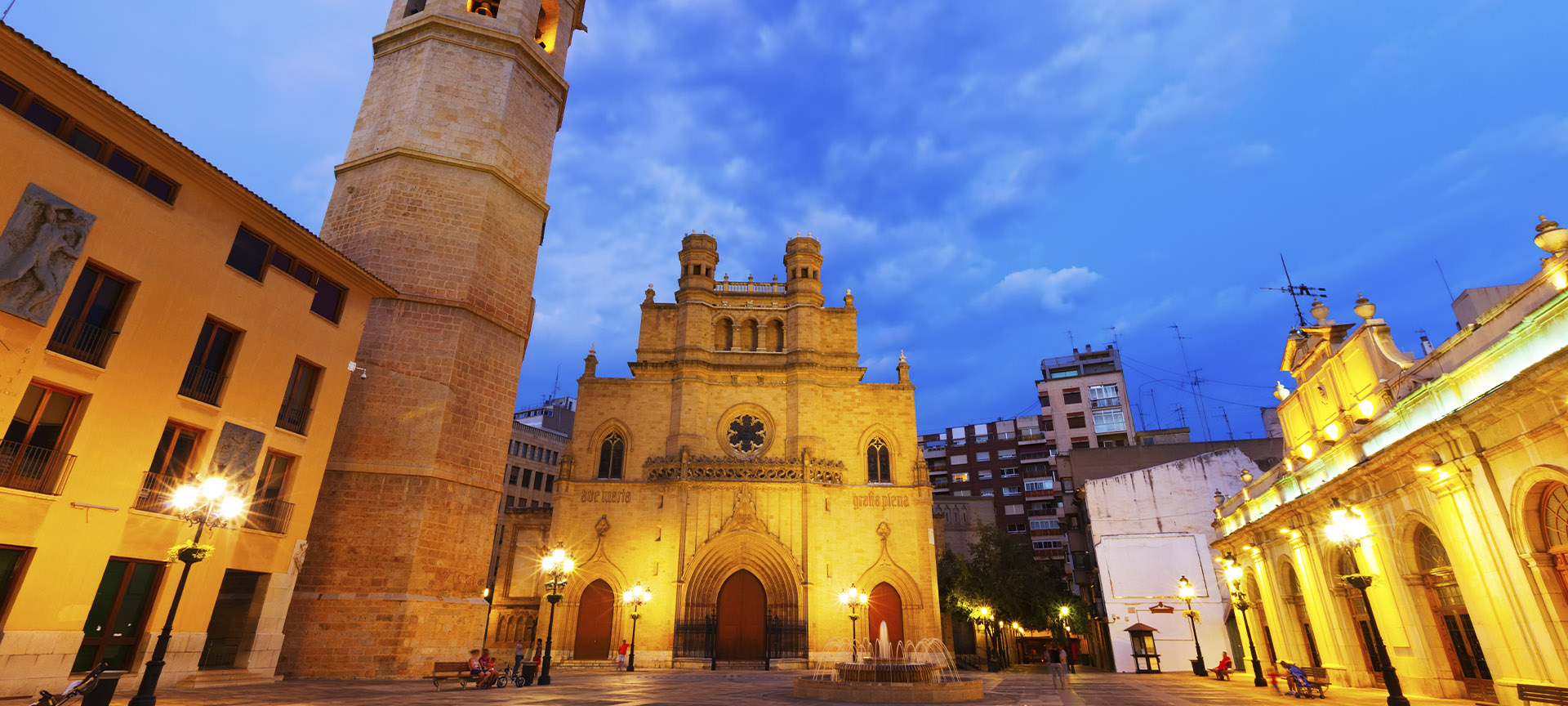
"Arse" for the Iberians, "Saguntum" for the Romans, it still preserves many...
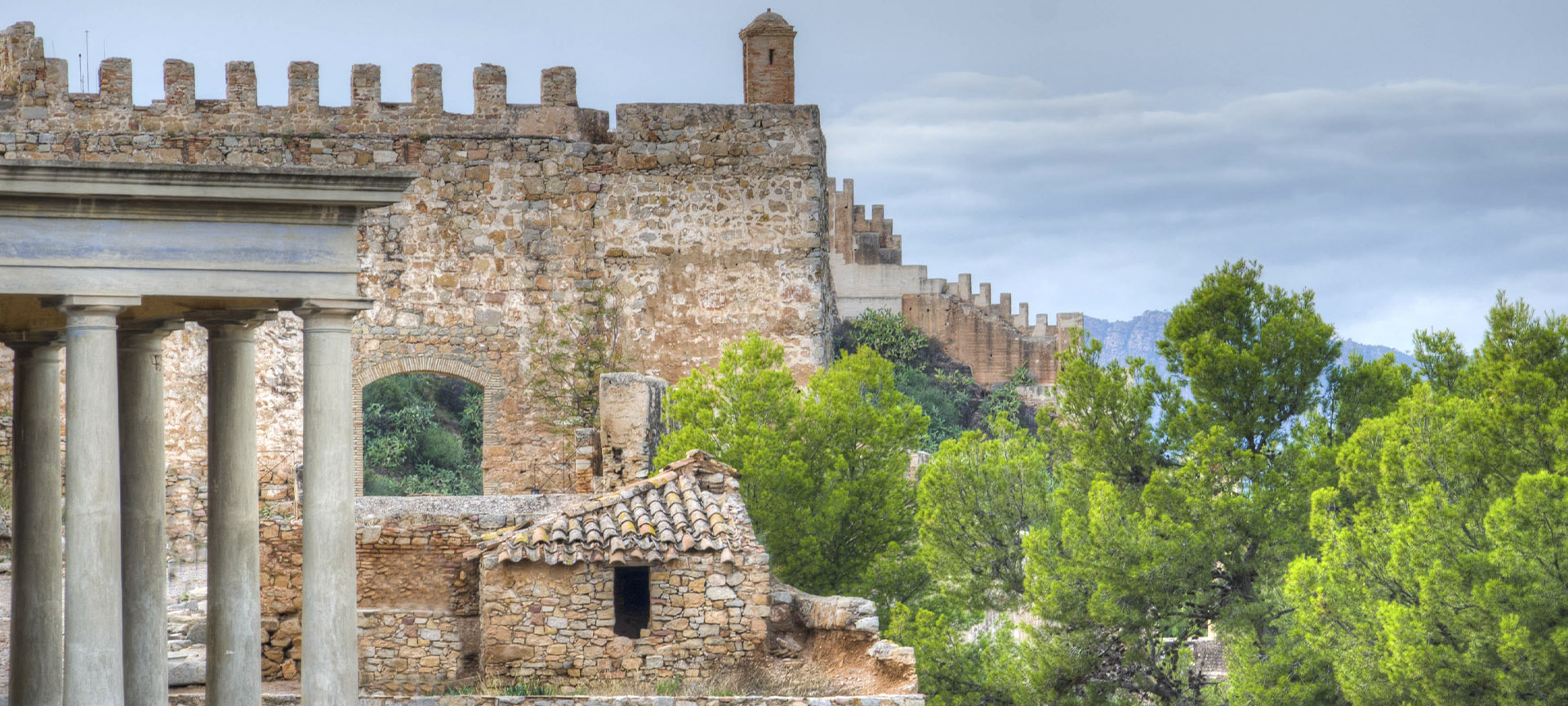
Gandía, capital of the county of La Safor, is set in unusual landscape betw...
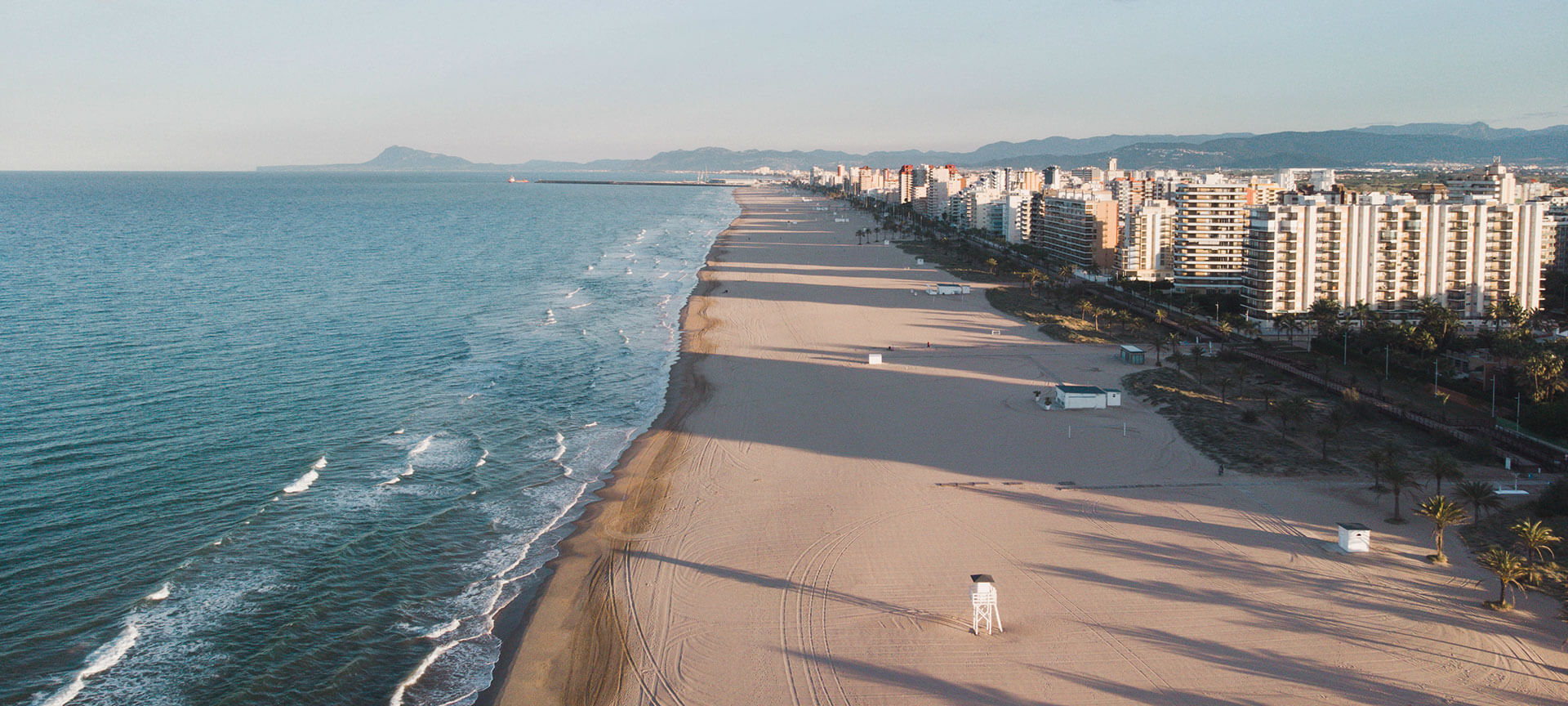
Peñíscola is one of the most popular tourist resorts in the province of Cas...
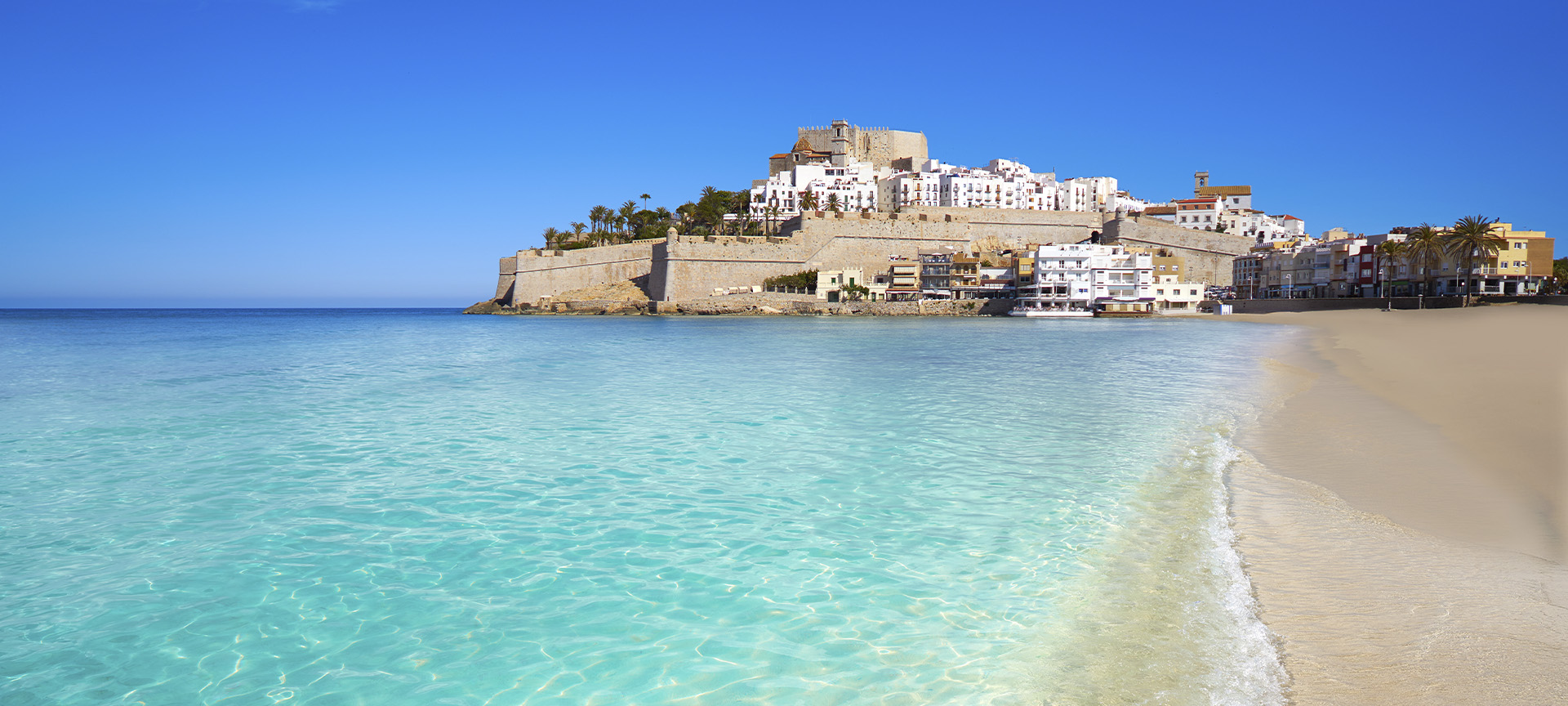
Located in the Marina Baixa region in Alicante, Benidorm is one of the top ...
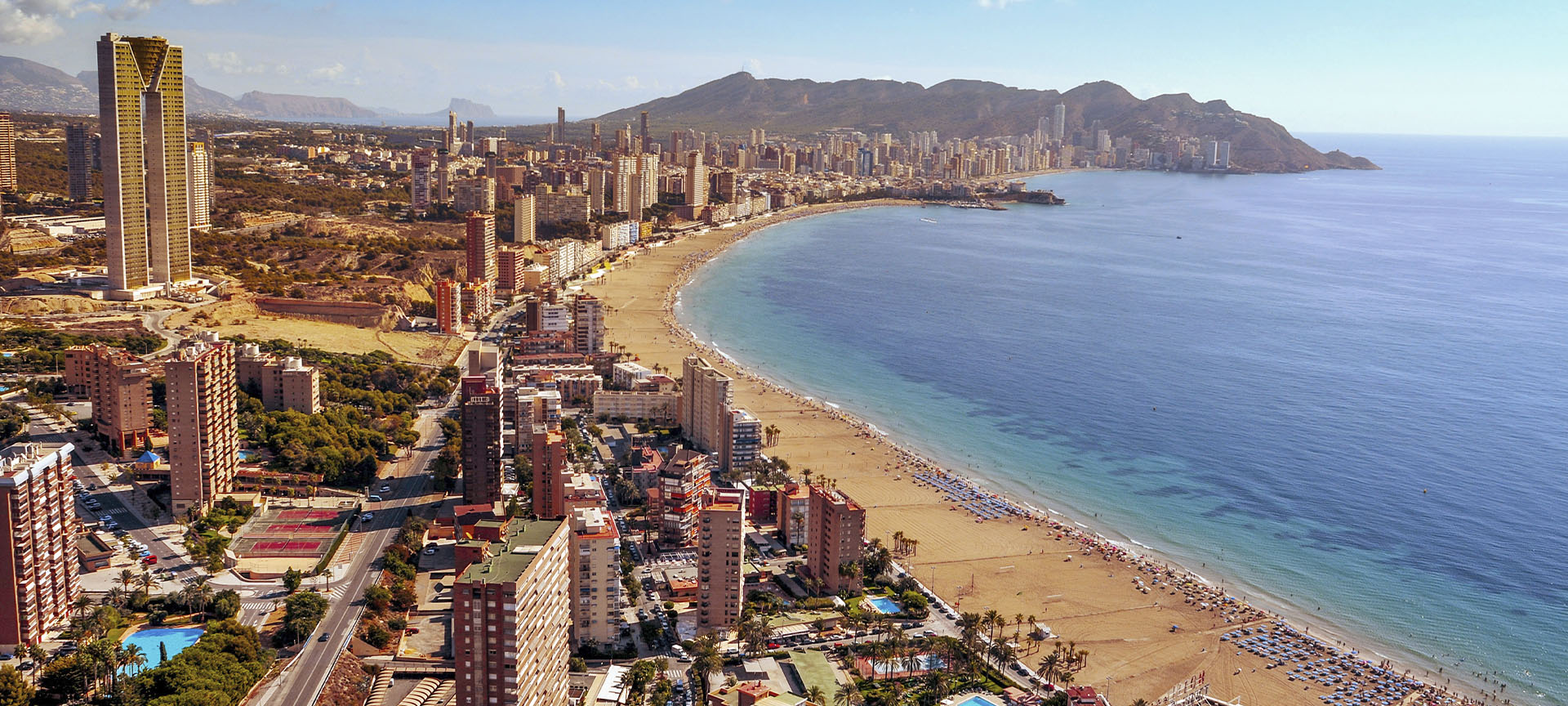
Shows, festivals, sports...
View some of the most relevant events you will be able to enjoy at the destination.
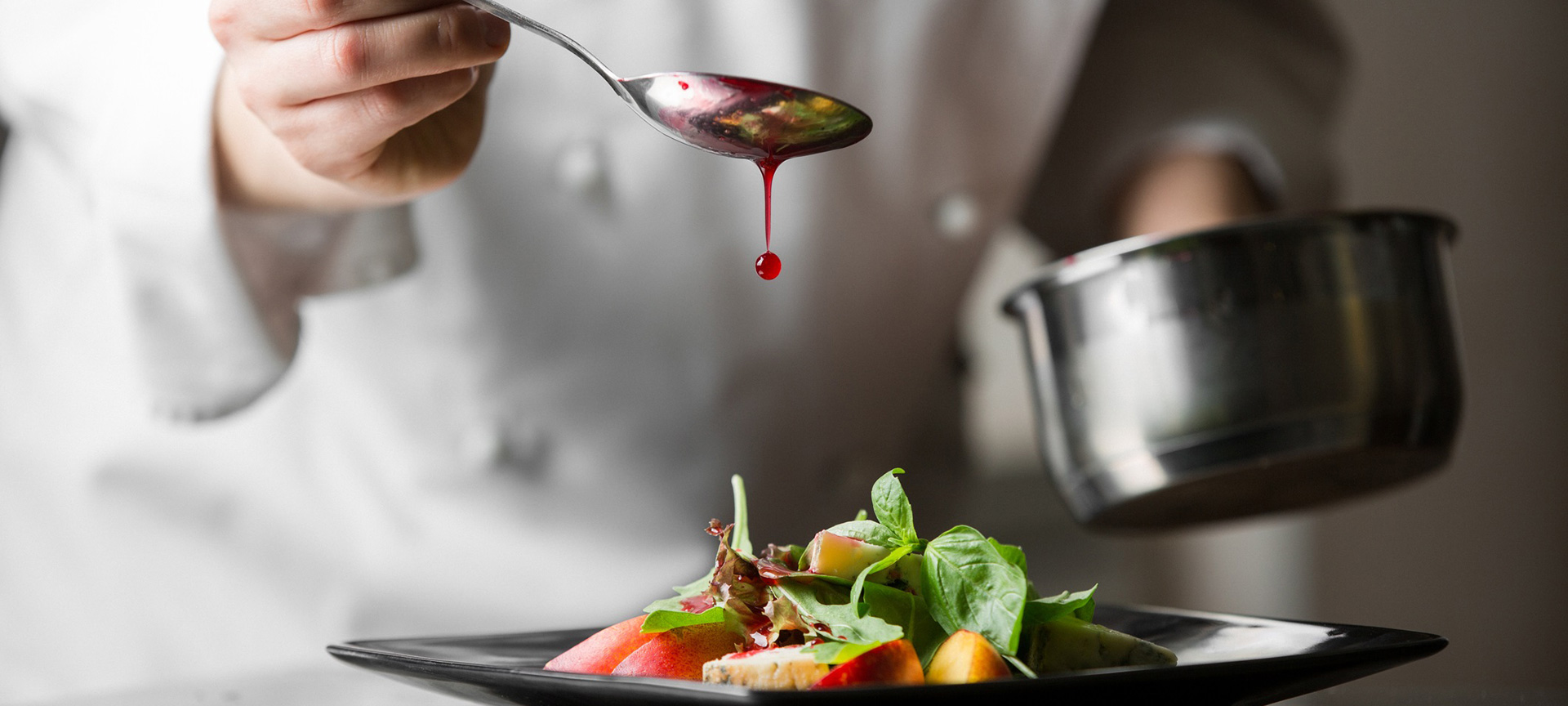
Valencia Cuina Oberta - Restaurant Week
11 April 2024 - 21 April 2024
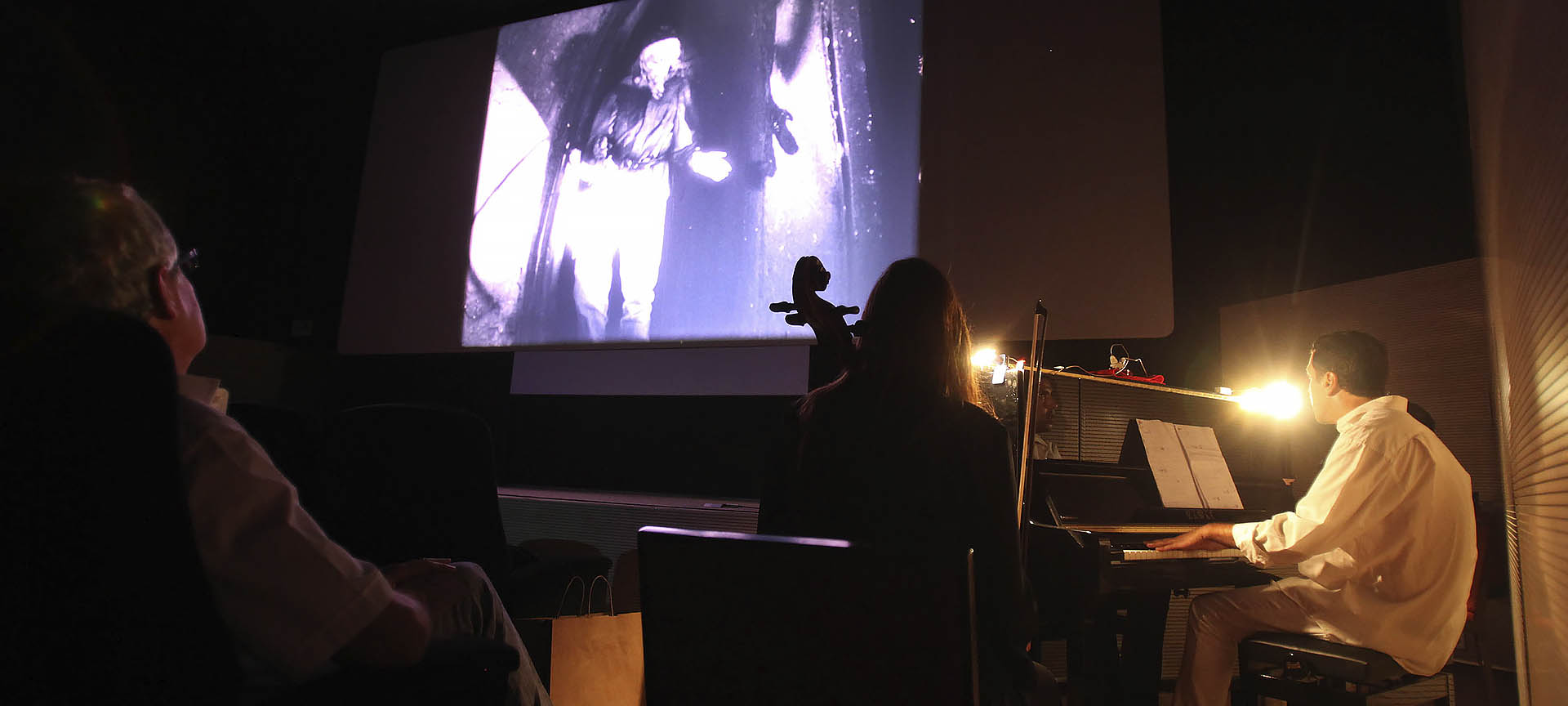
International Youth Film Festival
20 June 2024 - 29 June 2024
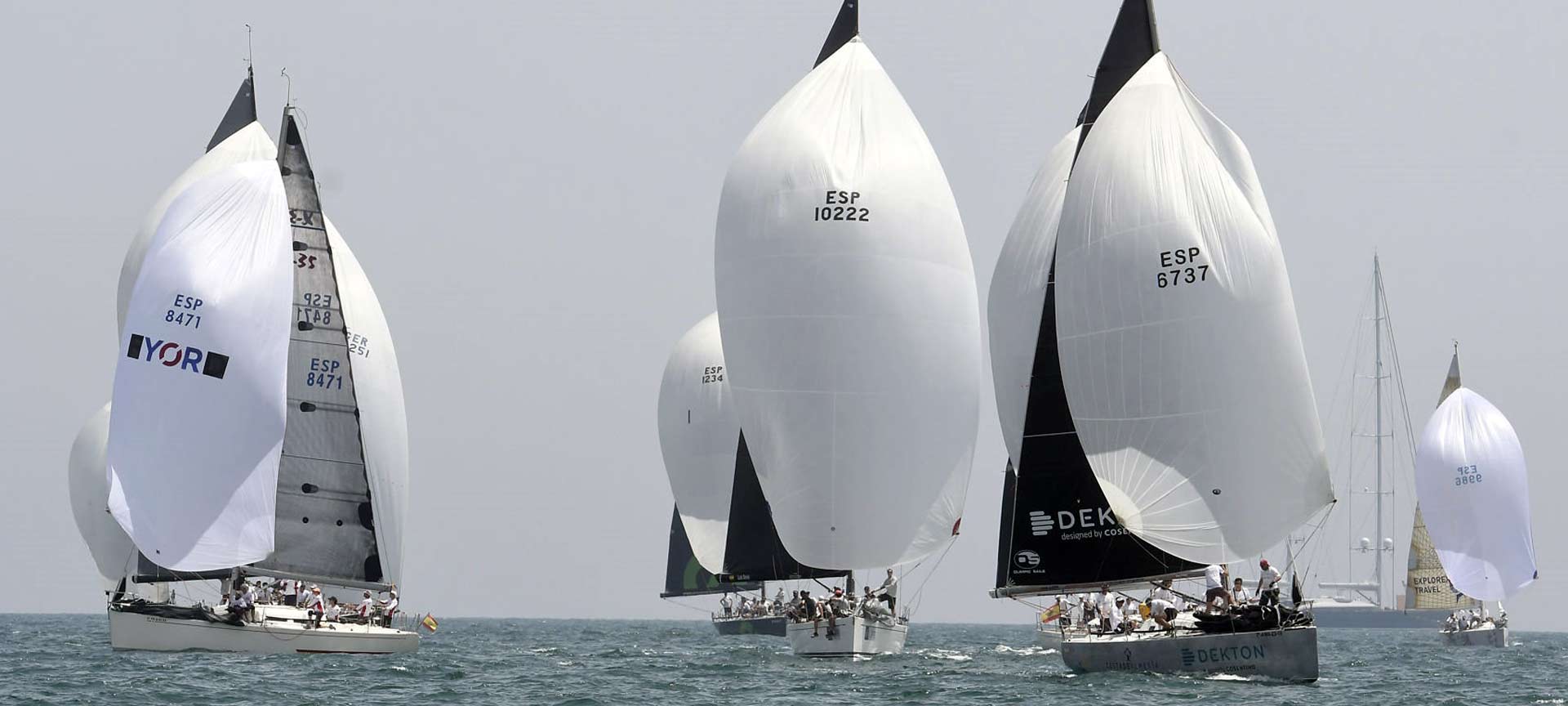
Sailing: S. M. La Reina Trophy
28 June 2024 - 07 July 2024

Choose between thousands of activities to live your best life on holiday.


12 Places to Visit in Valencia: Best Sights and Attractions
I know I’m biased, but Valencia is bursting at the seams with jaw-dropping sights and attractions. Not only that, but it’s really easy to see most of them on a short 3 days trip .
This is one of the many reasons I love Valencia – everything is close together and oftentimes, you can walk from one landmark to another in a matter of minutes.
Although I’m living in Valencia , I enjoy going to museums and visiting the occasional tourist attraction on laidback Sunday mornings. But many of Valencia’s must-see spots are actually beloved local hangouts with a distinct, authentic flair.
From tasty markets and orange tree lined plazas to awe-inspiring architecture and miles-long beaches, these are, in my opinion, the best places to visit in Valencia on a short trip.
In This Article
1. The City of Arts and Sciences
2. the oceanographic, 3. the silk exchange (la lonja de la seda), 4. the cathedral, 5. serranos and quart towers, 6. the central market (mercado central), 7. marquez de dos aguas palace, 8. san nicolás church, 9. túria park, 10. bioparc, 11. the botanical garden, 12. mercado de colón.
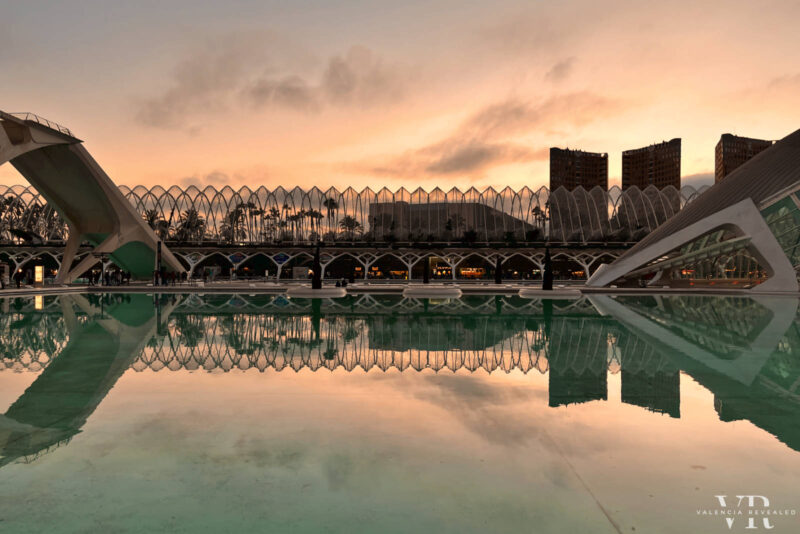
The City of Arts and Sciences is arguably the most important tourist attraction in Valencia. I don’t know a single soul who wouldn’t agree that this architectural masterpiece designed by Santiago Calatrava is a sight to behold.
A few years ago, a friend of mine who was an architecture student at the time, came to Valencia just to see these mesmerizing buildings. Yes, they study them in universities around the world! So you certainly don’t want to miss this futuristic landmark when in Valencia.
The City of Arts and Sciences consists of six incredible buildings, each with its unique design and purpose. One of them is a stunning opera house, another is a family-friendly science museum, and so on.
I often come here to catch the sunset, but I think it’s fascinating how this city within a city can be whatever you want it to be.
If you’re visiting Valencia with kids , this is a wonderful place to spend some quality time together as a family. If you are on a romantic getaway, it can be the perfect place to walk hand in hand among the blue pools of water. Traveling solo? You’ll never feel lonely here!
The City of Arts and Sciences is free to wander around but if you want to go inside the buildings to see any of the shows or exhibits, you’ll need to purchase a ticket.
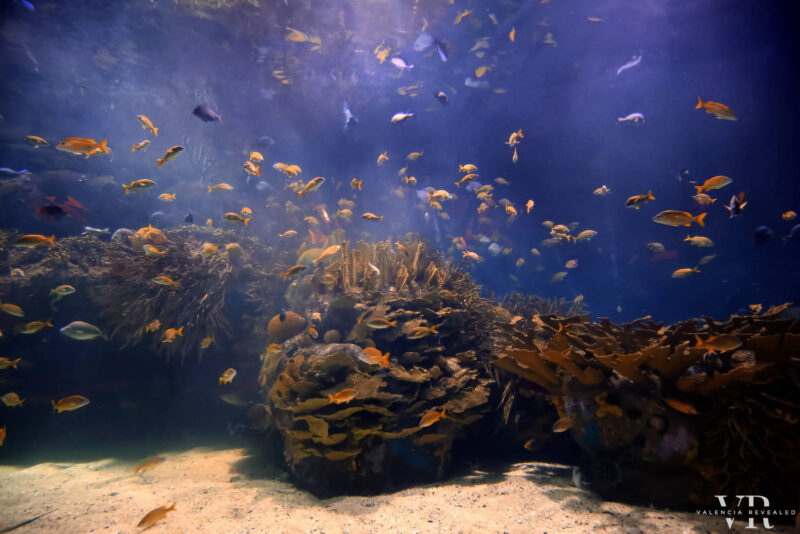
Valencia’s Oceanogràfic is an impressive aquarium and marine park that’s part of the City of Arts and Sciences complex. Families especially love it here because there are tons of fun activities to keep everyone entertained.
The exhibits at the Oceanogràfic are varied and include a diverse range of marine life. From jellyfish to penguins and sea lions, here you can learn all about the fascinating creatures that inhabit our oceans.
My favorite attraction inside the Oceanogràfic is the underwater tunnels. These sleek tunnels offer an immersive experience as you walk through while surrounded by sharks and other sea creatures.
The Oceanogràfic also hosts two thrilling dolphin shows per day and is home to the only family of beluga whales in Europe. And if you’re looking for a unique adventure you can even spend the night sleeping with the sharks!
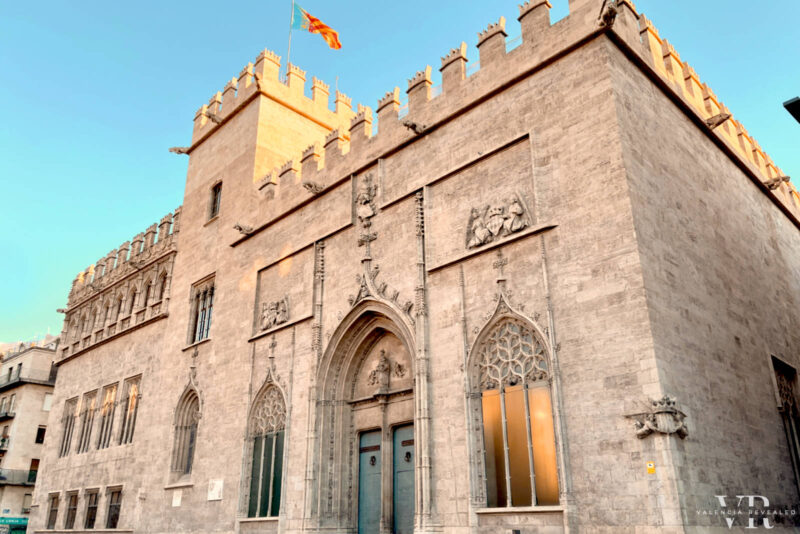
Valencia’s Silk Exchange, is a magnificent Gothic building located in the Old Town. Built towards the end of the 15th century, during the Valencian Golden Age, La Lonja was a stunning marketplace meant to leave anyone in awe.
To fully understand the importance and economic power of Valencia at the time, it’s key to note that Christopher Columbus’ voyage was founded by a Valencian banker. Incidentally, La Lonja was put into use the same year Columbus reached the Americas – 1492.
During its glory days, merchants from all over Europe would come to trade and do business here. While commerce was not limited to silk as its name suggests, given the importance of Valencia’s silk industry at the time, the silk trade likely counted for the great part of the transactions.
Today, La Lonja de la Seda is a UNESCO World Heritage Site. While the lack of furniture might put you off, the truth is that the intricate architecture and historical significance of this building make it a must-see attraction.
There are so many fascinating details about this building, that I could go on and on! For example, the main hall is a masterpiece of Gothic architecture, with twisted columns that resemble silk skeins and palm trees. This hall was used for trade agreements and also served as the location for one of the first public banks in Europe, which consisted of just one table!
Additionally, La Lonja has a tower that used to be a prison. This tower is accessed via a mind-blowing spiral staircase made entirely out of stone. What’s special about that, you might ask? It has no central axis! Pay attention to that when you visit!
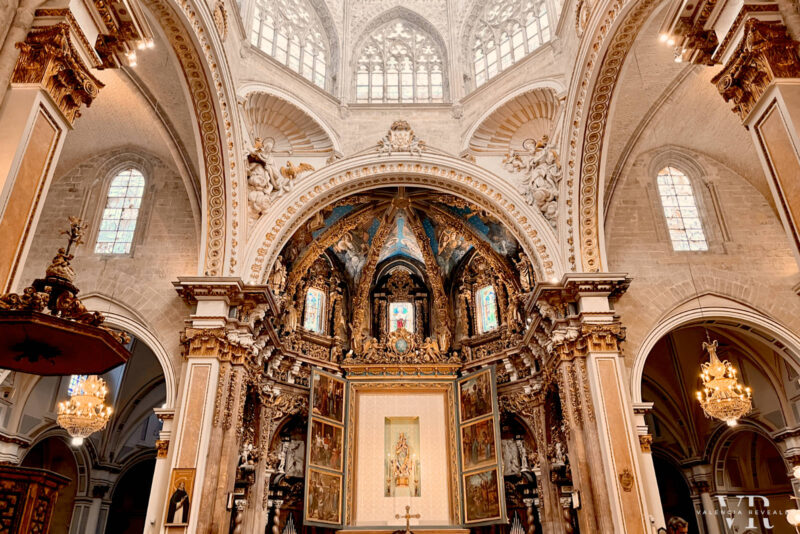
Valencia’s Cathedral, also known as the Saint Mary’s Cathedral, is a magnificent structure built on the site of an ancient mosque in the 13th century. What’s interesting is that the mosque itself had also been built over a prior Visigoth cathedral.
The main architectural style of this cathedral is Valencian Gothic, with some Romanesque, Baroque, and Neoclassical elements mixed in. While it might not be the prettiest of the cathedrals, it does have several interesting things going for it.
One of the most notable features of this cathedral is that each of the three gates was built in a completely different architectural style. So I encourage you to walk around it to see it from all angles.
Then there’s the Miguelete Bell Tower, with an interesting octagonal shape and a spiral staircase. With a total of 207 narrow steps, climbing up might not be super fun, but once you reach the top, you are rewarded with breathtaking panoramic views of the city and the bustling Plaza de la Reina and Plaza de la Virgen nearby.
Another fascinating aspect of Valencia’s Cathedral is that it is believed to host the Holy Grail , the cup that Jesus used at the Last Supper. This priceless artefact is displayed in one of the chapels, and it certainly is a peculiar attraction.
Besides, the cathedrals host 15th-century paintings and holy relics including the bones of several saints which you can see in a chapel behind the altar.
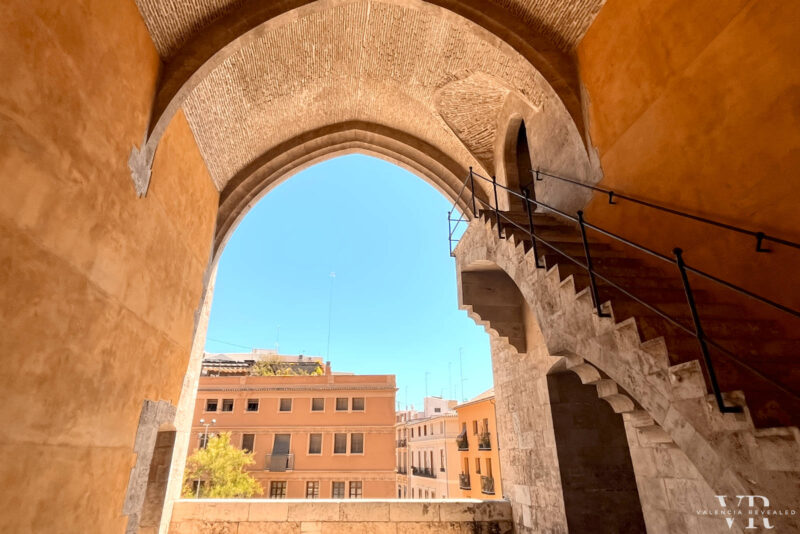
Valencia had three different walls throughout its 2000-year history – a Roman one, a Muslim one, and a Christian one. You can still find bits and pieces of these walls scattered around the Old Town, but the most notable remains are Torres de Serranos and Torres de Quart.
These iconic landmarks were built during Medieval times as part of the Christian wall, a 4 km defensive wall with 13 gates that surrounded the area that is now called the Old Town. The Medieval wall protected Valencia from the 14th century until the 19th century, before it was taken down as the city outgrew it.
The Torres de Serranos were built at the end of the 14th century and served as one of the main city gates during the Middle Ages. They were built in Gothic style and have been used for many things, including as a prison for nobles and knights and a depository for artworks from El Prado during the Spanish Civil War.
The Torres de Quart, on the other hand, was built in the mid-15th century. This tower was also used as a prison at some point, but they also took one for the team. The holes in them might be easily dismissed as simple signs of wear and tear, however, what not many people know is that they’re traces of cannon shots from the Peninsular War.
Today, both towers are important tourist attractions and I highly recommend you climb them for stunning views over Valencia’s rooftops. Trust me, it’s so worth it!
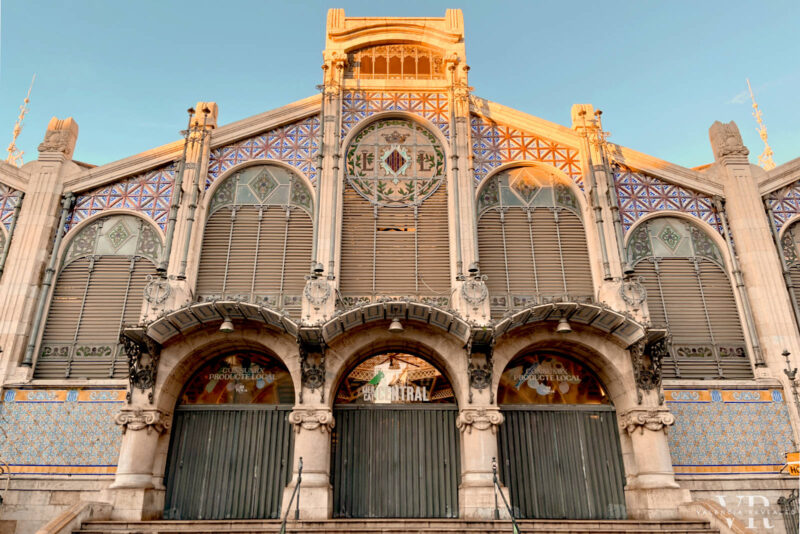
The Central Market is another must-visit attraction in Valencia. This iconic covered market was built in the early 20th century, although a market had been organized in this very spot for hundreds of years prior.
The building itself is a stunning example of Modernista architecture, with colorful tiles, a domed roof, and ornate ironwork.
Step inside, and you’ll find yourself in a bustling world of vendors selling fresh fruits, vegetables, seafood, meat, spices, and all sorts of local delicacies.
The market is a true feast for the senses, with an endless array of colors, scents, and flavors. I always find something new and delicious to sample whenever I go, be it olives, cheese, or even a new and exciting local craft beer.
Today, the market continues to be a popular spot for locals to shop for fresh ingredients, but it’s also a major tourist attraction.
Whether you’re a foodie looking for a unique culinary experience or just curious about the local food culture, the Mercado Central is a must-see place in Valencia.
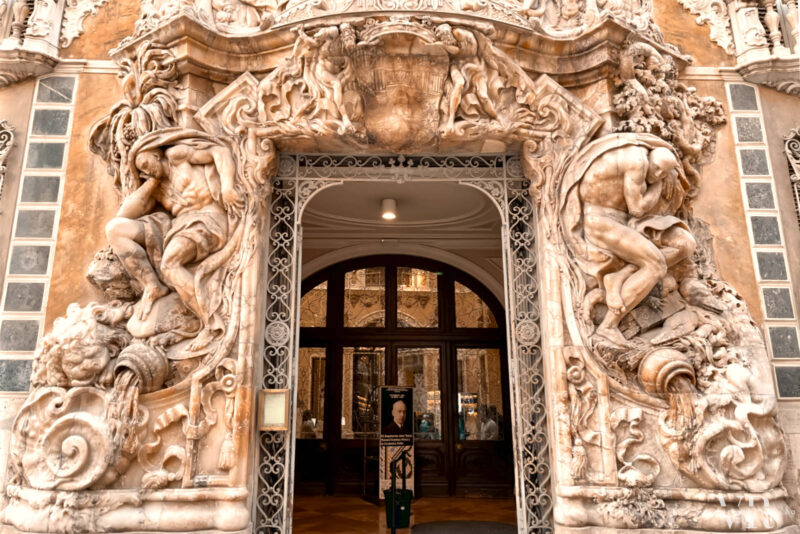
The magnificent Marquez de Dos Aguas Palace is an iconic building and a shining example of Rococo architecture that will transport you back to the 18th century.
Nowadays, the palace houses the National Museum of Ceramics and Sumptuary Arts, where you can admire hundreds of pieces of pottery, porcelain, and ceramics as well as gorgeous pieces of furniture spanning many, many centuries.
I know it might sound a bit boring, but I can assure you it’s not. This palace is one of the most beautiful places in Valencia, both inside and out.
On the ground floor, you can see two carriages fit for a queen. The second floor features lavishly decorated rooms that will take your breath away. And the last floor offers a fantastic opportunity to discover the history and art of ceramics and its importance in the local culture.
Don’t skip the last floor! This is the most important ceramics museum in Spain and some of the objects here are more than two thousand years old. Still not convinced? Maybe knowing that there are several unique pieces created by Pablo Picasso will?!
From the grand staircase to the magnificent ballroom, every room is decorated with impeccable taste. If you’re looking for a dose of history, art, and beauty, the Marquez de Dos Aguas Palace is the place to be.
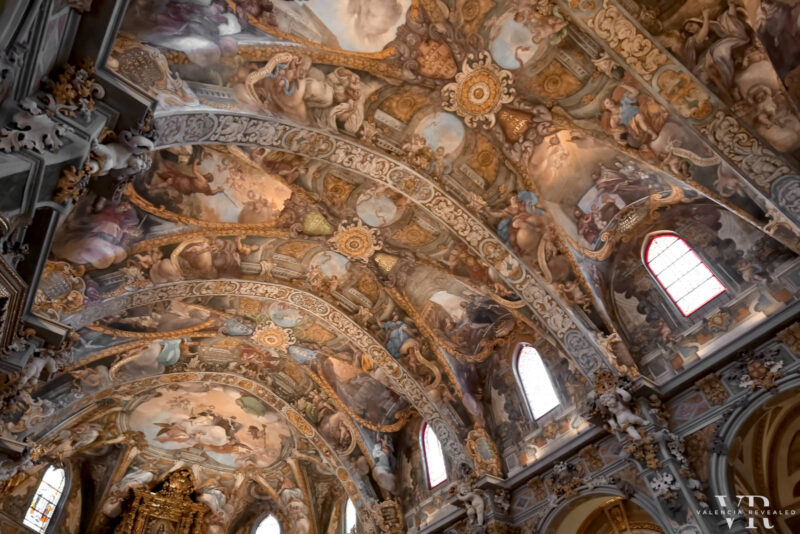
San Nicolás Church is one of the most beautiful places to see in Valencia. Located in the Old Town, not far from the cathedral, this 15th-century church hosts some of the most spectacular Baroque interiors.
As is the case with many churches in Valencia , Iglesia de San Nicolás too was built over a former Arab mosque. The mosque in turn had been built over a Visigoth temple, which had been built on top of a Roman temple.
The stunning frescoes dating back to the 17th century cover every inch of the ceiling and have gained this church the nickname of the Valencian Sistine Chapel.
In recent years, the San Nicolás Church underwent a thorough restoration project. The result is breathtaking, so don’t hesitate to put it on your list of places to visit in Valencia.
Access to the church is through Calle Caballeros, although it’s very easy to miss. Look for the signs, not for the church, as the church it’s situated at the end of a nondescript alley and cannot be seen from the street.
The church organized both touristic visits and daily masses. Touristic visits are not permitted during the mass.
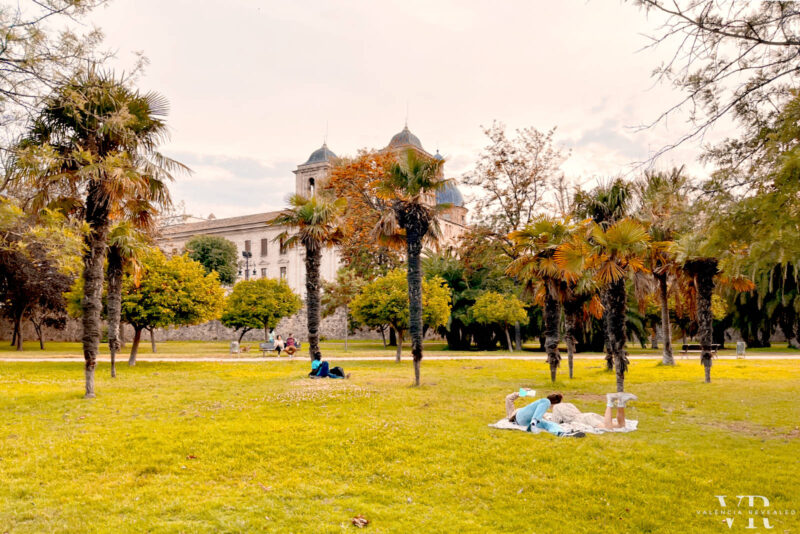
Túria Park traces its roots back to the devastating flood of 1957 when the Túria River overflowed its banks, causing significant damage.
After much debate, it was decided to divert the river to the outskirts of the city and transform the dry riverbed into a lush green space, giving birth to what is now Túria Park.
Organized with meticulous precision, the park stretches over 9 kilometers, making it the most extensive public garden in Spain.
Túria Park hosts numerous sports facilities, playgrounds, and picnic areas, providing ample opportunities for recreation and relaxation. It also has dedicated cycling lanes spanning from end to end, making it one of the best places for biking in Valencia .
Along the way, you’ll stumble upon the iconic Gulliver Park, an enormous sculpture of the legendary character from Gulliver’s Travels, which serves as an interactive playground for children.
The park also houses the stunning Palau de la Música, an enchanting concert hall known for its extraordinary acoustics.

Bioparc is a zoo safari aiming to provide an alternative to traditional zoos by closely recreating the animals’ natural habitats.
The park is divided into four areas – African savanna, African wetlands, Madagascar, and the forests of equatorial Africa – and is a great place to visit no matter your age.
One of the best places to visit in Valencia, Bioparc is constantly ranked as one of the best zoos in the world. Unlike traditional zoos, the enclosures are spacious and carefully landscaped, allowing the animals to roam freely and engage in their natural behaviors.
A peculiarity of this attraction is that the barriers between the different animal species are virtually invisible. Instead, lush vegetation, cascading waterfalls, and realistic rock formations create an immersive experience.
As you wander around, you can admire an impressive array of animal species from majestic lions and graceful giraffes to playful lemurs and tropical birds.
One of Bioparc’s main attractions is the spectacular bird shows they organize daily, which I highly recommend. I also encourage you to spend some time observing the gorillas – they always make me reflect upon the close kinship between animals and humans.
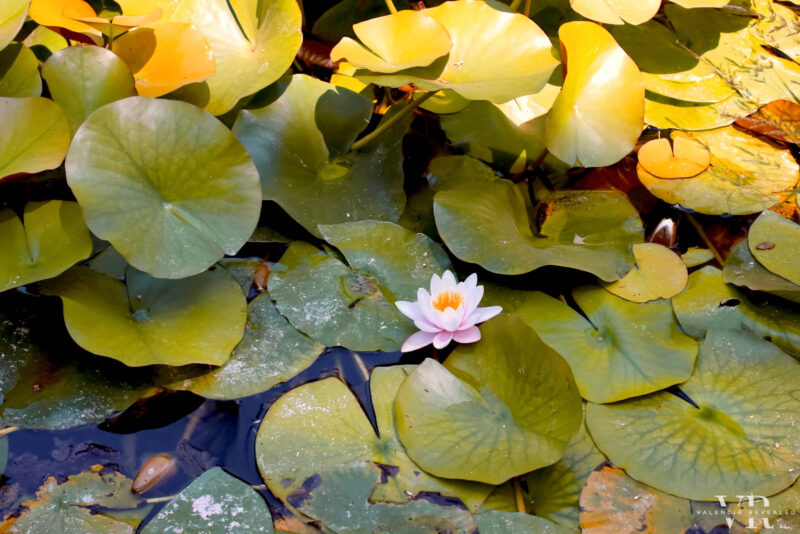
The Botanical Garden is one of the most relaxing places you can visit in Valencia. Located close to the El Carmen neighborhood and Torres de Quart, this captivating oasis hosts more than 4,000 species of plants from all corners of the world.
Plants are organized in 20 meticulously curated collections, including an impressive array of trees ranging from Illinois walnuts and American oaks to various palm tree species.
There’s also an interesting rock garden adorned with Mediterranean plants, beautiful cacti, and aloes; a serene waterlily pond; a garden dedicated to medicinal plants, and a flourishing kitchen garden.
Additionally, there are several stunning wrought iron and brickwork greenhouses housing delicate orchids, carnivorous plants, and tropical species.
Yet, my favorite thing about this beautiful Valencia attraction is that it’s home to a colony of adorable kitty cats. In summer, you’ll spot them sleeping in the shade, but in winter, these friendly felines get all cuddly and will likely come to you and try to sit in your lap.
Valencia’s Botanical Garden was founded in 1567 for the study of medicinal plants and moved to its current location in 1802. These days it is managed by the University of Valencia, and it serves as an educational hub, hosting workshops, as well as art and photography exhibitions.
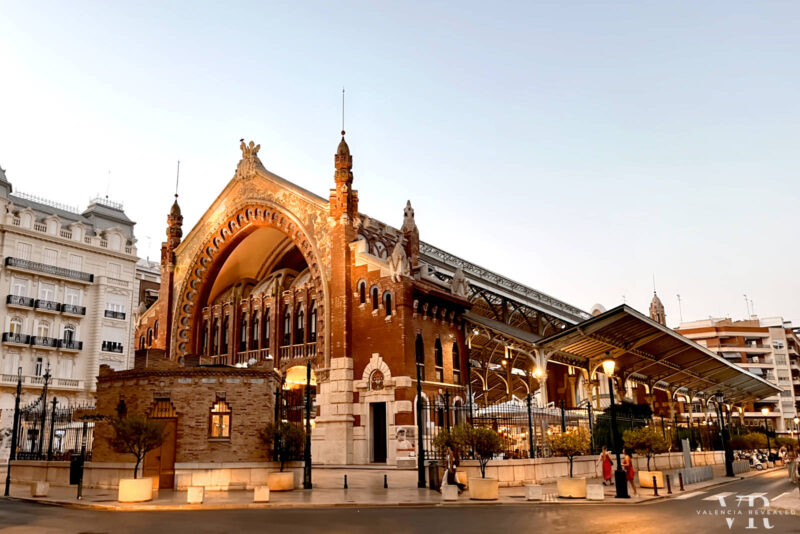
Mercado de Colón is another grand market you must see in Valencia. Inaugurated in 1916, it served as a fresh produce market until the end of the century when it fell into despair. After a complete makeover in 2003, it now houses an array of trendy cafés and gourmet restaurants.
This stunning landmark is located in the affluent Pla del Remei neighborhood, a short walk from Calle Colón, the city’s main shopping street. So if you need a pick-me-up while doing your shopping in Valencia , you won’t find a more elegant place to enjoy a typical Valencian drink .
My go-to place is Horchatería Daniel because they have some of the best horchata in Valencia . You can also elevate your experience with a meal at Bar X or Habitat, both restaurants owned by Michelin-starred Valencian chef, Ricard Camarena.
Mercado de Colón was designed in Modernista style by local architect Francisco Mora. It features a large nave with a majestic wrought iron ceiling supported by 18 m high columns. The two red brick facades are decorated with mosaics illustrating everyday life scenes from Valencia.
The market has two levels. At the lower one, you can still find a few stalls selling fresh fruits, vegetables, seafood, and meat, a reminder of the market’s original purpose.
Craft markets and cultural events are organized here throughout the year, including one of Valencia’s most festive Christmas markets . You’ll also find a cute flower shop by one of the entrances.

One Comment
Thank you!! It is a well detailed explanation of the landmarks to visit.
Leave a Comment Cancel reply
Comments are publicly visible. Kindly refrain from sharing any personal or private information.

Touropia Travel Experts
Discover the World
27 Top Attractions & Things to do in Valencia
Valencia, Spain’s third largest city, sits on the East coast of the Iberian Peninsula along the Mediterranean. While the larger Spanish cities have a distinctly urban, high-energy feel, this port city has a more laid-back atmosphere and a commitment to celebrating its natural sights. Old meets new here, as you can find remnants of a 100BC Roman colony and ultra-modern architecture.
Every March, Valencia hosts the Fallas Festival where each neighborhood displays papier-mâché figures of all sizes and colors for a whole week. At the end of the week, the “fallas” are ceremoniously burned, and the communities party into the night.
However, March isn’t the only time to party in Valencia. Every night, the city vibrates with lively bars and nightclubs in every neighborhood. Additionally, it is home of the famed Spanish paella, intricate ceramics and several world-renowned music schools.
With so many things to do in Valencia it can be difficult to decide where to start. For this reason, we have put together this list of the city’s main tourist attractions.
27. Torres de Serranos
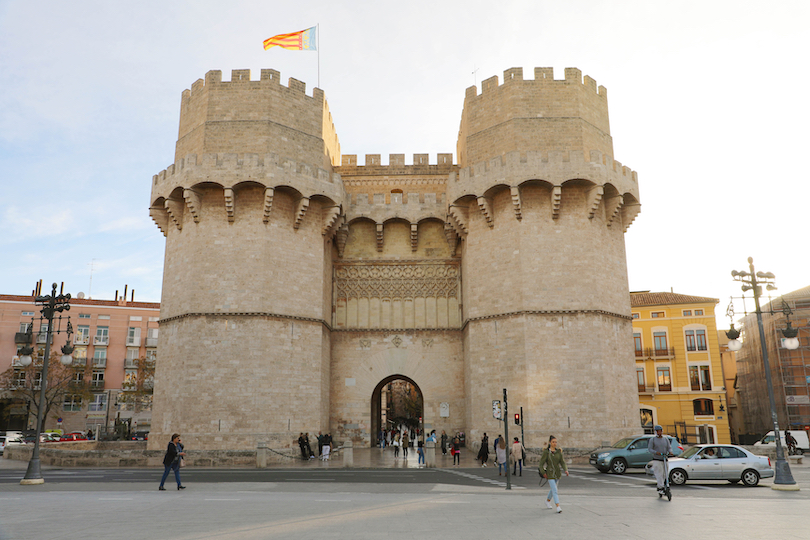
On any visit to Valencia, you cannot miss the iconic Torres de Serranos.
Built towards the end of the 14th century in the Valencian Gothic style, it is one of twelve gates that formed part of the city’s ancient Christian Wall.
When you first see the towers at ground level, you’ll be struck by their imposing size and beauty. However, they are best appreciated from the top, which you can access by climbing up the narrow winding stairs, that leads you to it.
From there, you will be presented with a breathtaking view of Valencia’s old town and surrounding areas. You can also see some of the city’s other historic landmarks, including the Cathedral and Mercado Central. (More about them later!)
26. Instituto Valencia d’Arte Modern
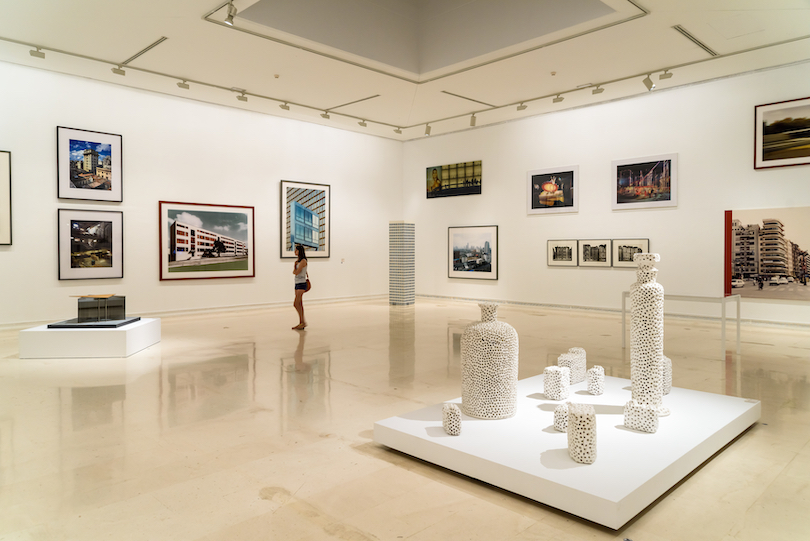
If you love art, you’ll want to visit The Institut Valencià d’Art Modern. Better known by its acronym IVAM, it was Spain’s first modern art center when it opened in 1989.
Housing an impressive collection of modern and contemporary art from Spain and around the world, what we love most about this gallery is the range of exhibitions it presents. Not only are their works by famous artists such as Julio González and Joan Miró but there are also pieces from up-and-coming creators. This means there is always something new and exciting to see.
In addition to the exhibits, the gallery also runs workshops and events that provide a deeper insight into the artistic process and the present state of contemporary art.
25. La Estrecha
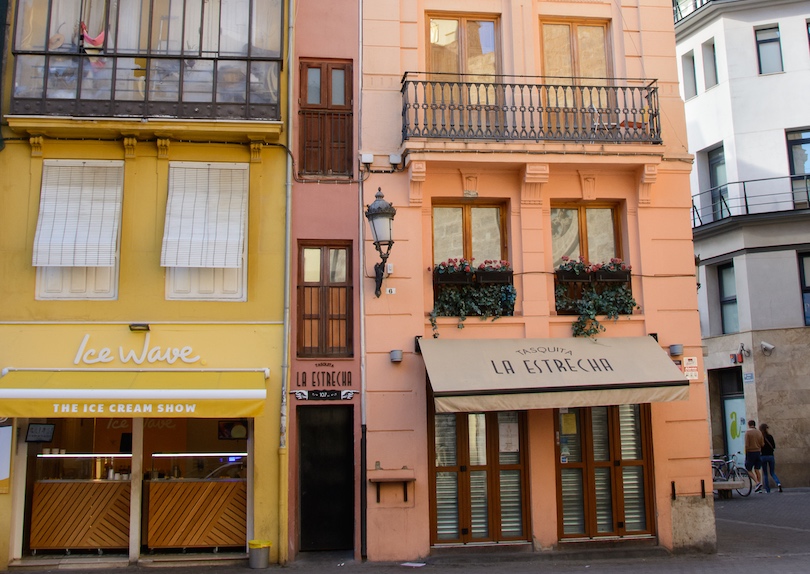
Situated in the Plaza Lope de Vega of Valencia, La Estrecha is a remarkable house that holds the record of Europe’s narrowest facade. Measuring just 107 cm in length, this incredible five-story structure was originally a family home. Each of its five floors comprised a single room which were linked by a spiral staircase, the bottom of which was a family run jewellery shop.
During the 1980 its inner wall was removed, so essentially it is now part of the Tasquita La Estrecha, a tapas bar that lies adjacent to it. However, it still retains its own front door and resembles a separate, Instagram worthy structure.
Today, you can still enter the building and take a look around it to gain a sense of perspective of what it was like to live there. The original flooring has been kept intact and there is also a nice collection of photos of the house’s interior to look at.
24. Plaza de la Reina
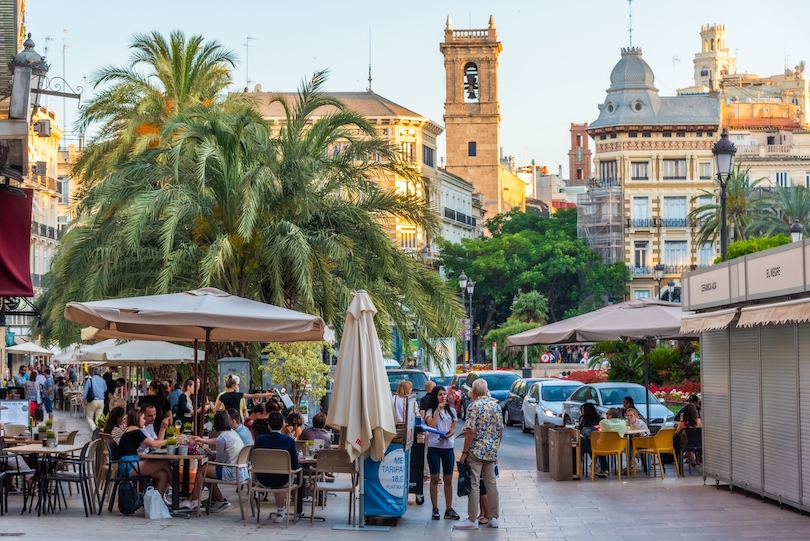
For any visitor to Valencia, Plaza de la Reina is a place you should spend a good amount of time at.
Situated in the heart of the city’s historic district, it is a vibrant and bustling square which makes a terrific spot for people-watching. Strolling around the square and watching the locals go about their business it a terrific way to spend a few hours.
The atmosphere is always warm and vibrant and there are also several enchanting buildings to visit. This includes the beautiful Gothic-style Valencia Cathedral.
The square is surrounded by a range of cafes and restaurants, which makes it a lovely spot to enjoy a meal. One of our favorite places is the Restaurante Italiano, which serves up delicious tomato and steak pasta, which we share as the portion size is huge!
23. Barrio del Carmen
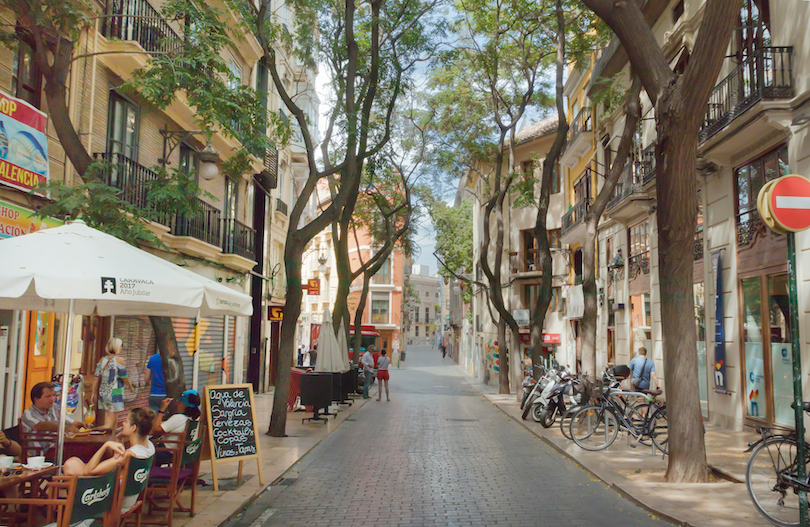
The historic neighborhood of Barrio del Carmen is somewhere everyone should visit when they come to Valencia.
Located in the heart of the city’s old town, what we love most about this neighborhood is its winding streets and narrow alleyways. They are home to a wonderful range of tapas bars, cafes, souvenir shops and fashion boutiques, which entice you with their charm, ambience and delightful decor. Many of these are in stunning Gothic and Baroque-style buildings, which are a joy to look at.
This area is also the site of the medieval gates of Torres de Quart and the Institut Valencià d’Art Modern. While at night, there are several excellent restaurants and late-night bars you can visit.
22. Gulliver Park
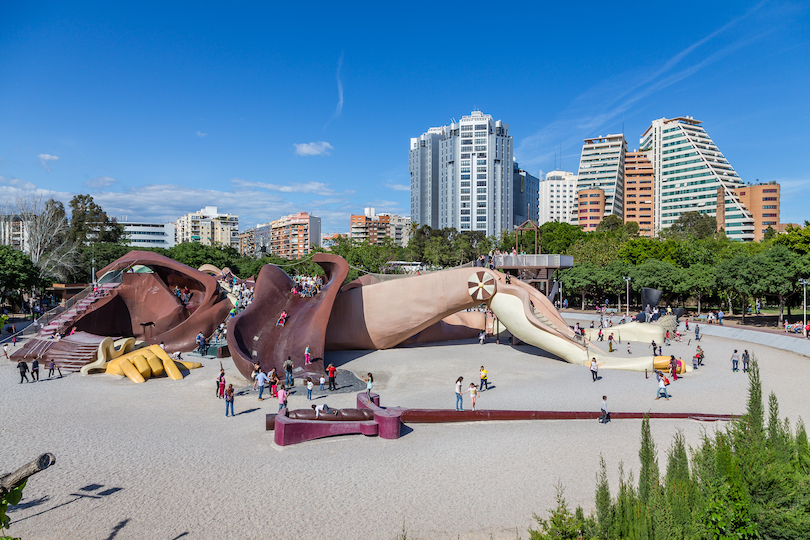
If you happen to be visiting Valencia with children you should make a point of visiting Gulliver Park. Located in the heart of the city’s Turia Gardens, it features an enormous sculpture of Gulliver, the beloved character from Jonathan Swift’s classic novel.
Unique and whimsical, the sculpture is designed to look as though Gulliver has been shipwrecked and is now lying on the ground. It enables children to climb and play on its body, which frankly looks like a lot of fun!
The park also features a range of fun and interactive elements, such as slides, tunnels, and climbing frames, providing a perfect opportunity for children to run around and play.
21. Ayuntamiento de Valencia
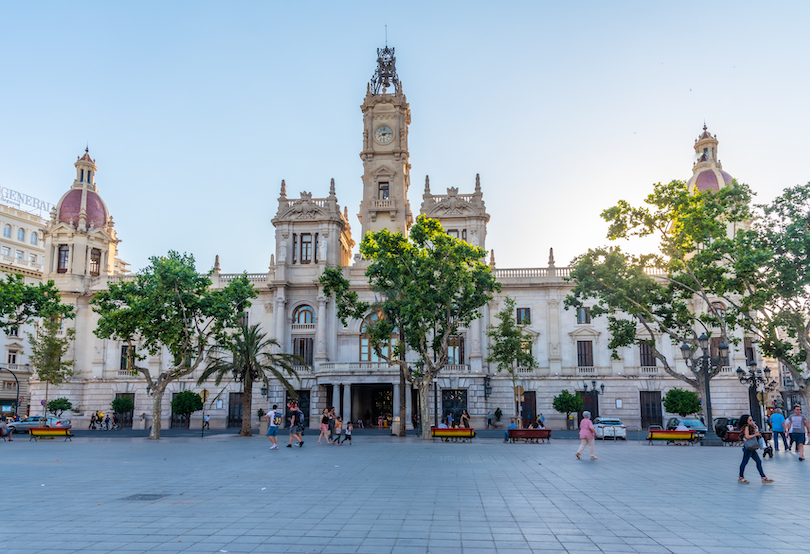
If you find yourself in the historic district, it is worth checking out the stunning Ayuntamiento de Valencia. Better known as the Valencia City Hall, this superb example of Neoclassical architecture has a very impressive façade, which you’ll no doubt take plenty of snaps of.
Should you decide to go on a guided tour inside (very much recommended) you will get to explore many of its rooms and halls. They include the beautiful Plenary Hall, which features stunning frescoes and ornate decorations. You can also visit the many exhibitions and displays located throughout the building. Again, we recommend doing this as it provides a fascinating glimpse into the city’s rich history and culture.
Depending on when you visit, there are also regular concerts and theater performances you might want to attend too.
20. Fine Art Museum of Valencia
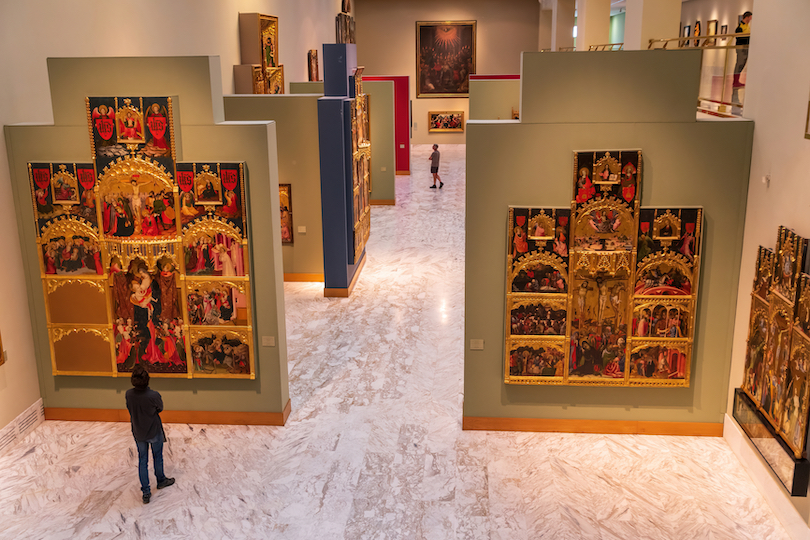
Another place you should enjoy visiting if you love art is The Fine Art Museum of Valencia. Situated in the historic district, it has a stunning collection of paintings, sculptures, and other artworks spanning many different eras and styles.
As you explore its various galleries and exhibitions, you’ll be able to see a self-portrait by Diego Velázquez and Gonzalo Pérez’s Altarpiece of Sts. You will also see Goya’s Playing Children and St. John the Baptist by El Greco.
What is most impressive about this museum is that some of its masterpieces dates back to the 14th century. You will be amazed at how well they have lasted the test of time, which is a mark of what defines them as special.
19. Museu Faller de Valencia
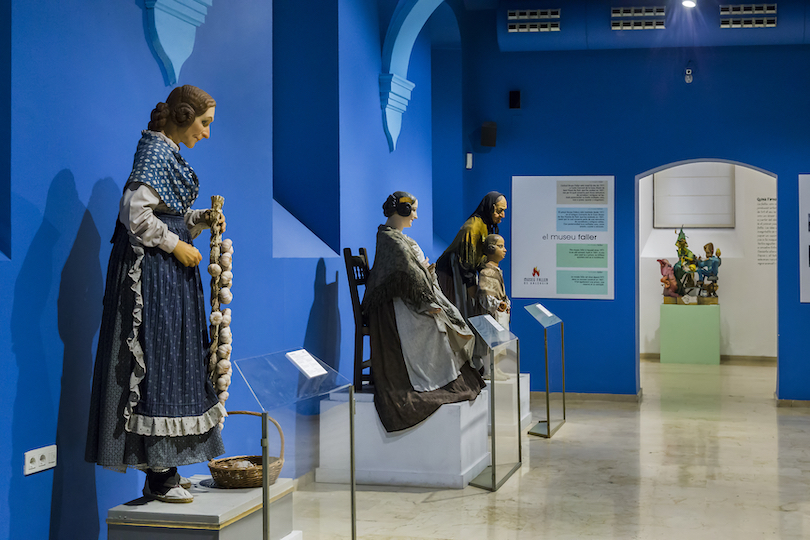
There are several wonderful museums in Spain, but none are quite like the Museu Faller de València.
Immediately immersing you in the colorful and vibrant world of the Fallas festival, it features a stunning collection of Fallas sculptures from past years. It also presents a fabulous range of costumes, photographs, and other artifacts related to the festival.
You could spend hours marveling at the displays, learning about the history and traditions of the Fallas festival and understanding the important role it plays in Valencia’s cultural identity.
In fact, you will be so consumed by the stunning sculptures, intricate costumes, and lively music you will want to coincide your next visit to Valencia with it.
18. Ruzafa Neighborhood
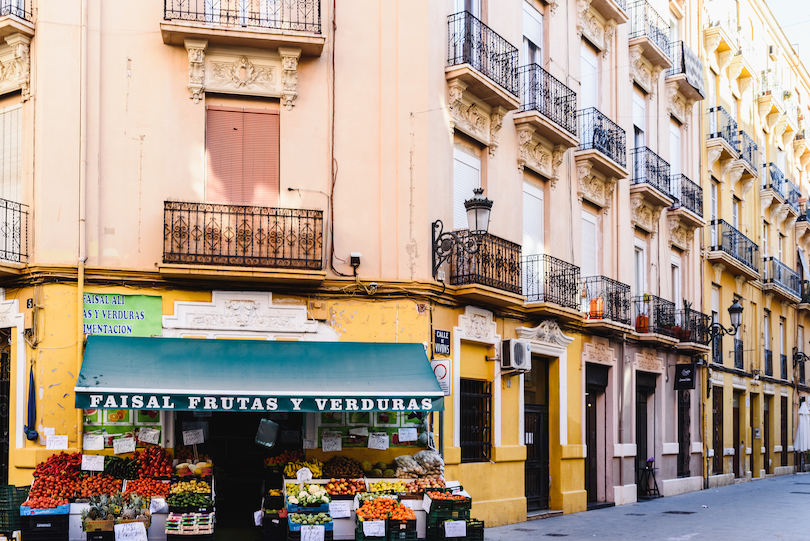
One of the coolest neighborhoods in Valencia to visit is Ruzafa (or Russafa), which is located just to the south of the historic district.
It is a terrific place to come for food, full of quaint coffee shops, cafes with nice terraces and restaurants serving everything from burgers to Turkish and Moroccan specialties. We especially like to come here as it has several American-style bakeries that provide a little taste of home.
Overall, Ruzafa is a lovely place to wander around, and it also has charming streets filled with small art galleries, organic food shops and intimate clothing boutiques. Its centerpiece Plaça de Toros also hosts bullring concerts and bullfights, which you may be interested to see.
17. Plaza del Mercado
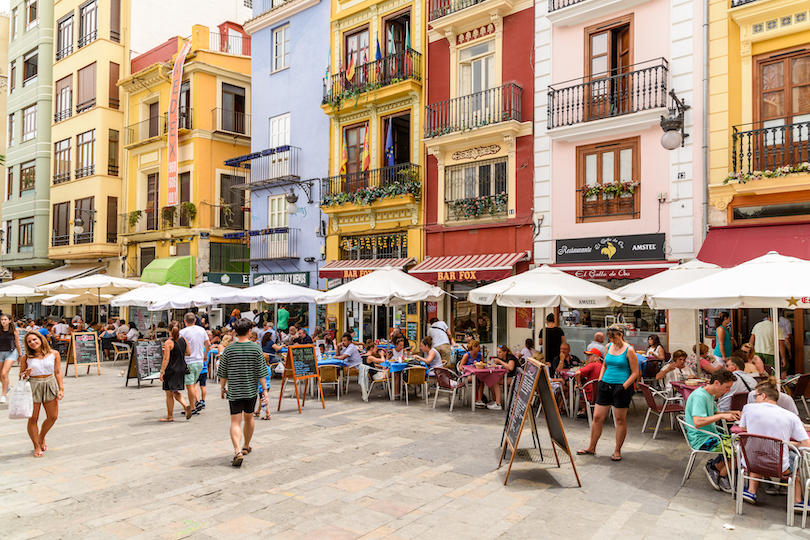
The Plaza del Mercado is somewhere most people will end up on their visit to Valencia. One of the busiest areas in the city, it is located in the center of Valencia’s Old Town. It is also here that you will find the Central Market and the Lonja de la Seda.
When not visiting either attraction, the Plaza del Mercado is a lovely place to stroll around or people-watch. It also has some nice cafes and restaurants, which make for a pleasant place to enjoy a coffee or a meal.
The easiest way to get there is to take the metro station to Xativa, on lines three and five. However, you might prefer to catch the number 7 bus as this will enable you to see more of the city.
16. Albufera Natural Park
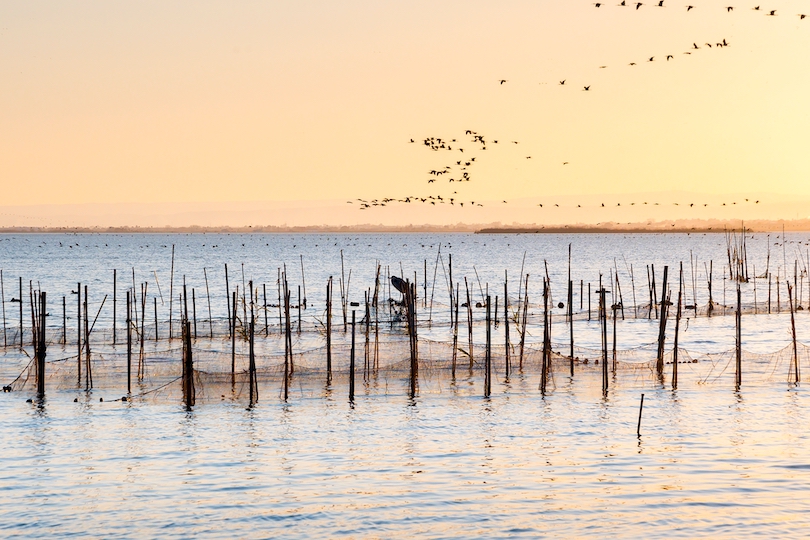
The Albufera Natural Park is located, just 10km from Valencia and is notable for accommodating the largest lagoon in Spain. Surrounded by paddy fields and woods, it features leisurely boat rides and incredible sunsets, providing visitors with a lovely way to relax after a hectic period of sightseeing. There are also six well-signposted routes that you can walk along to explore the area.
Another good reason for visiting Albufera Natural Park is that it is close to El Palmar, which is the place where paella was invented. If you do go there, you will be able to try this delicious dish in its most authentic form. As well as other specialties like all-i-pebre, which is an eel stew flavored with pepper and garlic. As you may expect, the paella served up at the restaurants in this town is sensational!
15. Estacio del Nord
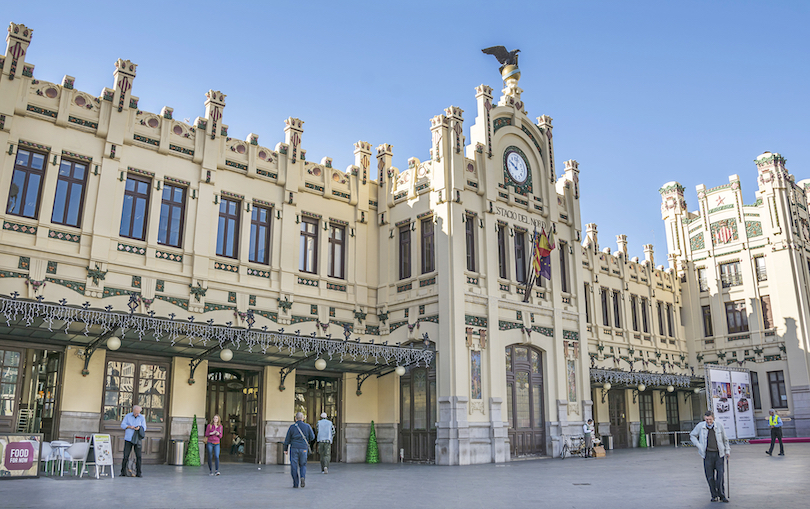
Many tourists who arrive in Valencia will do so at the city’s main train station, the Estació del Nord. And what a place to arrive!
In our minds, it is one of the most beautiful stations we have ever seen. Definitely on par with Grand Central Terminal in New York City and Union Station in Washington, DC.
Even if you didn’t arrive by train, it is worth visiting, as you will be transfixed by its grandeur and elegance. The beauty of its intricate tilework, soaring ceilings, and ornate architecture is somewhere you could spend hours taking in. As the attention to detail and dedication required to create it is mind-blowing.
There are also a couple of nice cafes and restaurants at the station, should you want to extend your time to appreciate it.
14. Plaza de la Virgen
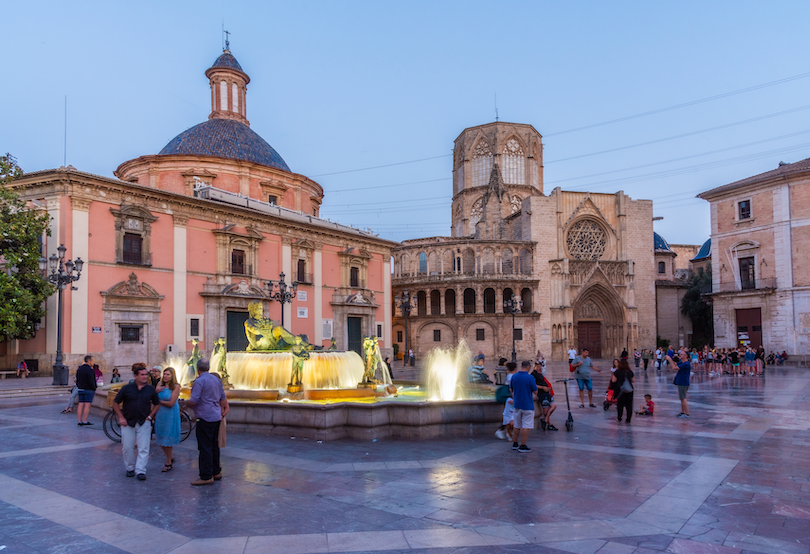
Another lovely square to visit is the Plaza de la Virgen, which is home to some of Valencia’s most iconic landmarks. They include the stunning Cathedral of Valencia and the Basilica de la Virgen de los Desamparados. Both of which offer a fascinating glimpse into the city’s rich history and culture.
At the center of it is a beautiful fountain, which you can sit beside to relax and watch people. It is a stunning monument dedicated to the Turia River and features eight female figures pouring water out of pitchers they hold. On the top of the fountain sits Neptune.
From ground level, the square is an impressive sight. But if you climb the nearby cathedral bell tower, you’ll get an even more spectacular view of it.
13. Church of St. Nicolas
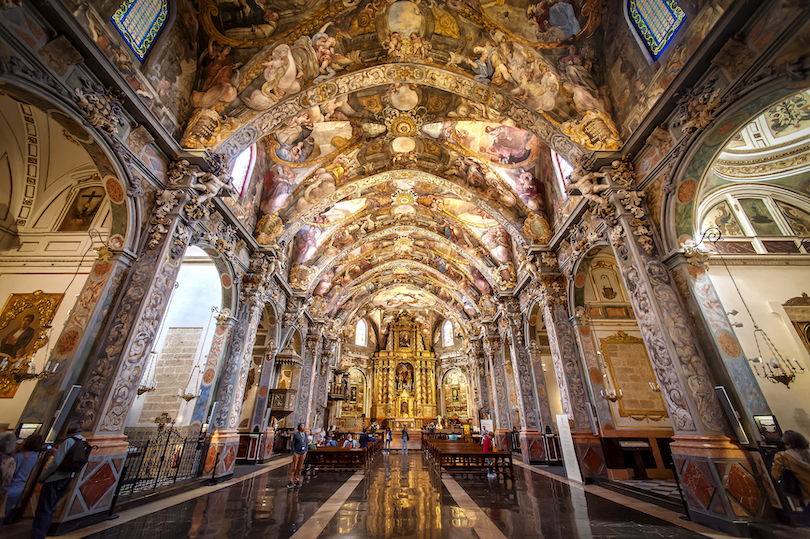
Officially known as the Parroquia de San Nicolás de Bari y San Pedro Mártir, the Church of St. Nicolas is Valencia’s parish church for Roman Catholics.
Created in the Valencian Gothic style, it is a stunning structure everyone should make the effort to see, even if you are not religious.
If you visit it, you can’t fail to be immediately taken by its striking facade. It features intricate carvings, stunning stained-glass windows, and incredibly ornate details that you’ll have to take some time to process.
When you go inside, you’ll be presented with its soaring ceilings, elegant arches, and beautiful artwork. The latter include priceless works of art, as good as anything you see in Valencia’s other museums.
12. National Ceramic Museum
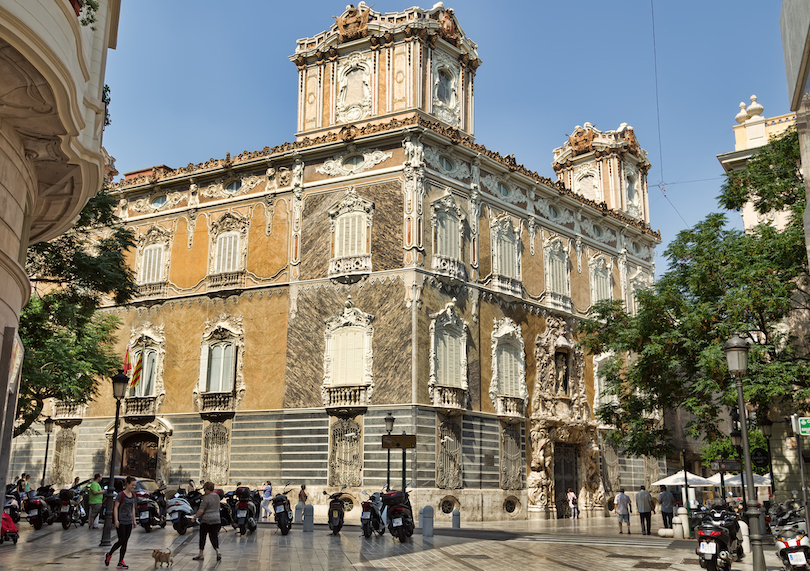
One thing you will discover during your visit to Valencia is that culture comes in many different forms. The National Ceramic Museum (Museo Nacional de Ceramica Gonzalez Marti) is one such example.
The museum is housed in a 15th century palace that was refurnished in the rococo architectural style. The front entrance is crowned by a statue of the Virgin Mary, pouring twin fountains from her hands.
Named after the collector who set it up, the museum houses ceramic pieces from several different locations, including Greek, Roman, Arab, and prehistoric times. Traditional Spanish pieces from regions like Manises, Paterna and Alcora are on display, as well as a number of contemporary pieces. These include some works by Picasso.
11. Plaza de Ayuntamiento
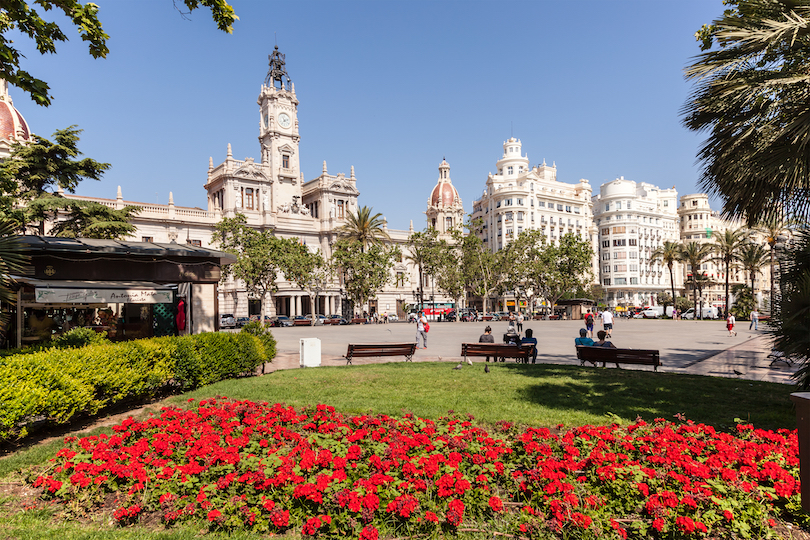
The Plaza de Ayuntamiento is probably Valencia’s most famous plaza. So, this is something you should add to your ‘must visit’ list of things to do in Valencia.
Flanked by palm trees and stunning Spanish architecture, it is between the Ayuntamiento (town hall) and Edificio de Correos (post office). It is also not far from the Estación del Norte (train station) and Plaza de Toros (Bullring).
What is great about this place is its energy and lively atmosphere. The square bustles throughout the day, with people going about their daily lives. This makes it a prime spot for soaking up the Valencian way of life. The square also features some elegant buildings and an august fountain. While there are also some lovely cafes and bars in the immediate locality where you can enjoy a meal or a drink.
10. Bioparc Zoo
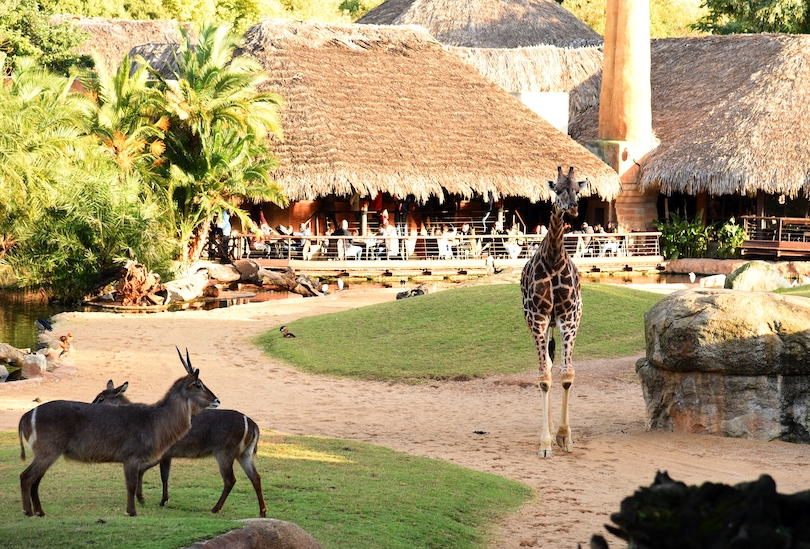
Created in 2008, the Bioparc is owned by the city of Valencia, but managed by a for-profit zoological company. It lies along the Turia gardens, and has a modern concept of having designated habitats for animals that are visited by people, instead of the other way around.
What we like about this zoo is that the barriers are almost invisible. Instead of separating animals from people by railings and cages, they use natural landforms like large rocks, ditches, and rivers to keep them separate. So, it creates the feeling of being out in the wilds of Africa with them!
The African animals are the highlight of the zoo, though there are a number of examples of other world ecosystems as well.
9. La Lonja
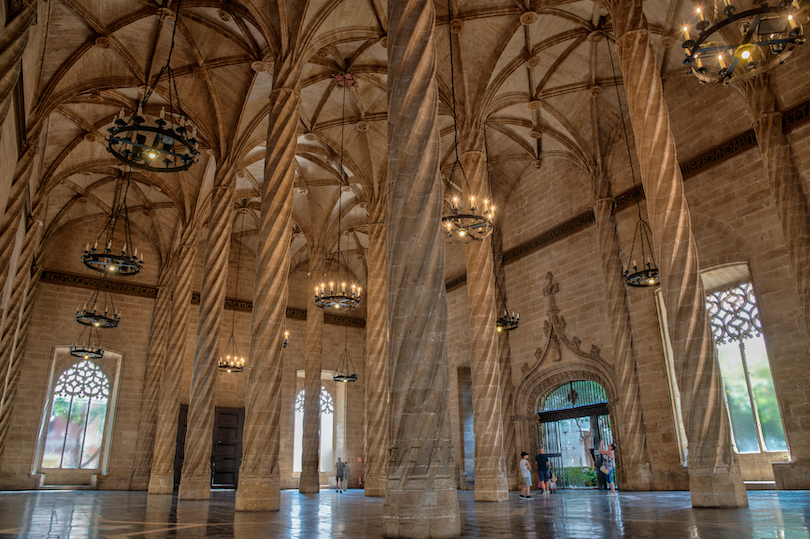
Built between 1482 and 1533, La Lonja de la Seda was once used for trading in silk (hence its name, the Silk Exchange). The three-part building and attached orange garden remains a major tourist attraction in Valencia today.
Situated just a two-minute stroll from the Mercado markets, the Lonja is arguably one of Europe’s most iconic civil gothic monuments. It has been designated as a National Historic and Artistic Monument and a World Heritage Site.
The center building, Sala de Contratacion, was used for signing contracts and has rich decorations with spiral columns. One side-wing hosted the merchant tribunal, and features a ceiling mural that was a tourist attraction for royals. The second side-wing contains the holding cells for debtors that were sentenced by the tribunal.
8. Malvarrosa Beach
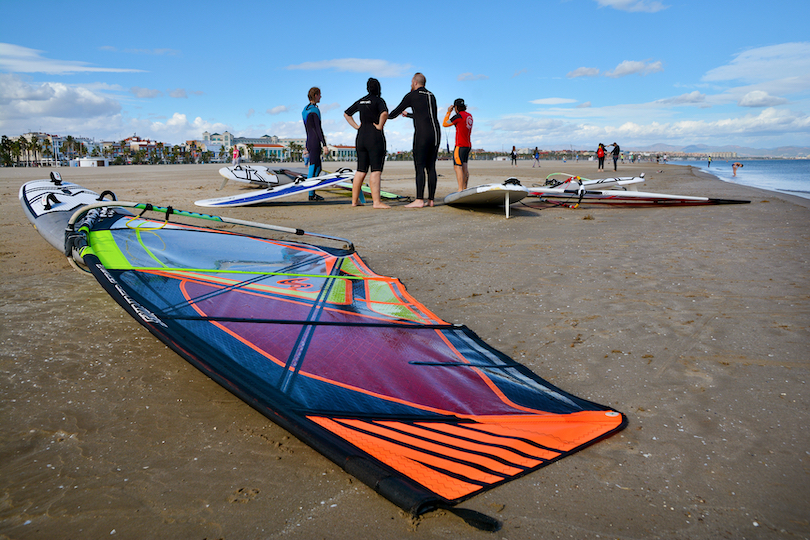
As beach lovers, we love to check out the local beaches on our travels, so we were excited about visiting Malvarrosa Beach on our first trip to Valencia. Thankfully, it does not disappoint!
The beach is a 20-minute cab ride from the downtown area and is easily accessible by public transportation. Once there, you will find a stunning stretch of golden sand and crystal-clear waters, which are perfect for swimming and sunbathing. You won’t be alone at the beach, as it is a popular destination for locals and tourists. But there is plenty of space available to throw down a towel.
At any time of the day, the beach is bustling with activity. Next to the beach is the Paseo Marítimo, a magnificent sea-front promenade, where visitors can enjoy walking, roller skating, jogging, or stop at a restaurant for a delicious paella and a glass of wine.
The house of the famous Valencian writer Vicente Blasco-Ibáñez is located at Malvarrosa Beach and has been converted into a museum with an exhibition of his personal belongings and literary works.
7. Mercado Central
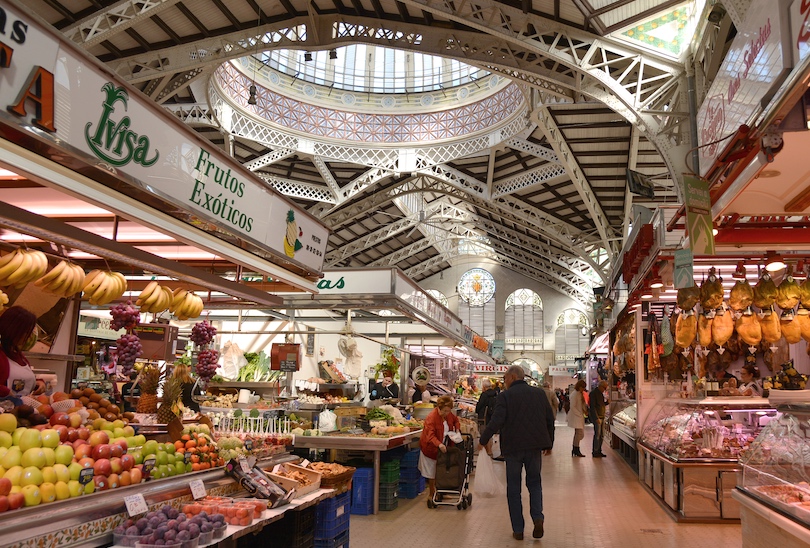
Any visitor to Valencia, should head to Valencia’s famous and bustling central market.
This public market is considered one of the oldest European markets still running. It is open six days a week, and closed on Sundays. The modernist roofed building that houses the market was built in 1914, and contains a number of beautiful stained-glass windows and room for over 400 merchants.
Lined with plenty of colorful stalls, you will find a massive range of fresh produce here. They include everything from seafood, cured meats and cheese to fruits, vegetables, and artisanal bread, all sold with passion and beautiful presentation.
For those who just want to soak up the ambiance, a large tapas bar sits in the center of the market in full view of many of the shops.
6. Valencia Cathedral
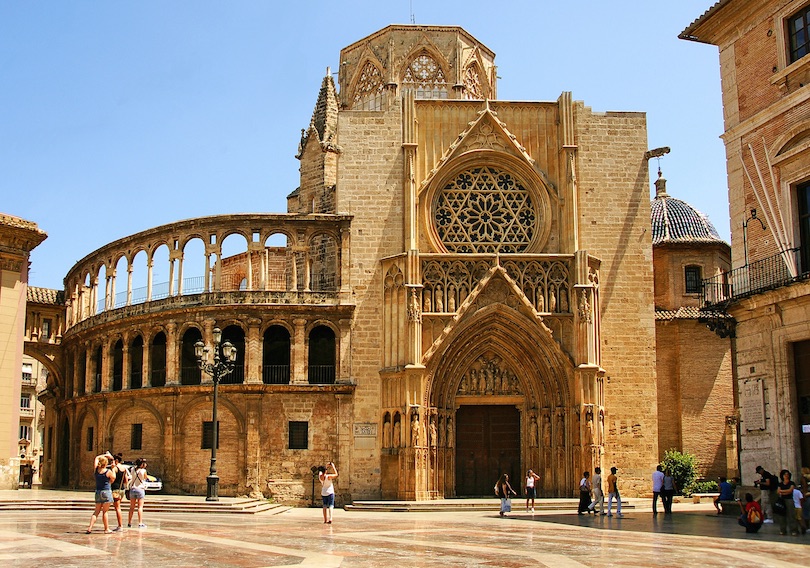
As you wander through its historic old town, you can’t miss Valencia Cathedral, nor should you.
This iconic Roman Catholic church is one of the city’s most popular attractions. It was built on the site of a mosque, with its construction taking place between the 13th and 17th centuries.
As it took several centuries to construct, its facade incorporates several architectural styles including Baroque, Valencian Gothic, Neoclassical, Renaissance and early Romanesque.
However, what draws many people to the church is that it is purported to keep the true Holy Grail in one of its chapels. Whether true or not, the chalice has made a name for itself as the official papal chalice, most recently by pope Benedict.
The cathedral also features a stunning nave and a beautiful chapel, as well as several priceless paintings dating to the 15th-century.
5. El Miguelete
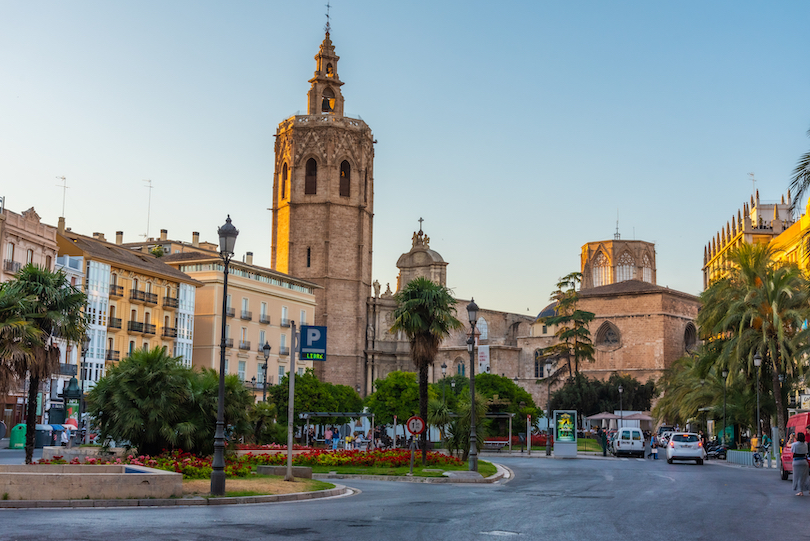
While the Valencia Cathedral is worth visiting, if time doesn’t permit an extended tour, you should at least check out its impressive tower.
Known as El Miguelete, the Gothic-style Valencian bell tower stands tall and proud against the city skyline. Overall, it took 48 years to complete, eventually being finalized in 1429. However, it was worth the wait because this iconic landmark now offers breathtaking views of the city.
Although the climb might challenge some, the effort is rewarded with vistas of red-tiled roofs, historic landmarks, and bustling streets stretching out before you.
The tower’s architecture is also very impressive, boasting intricate details and a soaring height that is very Instagram-worthy.
4. Turia Gardens
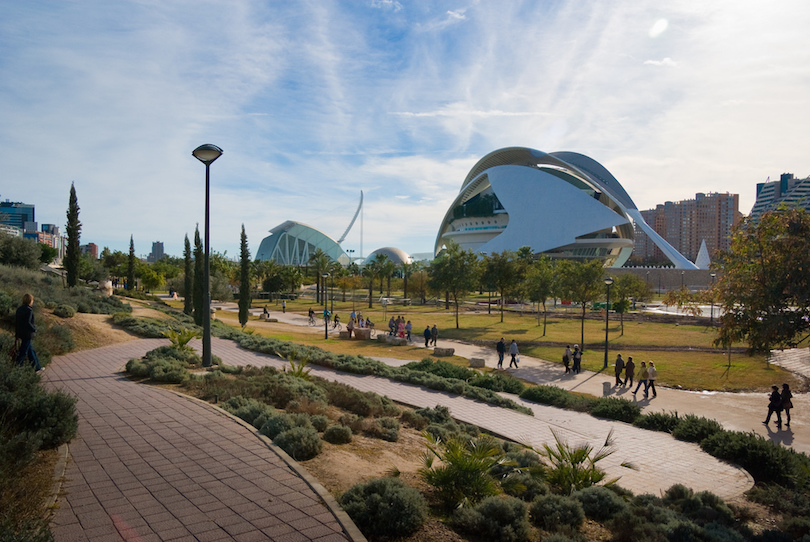
Valencia is a wonderful city to visit. But sometimes you can get a sensory overload from all that sightseeing. During these times, it is good to head to the more tranquil surroundings of The Turia Gardens, one of Spain’s largest urban parks.
These gardens were created when the flood-prone Turia river was rerouted around the city. The old riverbed that remained was formed into the Turia garden, and includes a bike path across Valencia, along with several things to do.
The gardens are not only well landscaped, they have a number of fun attractions for others, including sports courts and fields, giant chess boards, skateboard parks, fountains, and much more.
It is a great way to walk to the city of arts and sciences, the Serranos towers, Bioparc, and other attractions in Valencia.
3. Oceanografic Aquarium
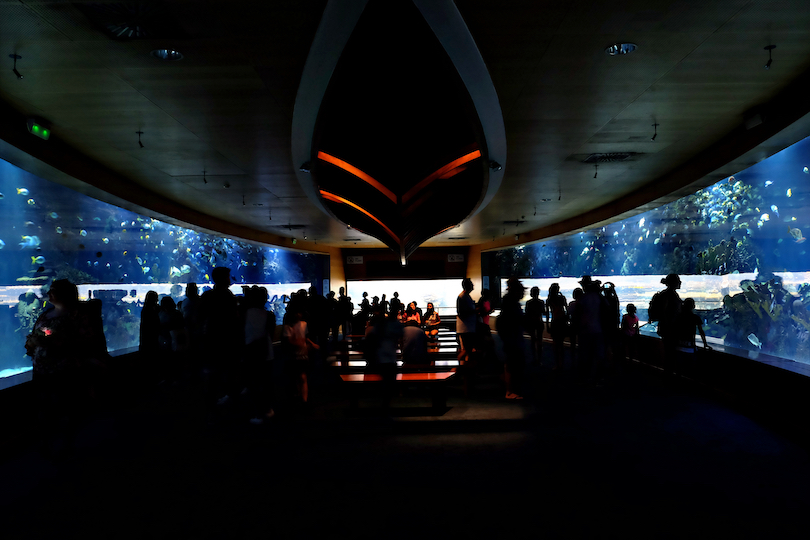
This highlight of the city of arts and sciences is a tribute to the spectacular Mediterranean ocean life off the coast of Valencia.
The largest aquarium in Europe, it is home to an incredible array of aquatic creatures from around the world, including dolphins, sharks, penguins, and sea turtles.
Take the time to explore the various exhibits, and you will be seduced by the brilliantly colorful fish, majestic rays, and graceful jellyfish. All of them swim in large tanks replicating their natural habitats, providing an insight into what life is like below our ocean’s surface.
Undoubtedly, our favorite part of the aquarium is the fantastic underwater tunnel that takes us through a massive tank filled with sharks. It provides a thrilling and immersive experience that breaks you out into goosebumps!
2. Las Fallas Festival
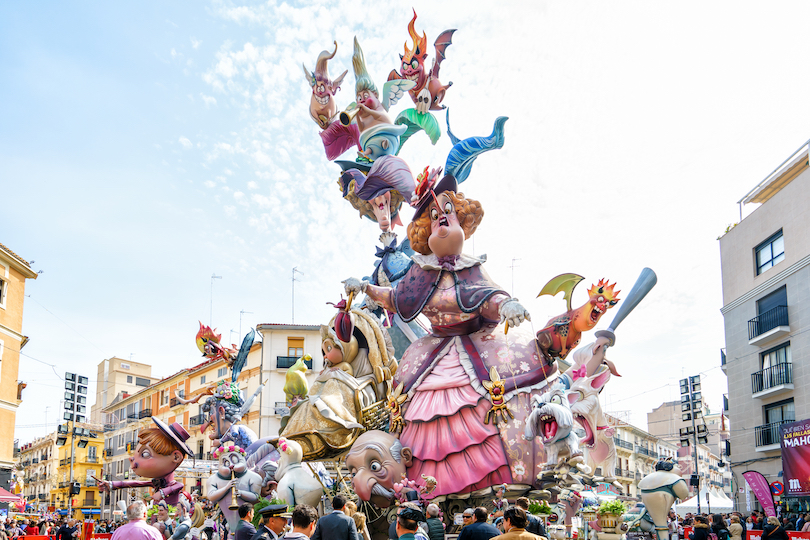
As mentioned earlier, we have not been able to attend the Las Fallas Festival, but it is on our list for next time!
The traditional main celebration occurs every year between the 15th and 19th of March. While every day from the 1st to the 19th of March, the Mascletà – a magnificent spectacle of fireworks and pyrotechnics – takes place.
At this time the streets apparently come alive with music, fireworks, and people in traditional clothing, singing and dancing. All of which sounds wonderful.
Of course, the main focus of the festival is the fallas, like the ones displayed at the Museu Faller de València. Every year people try to outdo each other with their creations, some of which reach 20 meters in height!
1. City of Arts and Sciences
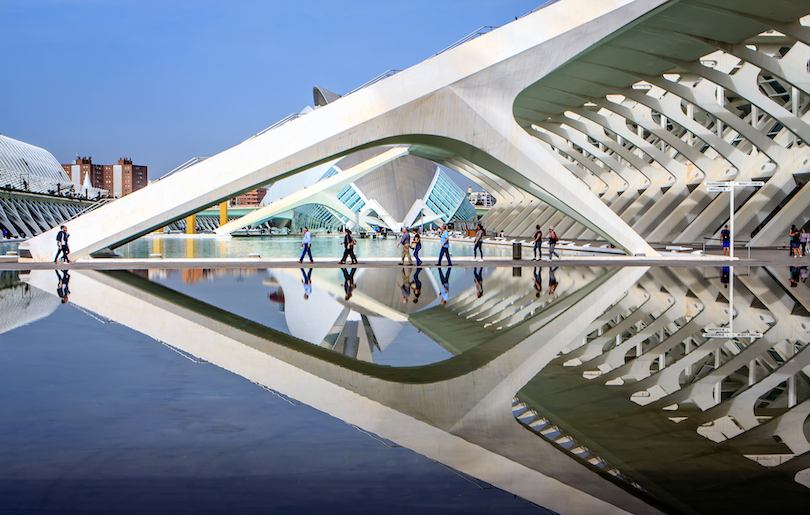
If you are looking for something to prioritize seeing on your visit to Valencia, then make it to The City of Arts and Sciences.
This modern architectural wonder is situated at the end of the rerouted Turia river. Along the water sit a number of futuristic and unique buildings, including the well-known Oceanografic Aquarium.
They also include L’hemisferic, which resembles a giant eye that can open and close, and contains a planetarium and IMAX theater. The museum of principal sciences is a natural history museum designed to look like a whale’s skeleton.
The Agora is a tall covered sports arena, and the Palau Opera house has four theaters, an opening roof, and moving platforms to connect between floors. The city is connected by a landscaped walk featuring Valencia’s native vegetation, and a beautiful suspension bridge.
Best Time to Visit Valencia
Blessed with a Mediterranean climate, Valencia is pleasant to visit year-round with average temperatures never dropping below 16°C (61°F). The most popular months are from June to October when the weather is warmest and you can sunbathe and swim in the sea.
If possible though, it’s best to avoid July and August as prices are high and the beaches are packed. Average temperatures of 30°C (86°F) mean sightseeing is uncomfortable with many local businesses also closing for the summer holidays. The famous La Tomatina festival does take place though in the nearby town of Bunol.
Either side of the peak season are brilliant times to visit as some of the crowds have headed home and the city is a couple of degrees cooler. The price of hotels is actually higher though in June and September with the former hosting some large Corpus Christi celebrations.
Valencia’s most famous festival, however, is Las Falles in mid-March. For five days and nights, elaborate floats, fireworks displays and music performances light up the entire city. Crowds and prices are obviously higher around this time. April also sees Semana Santa take place; another of the country and city’s most important celebrations.
Map of Tourist Attractions in Valencia
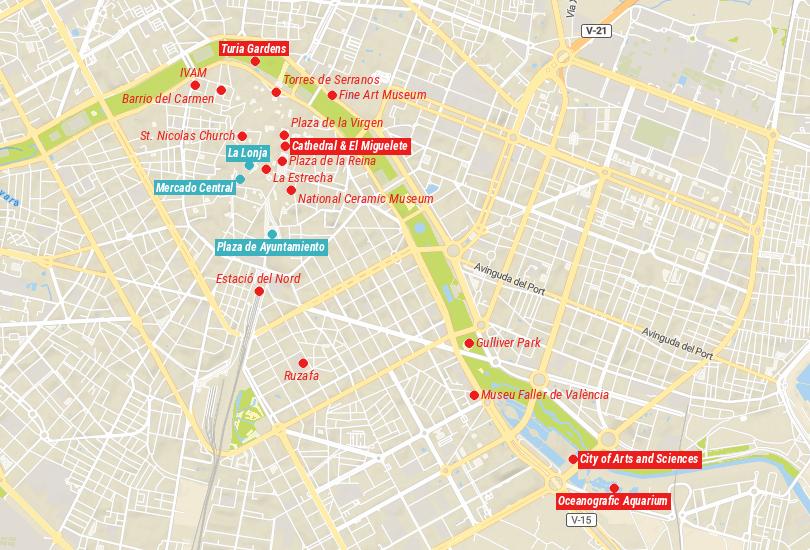
Share this post:
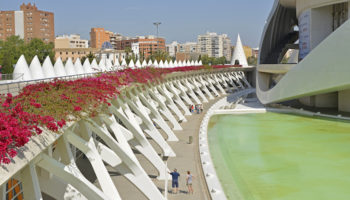
Where to Stay in Valencia: Best Neighborhoods & Hotels

12 Best Things to do in Cantabria, Spain
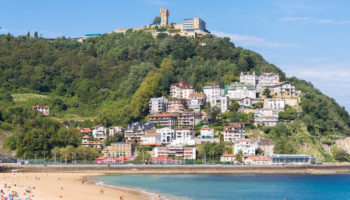
19 Top Attractions & Things to Do in San Sebastian
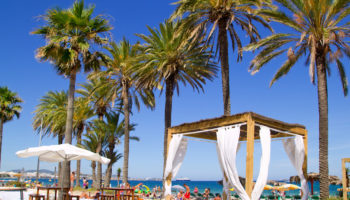
10 Best Places to Visit in Ibiza
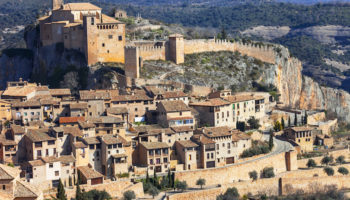
14 Most Enchanting Small Towns in Spain
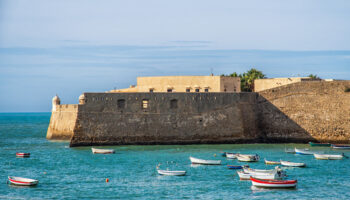
17 Best Things to do in Cadiz, Spain
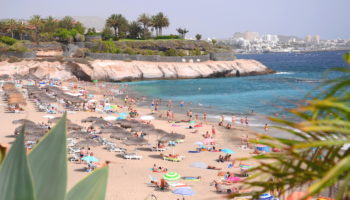
Where to stay in Tenerife: Best Places & Hotels
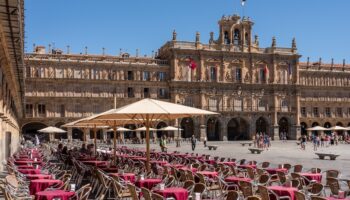
16 Best Things to do in Salamanca, Spain
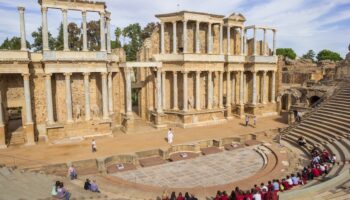
12 Best Places to Visit in Extremadura, Spain
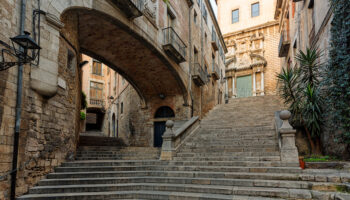
17 Best Things to do in Girona, Spain
Reader interactions, leave a reply cancel reply.
Your email address will not be published. Required fields are marked *
This site uses Akismet to reduce spam. Learn how your comment data is processed .

25 Best Things to Do in Valencia, Spain (2024 Travel Guide)
This post may contain affiliate links. Disclosure
Wondering what to do in Valencia to make the most of your trip to Spain? Whatever moves you when you travel, below you’ll find an extensive list of the very best things to do in Valencia .
With sun-kissed shores, friendly locals, world-famous landmarks, and crazy fiestas, Valencia is one of the best cities to visit in Spain and a wonderful choice for a long weekend break.
In this Valencia travel guide , I cover everything from top attractions and fun activities to scrumptious local delicacies you simply cannot miss when organizing your dream trip to Valencia .
Top 10 Things To Do in Valencia
Valencia is packed with spectacular buildings, gentrified neighborhoods, and peaceful green areas. This is my definitive list of what to see and do in Valencia for the time-conscious traveler.
Tip: If you’re planning to visit several museums and attractions, it might make sense to buy the Valencia Tourist Card. The card also includes unlimited free public transport around the city (including the metro to and from the airport).
1. Marvel at the futuristic City of Arts and Sciences
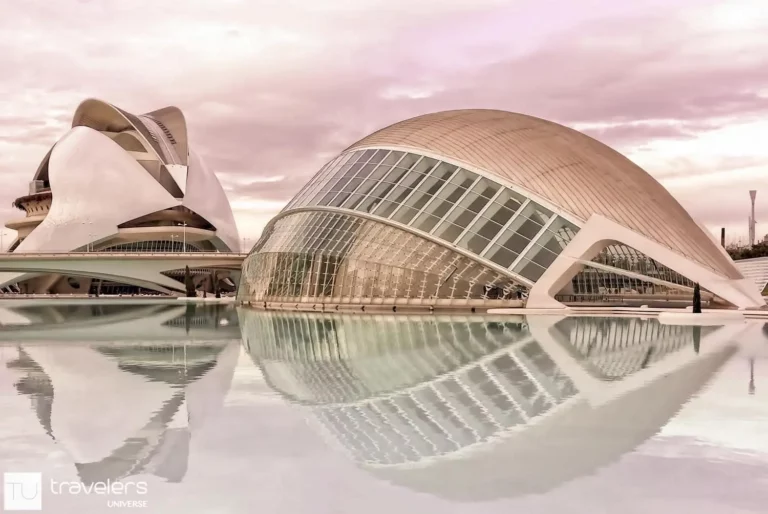
The City of Arts and Sciences is a mind-blowing architectural complex made up of six of the most famous buildings in Valencia. It is the attraction that put Valencia on the tourist map and a place worthy of your Spain bucket list .
The complex is situated at the southeast end of the former Turia riverbed. It consists of an opera house, an aquarium, a science museum, an IMAX theatre, a multipurpose covered plaza, and an outdoor art gallery.
It was designed by the world-famous Valencian architect Santiago Calatrava and is one of the 12 Treasures of Spain , right next to Gaudí’s Sagrada Familia in Barcelona .
The organic shapes of the buildings have an endless capacity to entertain and stimulate the mind. One looks like a giant eye. Another reminds me of a whale skeleton. Some are masterfully covered in shattered tile fragments and glitter in the sun.
This is one of the most interesting places to visit in Valencia. You cannot leave without strolling around its blue pools of water. Maybe even hire a kayak, boat, or waterbike!
2. Visit Oceanogràfic, the largest aquarium in Europe

Oceanogràfic is the jewel in the City of Arts and Sciences’ crown. It is the largest aquarium in Europe and has a mind-blowing array of sea creatures. Oceanogràfic ranks among the top places to see in Valencia and is one of the best places to visit in Valencia with kids.
You can walk through the longest underwater tunnel in Europe. Meet the only family of beluga whales on the continent. And watch the dolphins at play.
Every time I visited the fish looked happy and well cared for. So I actually felt good about being here. The aquariums are huge, clean, and faithfully reproduce each species’ habitat. So much so, that they even pump seawater from the nearby beach!
One of the most remarkable things you can do here is to join a shark sleepover. This activity is suitable for families and couples alike.
I recommend you plan 2+ hours for your visit so you can spend some quality time with the fish and the birdies.
If you want to elevate your experience to the next level, book a table at their in-house restaurant, Submarino. This underwater eatery serves modern and fusion cuisine with Mediterranean influences.
3. Walk through history in El Carmen
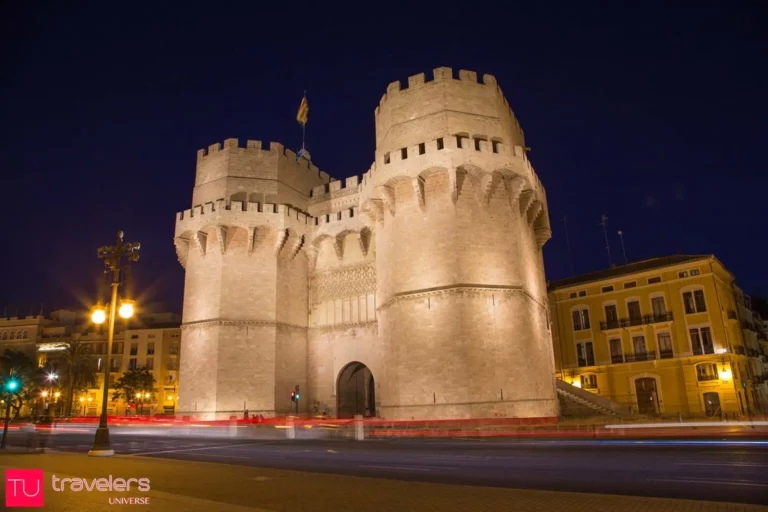
El Carmen is the atmospheric maze of cobblestone streets between Calle Quart and Calle de Serranos. It developed during medieval times between the Muslim and the Christian wall and is one of the six neighborhoods that form Valencia’s Old Town.
A stroll through El Carmen is like a trip into the past. Yet El Carmen is also bohemian and vibrant to the core and it brims with life regardless of the hour. Here you’ll find some of the best nightlife in Valencia . As well as some of the most interesting historical sites.
Look for Portal de Valldigna , the medieval arched door in the wall that used to separate the Arabs from the Christians. The first printing press in Spain was established right next to it back in the 1470s.
Climb the Serranos and Quart Towers , the only two city gates still standing. Relax in the shadow of a centenarian olive tree in Plaza del Árbol . Visit the Cats’ House , a curious monument to the thousands of street cats living in the city. Sample gourmet tapas inside Mossén Sorell Market . And wander around the peaceful cloisters of Centre del Carmen .
To learn more about El Carmen and Valencia’s Moorish past, check out this private walking tour led by a local. During the tour, you’ll visit some of the best places in Valencia and explore the medieval heart of the city.
4. Discover the glorious past of Valencia’s Silk Exchange
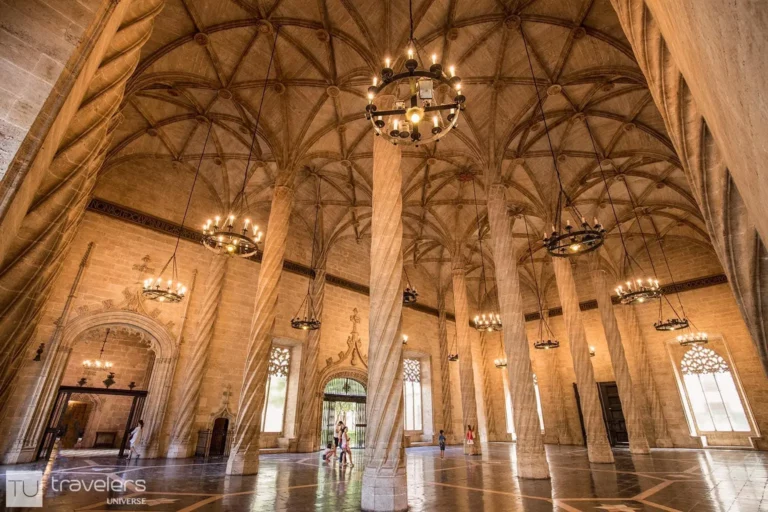
Between the 14th and 18th centuries, Valencia was a very important silk producer. This led to the Valencian Golden Age (15th and 16th centuries), a period of rapid economic growth.
During this time, Valencia was one of the most influential cities in the Mediterranean and even funded Christopher Columbus’ voyage to the Americas. Culture and arts flourished. The University of Valencia was founded. And La Lonja de la Seda (the Silk Exchange) was built.
In its heyday, this imposing building was a splendid commercial emporium. The Main Hall, with its majestic palm-tree-shaped columns, was used to attract merchants from all over Europe.
Nowadays, La Lonja is a UNESCO World Heritage Site and one of the main attractions in Valencia. Entrance is free with the Valencia Tourist Card.
If you’d like to learn more about the historical legacy of the silk trade in Valencia, I highly recommend joining a tour. Besides a visit to La Lonja, the tour also takes you inside the newly opened Silk Museum and around the old Velluters (now El Pilar) neighborhood.
This neighborhood is where the silk weavers guild was based during the 17th and 18th centuries. You can still find many shops selling gorgeous silk fabrics here, which you should really check out.
5. Learn about the intriguing history of the Holy Grail of Valencia
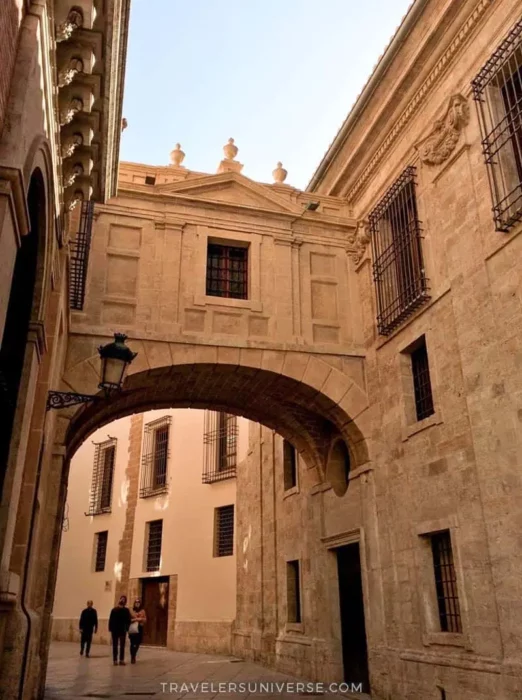
Several cities around the world claim to have the Holy Grail, the cup Jesus drank from at the Last Supper. But none of them seems to have a stronger claim than Valencia.
Valencia’s Holy Grail has been in the city ever since the 15th century and nowadays it is on display in one of the chapels inside the Cathedral.
Visiting the imposing Cathedral should be on your list of things to do in Valencia regardless, for it is a unique mix of architectural styles. Besides the Holy Grail, it hosts two Goya paintings and various religious relics, including the mummified arm of St. Vincent the Martyr, the patron saint of Valencia.
For the best panoramic views over Valencia, climb the spiral staircase inside the Gothic bell tower (affectionately called Miguelete). Just beware that there are 207 narrow steps up to the summit.
If you want to set out on a quest to learn about the contested history of the Holy Grail, there’s no better way to do so other than by joining a tour. The tour includes a visit to several places of worship and ends up with a paella lunch.
Hot tip: Other churches worth visiting are Iglesia del Patriarca for its baffling dragon; Basílica de la Virgen de Los Desamparados , a beautiful oval church connected to the cathedral; Iglesia de San Esteban for its extravagant blue vegetal patterns; Iglesia de San Nicolas for its incredibly ornate ceiling and Iglesia de San Juan del Hospital , Valencia’s oldest church.
6. Be amazed by the Palace of the Marques de Dos Aguas
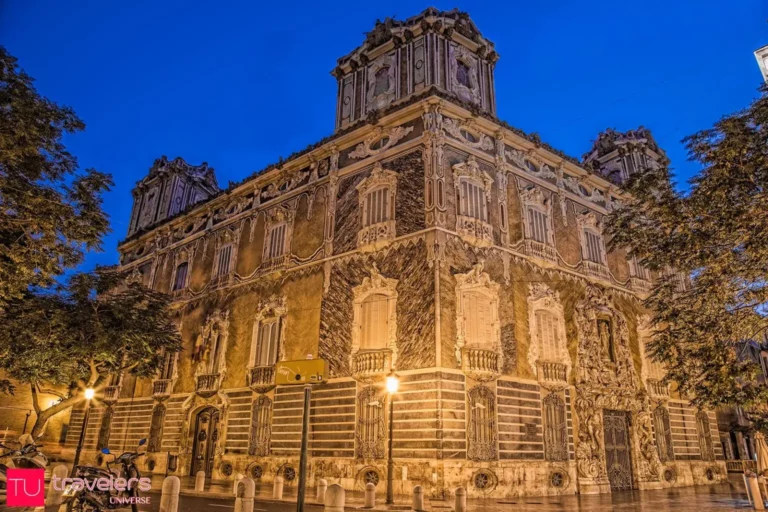
The Palace of the Marques de Dos Aguas is one of the best places to visit in Valencia for Rococo architecture. It dates back to the 15th century and was originally built in the Gothic style. Later on, during the 18th century, the palace got a Rococo facelift at the hand of Hipólito Rovira.
The most notable feature of the palace is its ornate facade replete with symbolism. For example, the statues of the two naked men on each side of the entrance represent the largest rivers of the Valencian community — Turia and Júcar.
The second floor houses the most important ceramics museums in Spain. Here you can find painted tiles, plates, and other objects from different time periods. The most striking bit, however, is the painstakingly reconstructed traditional Valencian kitchen.
If ceramics aren’t your cup of tea, the palace is still worth visiting for its lavish interiors on the first floor. The rooms are a spectacular combination of rococo, neoclassical, and oriental elements. Think painted ceilings, period furniture, and a small collection of early 20th-century paintings by Pinazo.
Personally, I’m in love with both the porcelain room and the ballroom. But the two extravagant carriages on the ground floor are nothing short of amazing as well.
7. Hang out in Ruzafa
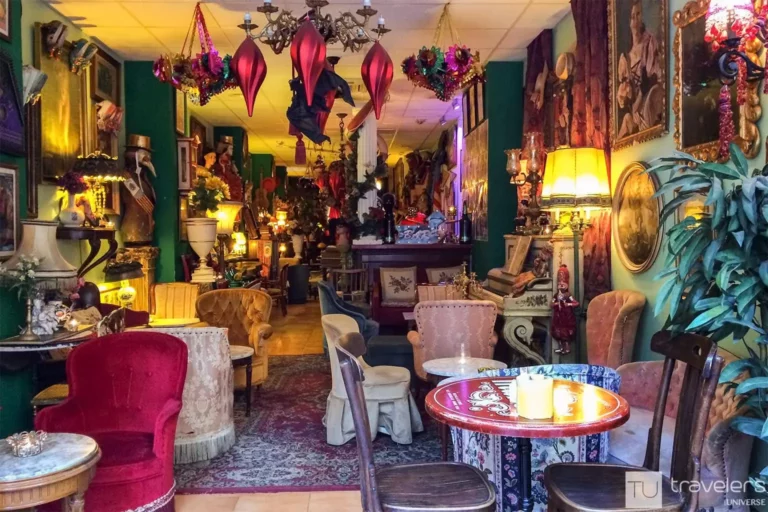
Ruzafa is Valencia’s most gentrified neighborhood. It is the place to be if you are into curiosity shops, nightlife, and good food.
A few years ago, this barrio was in such a state of decay that it wasn’t even worthy of a second look. Yet now it is a young and artsy place with colorful architecture, fun cafés, and a lively atmosphere.
Ruzafa is a neighborhood of family-owned businesses and Airbnbs. You’d be hard-pressed to find any coffeehouse chains or hotels here. What you’ll find instead, is a traditional local market with fresh, top-quality produce. An art deco building that looks like a wedding cake ( Casa Judía at 20 Calle Castellón ). And endless pavement cafés.
Stop by Ubik Café , the bookstore/café that kickstarted the whole movement of regeneration. Try some paella with a twist at Masusa Bar — their spicy paella is legendary! Have some local craft beer at Olhöps or Ruzanuvol . And dance the night away at one of the many dance clubs.
Ruzafa also has several great brunch spots, such as Café ArtySana , Bluebell Café, and Kea . And if you have a sweet tooth, La Más Bonita and Dulce de Leche are mandatory visits. For more ideas see the best brunch cafés in Valencia .
8. Soak up Valencia’s Art Nouveau architecture
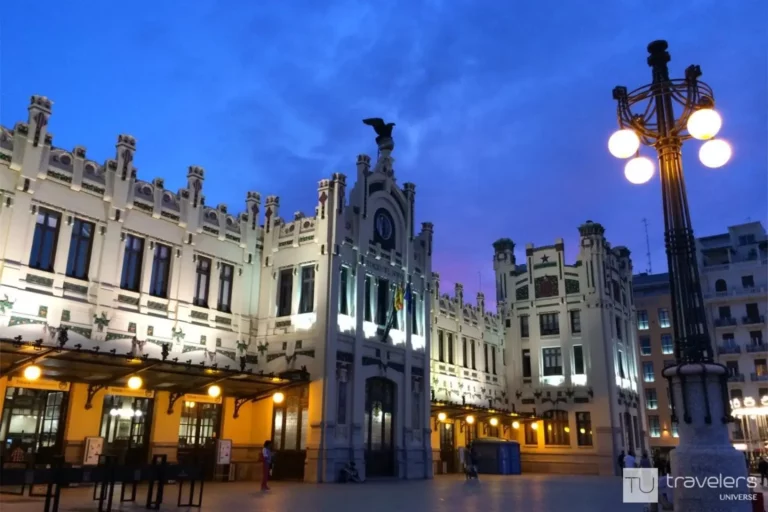
If you’re an architecture lover looking for some free things to do in Valencia, you’re in luck. Valencia is a city of gorgeous Art Nouveau buildings, beautiful wrought-iron balconies, and elegant street lamps. All you have to do is walk around Pla del Remei and Gran Via neighborhoods in the Eixample district and you’ll find stylish buildings for days.
Valencia embraced Art Nouveau amid soaring urban growth. This art movement swept across Europe just decades after the demolition of Valencia’s city wall. So it caught the city in a moment when urban development and expansion were in full swing.
As a result, a great number of Art Nouveau buildings were built. And many are still standing today.
Among the most emblematic Art Nouveau buildings in the beautiful city of Valencia are the Central Market and Colon Market . The former still serves the role of a traditional food market. While the latter was refurbished and reimagined into an elegant gastro market.
Another dazzling Art Nouveau building is the Post Office in City Hall square. I encourage you to pop inside for a minute to see its impressive glass ceiling.
Last but not least, head to the North Train Station . This is an Art Nouveau jewel inside out and a must-visit place in Valencia. If you think the facade is impressive, wait until you step inside. The main hall still preserves the old wooden ticket desks, gorgeous stained glass windows, and tiled columns.
Besides these imposing structures, you’ll also find dozens of Art Nouveau residential buildings all around the city center. I particularly like the ones on Calle de Cirilo Amorós, Gran Via del Marquéz de Túria, and the nearby streets.
9. Witness cuteness overload at Bioparc

If you visit Valencia with kids or simply love to see cute animals, you’ll love Bioparc. Personally, I’m not a big zoo fan but heard so many great things about this one that in the end I had to see it with my own eyes.
At the core of Bioparc is the concept of zoo immersion and this is precisely what makes it unique and worth visiting. The natural habitat of the animals was painstakingly recreated and cages were banned so that animals have plenty of space to move around.
Groups of animals that normally coexist in the wild share the same space and socialize. While predatory species are kept separate, yet still present in the visual space.
Due to the clever design and high standards of animal welfare, Bioparc was voted one of the top 10 zoos in the world on Tripadvisor.
If you need some extra cuteness in your life, don’t hesitate to put Bioparc on your list of must-visit places in Valencia. This zoo park is one of the coolest parks in Valencia and the next best thing to a safari visit. Plus you’ll have the chance to get close and personal with nearly a thousand animals from 100+ species in a matter of hours.
Hot tip: The lemurs are everyone’s favorite but don’t miss the elephants’ bathing sessions either.
10. Chill out in the sun at Valencia’s beaches
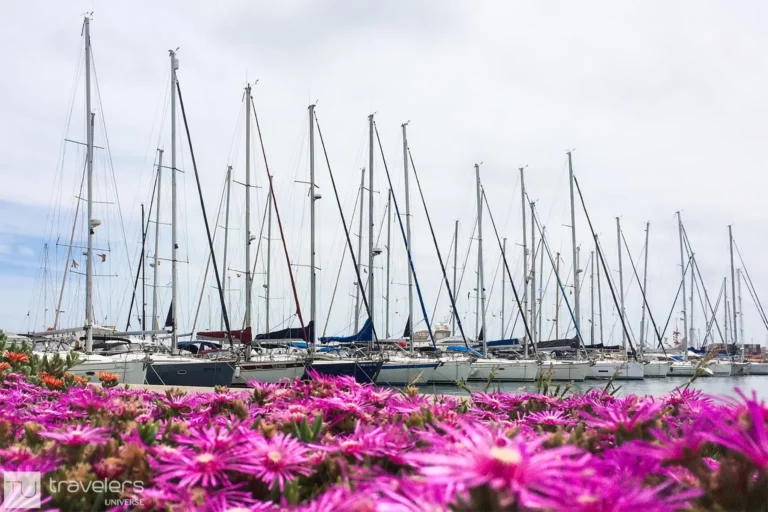
Valencia has miles upon miles of fine golden sand beaches surprisingly accessible from the city center.
The best beaches in Valencia are Playa de la Malvarrosa and Playa de Cabanyal (also known as Playa de Las Arenas). They are both wide stretches of sand and rarely feel crowded, which makes them perfect for getting a nice tan or going for a swim.
Along the palm tree-lined promenade you’ll find some really good paella restaurants as well as a street market (summer months only). If you’re in need of last-minute stuff like beach towels, swimsuits, or toys, this is the place to go.
The nearby port with all its posh yachts is my favorite and the clubs here are some of the best in Valencia. Whether you want to relax with a mojito on a terrace or dance the night away, it hardly gets any better.
If you’re looking for some cool things to do in Valencia at the beach, you can take a stand-up paddleboarding lesson, go on a full-day sailing trip, or join a sunset catamaran cruise.
Hot tip: The nearby Fabrica de Hielo is a hipster space in an old refurbished ice factory where you can have a drink and listen to live music. For a quick informal bite, go to Mercabanyal , an open-air gastro space. You really need to try the pizza with pumpkin from Sorsi e Morsi!
Other Fun Things To Do in Valencia
The above might be the most important of Valencia’s attractions, but there’s still a lot more left to be explored. Valencia is packed with fun things to do and these activities are proof of it.
11. See a mind-blowing flamenco performance
Flamenco originated in the south of Spain. It’s a UNESCO Intangible Cultural Heritage and it fuses intense lyrics and passionate dance movements accompanied by a guitar.
While not typically from Valencia, seeing a flamenco show should still be on your list of things to do. The only trouble is that there aren’t many flamenco bars or tablaos flamencos in Valencia. However, the ones that do exist, put on high-quality shows that give Seville a run for its money.
If you want to enjoy a good flamenco show in Valencia, you must stop by either La Buleria or El Toro y La Luna. Both places offer authentic flamenco shows with dinner in a typical tablao . Booking in advance is highly recommended.
Now, the former is close to Ruzafa while the latter is close to El Cabanyal and the beach. Neither one is centrally located, but La Buleria is considerably closer to the Old Town. Whichever you choose, it’s likely you’ll have to return by cab. But don’t get discouraged, because cabs in Valencia are really inexpensive.
12. Explore Valencia on two wheels
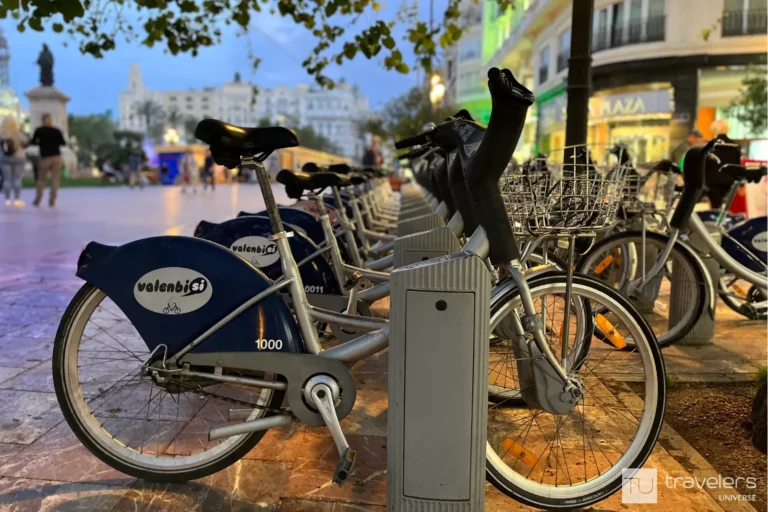
Valencia is a very health-conscious city and has an extensive network of bike lanes that connect the city center with the neighborhoods. So one fun activity I highly recommend you to try in Valencia is biking.
The urban bike-sharing scheme in Valencia is called Valenbisi. But their bikes are a bit heavy and they all have the same size. If you are traveling with kids or you simply don’t want to hassle with a heavy bike, you should consider renting your bike from a specialized shop.
My favorite biking route is through Turia Park. There are over 8 km (5 miles) of bike lanes either way and the terrain, like anywhere else in Valencia, is blissfully flat.
If you want to transform this into a cultural experience, you can join a guided bike or Segway tour. This way you’ll have a knowledgeable guide explain to you all the sights you are passing by. Plus you’ll also get to meet new people.
13. Get your kitty fix at the Botanical Garden

If you’re looking for the purrfect thing to do in Valencia, head to the Botanical Garden, close to Torres de Quarts, on the fringe of the El Carmen neighborhood.
These gardens are home to 50+ street cats and are perfect for indulging in your petting urges. The cats are well cared for by volunteers who come and feed them daily and take them to the vet when needed. They are living their best life, snuggling with the visitors, keeping the mouse population down, and looking adorable in the sun.
The gardens are beautiful and well cared for as well. They were founded in the 16th century and for a while, they were used to cultivate medicinal plants.
During the 19th century, the gardens fell into neglect, until the University of Valencia undertook the restoration project. Currently, the gardens are a wonderful place for all, with meandering paths, beautiful tropical plants, and interesting-looking buildings.
I particularly love all the ginormous palm trees and the stunning collection of succulents and cacti.
14. Discover Valencia’s fascinating street art scene
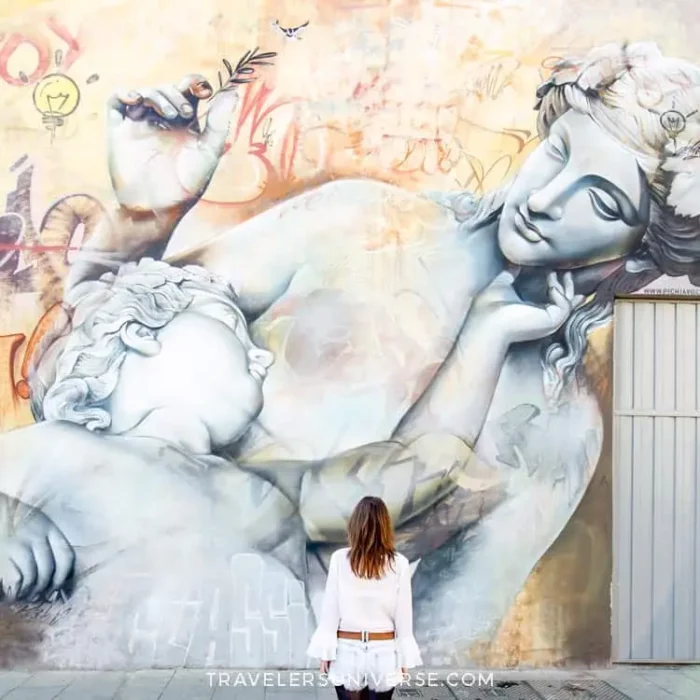
If you’re looking for alternative things to do in Valencia, you should go for a stroll through Valencia’s Old Town. Take the narrow streets and look beyond the guidebook attractions and you’ll soon discover Valencia’s fervent street art scene.
You’ll find graffiti by Escif, also known as the Spanish Banksy. The gorgeous illustrations with Japanese influences and whimsical girls of Julieta XLF (my favorite Valencian street artist). And the thought-provoking works of Blu, Cere, Pichiavo, and Barbi & Hope XLF.
Most murals adorn crumbling old buildings that still abound in this part of the city. They infuse them with new life and transform the Old Town into a giant open-air museum.
If you want to see the best murals, join a street art tour and learn how Valencia has become one of Spain’s most important urban art hubs
15. Take a deep breath and relax in Valencia’s parks
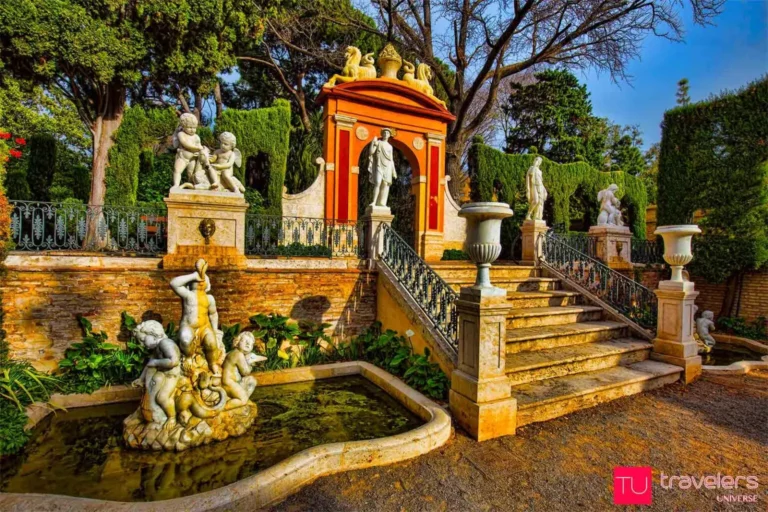
Valencia’s parks and gardens are wonderful if you want to stretch your legs, take in some vitamin D, relax with a good book or have a picnic.
Turia Park is one of the most popular green spaces in Valencia and a glorious haven running through the heart of the city. This is the largest urban garden in Spain and it stretches along the former riverbed of the River Turia, now diverted to the outskirts of the city. Here you’ll find endless footpaths, bike lanes, jogging trails, sports facilities, pine woods, rose gardens, ponds, and a fun playground with a giant Gulliver in the middle.
Viveros Gardens , also known as the Royal Gardens, with their monumental trees, are another popular choice. As is the newly opened Central Park , a stunning landscaped garden with flower beds, vegetable plots, romantic vine-covered paths, fountains, and a meadow.
Lesser known are Monforte Gardens , smaller in size, but impossibly pretty. This lush enclave boasts a wealth of gorgeous marble statues, a fish pond, cypress hedges, and a bougainvillea-covered pergola. Once a vegetable garden, they are now some of the oldest gardens in Valencia dating back to mid 19th century.
Hot tip: Take advantage of the strong local cheese and sausage culture and pack some tasty treats along with a blanket. A picnic in the park is one of the most fun things to do in Valencia on a budget and is suitable for all ages.
16. Nose around the world’s largest miniature museum
Hosted inside a gorgeous 15th-century Gothic palace, L’Iber is the world’s largest museum of historical miniatures. Today, the museum exhibits to the public almost 100,000 tin soldiers. However, the entire collection is estimated at 1 million pieces.
Throughout the museum, there are countless replicas of famous battles that shaped the face of the earth from Prehistory to the present. On a lighter note, the museum has a whole room dedicated to fashion and even Star Wars related exhibits.
The visit can be fun for the whole family. L’Iber is a great place to visit in Valencia on a rainy day (not that it rains very often!) since it’ll keep you busy for a good couple of hours.
The museum is located in El Carmen, not far from the Cathedral. It’s a quirky attraction and a little different from everything else you’ll do in Valencia, so why not give it a try?
17. See the artist’s studio at the Benlliure House-Museum
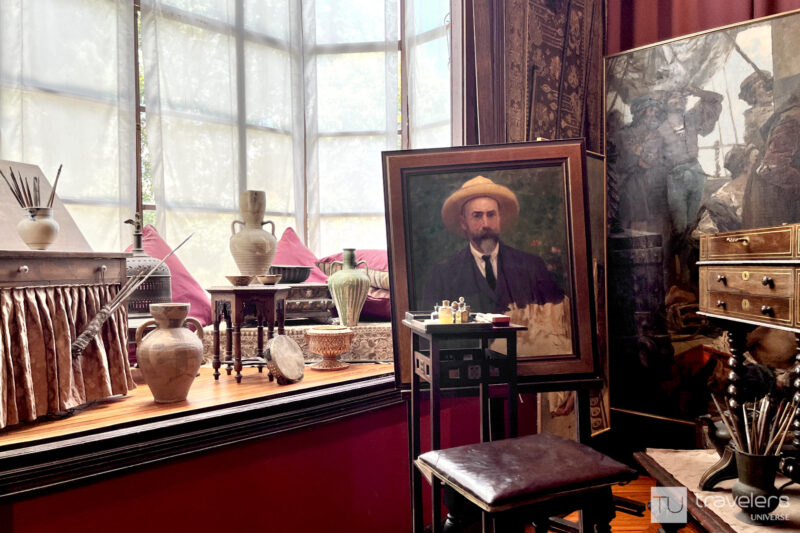
It’s not often that you can visit a 19th-century household belonging to the local middle class. So if you’re curious in the slightest, you should really visit the Benlliure House Museum.
The Benlliures were a family of talented Valencian artists (painters and sculptors). Their former house, a short walk from the Serranos Towers, tells the fascinating tale of everyday life in the Benlliure home.
This is one of my favorite places to visit in Valencia, in part due to the gorgeous workshop of Jose Benlliure. The workshop is packed with paintings and objects he collected throughout his life and has an amazing atmosphere.
My second favorite thing to do here is to relax in the beautiful gardens, so skilfully concealed from the noise of the street. In a city where private gardens aren’t really a thing, this is quite a fascinating discovery.
The house is decorated with period furniture, as well as paintings and sculptures by the Benlliures. The upper floors host temporary exhibitions.
18. Step into the past at the Archaeological Museum
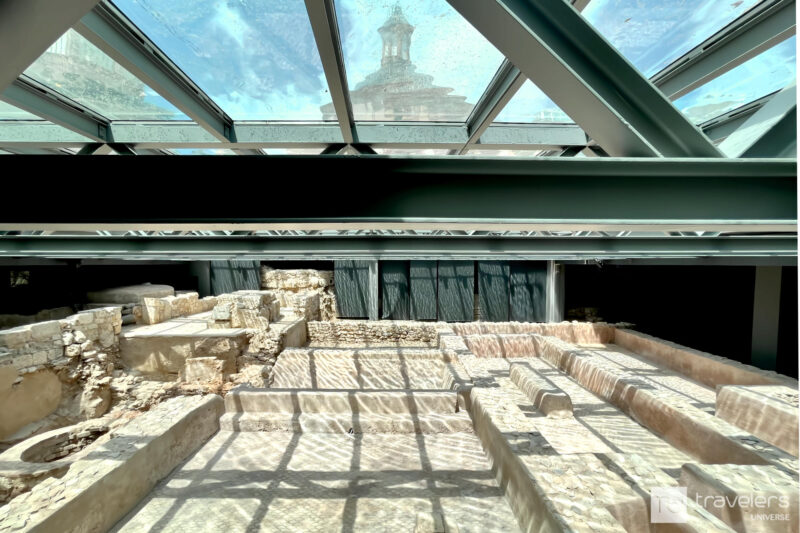
I know, I know, archaeological museums aren’t usually fun. But Almoina is not your average archaeological museum. You won’t find boring exhibits and broken pottery here. Instead, you’ll be allowed to wander the streets of Valencia as it was two millennia ago.
The whole museum is well below street level and the remains of the Roman city ( Valentia ) are still in situ.
You can see wells and fragments of the city’s first buildings, a temple, and the 2nd-century thermal baths. Plus you can stand at the crossroads of Via Augusta and Decumano Máximo. How cool is that!
One of the interesting (modern) features of the museum is the glass ceiling with a thin layer of water that casts interesting shadows over the ruins. Although the guided visits are in Spanish only, walking the streets of Roman Valencia can still be a lot of fun.
19. Browse some cool boutiques

Being Spain’s third-largest city, Valencia is, as you’d expect, a great shopping destination. And with an increasing number of pedestrian-only streets, it’s only getting better.
For clothes and accessories head to Calle Colón . This is Valencia’s main shopping artery with several El Corte Ingles department stores and many fast fashion brands. If, on the other hand, you’d like a bit more variety, Calle San Vicente (between Plaza de España and Plaza de la Reina) might be more down your alley.
Looking to make a difference? Then find your way to El Carmen or Ruzafa neighborhoods. Here you’ll find many small boutiques and up-and-coming Valencian designers, as well as thrift stores and souvenir shops run by local artists.
20. Witness the craziness of Las Fallas
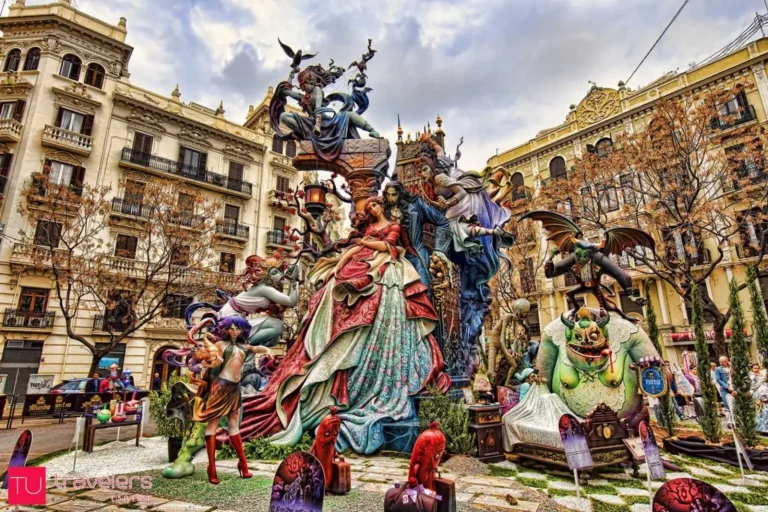
From the 1st to the 19th of March, Valencia celebrates the Las Fallas festival. Attending it is one of the most fun, crazy and unusual things to do in Valencia.
Las Fallas is possibly the largest street party in Europe. It’s also a UNESCO Intangible Cultural Heritage of Humanity. It combines tradition, satire, music, creativity, and a whole lot o food.
During Las Fallas, time is measured in cups of hot chocolate, cones of churros , and other traditional Las Fallas foods. There are firecracker shows, fire parades, huge cardboard puppets, and a sea of locals in traditional attire.
As if all this wasn’t extravagant enough, 700+ bonfires are lit up on the last day of the festival at midnight throughout the city.
Yeah, I know, that’s a lot to wrap your head around. That’s why I wrote a separate post about Las Fallas festival. But seriously, the best you can do is just hop on a flight and see it for yourself.
If you visit Valencia at any other time of the year, you can check out the Fallas Museum and see some of the cardboard puppets that were spared throughout the years. This museum is close to the City of Arts and Sciences and while it’s not the same as experiencing Las Fallas in person, it will still give you an idea of the mastery involved.
And if you’d like to attend other fiestas as well, check out this list of the best festivals in Valencia .
Foodie Things To Do in Valencia
Valencia is not only the birthplace of the world-famous paella but also home to countless bars, coffee shops, and restaurants serving lesser-known delicacies. Besides visiting landmarks and relaxing on the beach, eating your way around the city can be equally fun.
21. Feast on paella and master the art of cooking it yourself
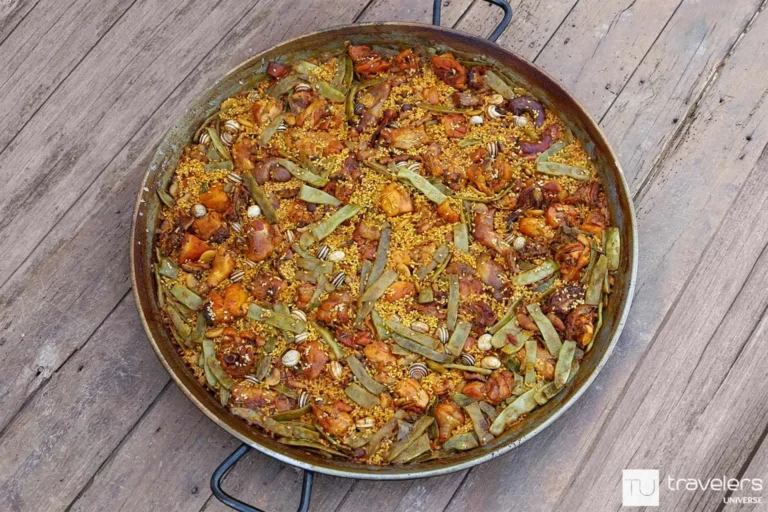
Paella is possibly the best-known Spanish dish in the world. Yet paella is not a staple food throughout Spain, but a regional dish from Valencia.
Obviously, this means paella should be at the top of your list of foods to eat in Valencia. So the million-dollar question is, where?
Sadly, exquisite paella isn’t that easy to find. But don’t fret. I’ve already put together a list of restaurants that serve the best paella in Valencia . As a rule of thumb, most beachside restaurants and eateries around Albufera know what they are doing.
Aside from feasting on paella and learning how to recognize one that is worthy of your time and money (see these paella fun facts to learn more) I also recommend taking a paella cooking class while in Valencia.
Cooking classes are always fun and a surefire way to impress friends and family upon your return home. But in this particular case, they are also an opportunity to demystify what is and what isn’t an authentic paella Valenciana .
Some paella cooking classes start with a visit to a local market in the company of a chef and is followed by a fun paella cooking class. At the end of the workshop, you’ll have the opportunity to enjoy the fruits of your labor.
22. Go on a tapas tour

A night out in Valencia often involves tapas accompanied by local craft beer or wine. Tapas are small portions of food and anything can be served tapas-style. This means you can try various dishes in one meal and explore the local cuisine more. See what are tapas throughout Spain (the concept changes from one region to the next).
Ir de tapas is a custom embraced all over Spain and one of the best things to do in Valencia at night. However, while in Madrid and Seville , you’d normally order one tapa with each drink and then move to the next bar, in Valencia the locals like to order several tapas in one place. The tapas are then placed in the middle of the table and shared between all diners.
Tapas in Valencia can be anything from a ham and cheese platter to deep-fried cuttlefish and esgarraet (a cured cod dish). And from pimientos de Padrón (small, green peppers) to patatas bravas and croquettes.
Montaditos (or pintxos ), typical from the San Sebastian region in the north of Spain, have also taken Valencia by storm. And some restaurants even serve fusion tapas.
I do encourage you to try as many different tapas and tapas bars while visiting Valencia. However, if you’re pressed for time, I recommend you join a food tour. Food tours are the best way to indulge in the local cuisine, eliminate guessing and avoid tourist traps.
The best food tour in Valencia right now combines a guided visit to the City of Arts and Sciences with a 10-course meal and wine tasting on the highest terrace in Valencia.
23. Eat your way around Mercado Central
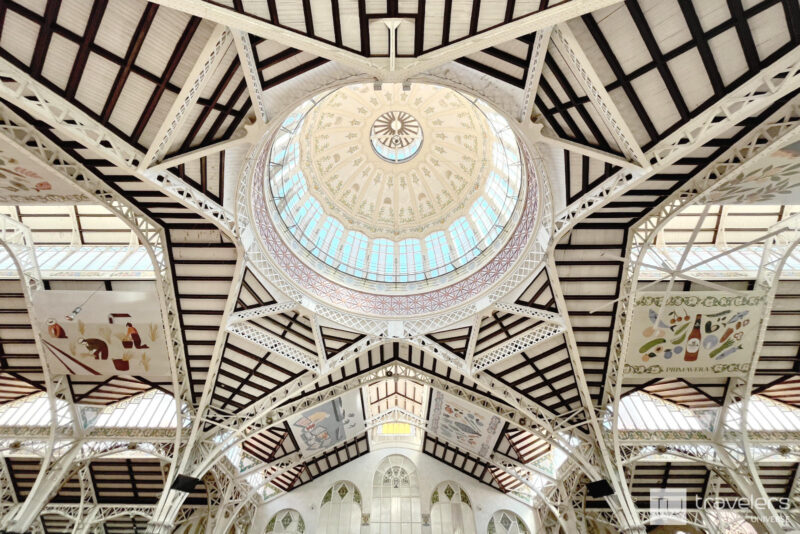
No Valencia travel guide is complete without a mention of Mercado Central (Central Market). This magnificent Art Nouveau building is foodie heaven and strolling along its alleys is a must for all food and architecture enthusiasts.
Stop by one of the many colorful stalls and grab some fresh fruits from the nearby orchards. Walk along rows of hanging hams and an ocean of fresh seafood. Stop by a bakery. And indulge in the great selection of aged cheeses and olives available.
Last but not least, have a coffee break at Retrogusto . And stop by Central Bar by Ricard Camarena (a Michelin-starred local chef) for delicious tapas and sandwiches.
The market is just perfect for people-watching. Take a moment to listen to the murmur of voices marking the rhythm of daily life. And let yourself be engulfed by the hustle and bustle of this thriving place.
Valencia’s Mercado Central is the largest covered food market in Europe and my favorite food market in Spain. Plus it’s super accessible and within walking distance from other must-visit places, like the Cathedral and the Silk Exchange.
24. Indulge in a glass of horchata at Mercado de Colon
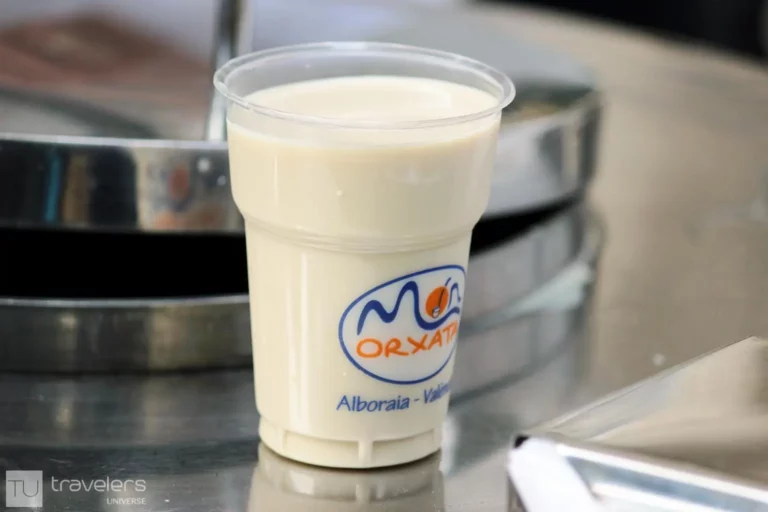
Horchata is a refreshing local drink made with chufa aka tigernuts (a tuber with hints of almond and hazelnut that grows in the fields of Alboraya, north of Valencia). It is sweet, nutritious, vegan-friendly, and the perfect pick-me-up after a long day of sightseeing.
On a hot summer afternoon, you can spot many locals sipping horchata on a terrace and it’s safe to say that this drink is a bit of a local obsession.
Horchata can be enjoyed in cafés, specialist horchaterias , as well as small stands around the Old Town. But my favorite place is Mercado de Colon, a magnificent iron and brick building.
In terms of relaxing things to do in Valencia, the modernist Mercado de Colon ticks all the boxes.
This lively gastro market is packed with cozy cafés, bars, elegant terraces, and fancy restaurants. At the lower level, you can still find a small fresh food market while the upper level hosts temporary craft fairs.
Here you’ll find Suc de Lluna , one of the best horchaterías in Valencia. It’s also one of the few if not the only place that serves sugar-free horchata (you can add sugar to taste).
For fine-dinning, stop by Habitual by Ricard Camarena (one of Valencia’s most celebrated chefs).
25. Enjoy a refreshing agua de Valencia cocktail
The sweet Valencian oranges are famous worldwide but the locals really know how to make good use of them at any hour of the day.
In Valencia, oranges are used to prepare homemade salad dressings and cakes. Served as freshly squeezed juice for breakfast. And as one of the main ingredients in agua de Valencia .
Granted, none of the ingredients of this refreshing drink is agua (water), but it’s a catchy name that always makes me smile. Instead, this tasty cocktail is made with cava (local sparkling wine), orange juice, vodka, and gin.
My favorite places for sipping agua de Valencia are Café de las Horas , Café Madrid, and Café Infanta in the Old Town. But you’ll find it on the menu of many bars around the city and it’s a good excuse to relax on a terrace in the late afternoon.
You can also buy bottled agua de Valencia from select shops, many of which are located inside or around Mercado Central. This can be a great souvenir for somebody at home (see my favorite souvenir shops in Valencia ). But since you’re in Valencia, do yourself a favor and actually order it at the bar.
Things To Do Near Valencia
Looking for even more things to do while in Valencia? You can discover the area by renting a car, taking the train, or joining a tour. Here are a few ideas:
- Albufera. This is one of the largest wetlands on the Iberian peninsula and the birthplace of paella. You can plan your day around strolling through the rice fields, going on a boat ride, and eating delicious paella.
- Utiel-Requena wine country. These two inland towns are known for their millennia-old wine-making tradition and man-made underground caves. However, visiting them isn’t the easiest thing to do by public transport.
- Sierra Calderona mountains. Wanna escape into nature for a few hours? This natural park not far north is one of the most representative Valencian landscapes. The rough terrain might not be suited for a rental car.
Want even more ideas? Check out these fun day trips from Valencia .
What to do in Valencia when it rains?
Valencia has over 300 days of sunshine per year, but if you happen to visit on one of those rainy days, brace yourself, because in Valencia, when it rains, it pours. So the best thing to do is plan some indoor activities, such as:
- Visit some museums – Oceanographic, Museo de Bellas Artes (fine arts museum), IVAM (modern art museum), Museo de la Seda (silk museum, different from La Lonja), and Principe Felipe Science Museum are all large and great options for a rainy day
- Go shopping at the mall – Aqua, El Saler, and Novo Centro are all great options. El Corte Inglés has several department stores in Valencia as well.
- Watch a flamenco show – La Bulería, Palosanto (close to the beach), El Toro y La Luna, and La Linterna (most central) are all great options
- Catch a concert – options range from a classical music concert at Palau de la Musica or an opera at the Palau de Les Arts Reina Sofia to enjoying some live music in a bar
- Take a paella cooking class – check out this paella cooking class that includes a visit to a local market as well as a 3-course meal
What are the most popular things to do in Valencia with kids?
Valencia is a very kid-friendly city and you’ll have no trouble keeping the little ones entertained. Among the most popular things to do with kids are:
- A visit to the City of Arts and Sciences, especially the Oceanographic (the largest aquarium in Europe) and the Principe Felipe Science Museum (which is wonderfully educational with plenty of interactive exhibits)
- Spending the day at Bioparc, a zoo safari where animals are allowed to roam freely
- Check out Gulliver Park (in the old Turia riverbed). This one-of-a-kind playground features a large-scale Gulliver that kids can climb. It has recently undergone extensive renovations
- Older kids might enjoy exploring Valencia by segway or joining a bike tour
- Tired of lugging the kids around? Take the hop-on-hop-off bus tour and explore Valencia the easy way
- Visit L’Iber, the largest tin soldier museum in the world
- Spend the day at the beach

What are the best things to do in Valencia for free?
Valencia is quite budget-friendly when compared to other European cities and even with ever-popular Spanish cities such as Madrid and Barcelona. The top things to do in Valencia for free are:
- Discover the City of Arts and Sciences. This futuristic complex is free to walk around. You’ll only have to pay if you decide to enter the attractions.
- Stroll along the former Turia riverbed – this huge park crosses the whole city. All the other parks in Valencia, except for the Botanical Garden, are free to visit as well
- Visit Museo de Bellas Artes and Centre del Carmen – free entry year-round. Most other museums in Valencia are also free on Sunday morning
- Explore Barrio del Carmen and Barrio de Ruzafa, two of the most interesting neighborhoods in Valencia. El Carmen also has plenty of street art to see
- Wander around Valencia’s markets
What are the top attractions to visit in Valencia?
Valencia has some fantastic attractions, but some of them really hit it out of the ballpark! The top attractions in Valencia are:
- The City of Arts and Sciences – you really cannot miss this one
- La Lonja de la Seda – UNESCO World Heritage Site
- Las Fallas – Valencia’s most popular festival and a UNESCO Intangible Cultural Heritage of Humanity
- The Cathedral – it’s believed to host the Holy Grail
- The Central Market – the largest covered food market in Europe hosted in a fantastic Art Nouveau building
What to do in Valencia in 1 day?
If you only have 1 day in Valencia (although I really recommend spending 3 days in Valencia ), here’s what I recommend you to do, eat and see:
- Morning – explore the Old Town, including the Central Market and La Lonja. To better understand the city, join an inexpensive guided walking tour of the historic center. Alternatively, you can book a custom tour with a local (it includes hotel pick-up) and create your own itinerary. If exploring a city on two wheels is more your thing, this super popular bike tour packs a lot of attractions, from the Old Town all the way to the modern City of Arts and Sciences
- Lunch – have paella in one of these restaurants
- Afternoon – visit the City of Arts and Sciences. The most popular attraction here is the Oceanographic. If you’d like to learn more about this complex, I highly recommend this City of Arts and Sciences tour because it ends up with a unique tapas and wine-tasting experience on one of the best rooftop terraces in Valencia, which can be a nice way to end your day in Valencia
Read more: 25 Valencia fun facts you probably didn’t know
LIKE THIS ARTICLE ABOUT THE TOP THINGS TO DO IN VALENCIA? PIN IT!
If you’ve found this article about what to do in Valencia interesting, please consider sharing it with your friends. It will mean the world to me and it will help me keep the lights on.
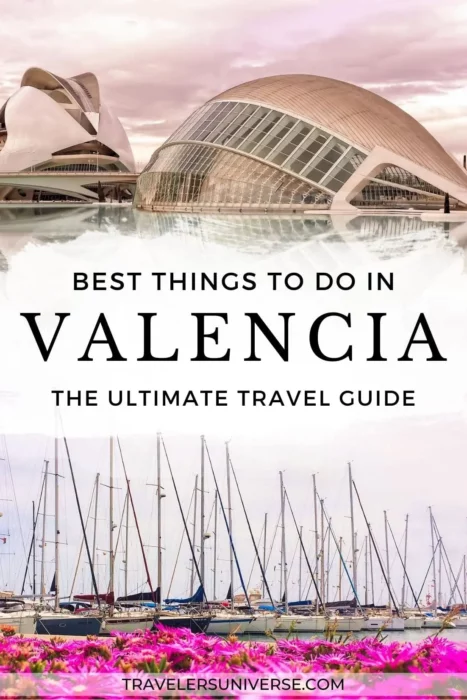
Plan Your Next Trip To Valencia With Our Guides
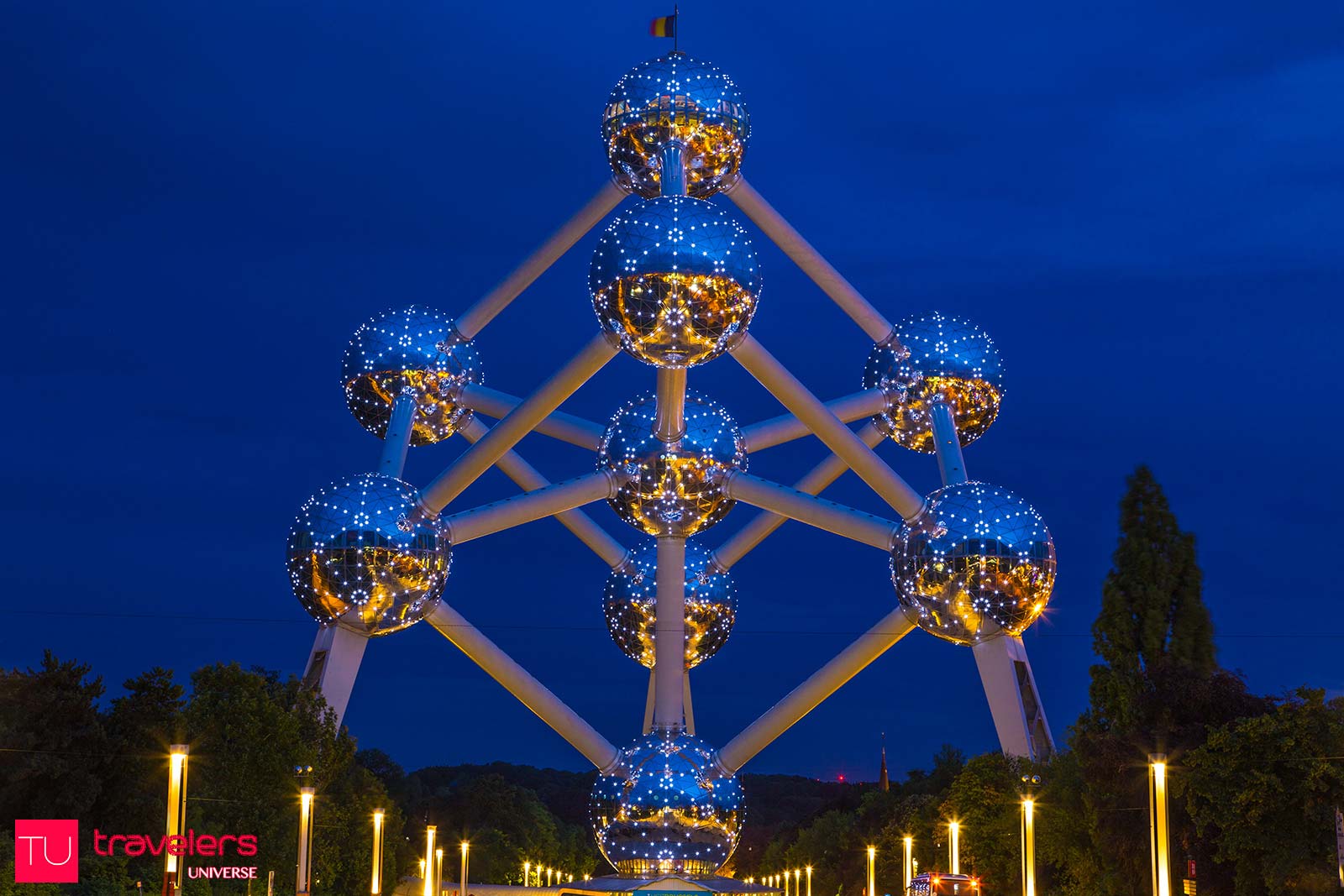
11 Best Things to Do in Brussels Besides Eating Waffles
Find out the top must-see places and the best things to do in Brussels, from drinking beer and eating waffles to going on a shopping spree and visiting Art Nouveau architecture.
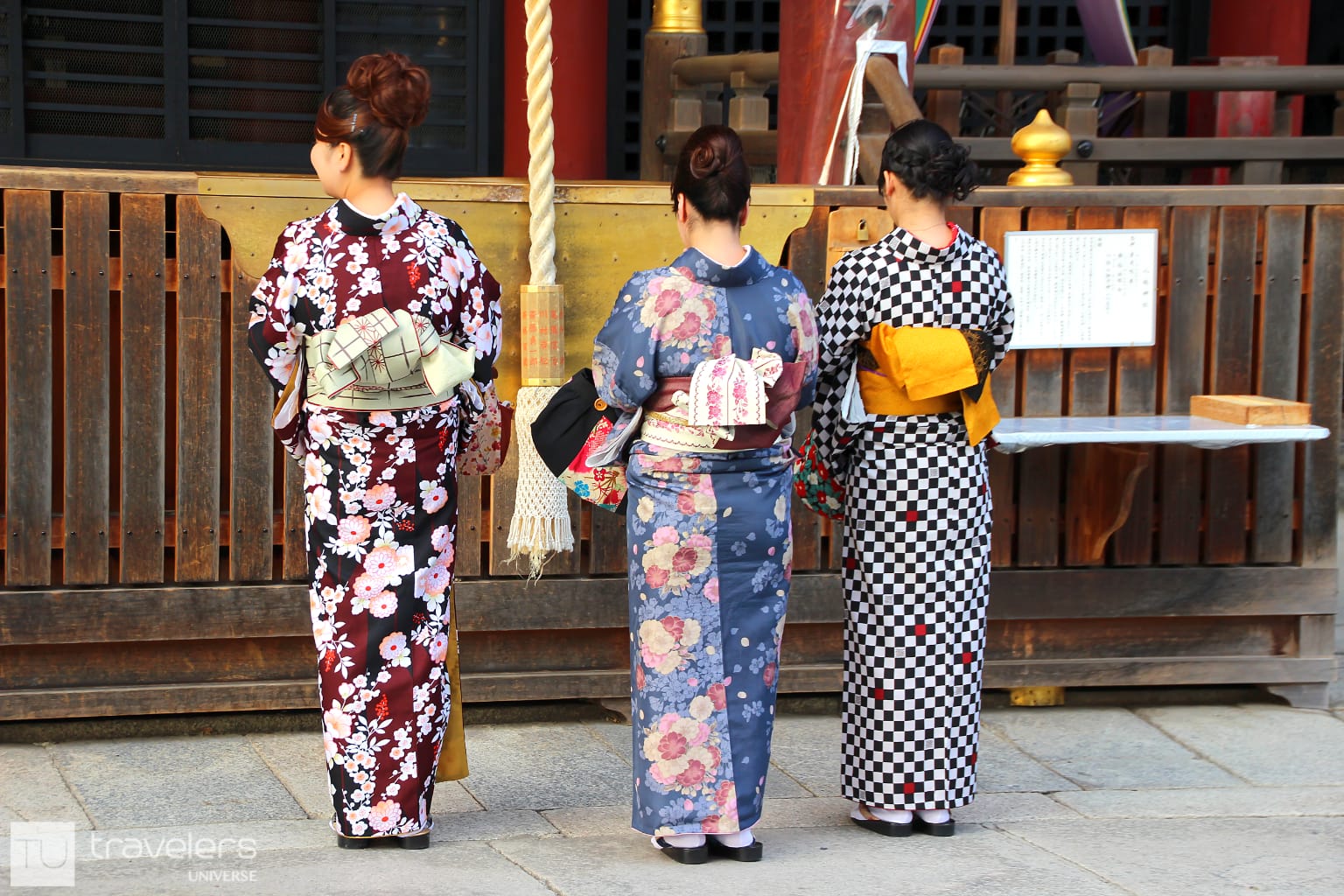
20 Things To Do In Japan That You Can’t Do Anywhere Else
From maid cafés and robot shows to the world’s oldest hotel, this list of things to do in Japan will help you plan an unforgettable trip.

45 Best Things to Do in London. The Ultimate Bucket List (2022)
Whether this is your first time visiting London or you’ve lost track of all the times you set foot in this fascinating city, here’s an epic bucket list to help you plan your next trip, including the best things to do and the best places to visit in London.
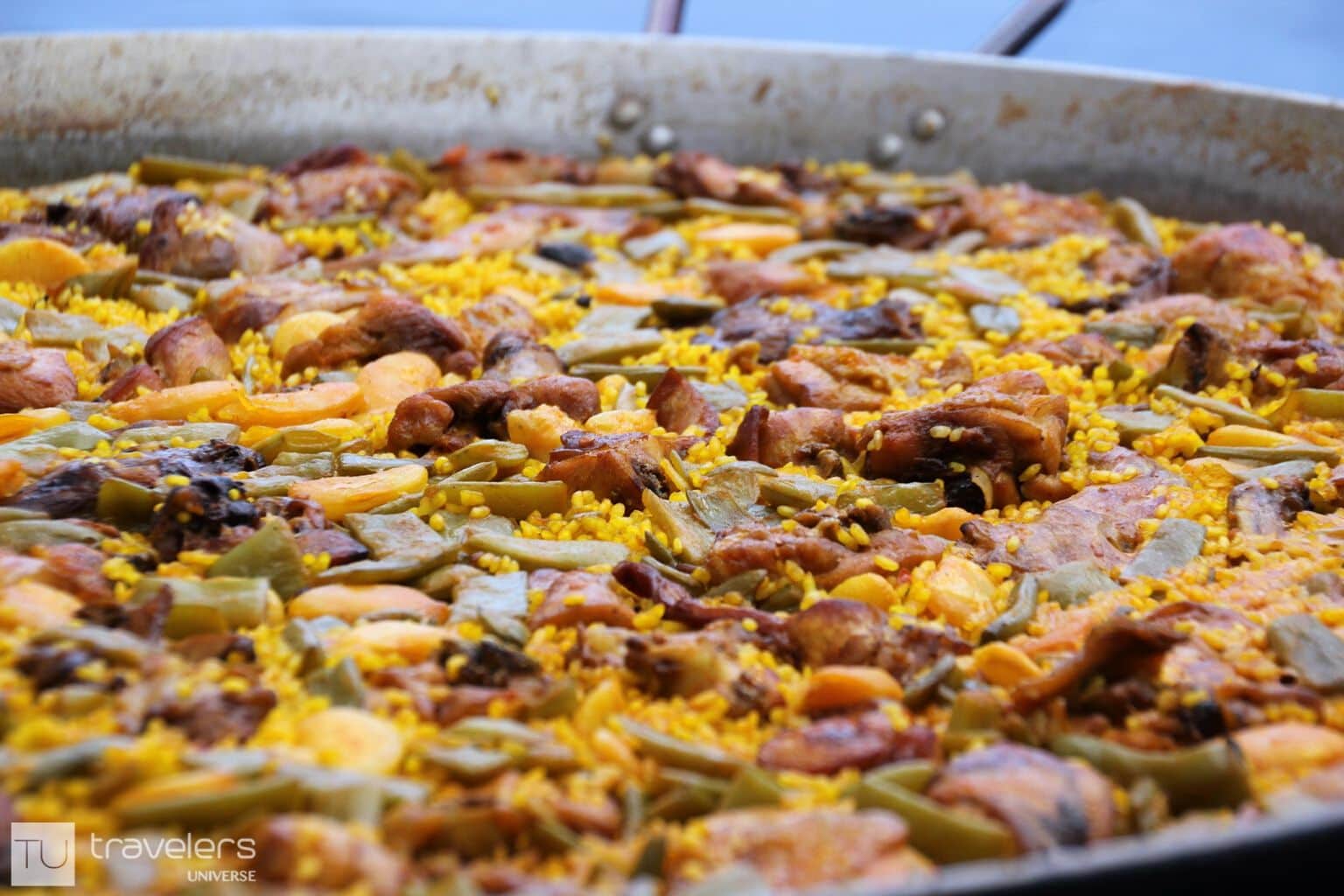
Paella Facts: 20 Things to Know Before You Order
Read these fun paella facts so you can spot the good stuff before everyone else.

12 Typical Valencian Foods: What & Where To Eat in Valencia
Don’t fall for the tourist traps while searching for the best food in Valencia. From local dishes to authentic restaurants, this foodie guide has you covered.

10 Best Breakfast and Brunch Places in Valencia
Discover where to have breakfast and brunch in Valencia, from eggs Benedict and bocadillos to the best cakes and coffee in town.

29+ AMAZING Things To Do In Valencia, Spain
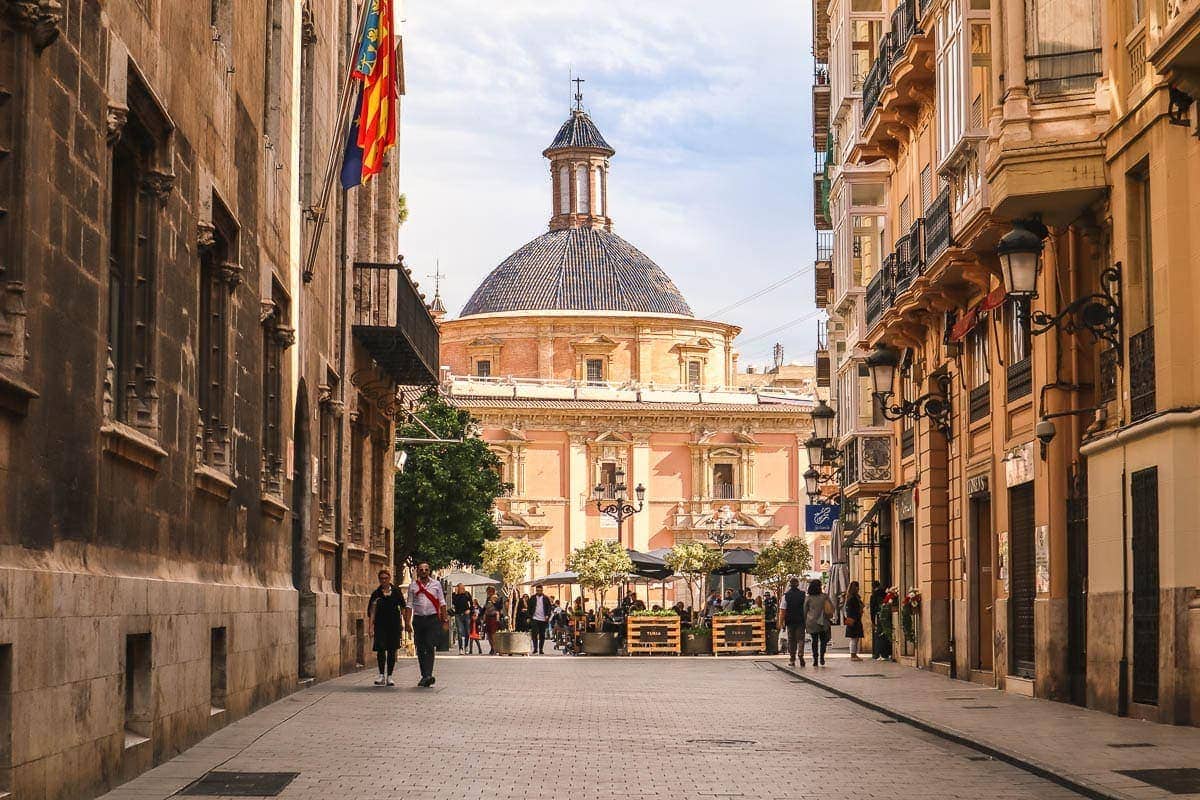
From sightseeing in the historic city centre, to seeking out the best views, visiting the beach and tracking down the best food, these are the best things to do in Valencia, Spain.
What’s the best way to plan the ultimate trip to Valencia? RESEARCH! Before I jetted off on my recent trip, I spent a lot of time looking up the key sights, asking you guys on Instagram and Twitter for recommendations, and adding little stars to my Google Map of the city, with all the places I wanted to visit.
BUT, I was also keen to leave time to wander the streets and explore with my eyes. Something I did each day, and loved.
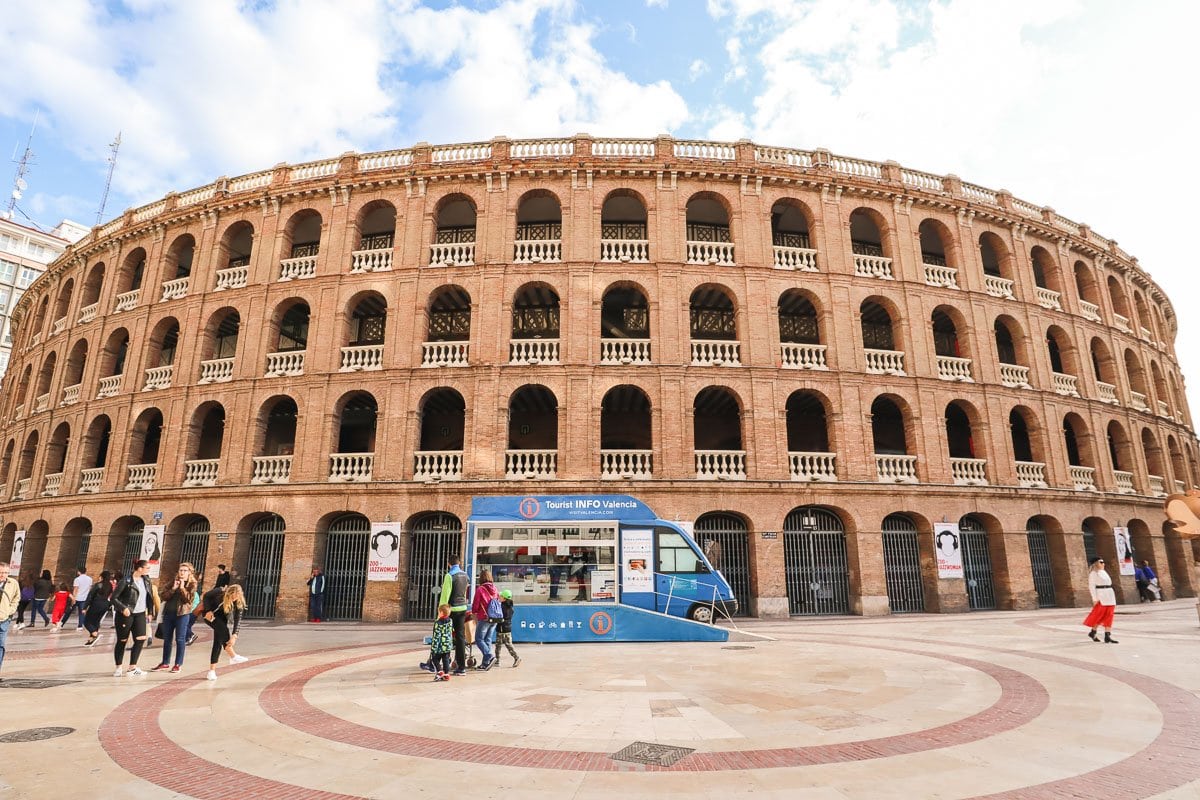
The masterplan was the return home and be able to put together an incredible guide packed full of awesome things to do in Valencia. Everything from historic landmarks and key sights, to off-the-beaten-track hidden gems. You can’t visit the city without seeing the ancient cathedral, but it could be easy to miss some of the eclectic street art that is tucked away in neighbourhoods a short walk away.
So time to put pen to paper, or at least tap away on my keyboard, and share all the places I loved, the spots you shouldn’t miss, and a few thoughts on how to make the most of your city break in Valencia. I’ve divided this list into general sightseeing and foodie experiences, as I feel the food needs a special mention!
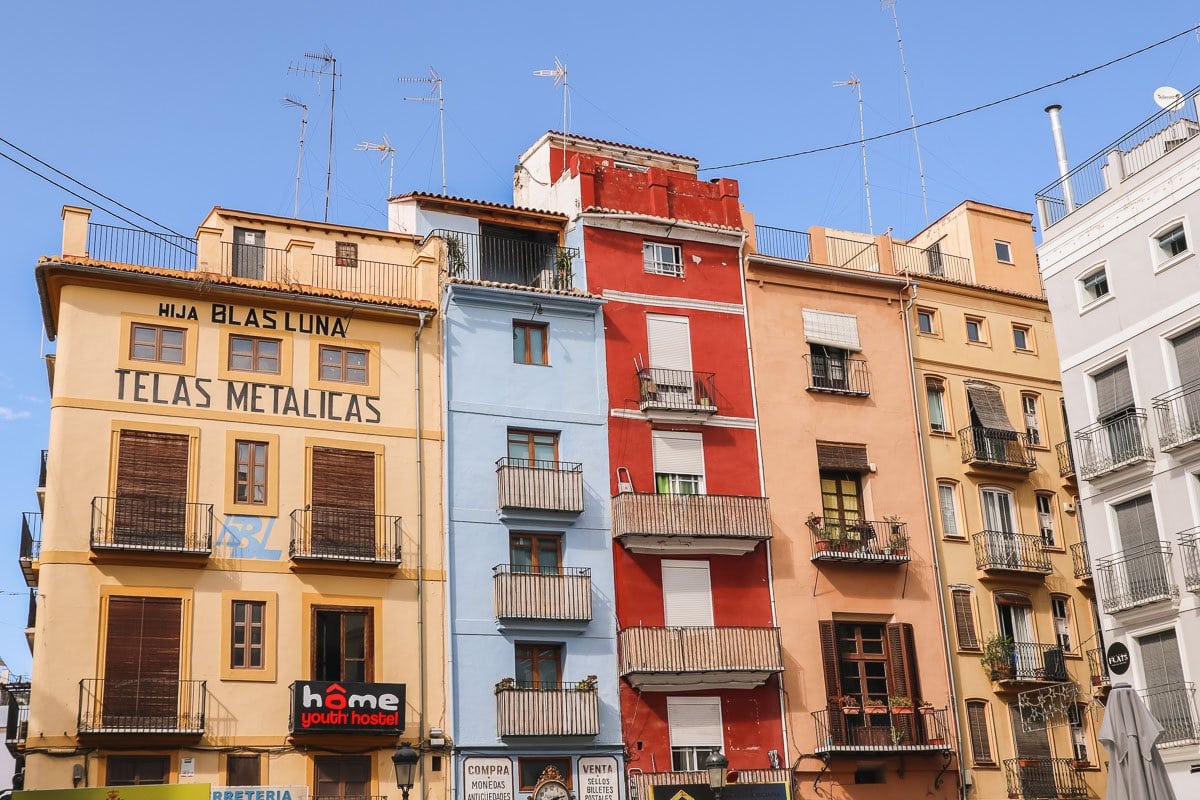
I’d recommend picking up a Valencia Tourist Card for the duration of your trip. They’re very reasonable, include entry to many of the city’s attractions (including Torres de Serranos), discounts and freebies at local restaurants and offer complimentary transport (including to the airport). You can read about why I think it’s worth it in my post: Is it worth buying a Valencia Tourist Card .
Planning your trip to Valencia? Here are a few quick highlights:

Top Things To Do In Valencia, Spain
General sightseeing in valencia, visit valencia cathedral and el miguelete.
Valencia’s impressive cathedral is the most prominent landmark in the old town. Its origins go back to the 13 th Century, but you’ll find an interesting mix of architecture added at various times in history, mostly between 13 th – 15 th Centuries.
The Cathedral’s interior is interesting too, and features a famous painting by Goya and a chalice known as the Santo Caliz, which is said to be the famous Holy Grail. Tickets to enter inside Valencia Cathedral cost 7€ but you do get a discount with the Valencia Tourist Card .
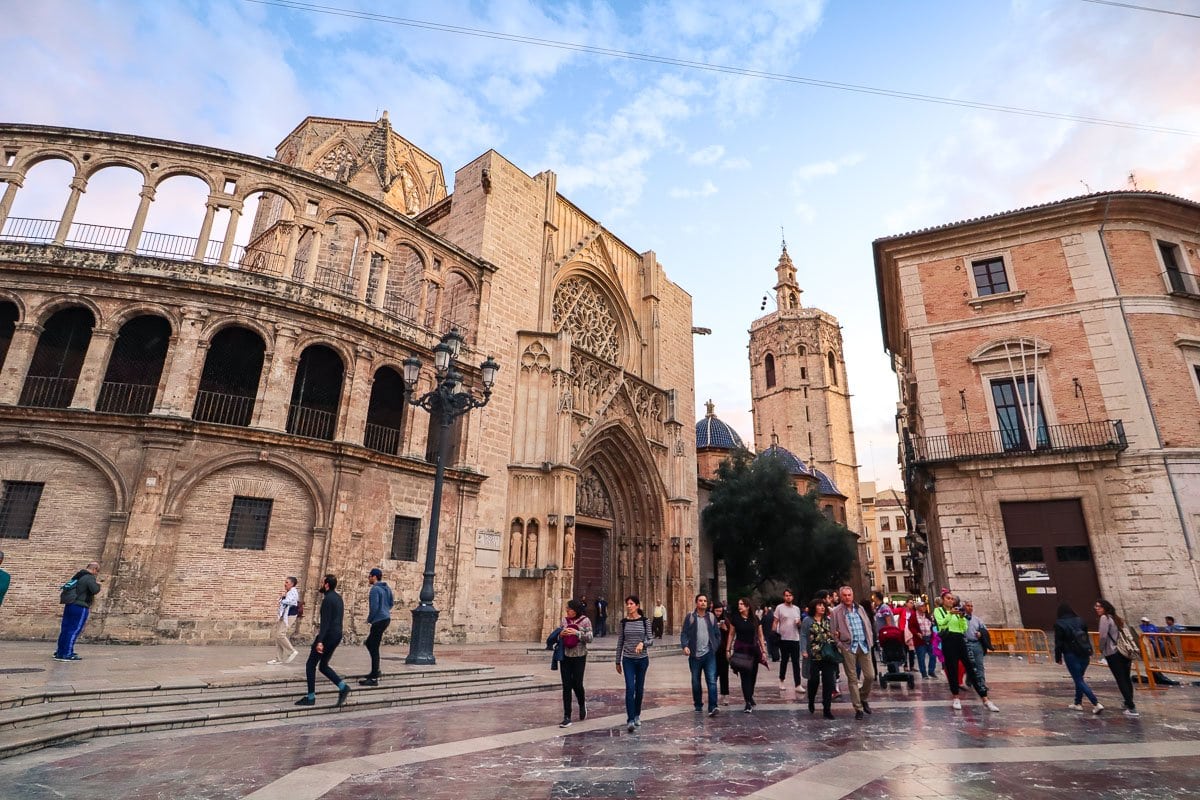
The highlight for me was the climb up the 167 ft baroque bell tower known as El Miguelete. It costs 2€ for a ticket, and isn’t for the faint hearted as you’ll need to climb 207 steps to reach the top. The views are well worth it though, and along with Torres De Serranos, I’d rate this as the place with best view in Valencia .
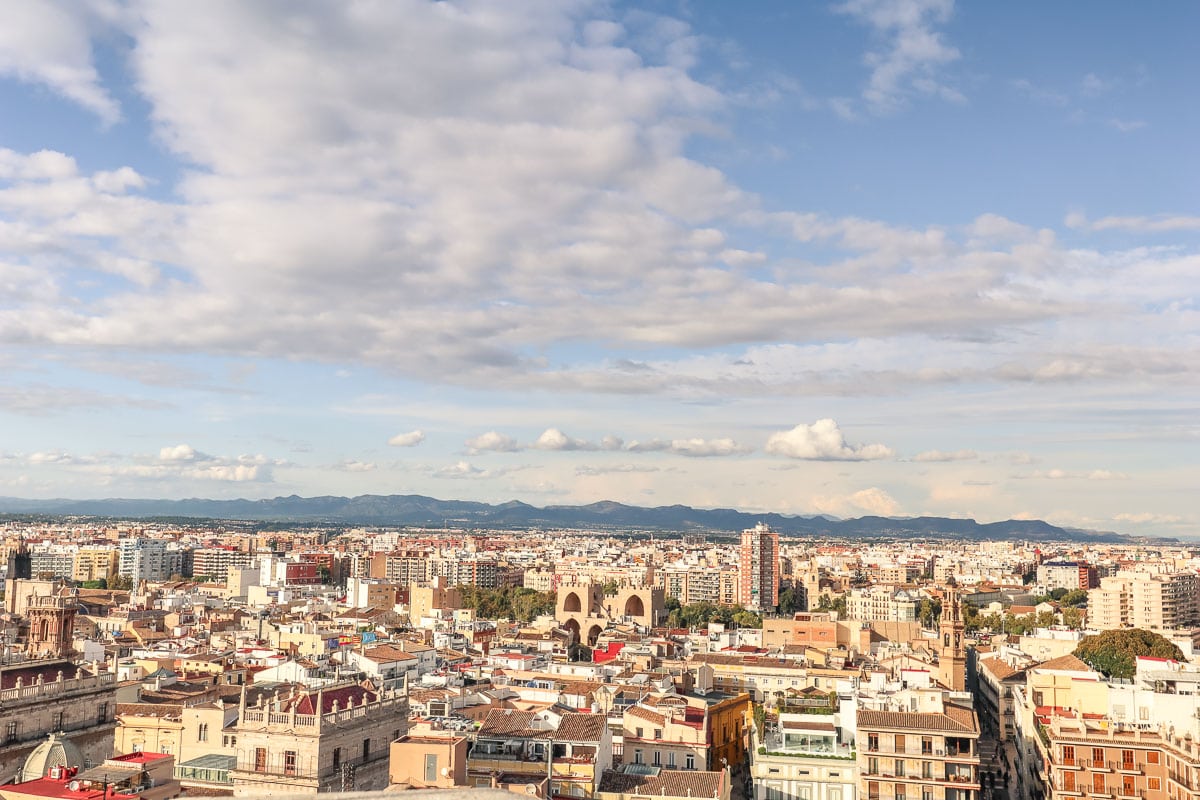
Explore Jardín del Turia
A lot of people recommended I visit the Turia Gardens during my trip to Valencia, and when I saw how vast they were, I could see that wouldn’t be a problem! They stretch a whopping 9 km through the city, and include lots of areas of green space, sports pitches, footpaths and landscaped gardens.
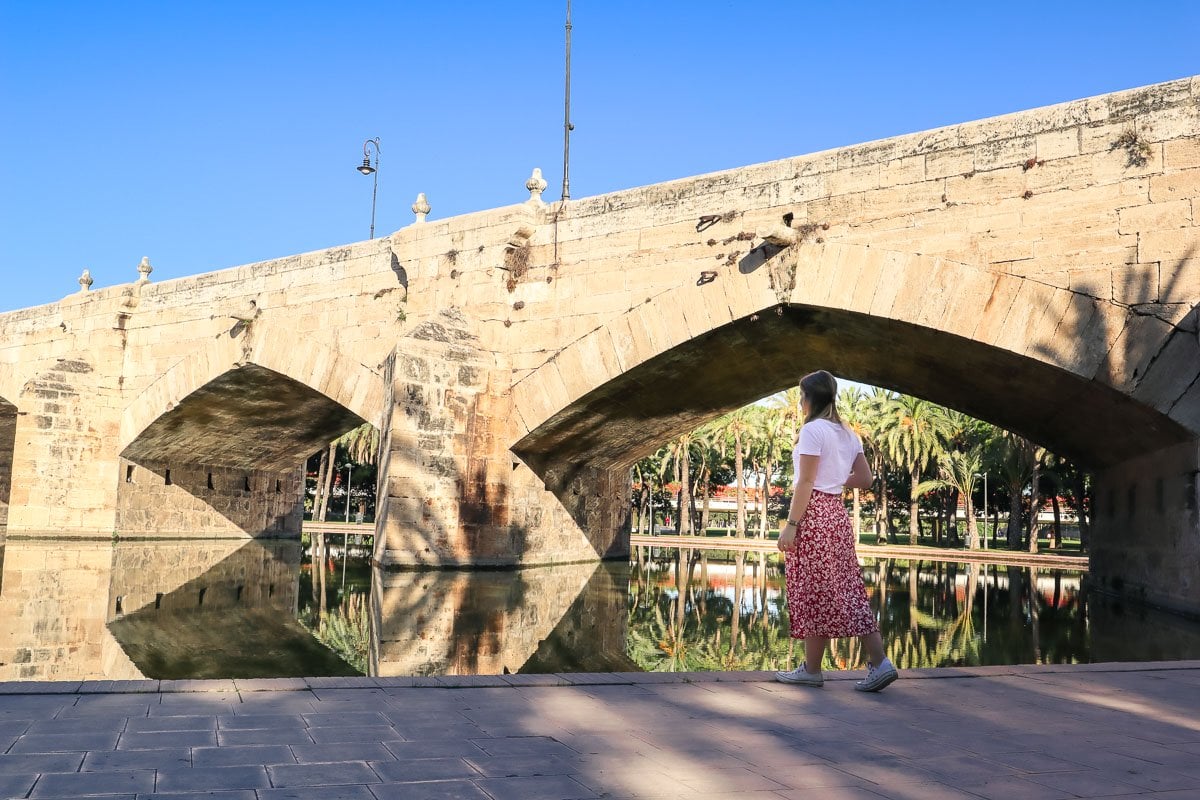
I visited different areas of the gardens throughout my trip. When I walked under a huge bridge, which looked rather out of place crossing a park, I had to find out more. It turns out that the history of these gardens is a fascinating one! In the 1950s, after serious flooding, the river that once flowed through the city was diverted, leaving this huge area behind. Gradually the gardens were developed by architects, landscape gardeners and urban planners, who created several areas each with their own different characteristics.
If you’re happy on two wheels, I’d recommend going on a bike tour, or hiring a bike to explore the gardens. From palm trees and ponds to fountains, playgrounds and exquisite bridges, there’s plenty to see!
Take your kids to Parque Gulliver
Telling you about the Jardín del Turia leads me nicely onto this bizarre spot – a large playground created around a 70m long figure of Gulliver from Gulliver’s Travels. In the book, Gulliver is taken captive by miniature people, a little like the way the kids run all over the figure in this innovative playground!
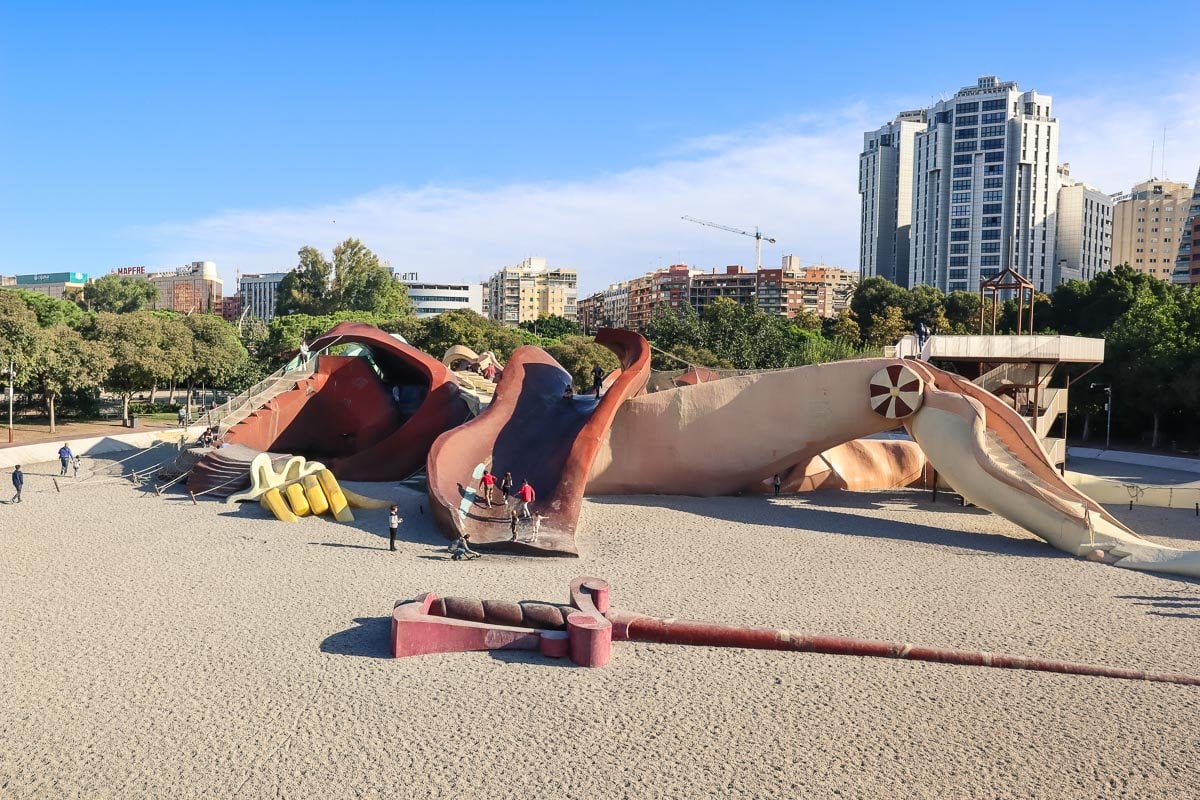
This is one of the best things to do in Valencia with kids.… there are slides, climbing frames, ropes, stairs, nets and more. It’s perfect for your little ones!
Check out Valencia’s street art
I’d heard there was some pretty impressive street art in Valencia, but was amazed by how colourful and creative it was. There are huge murals dotted around the city, with the highest concentration being in the El Carmen district, just north of the historical centre. It’s the area I chose to stay in on my trip, and I loved exploring the streets close by.
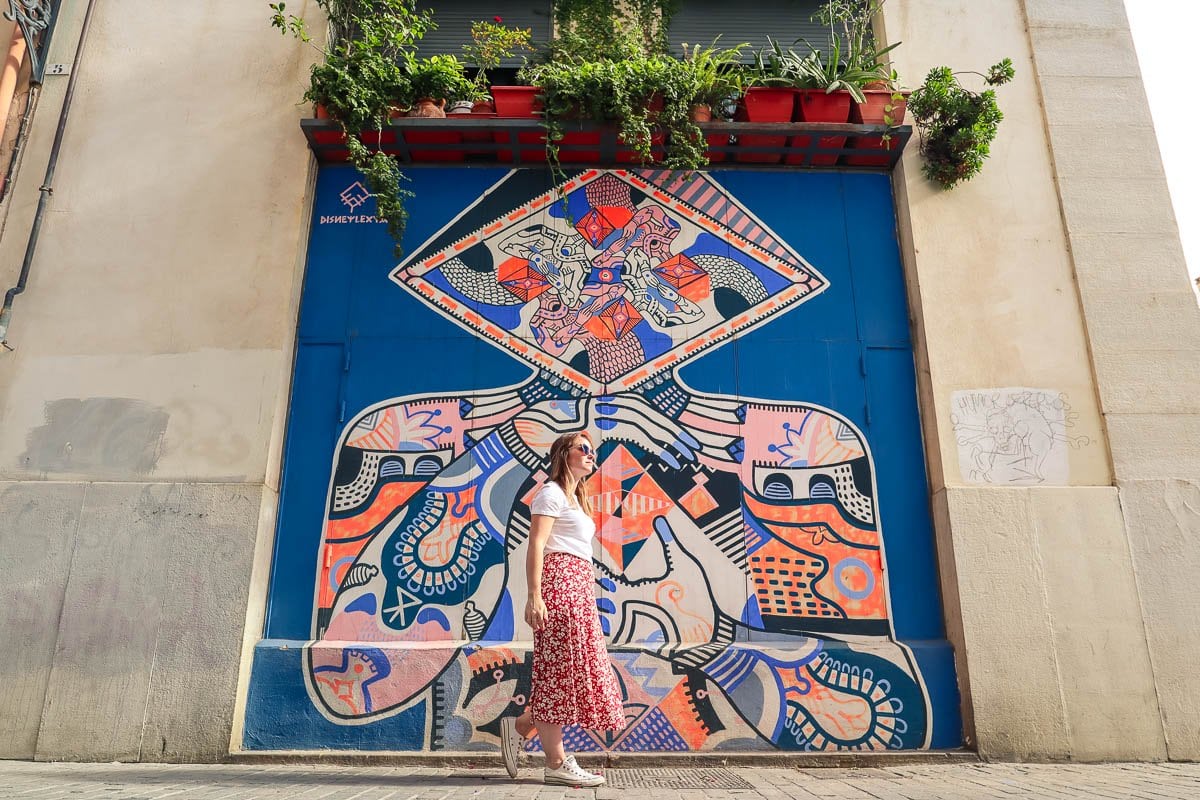
Some of the most famous works are by Hyuro, an Argentinian who moved to Valencia 15 years ago. Plus, there are some interesting political pieces by Escif (sometimes referred to as the ‘Spanish Banksy’). For me though, I loved just wandering, taking in the colours and designs and trying to figure out what the hell some of them were about!
Take yourself on your own Valencia street art tour by visiting Plaça del Tossal, Carrer d’En Gordo and walking own Calle de Caballeros, Carrer de Llíria and Carrer del Marqués de Caro.
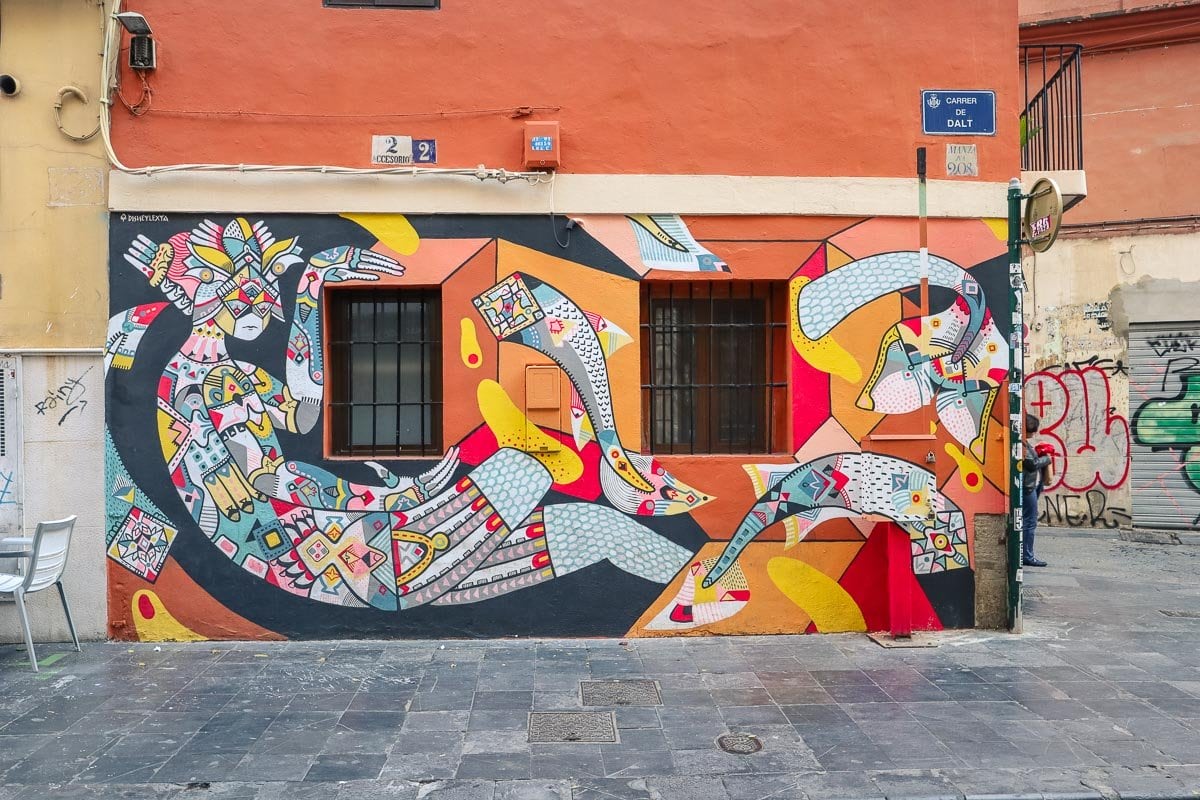
Explore Valencia’s City of the Arts and Sciences
I’d seen a lot of images of the Ciudad de les Artes y Les Ciences before visiting Valencia, and thought the whole complex of modern architecture looked incredible. The buildings are reminiscent of something from a Star Wars movie, or perhaps a part of Sydney Opera House.
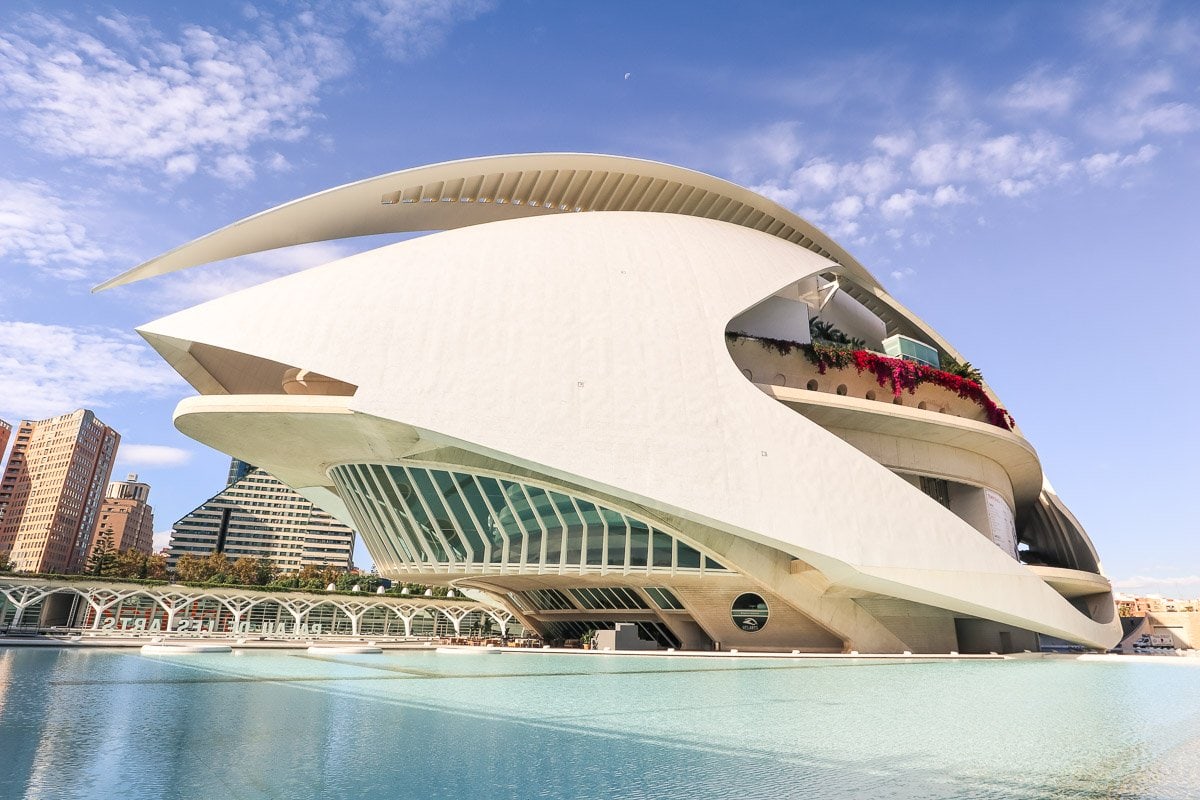
There are several cultural and tourist attractions here, including the Palau de les Artes (a huge concert venue), the city’s science museum, Hemisferic (IMAX cinema – more on that below!), Umbracle (gardens) and Oceanografic (largest aquarium in Europe).
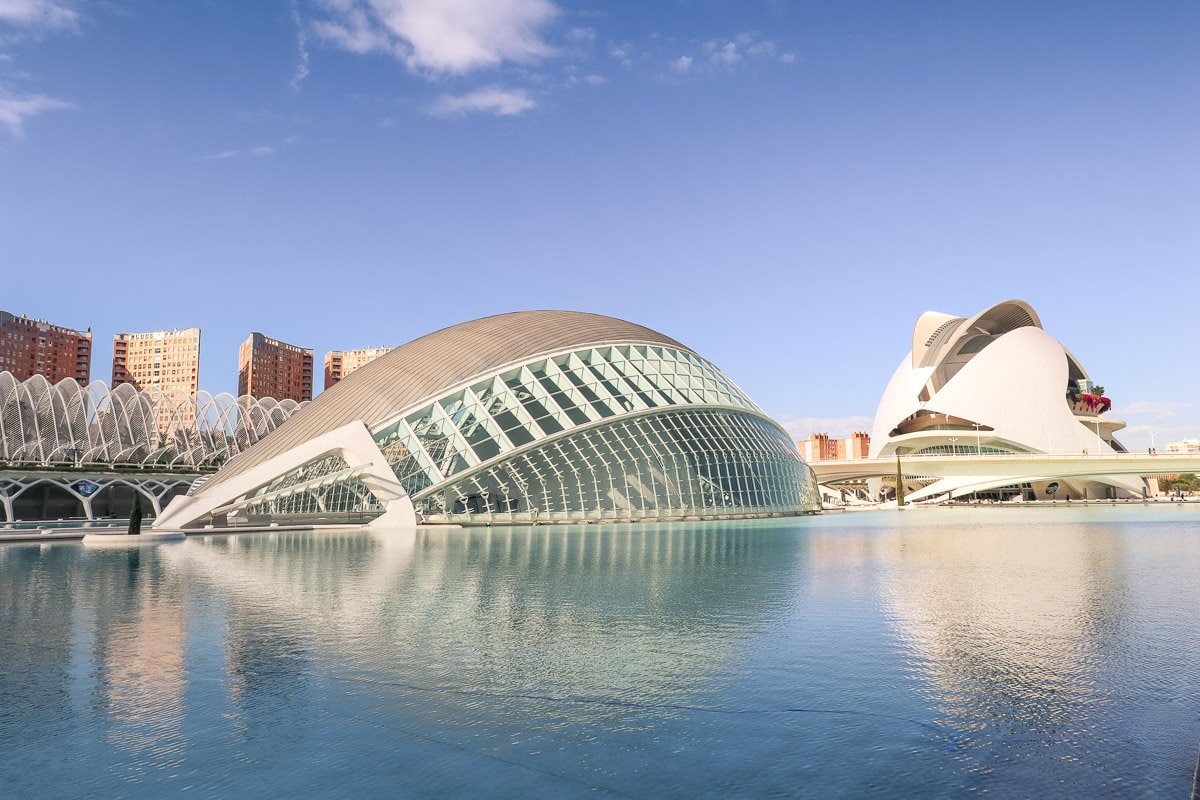
What to do in Valencia with kids? I’d recommend taking them to the Science Museum. I went one afternoon and thought it was great. There were exhibitions dedicated to space, brains, oceans and more, including plenty of interactive elements for children to enjoy. The building is spectacular to wander around too.
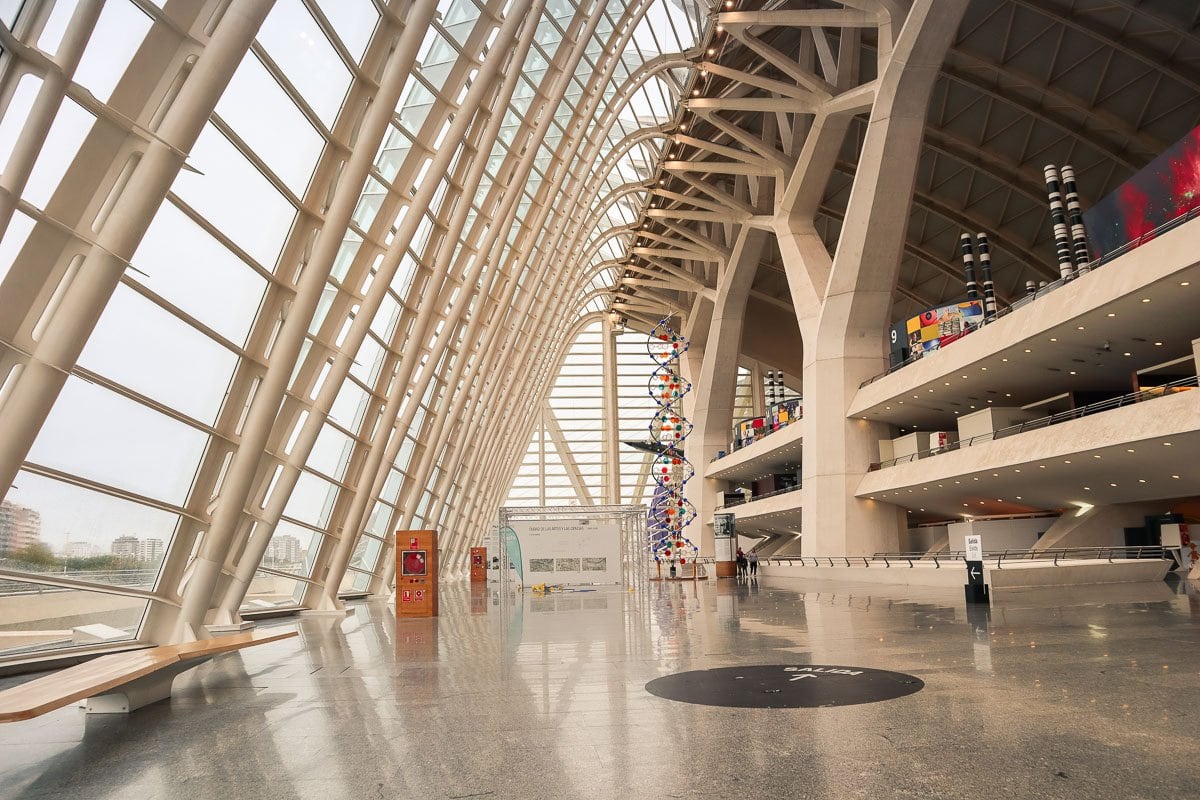
I chose not to visit the Oceanografic, despite it being one of the most popular tourist attractions in Valencia. I tend to steer clear of animal attractions, particularly ones involving animal displays and shows.
I know many zoos and aquariums do positive work in terms of research and conservation, but this aquarium has dolphins and beluga whales in captivity. There are dolphin ‘shows’ and I read some heart breaking reviews on TripAdvisor about the beluga whales in small tanks. For me, it was an easy decision not to go, but I know many people will want to visit, so I felt I should mention it!
Wander through L’Umbracle
Part of the Ciudad de les Artes y Les Ciences, this is a covered walkway filled with gardens. Unlike most of the places in this modern complex, L’Umbracle is free. The structure is interesting, and feels a bit like a greenhouse as you walk through. Inside are plants and vegetation from Valencia and beyond, which change according to the season. It felt like a lovely place of calm within a busy city.
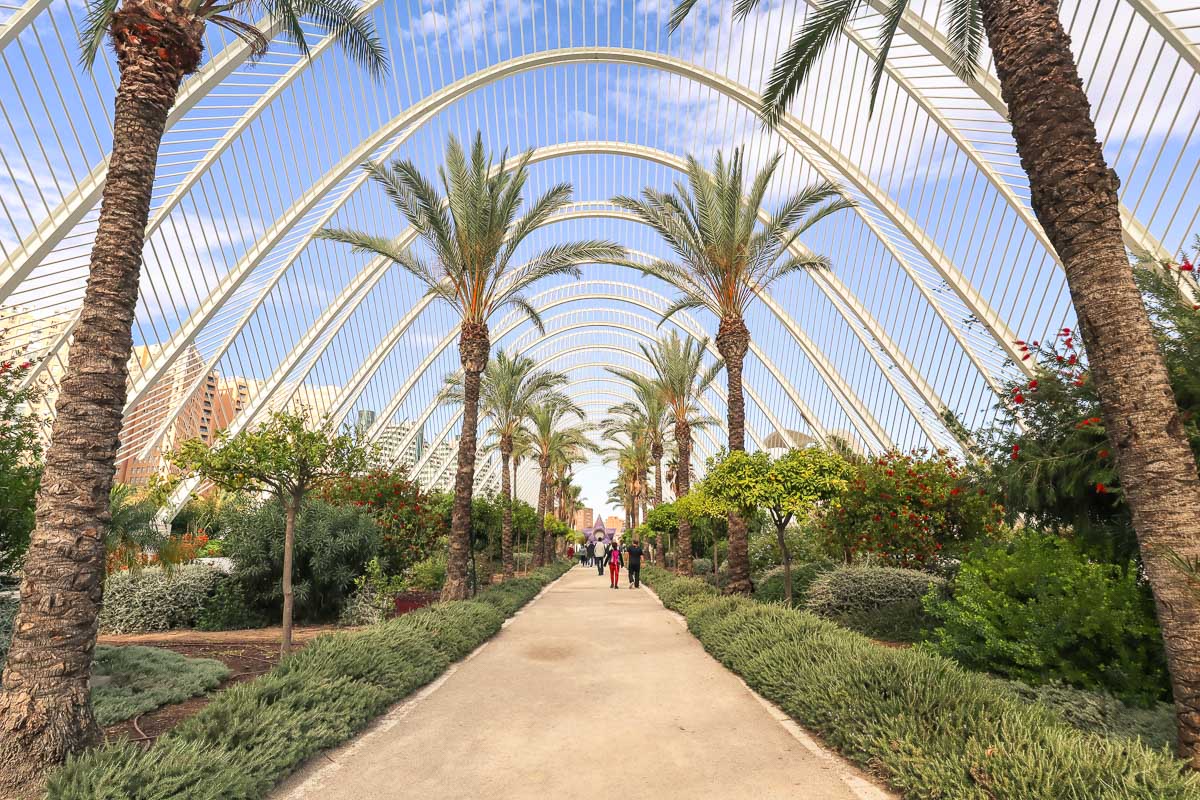
If you’re looking for things to do in Valencia at night, this is also one of the city’s coolest night spots too. L’Umbracle Terrazza is a nightclub that’s open in the summer months set inside the gardens. Looks like a lovely place for a drink!
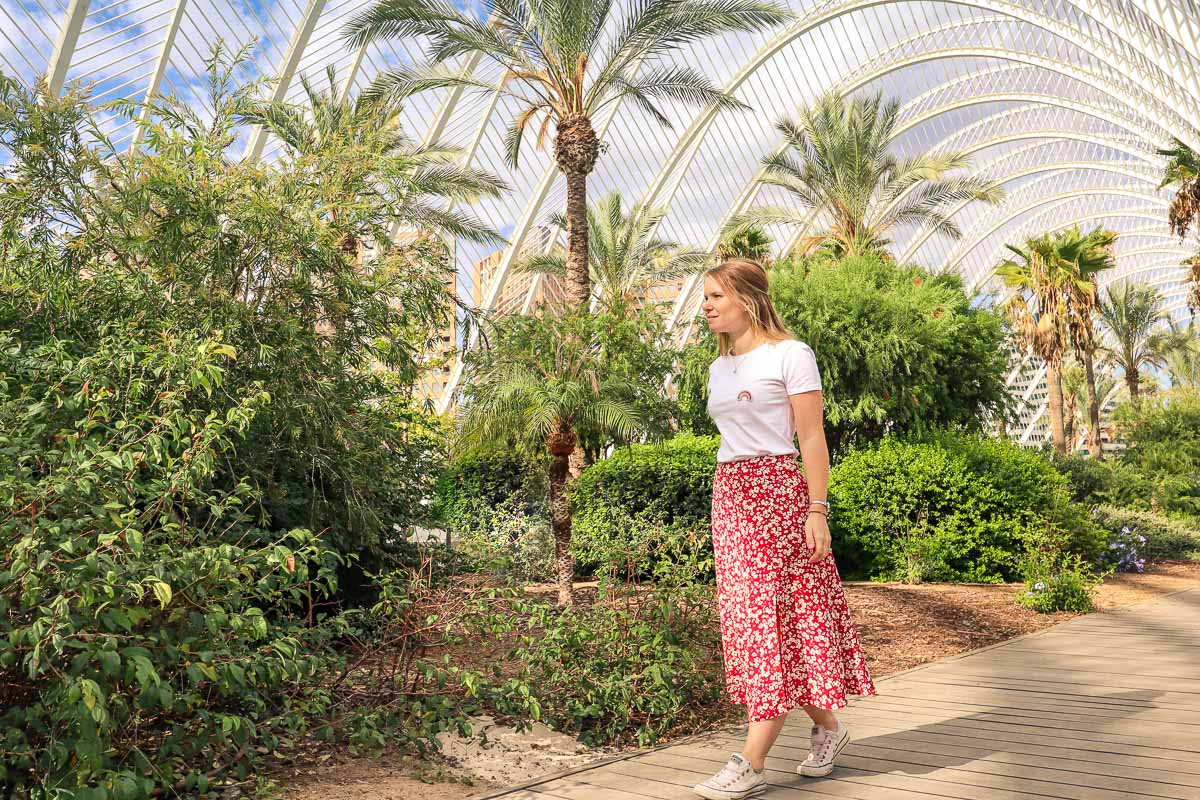
Watch a movie on one of the biggest screens in the world at Hemisferic
Also a part of the Ciudad de les Artes y Les Ciences, Hemisferic is home to a unique 900m spherical cinema. On a rainy day in Valencia, I booked tickets to watch a film all about volcanoes, brought to life like never before, on that gigantic screen.
Rather than sitting down to face the front, the seats are tilted so you lie back at an angle to take in the vast screen. It’s a cool experience, and was a great option when a rare day of rain descended on the city.
Go on a walking tour of Valencia
As I really wanted to learn more about the city during my visit, I booked onto a three hour walking tour of Valencia. My tour guide was a local, and showed me lots of things I would have totally missed otherwise. While it was great to learn more about the city’s history, with stops at landmarks including Valencia Cathedral, La Lonja de la Seda and Mercado Central, there were plenty of other spots too, which had fascinating stories.
Check availability and latest prices for a walking tour of Valencia here
Spend a day at the beach
Valencia is one of those cities which offers the best of both worlds – buzzy city and relaxing beach. Malvarrosa Beach is Valencia’s main beach, and it’s easily reachable by public transport. I hopped on a tram to get there, and then caught a bus back. The journey took around 20 minutes, so it really is a great spot to escape to if you want to experience a different side to Valencia.
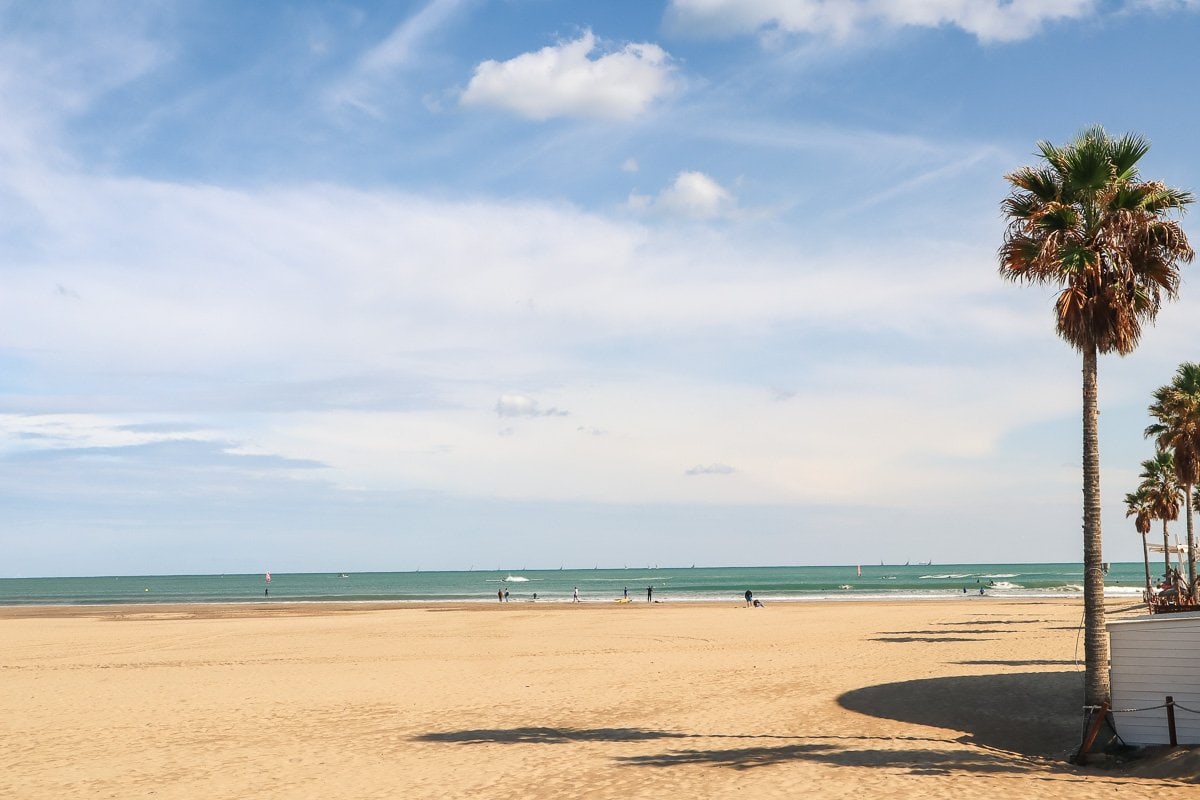
I went for a long walk along the promenade, looking at the little cafes and seafood restaurants lining the sand. I walked north to the next beach too, and enjoyed watching lots of surfers and paddle boarders riding the waves.
There’s a port area at one end, where you’ll find a few ugly bits of machinery along with cruise ships. That part is also home to several upmarket restaurants and trendy hangout, Marina Beach Club. If you get hungry, this area is THE place in Valencia for paella, with restaurants like La Pepica , particularly famous for their enormous rice dishes.
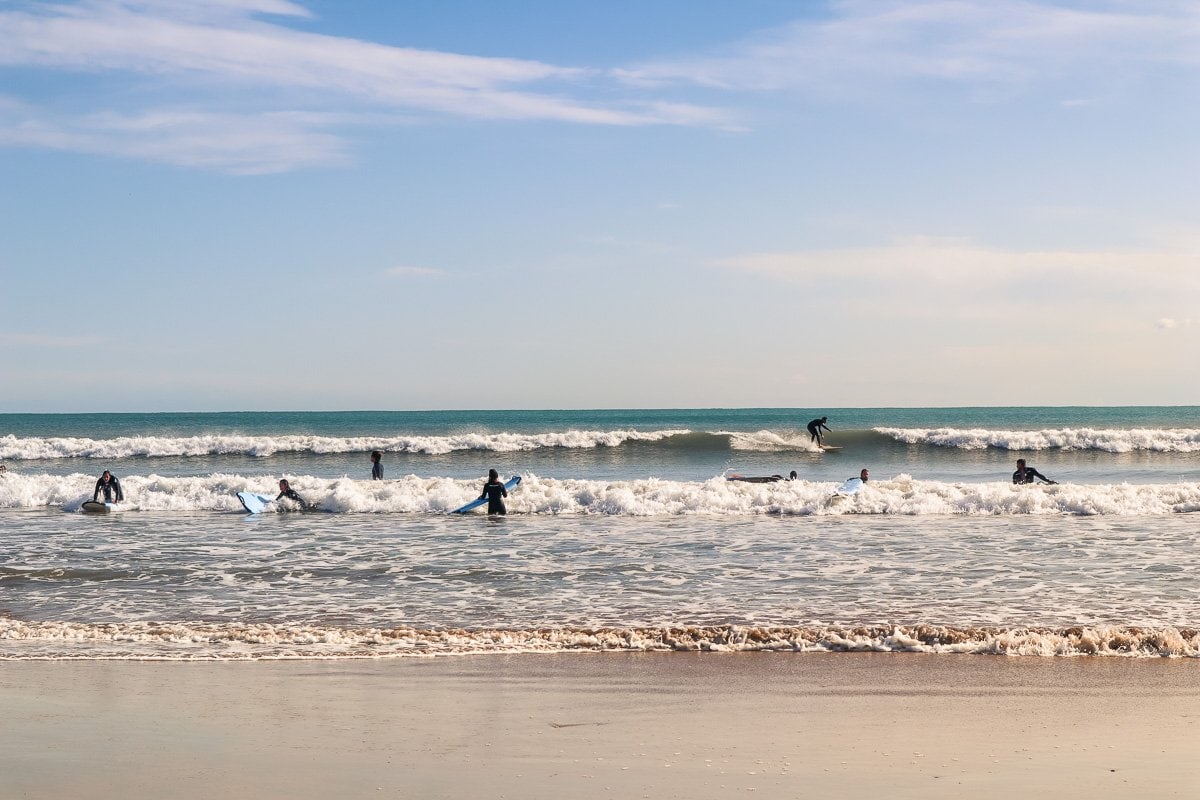
Check out the chandeliers in Valencia City Hall
The home of Valencia City Council, I’d have had no idea you could wander into this building if it hadn’t been for the tour guide on my walking tour of Valencia . The interiors are stunning, with elaborate décor, a sweeping marble staircase and a room dotted with portraits of Valencia’s most important figures.
I thought the ‘crystal room’ was the most impressive, with its ornate chandeliers. I’d also recommend walking out onto the balcony that overlooks the main plaza. During Valencia’s biggest festival, Las Fallas, this is the prime viewing spot for all of the action.
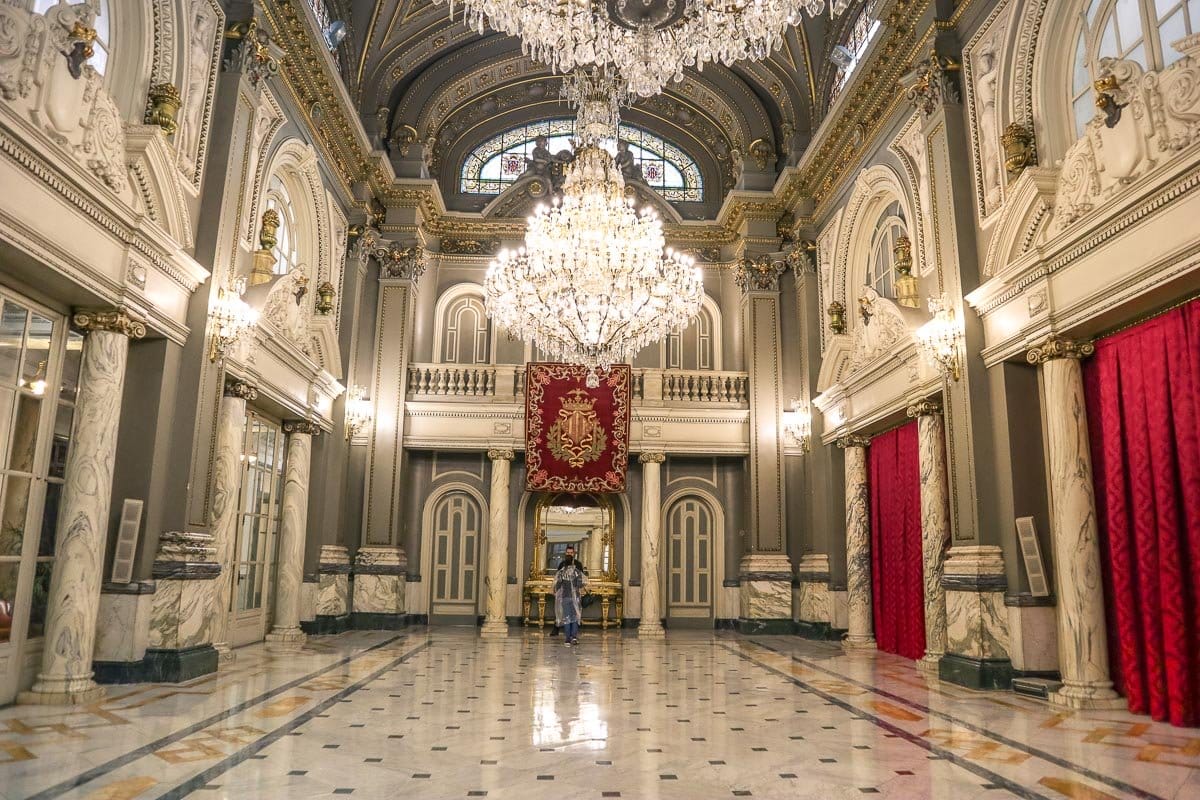
Relax at a beach club in Valencia
If you’re visiting Valencia on holiday and fancy relaxing in plush surroundings for the day, head to Marina Beach Club. Located next to the port, at the far end of Malvarrosa Beach, the beach club has a restaurant, bar, sun loungers and swimming pool. There are DJ sets during high season, and it’s as much a place to be seen as to relax.
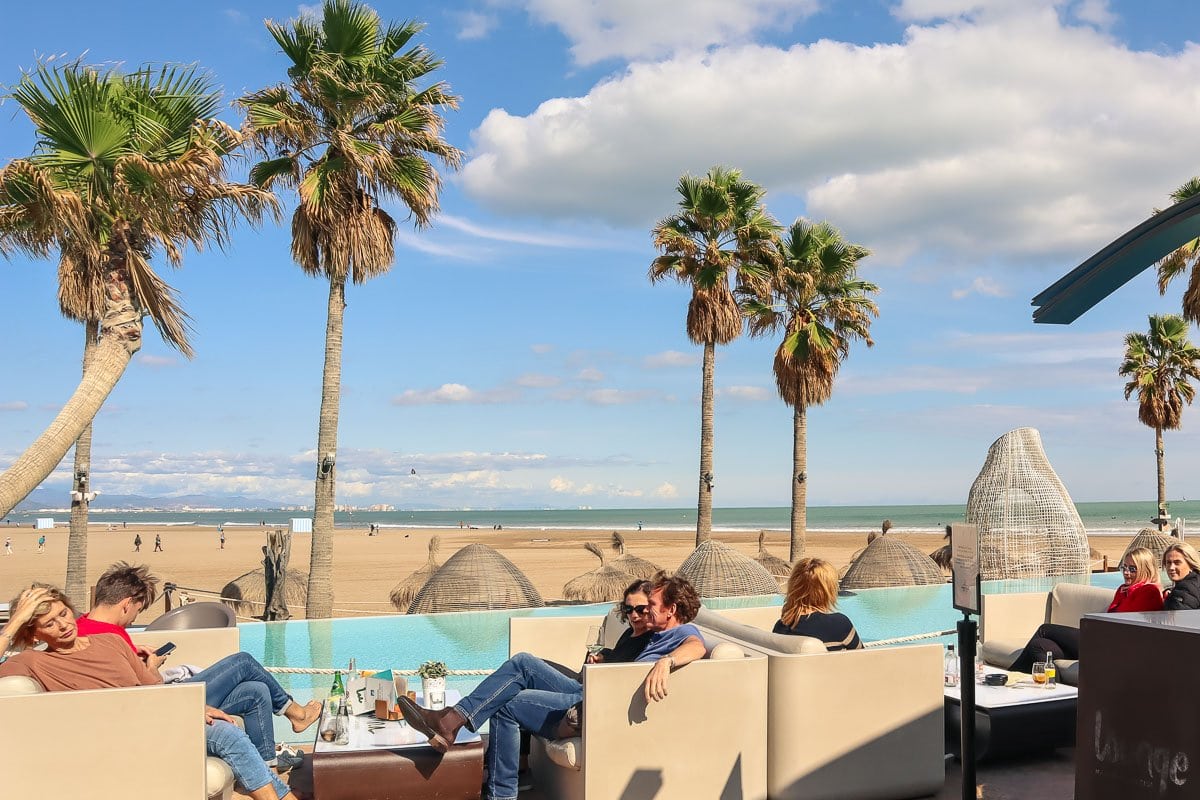
Check out the interiors of Valencia’s train station
You might be surprised to hear that a visit to Valencia’s train station is on a list of the best things to do in Valencia! Well the surprises continue as when you arrive you’ll see the station’s name is Estació Nord, despite the fact it’s located towards just south of the centre of the city! Mystery solved – it’s actually named after the company who won the tender to build the station in the early 1900s.
While the exterior is pretty, the interior is even more spectacular, with detailed stories on the walls created out of mosaic tiles, known as trencadis (from the word for broken). They show the ladies of Albufera, the rice paddies and other things of cultural significance to Valencia.
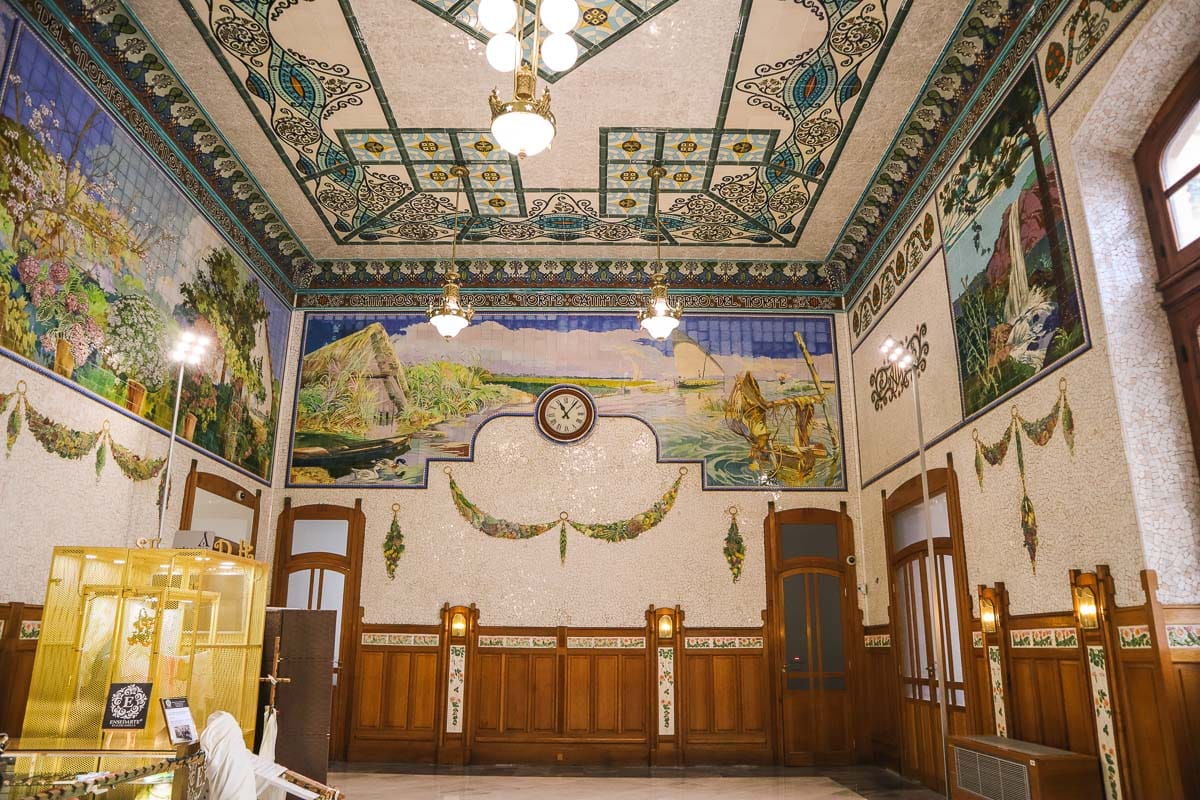
Channel your inner history buff at La Lonja de la Seda
One of the most popular Valencia attractions is the city’s famous silk exchange, which dates back to 1492. If you’re keen on history, this is a sight not to miss.
I visited as part of a walking tour of Valencia , and was amazed by the beautiful garden flanked by orange trees, and the impressive Sala de Contratación – the room where important deals once took place. The room features several columns, hanging candelabras and ornate decorations, so it’s easy to understand why this is a UNESCO World Heritage Site.
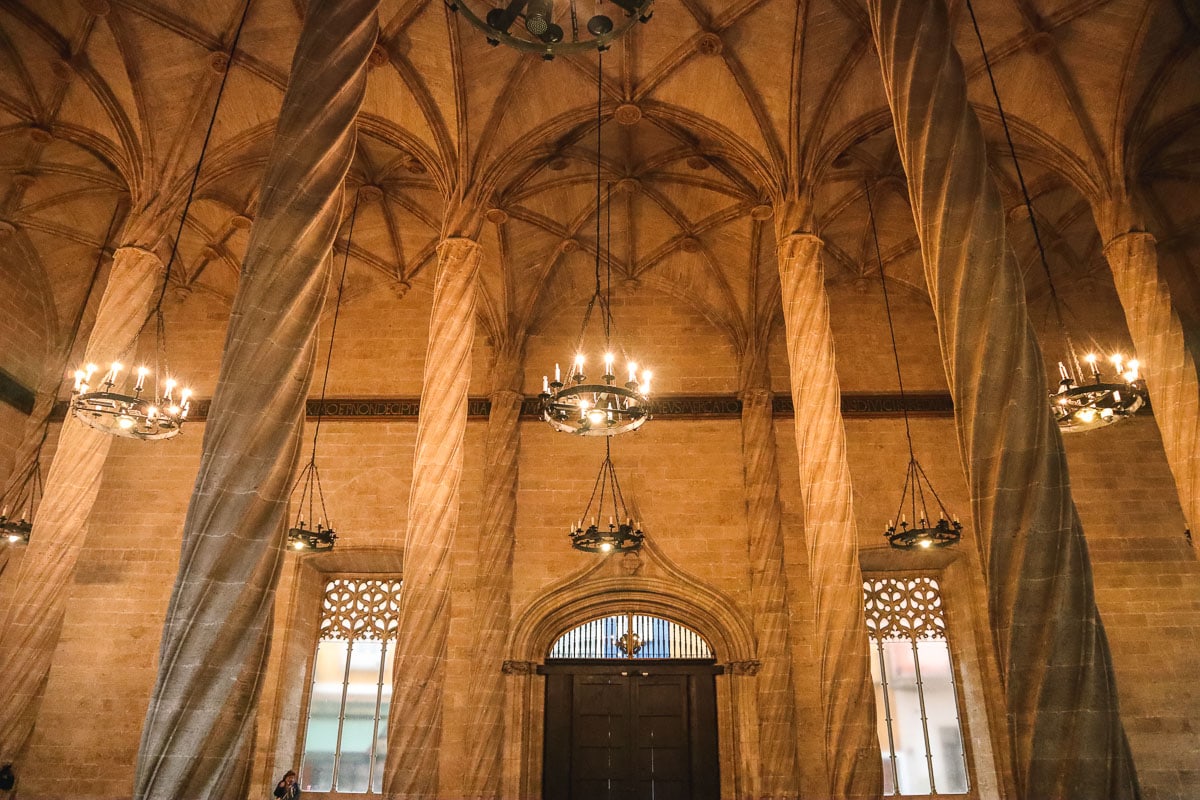
Climb up Torres de Serranos for one of the best views of Valencia
One of the best-preserved monuments in Valencia, Torres de Serranos, was one of 12 gates built towards the end of the 14th century as part of the city’s defence structure. Once upon a time, these gates surrounded the city, fortified by an old city wall. These days, only two remain – this one to the north of the city, and Torres de Quart to the west.
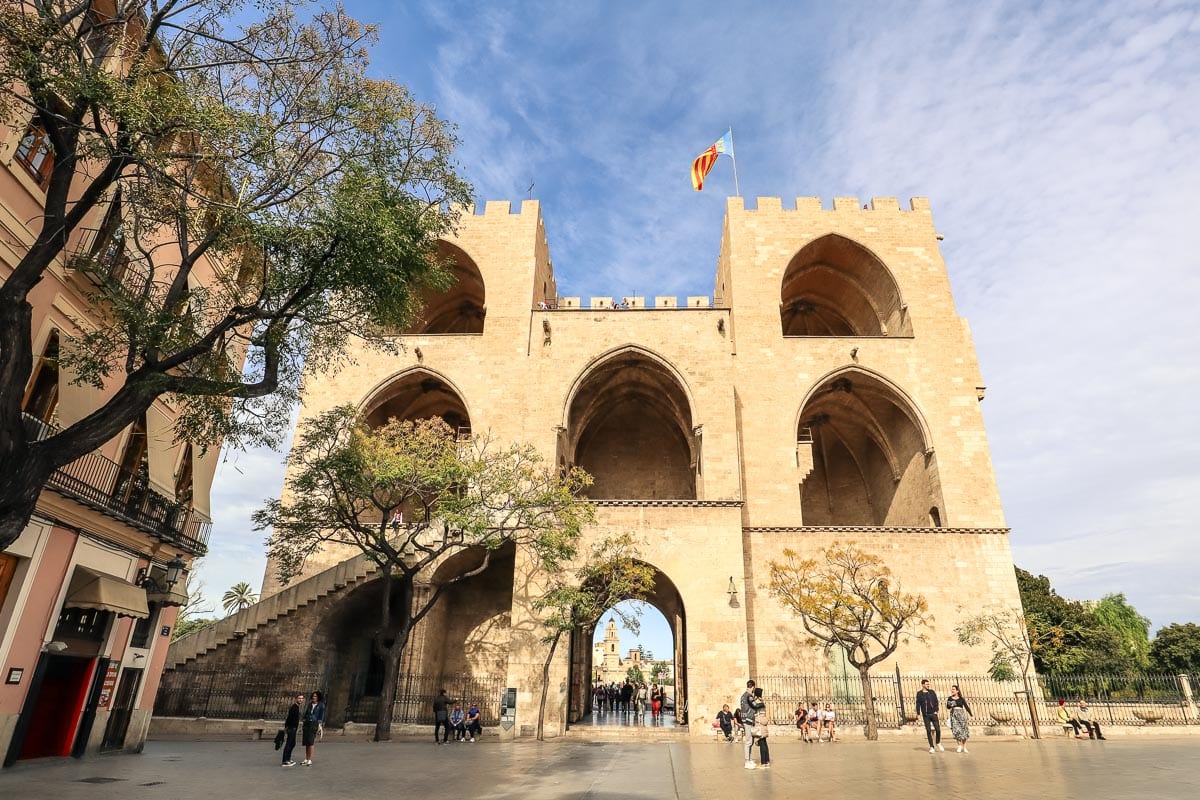
I consider a visit to Torres de Serranos as is one of the top things to do in Valencia. While I enjoyed the views from the top of El Miguelete (Valencia Cathedral’s bell tower), I actually preferred the view from this gate. There was something special about being able to see the Turia Gardens in one direction and the historic city in the other. I also loved the many levels you could get to.
READ MORE: Where to go for the best view of Valencia
Visit some quirky spots in Valencia city centre
These next two are really close to each other so I’ve grouped them together. La Estrecha in Plaça de Lope de Vega is Valencia’s narrowest building. When you see it, it’s hard to believe it was ever one property as it’s so teeny. Rumour has it, one of the previous occupants had to get changed outside in the square as her large dresses didn’t fit through the door!
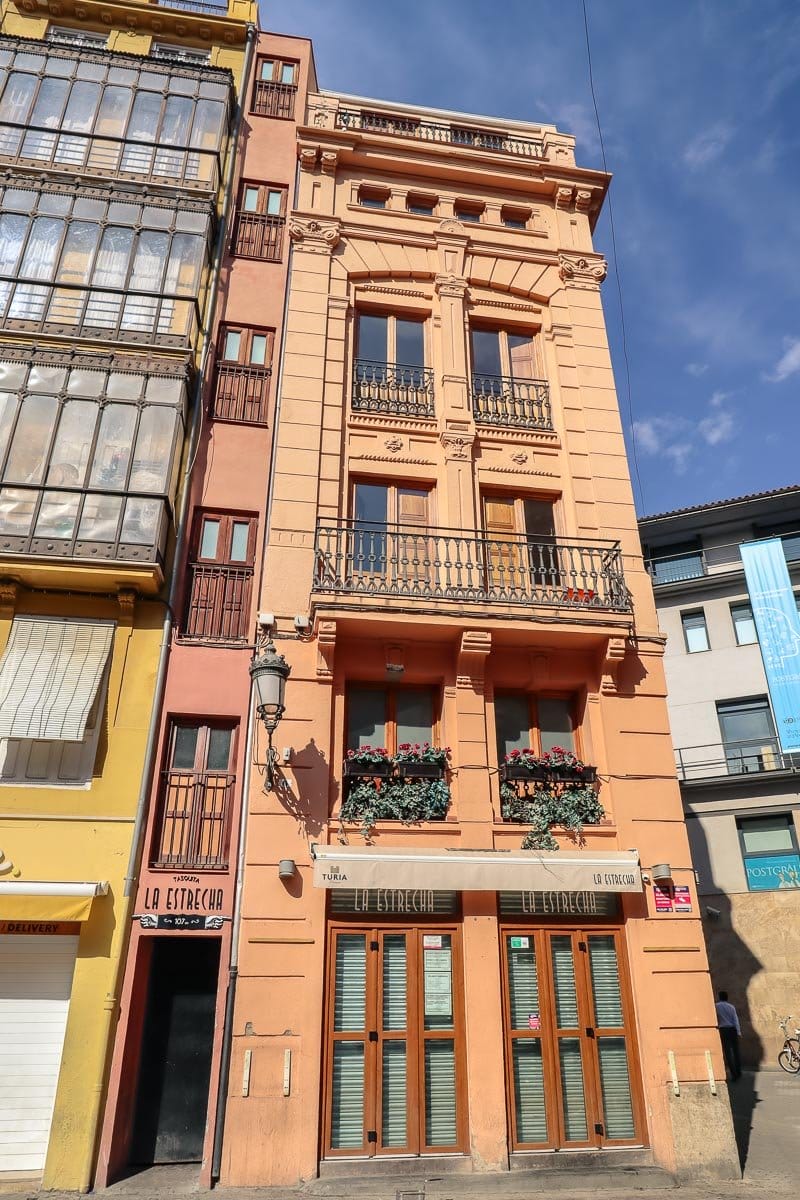
Moments away is Plaza Redonda a.k.a. a round square! It was designed in 1840. The circular design is bizarre to see, but unique too! These days it’s a popular tourist spot, so you’ll find some tapas bars close by and traditional craft stalls and a fountain within the square itself.
Celebrate Las Fallas festival in Valencia
If there’s one thing that Spain excels at, it’s festivals! Las Fallas is Valencia’s biggest, and it takes place between 15th – 19th March each year. It involves the creation of lots of ninots – huge papier-mache statues, which are displayed for several days before a mass burning. There are also huge fireworks displays, live music, parties and more. It’s a real Spanish fiesta, with all the craziness you’d expect!
Explore the Ruzafa (Russafa) neighbourhood
Like many cities Valencia has several neighbourhoods, each with their own unique vibes. Ruzafa is home to trendy coffee shops, a colourful market, independent shops, craft beer stores and restaurants. I guess if you were applying the ‘hipster’ tag to one part of the city, it’d fit Ruzafa the best!
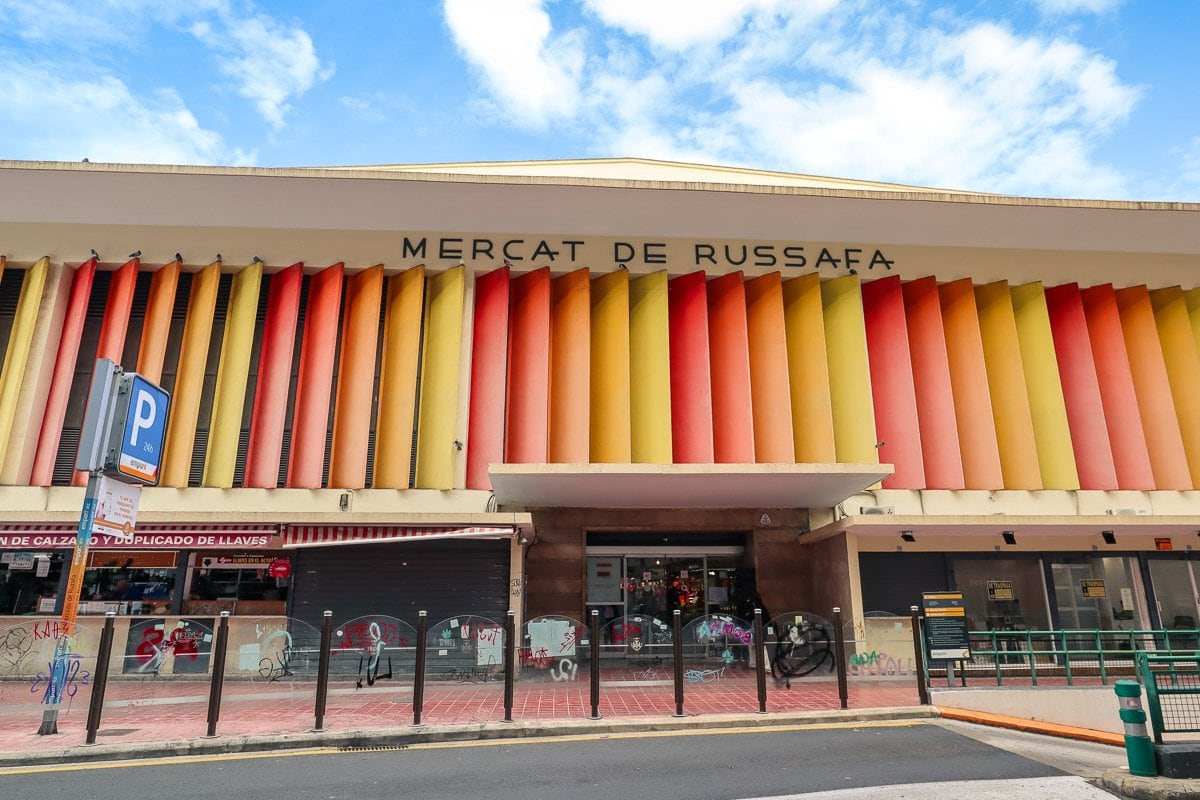
The streets feel a little more relaxed than the hubbub of the city centre, and as I wandered, I felt like every 10 paces I came across a unique coffee shop, vegan food store or a colourful building. I liked the relaxed vibes and if you’re looking for some good coffee, head to Dulce de Leche – a cute corner cafe with a cake display to die for. I also loved Ubik Café – housed in a bookstore. It’s got the millennial laptop club vibe. Just rock up with your Macbook, order a latte and tap away for a few hours.

Stay in a 19th century mansion
Close to Valencia Cathedral is the beautiful Caro Hotel , a 19 th -century mansion which has been converted into one of the best luxury hotels in Valencia. It’s in a great location for sightseeing, and ideal for history buffs, as the Roman and Moorish remains that were found on the site have been integrated into the design of the hotel. There’s also a spa, pool and Michelin-starred restaurant Sucede. It’s easy to see why so many people love staying here! Looking for other places to stay in Valencia, don’t forget to check out my informative guide to where to stay in Valencia .
Check availability and latest prices at Caro Hotel here
See Valencia at night
While I loved my days getting lost in Valencia’s maze of narrow alleyways and emerging at spectacular plazas, I think it was even more beautiful at night. I’d recommend a pre or post-dinner wander, enjoying the amber glow from the streetlights, and the stunning area around the Cathedral. It’s magical and super romantic after dark!
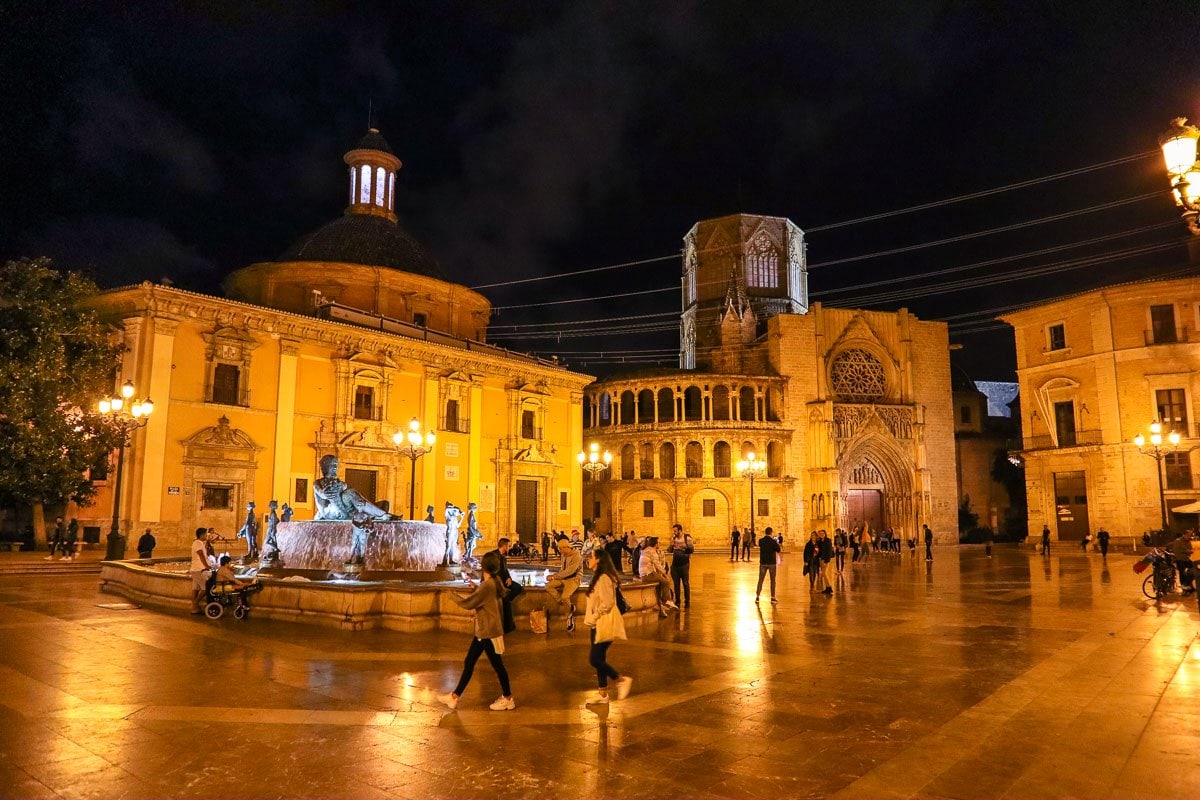
Enjoy a spectacular sunset in Valencia
Wow did the sunsets in Valencia take me by surprise. After each busy day of exploring (which included one rainy one) I was amazed by the beautiful yellows, golds, peaches and pinks of the sky. One of my favourites was spotted from my apartment window while on the phone to my mum. I quickly said ‘I need to go!’, picked up my camera and legged it to the Turia Gardens nearby. Just look at those colours!
Sunsets in Valencia are special. I hope you love them as much as I do!
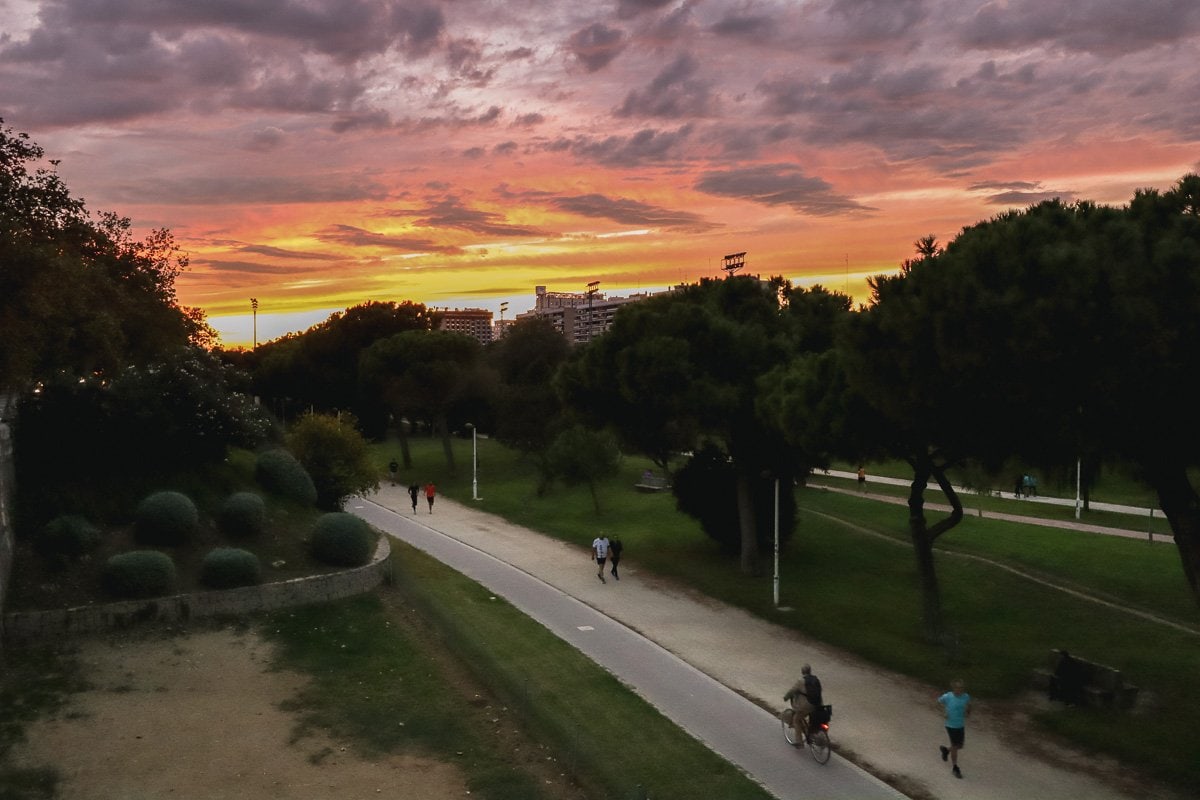
Food Experiences In Valencia
Eat with your eyes at valencia central market .
Some city centre markets have a touristy feel. I’ve often felt that La Boqueria in Barcelona is overpriced and not particularly authentic. However, Valencia’s beautiful Central Market has a wonderfully local vibe. With its wrought iron structure, pretty stained glass, impressive domes and pretty painted tile exterior, it’s also incredibly photogenic.
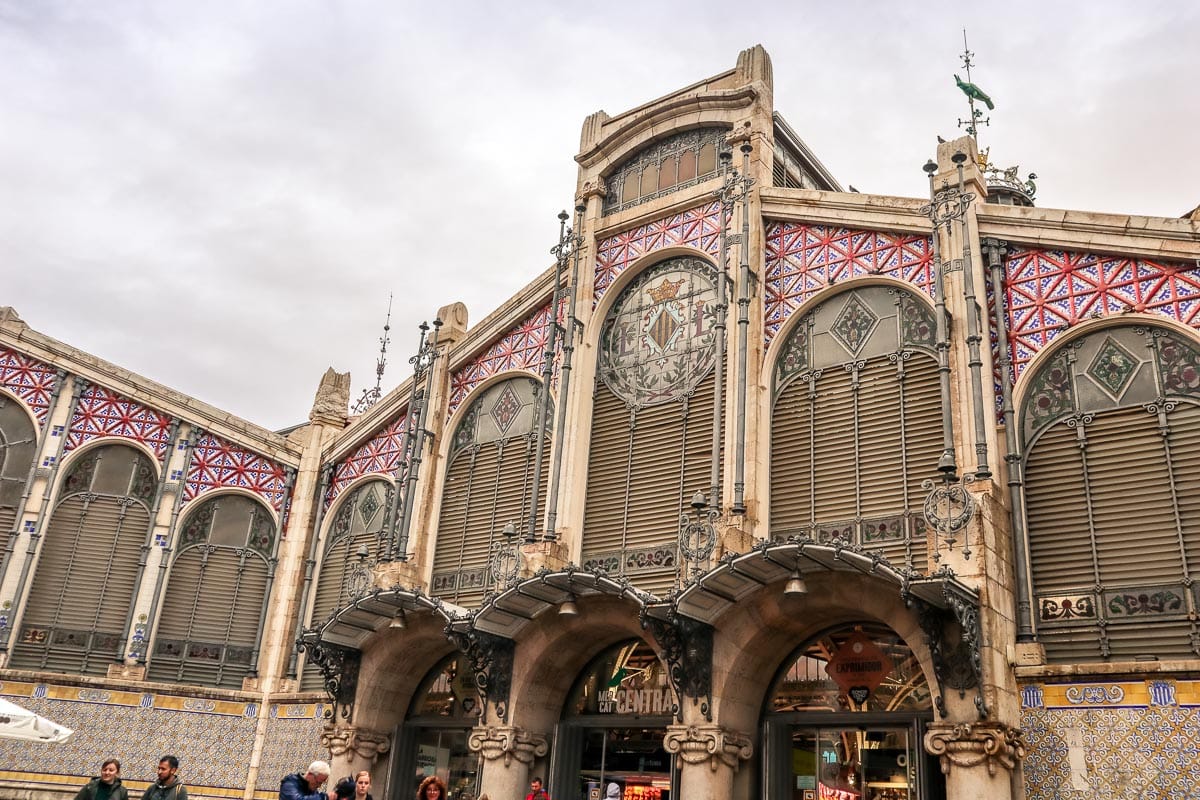
While it looks big from the outside, it feels even larger inside. There are over 1,000 stalls, so if you’re a foodie like me, you’ll probably lose several hours in there! Along with stalls heaped with colourful fruit and vegetables, huge hams, towers of cheese and unique regional produce, you’ll also find some truly local items including horchata, fartons and churros, along with all the fresh fish you could dream of.
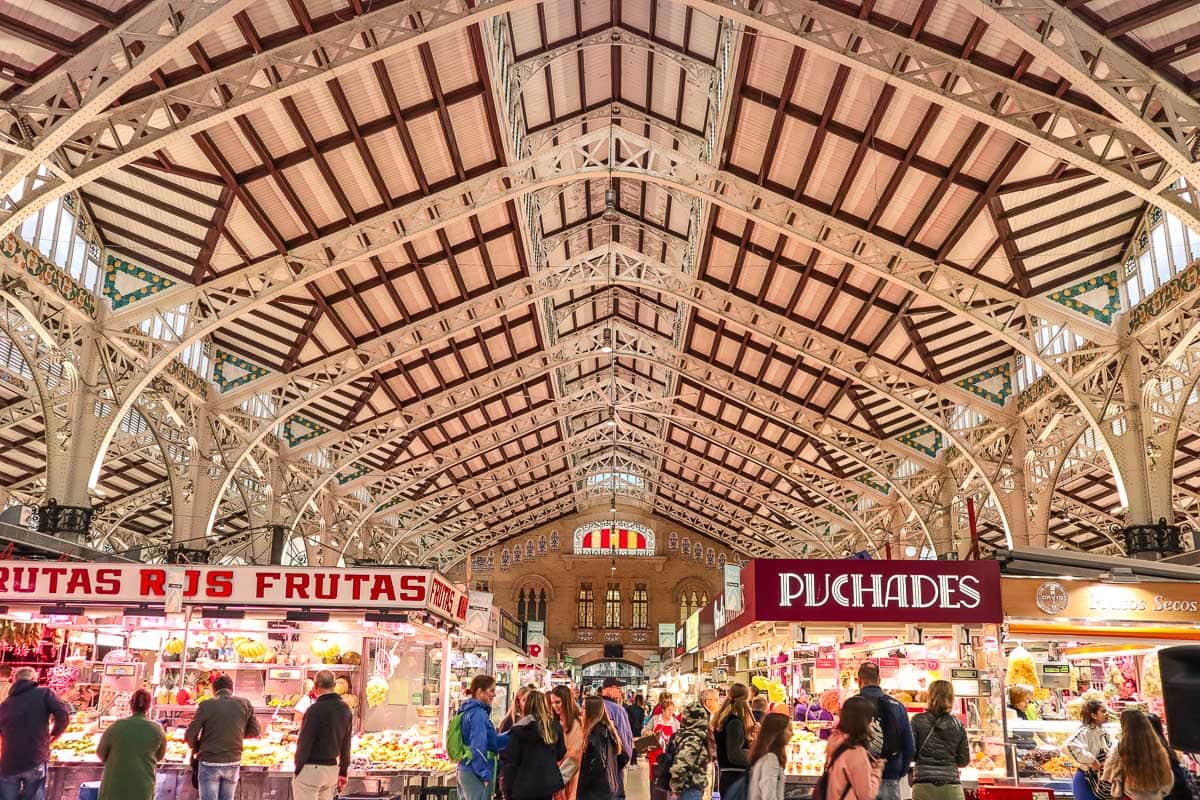
It’s more of a shopping market than one where you sit down to eat (try Colon Market for that), although there are a few places by the front steps where you can order basic items and have a seat. If you want to find out more about the stalls inside, the Central Market website has lots of info, including the all-important opening times. For super foodies, I also found a few cooking classes during my research, which include a stop in the market to collect ingredients.
Go on a tapas tour of Valencia
I always think the best way to get to know a place is through the food. Valencia is a foodie city, with a great culinary heritage. There are Moorish influences, Mediterranean flavours and more. Along with paella Valenciana (which has chicken and rabbit in it) the city is famed for its tapas, with plenty of dishes unique to the region.
I booked onto a food tour of the city , and really enjoyed the experience – definitely one of the best things to do in Valencia. It was great to hear all about the city from a local, and taste some really authentic cuisine. You can read all about my tapas tour of Valencia here .
Check latest availability and prices for this tapas tour of Valencia
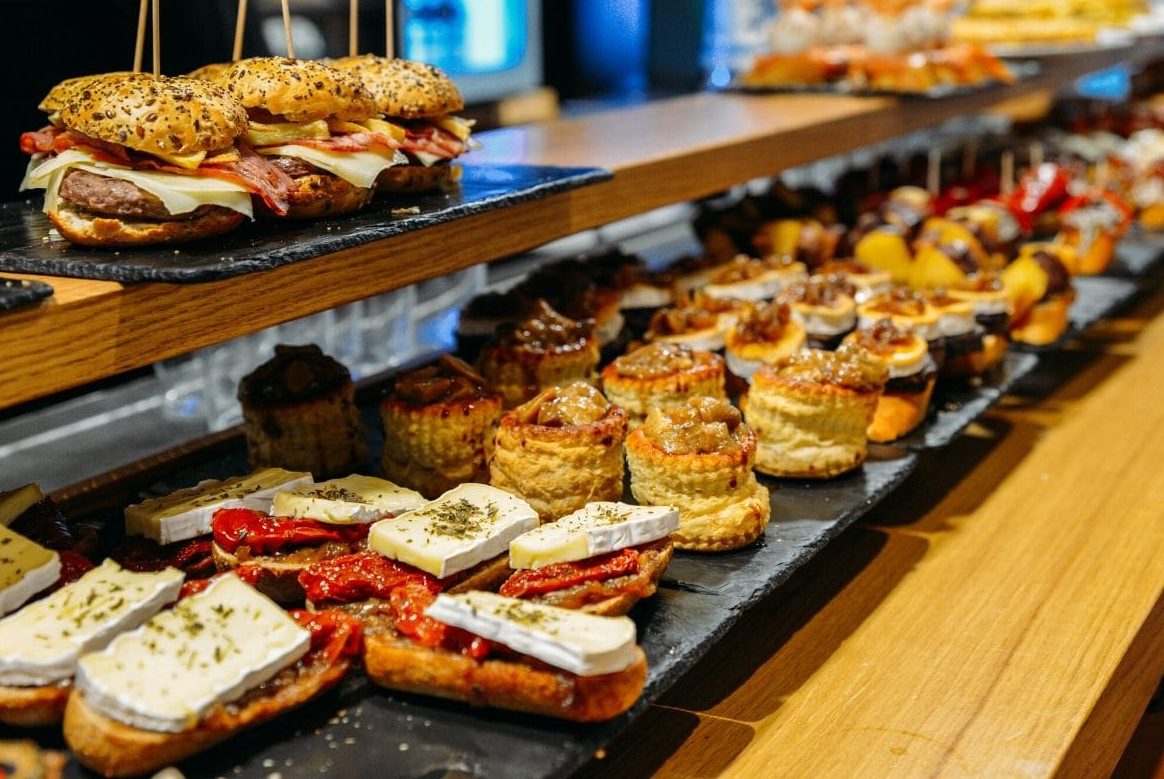
Eat at a trendy Valencia restaurant
One of my favourite food experiences in Valencia was at La Manera – a stylish restaurant close to city hall, with modern cuisine and excellent cocktails. With ‘sherry is sexy’ in neon behind the bar, and a cocktail list of sherry concoctions (apparently, it’s making a comeback!) I had to try one. I also loved La Manera’s twist on a pisco sour, which was pink, sour with a lovely layer of sweetness, served in an elegant long-stemmed glass.

The food was great too, with a mix of sharing plates (perfect if you fancy a drink and a snack) and main courses. Staff were super friendly, helping me pick the best things for my tastes. The mushroom croquettes were rich, tasty and so so moreish. Meanwhile, the tuna tataki salad came with a flavoursome ginger and soy dressing, taking me straight back to my travels in Japan!
Have a glass of Agua de Valencia
Did you know Valencia has its own cocktail? According to a tour guide I met in the city, Agua de Valencia should have cava and orange juice as a base, but after that can contain whatever you fancy! Usually it has vodka and gin too, and is served in a jug then poured into wide-rimmed glasses.
One of the best places to try it is Café Sant Jaume , one of the city’s most iconic bars. Watch them mix it up in the old-style bar and then take a seat with the locals outside on the pavement and watch the world go by.
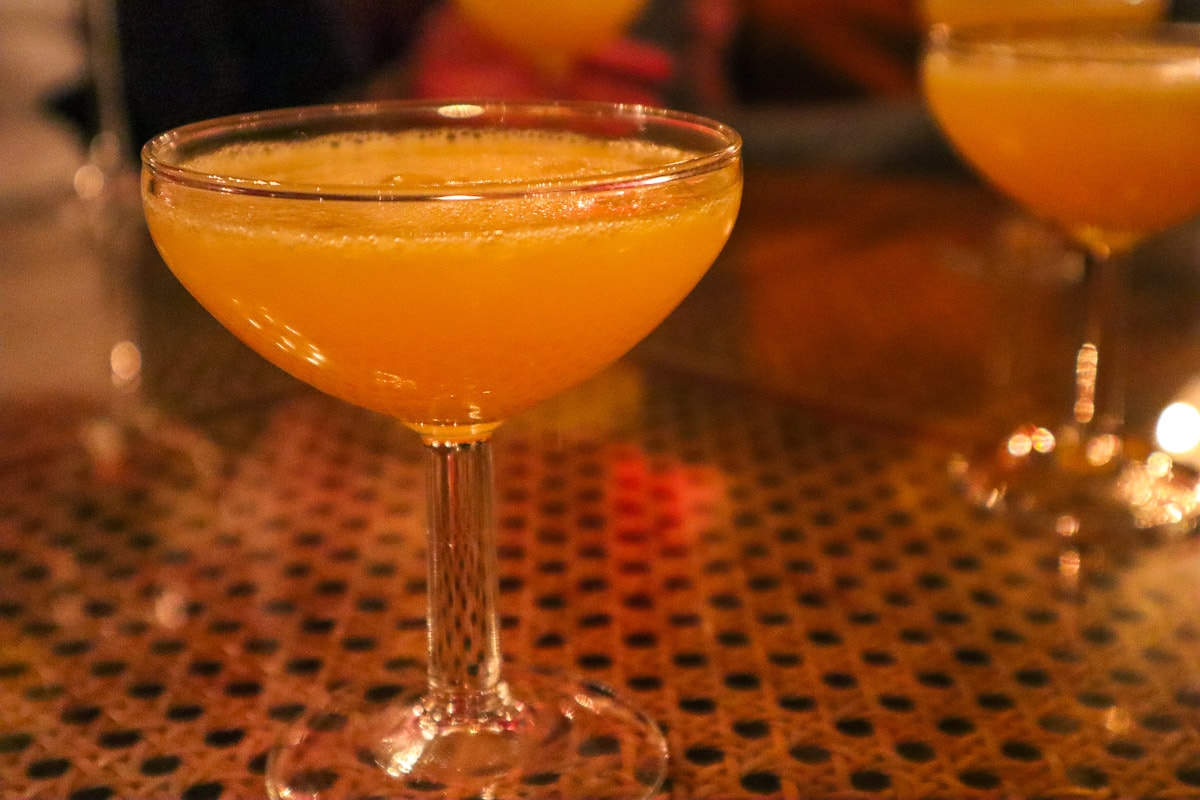
Try paella in Valencia
While I knew Valencia was famous for paella, I didn’t realise why until I visited. Most people consider it to have been invented in the Valencia region, with the rice being grown in the fertile land around the Albufera lagoon. All the ingredients were on the doorstep, with many families keeping chickens and rabbits for consumption, and growing garrofó beans (a white bean) too.
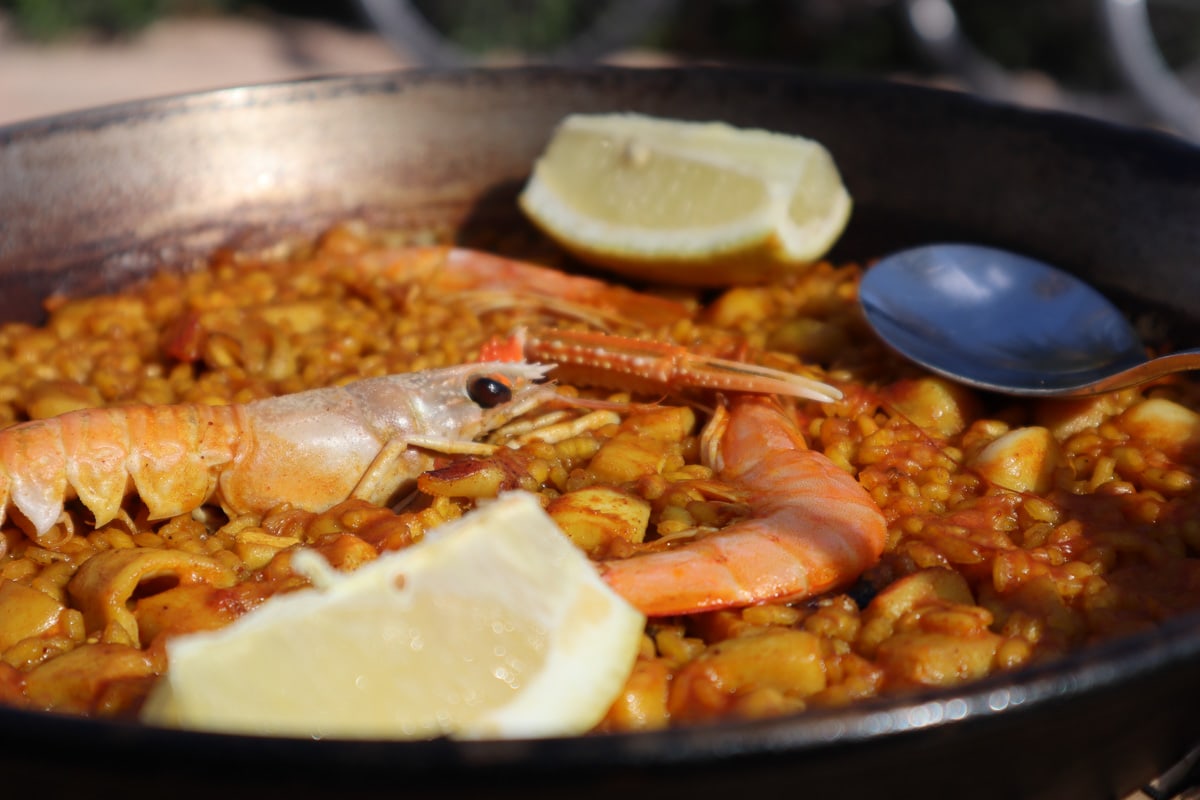
I fully intended to try it during my visit, but was lured by the scent of fresh seafood when I went to order! The seafood paella at Destino 56 was pretty good (and one of the only beach restaurants I could find that was happy to do a paella for one.) Next time I’ll try the paella Valenciana, I promise.
Enjoy a cocktail at Café de las Horas
Valencia’s most beautiful bar, when you step inside Café de las Horas you’ll feel like you’ve gone back in time. With its red velvet curtains, lavish chandeliers and star-painted ceiling, it’s romantic, chic and an absolute must-visit.
I tried aqua de Valencia here, but they have a big cocktail menu and will happily whip up whatever you fancy! Yes it’s a little touristy, but when you see the interior, you’ll understand why.
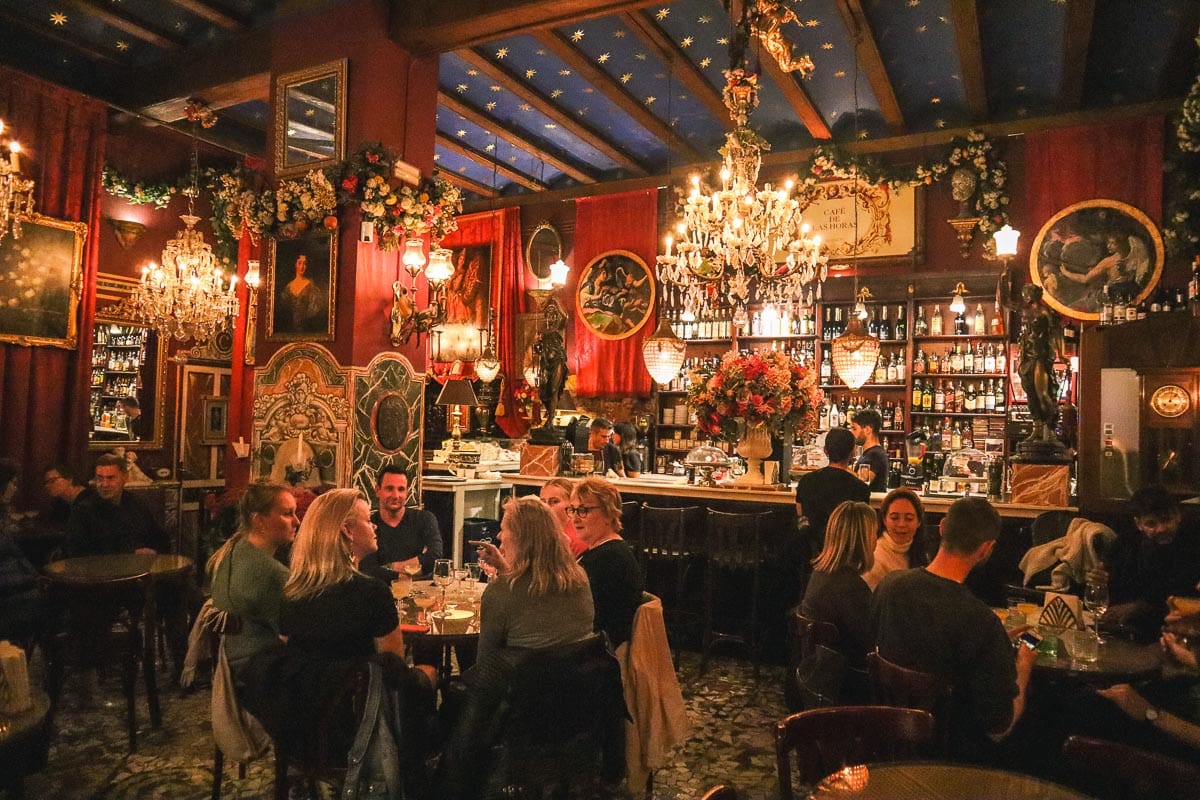
Try horchata and fartons
I mentioned you absolutely HAVE to try paella in Valencia, after all it’s where it was invented! But this is a region with a few other must-try delicacies. Horchata is a drink made from tiger nuts (known as chufas), water and sugar. It’s nice and sweet, and a cold glass of horchata is great when the temperatures are soaring.
It’s often served with fartons, which are long sugar-dusted pastries which you can dunk in your glass of horchata. I’d recommend trying them at Horchatería Santa Catalina , a 200+ year old café in the heart of the old town, which still has a beautiful old-world interior.
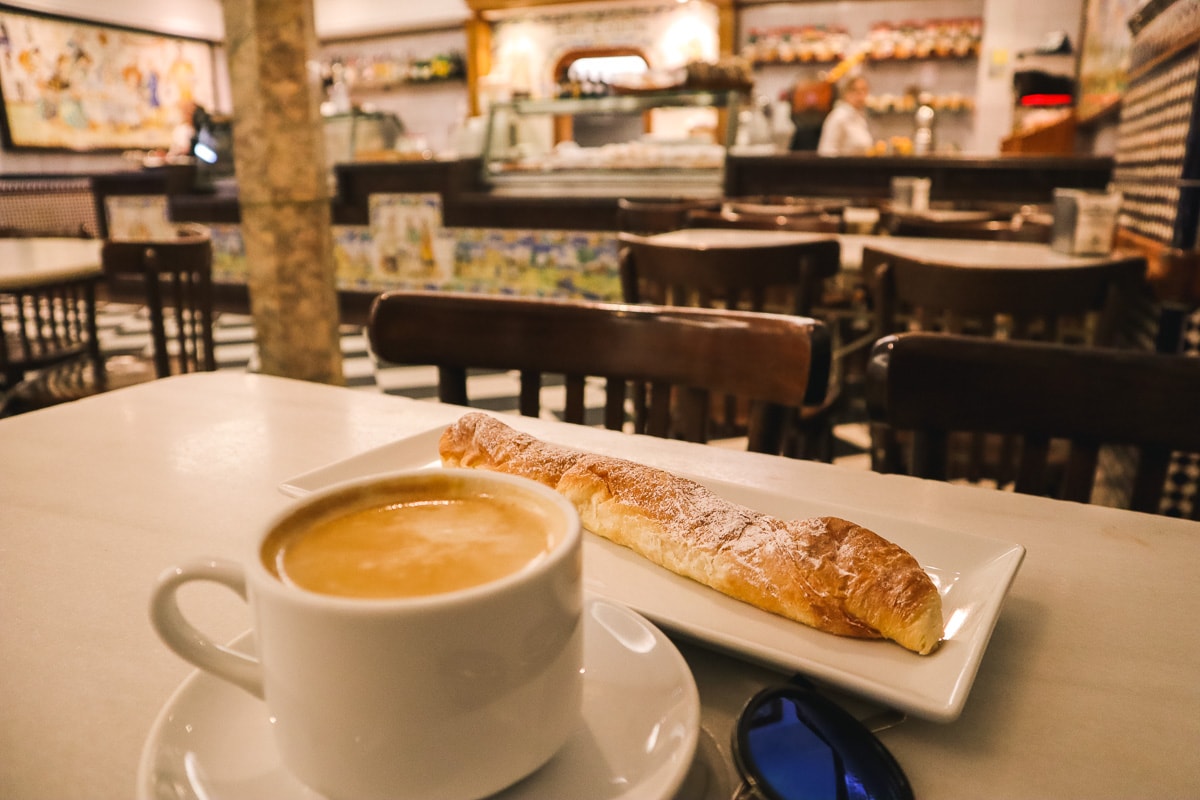
Sample Valencia’s vegan food
If you’re looking for vegan food in Valencia, don’t worry, you won’t be disappointed. Firstly, it’s worth noting that there are usually several vegetarian or vegan tapas dishes on the menus at tapas bars across the city. Padron peppers, patatas bravas etc are all safe options.
Specific places I’d recommend for vegetarian and vegan food in Valencia include Aloha Vegan Delights (acai bowls, vege kebabs and more), Khambú (vegan junk food), Nomït (no-meat geddit?!) and The Nature Restaurant (all you can eat vegetarian Chinese buffet).
For a food market with a difference, visit Mercado Colón
Are all Spanish markets beautiful? It seems so! This one over in the Colón district is housed in another spectacular building, and is a stunning example of Valencian modernism. It was restored in 2003, and rather than a fresh food market like Mercado Central, this market is home to smart restaurants, cute bars and cafes.
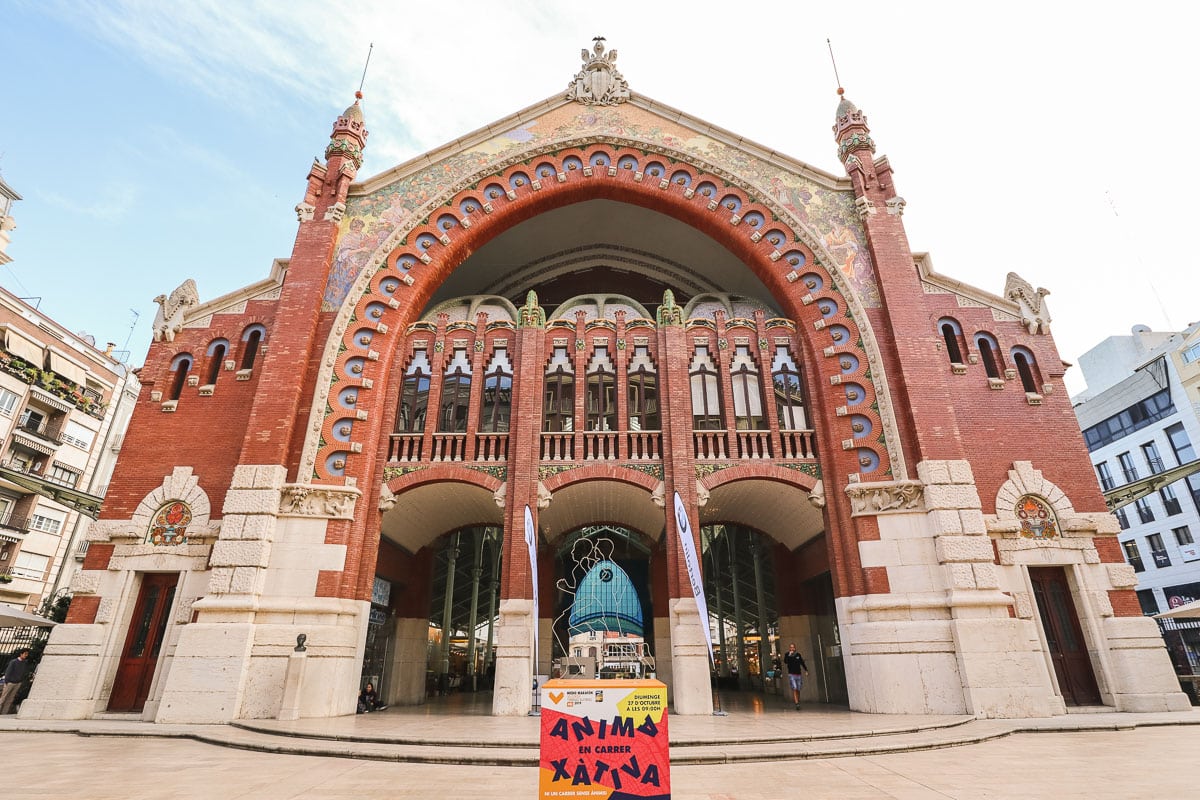
I hope you’ve enjoyed hearing about my top things to do in Valencia. It’s one of my fave places I’ve visited recently, and I’d recommend it for a city break in the sunshine. Let me know your favourite places in the city or leave any questions below!
Looking for other things to do during your trip? Find out my top picks of where to stay in Valencia , where I think you should go for the best view of Valencia , whether it’s worth buying the Valencia Tourist Card and read about my tapas tour of Valencia .
Enjoyed this post? Pin it for later…
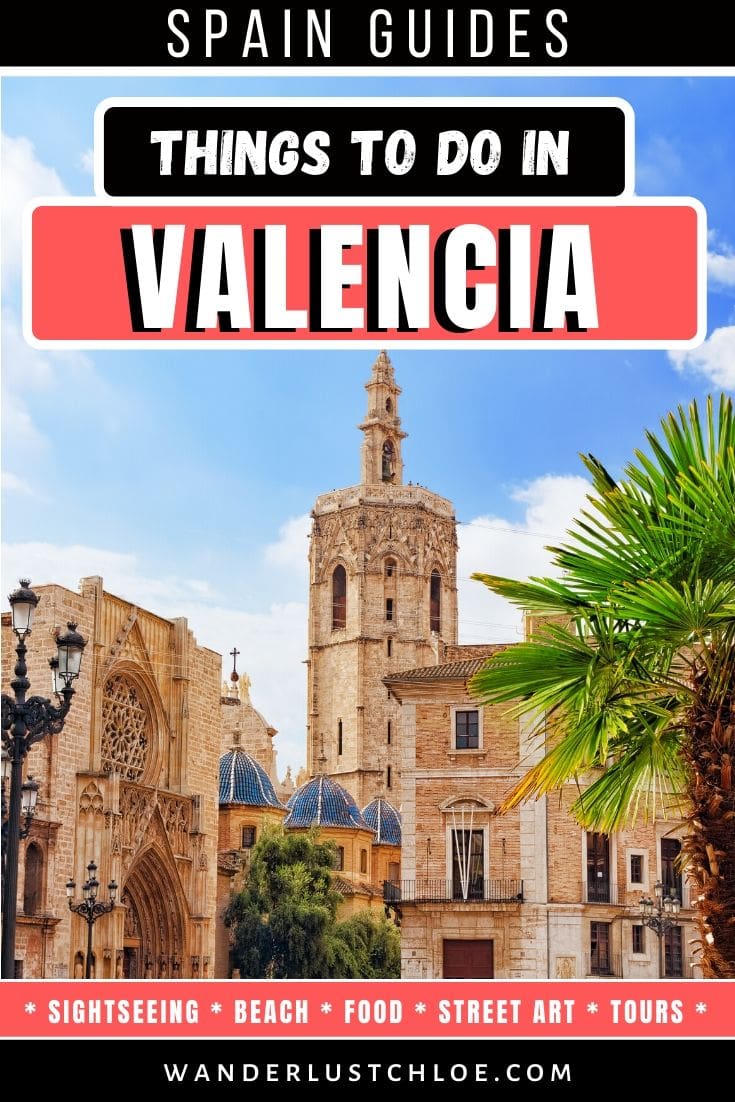
Chloe Gunning
With a passion for food, fun and adventure, Chloe is the content creator behind one of the UK's top travel blogs Wanderlust Chloe. From volcano boarding in Nicaragua, to sailing around Sicily and eating her way around Japan, her travels have taken her to some of the coolest spots on the planet. Named Travel Influencer of the Year in 2022, Chloe regularly works with a number of tourism boards, producing inspirational travel content across multiple platforms. Find out more about Chloe here.
3 thoughts on “29+ AMAZING Things To Do In Valencia, Spain”
Hello! First I want to say looots of thank you for your blogs about Valencia. I am also very rigorous whenever I go on a vacation so I do my research. And from all the information I found via internet, your blogs felt the most useful for me. I found very good tips, I was happy to read that there are other people that think about all the little details I think about (people around me sometimes say it it too much :))) Your blogs made my mind a lot clear regarding what I would like to visit and what is where. I found it useful to pin on Google Maps the locations that I will visit and also easier to make my own program. Plus, amazing photos! <3 Loved it!
Hi Flori, That’s so lovely to hear you found my post useful! I always do that with Google Maps too – makes it nice and easy to find the best places as you wander a city. Have a great time!
Awesome…! Full of great info. Used it all day today and will do so again tomorrow… Thank you Chloe…!!
Leave a comment Cancel reply
Top 25 Valencia Sights and Day Trips
What to Do and Where to Go Nearby
First the bad news. Valencia, Spain's third biggest city, doesn't have that iconic, must-see reason to visit . There's no Sagrada Familia or Prado museum here, or anywhere near the number of sights Madrid and Barcelona have.
But Valencia is still a fine place to visit. It is under two hours from Alicante and Madrid (though the latter is on an expensive high-speed train ) and three hours from Barcelona . If it fits into your schedule, you'll find a city that doesn't feel as big as it actually is (the suburbs sprawl out much further than a tourist will ever see), with fine cuisine at good prices and a number of excellent museums.
- Compare Prices on Hotels in Valencia on TripAdvisor
Jamie Ditaranto / TripSavvy
1. Explore the Old Town Explore the city center, starting with the two main squares (Plaza Ayuntamiento and Plaza Victoria).
2. Cathedral Valencia's cathedral is said to be home to the Holy Grail.
3. City of Arts and Sciences This mega cultural center, designed by Calatrava, is host to a dolphin show, an IMAX movie theater, a science museum, and much more.
4. Port & Beach Valencia's revamped port area has played home to the America Cup in recent years and now hosts a Formula One Grand Prix every year. The beach is good as far as city beaches go, though there are better ones in the region.
5. Mercado Central Valencia's market is more spacious than the more famous Boqueria market in Barcelona, less touristy and not so expensive.
6. La Lonja The old silk exchange looks like something out of Lord of the Rings.
7. Bullring Valencia's bullring is a modern design, but that doesn't mean it doesn't get some good fighters occasionally, especially during the Fallas festival .
TripSavvy trusts its readers to make their own decisions on the ethics of bullfighting as an attraction.
8. Turia River The river Turia passed through the city until a 1957 flood forced the council to redirect it around the city. The former riverbed is now a park that snakes through the city. There's also a fun Gulliver (from Gulliver's Travels) children's climbing frame.
9. Bioparc Valencia's self-proclaimed "new generation zoo" is walking distance from the city center.
After a while, all cities can blur into one and another. If you want to stretch your legs a little and get out of metropolis, take one of these day trips from Valencia.
10. Cuenca A beautiful city on the way to Madrid , now accessible from Valencia by high-speed rail, famous for its 'hanging houses', dwellings that hang off the edge of a cliff.
11. Segorbe A water park, cathedral, and aqueduct await visitors to Segorbe.
12. Castellon The largest city between Valencia and Barcelona.
13. El Palmar The rice fields where paella's key ingredient was first grown. There are some good paella restaurants in the area.
14. Cueva de las Calaveras Ancient caves with all the stalagmites and stalactites you'd expect of ancient caves.
15. Requeña Valencia's wine-producing town.
16. Xativa Historic town with a scenic castle built on a hilltop.
Jamie Ditaranto / TripSavvy
Valencia is at the heart of Spain's reputation for great Mediterranean cuisine, with plenty of great food for you to try. But the two you mustn't leave the city without sampling are:
17. Paella Spain's most famous dish comes from Valencia! More on paella in Valencia .
18. Horchata Valencia's milky (though there's no actual milk in it) drink, made from tiger nuts, whatever they are. (No, they're not that .) More on Horchata in Valencia.
Valencia's museums don't hit the international headlines, but there are several tjhat are worth visiting.
19. MuVIM museu valencia illustracio i de la modernitat This museum has such a strange name that it is invariably referred to by its acronym. Excellent street photography that probably "challenges our relationship to the modern world" or something like that, if you bother to read artists' pretentious blurbs.
20. Toy Soldier Museum Truly a lovely museum! Toy soldiers re-enact famous eras from history—from prehistoric man to Franco's motorcade. Children will love running around choosing their favorite scene and it's a great way to spark a child's interest in history.
21. Valencia's Modern Art Institute Pop art, sculpture, photography and art installations are the focus of Valencia's modern art museum.
22. Museo de Bellas Artes Valencia's fine art museum, next to the royal gardens.
23. Prehistoric and Ethnology Museums Two interesting museums, housed in the same building, next door to the modern art institute.
Things to Do in Valencia: Festivals
Valencia has two wonderful festivals.
24. Tomatina Tomato Fight The world's most famous food fight .
25. Fallas Valencia's festival of bonfires and loud bangs mixes hedonistic fun, glorious pyrotechnics and a religious element for grandma.
The 10 Best Day Trips from Valencia, Spain
What You Should Eat in Spain: City by City
Spain's Must-See Sights and Attractions: City by City
19 Regions and Islands of Spain: From Worst to Best
Plan the Perfect Trip to Spain
The 20 Best Things to Do in Spain
The Very Best of Spain's Cities, Regions, Food, and Drinks
One Week in Spain: The Ultimate Itinerary
Top 20 Most Popular French Cities for International Visitors
Las Fallas Valencia Dates for 2020 and Beyond
15 Best Under-the-Radar Places to Visit in Spain
Top 12 Day Trips From Malaga, Spain
The Best Day Trips from San Sebastian and Bilbao
The 12 Best Day Trips From Barcelona
Navigating Valencia's Bus and Train Stations
The Best Day Trips From Reykjavik

12 Things to do in Valencia
System messages
The coolest nights out, the most romantic sunsets, the tastiest paella and the most original festivities all await you in Valencia – traditional, radical, always Mediterranean.
Taste a real paella next to the sea
Yes, you’ve probably already planned to have paella. But what you might not know is that our most well-known dish tastes even better with a sea view. That’s why we recommend the restaurants at Las Arenas beach, with panoramic views of the Mediterranean, or those at the Albufera Natural Park. Wherever you go, you’ll love it!
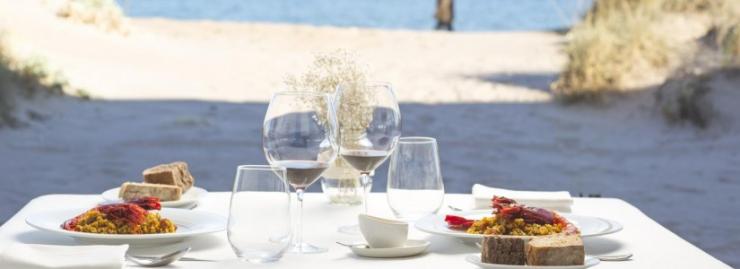
Experience Fallas like a Valencian
Start by seeing a resounding mascletà , take a look at some of the 750 monuments that fill the city with satire and humour, enjoy the smell of the flowers brought to the Plaza de la Virgen for the Ofrenda , enjoy a night full of fireworks, concerts and parties, have buñuelos and chocolate for breakfast, and if you’re not too tired, go to a despertà . Those are just some of the things you can do if you visit between the 15 th and 19 th March, are you in?
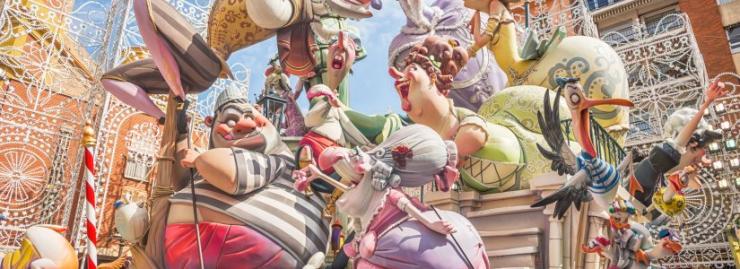
Dance until sunrise in the coolest places
Want to find out why Valencia has a reputation for its nightlife? Before going out, have dinner by the sea, then have drinks at a terrace in the area of el Carmen, or in a XVI century house and end up dancing techno, indie or pop until you can’t carry on. And if you’re hungry before you go to bed, an “ esmorzaret ” is a great idea.

Go shopping and find the latest trends
Valencia intense commerce is a fusion of tradition and modernity. Spend an afternoon shopping in the historic centre, el Carmen, Ruzafa or Eixample, and choose from international brands and creations of Valencian designers which are sure to surprise you.

Have a horchata and fartons
There’s no better place to have this popular drink made from “ chufa ” a fruit that is only grown in Valencia. Have it for breakfast or for a snack, either liquid or as a sorbet texture, and remember to ask for “ fartons ” to dip which will sweeten your day. You can try it at any time because, just like Vampire Weekend sang, you can drink horchata in December too!

Go through the Turia Garden by bike
Would you like to see Valencia from east to west without passing a single car? Then head to the river! No, it’s not a joke. The old river bed of the Turia has been converted into a leafy 9-kilometre-long garden which connects the Parc de Capçalera with the City of Arts and Sciences. If you go by bike you can discover the fantastic museums, monuments and bridges that the river has to offer.
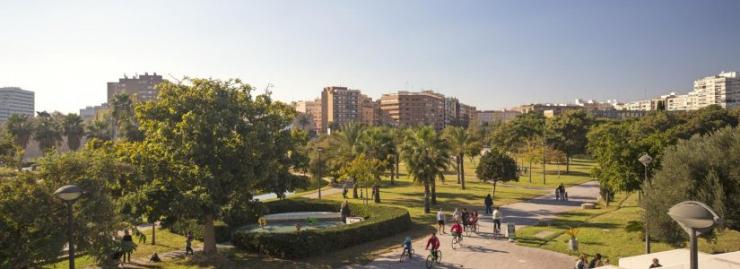
Take pictures of the spectacular sunset at the Albufera
The best way of getting to know this ecologically valued lagoon is taking a boat trip at sunset. The Albufera Natural Park offers a visual spectacle where the sky blends with the sea and, of course, you’ll be able to take some of the most beautiful photos of your trip.

Do a route to try tapas and beer
Grilled cuttlefish, steamed mussels, Serrano ham, clams, “ esgarraet ”, baby squid, patatas bravas … If it’s already making your mouth water, just wait until you try them! You can start the route at the stalls of Plaza del Mercado, continue past the Lonja steps, the Plaza del Collado, Plaza Negrito and Calle Caballeros, finishing at Plaza de la Virgen.
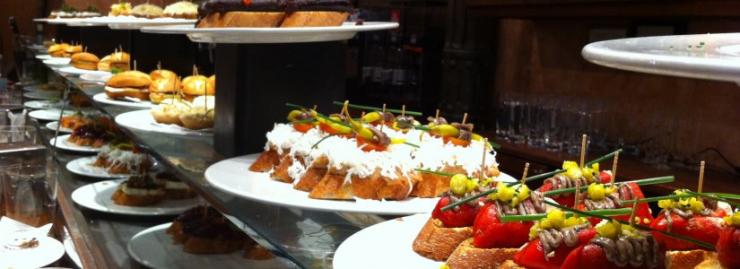
Take in Valencia’s views from the Miguelete tower of the Cathedral
The most emblematic tower in Valencia is a required visit. You can climb the 207 steps of the spiral staircase and reach the top of the bell tower, where you’ll have an impressive 360º view of the city. You won’t regret it!

Cheer on the best teams in the Spanish Football League
Experience the thrill of football (or soccer) in the stadiums of Mestalla and Ciudad de Valencia . From mid-August to early June, you can see the games of Valencia CF and Levante UD and cheer on some of the world's best players. Oe, oe, oe, oeeeeee!
You can also visit the home of the Valencia Football Club with the Mestalla Forevertour and discover the history of the team through its trophies, touch the grass with your own hands and feel the thrill of being a professional player. And if you want a souvenir from the club, visit the Megastore Valencia CF temple to sports fashion with all the kits and all the accessories you need to play while wearing the shield of Valencia CF.
Valencia Football Club

MESTALLA TOUR
Discover our culture with the Silk Road
The Golden age of the silk trade brought an economic, social and cultural revolution along with it, which changed Valencia. Follow the hidden Silk Road route by walking through the Velluters area, the Silk Museum, the Silk Exchange (Lonja de la Seda, UNESCO World Heritage Site) and the typical Valencian dress shops.

Traverse the Mediterranean on board a catamaran
Listening to chill out music while the sea gently rocks the boat and the sun hits your skin, is an experience that can only be improved with a glass of wine in your hand. Get aboard a catamaran from Mundo Marino and look out over the unbeatable view: the sunset at the Juan Carlos I Marina. What more can you ask?
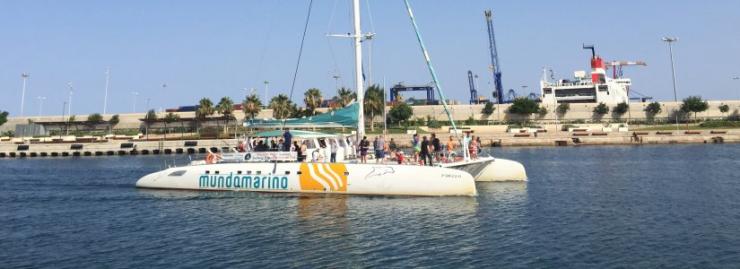
Enjoy an afternoon of the finest basketball
Cheer on Europe's best basketball players at the Fonteta Pavilion. From October to early June, you can take in the games of the top-flight Valencia Basket Club's men's and women's competition. You can get yourself kitted out and buy a souvenir at the Valencia Basket store.
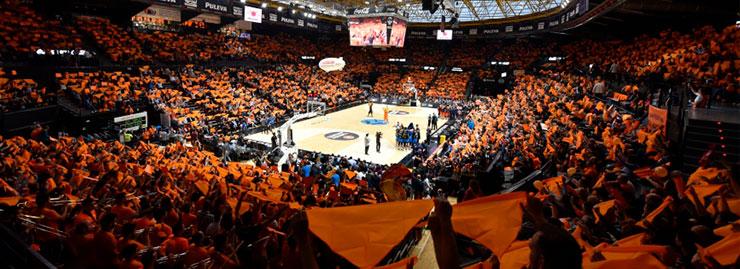
YOU MAY ALSO LIKE
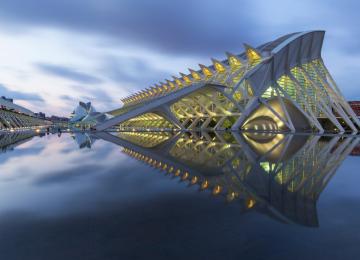
10 Essential places to visit

Best Valencia Walks
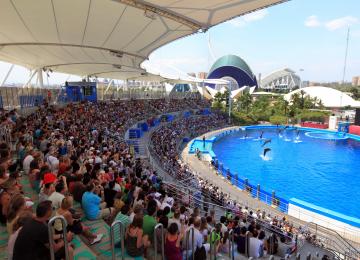
València Top Attractions
Subscribe to our newsletter.
Do not miss the best plans in Valencia!
© VISIT VALÈNCIA 2024 | FUNDACIÓ VISIT VALÈNCIA
- Skip to content
- Jump to main navigation
Nav view search
- Parks & Gardens
- City of Arts and Sciences
- Valencia top ten
- Hotels 5 star
- Hotels 4 star
- Hotels 3 star
- Hotels 2 star
- Hotels 1 star
- Hotels in Valencia Beach
- Hostals 2 star
- Hostals 1 star
- Youth Hostels
- Rent Apartment Valencia
- Accommodation Map
- Available Hotels
- Reservation Questions
- Itineraries
- Guided Tours
- Valencia surroundings
- Valencia Photo Gallery
- Valencia video
- Valencia YouTube
- Extended Photo Gallery
- Valencia Tourist Bus
- From the Valencia Airport
- Valencia city bicycles
- Valencia Car Rental
- Valencia Railway Stations
- How to reach the Port
- Taxi companies in Valencia
- Metro in Valencia
- Maps to download
- Valencia Online Map
- Valencia Tourist Card
- Tourist Info Offices
- Valencia Open Museum
- Valencia Travel Tips
- Valencia Weather
- Health information
- Valencia Public Holidays
- Official Languages
- Tourism Exhibition
- Valencia Events
- Currency in Spain
- Travel Insurance
- Feast of Corpus Christi
- Valencia July Fair
- Tomatina de Buñol
- Region of Valencia Day
- Valencia Opera Season
- Mediterranean Festival
- Flamenco in Valencia
- Valencia Jazz Festival
- Ricardo Tormo Circuit
- Formula One F1
- Valencia Football Club
- Visit Valencia CF Stadium
- Football Tickets
- Valencia Tennis Open
- Valencia Golf
- Sports on the beach
- Paella in Valencia
- Traditional Valencian dishes
- Valencian Wines
- Restaurants
- Valencia Shopping
- Things to do with kids
- Valencia Congresses
- Valencia Film Festival
- Valencia Escena Oberta
- Taronja Spanish School
- Don Quijote School
Valencia Attractions
Popular attractions.
- Oceanografic
- Lonja de la Seda
- Palau de les Arts Reina Sofia
- Mercado Central
- Museo de las Ciencias Principe Felipe
Torres de Serranos
- Jardin Botanico
Recommended
We are offering some of the best hotels deals in Valencia so check out the Hotels section. All hotels are conveniently located near landmarks and have been carefully selected and brought to you at the best possible price!.
Hotels Near
- Serranos Towers
- City of Arts & Sciences
- Train Station
We have 86 guests and no members online
Valencia top ten tourist attractions
- | Print |
For first-time visitors to the city, we offer a list of the most popular museums, sights and main tourist attractions in Valencia. Find out the best places to visit, from the Miguelete to the City of Arts and Sciences. Visit the famous attractions and activities in the city. This is the highlights that you can’t miss. The top ten tourist attractions in Valencia city , Spain.
Main sights and attractions
Plaza del mercado: lonja & mercado central.
The Plaza del Mercado is home to 3 buildings of interest, the Lonja , one of the best examples of gothic civil architecture in Europe which is Patrimony of the Humanity (UNESCO), the Iglesia de los Santos Juanes and the Mercado Central , a colourful market in a beautiful modernist building.
La Catedral and Plaza de la Virgen
Each of the three gates of the Catedral has a diferent style: Irons Gate (baroque), the Apostles Gate (gothic) and the Palace Gate (Romanesque). The bell tower El Miguelete where you can enjoy amazing views. And the Plaza de la Virgen sits on the site that once was the Roman forum.
The Torres de Serranos are considered to be the largest Gothic city gateway in all of Europe, and were constructed at 14th century by Pere Balaguer as part of the city's fortification. They provisionaly housed prison cells and served as a triumphal arch on many festive occasions.
Iglesia de San Juan del Hospital
The Iglesia de San Juan del Hospital is one of the oldest churches in Valencia, built around 1261. The temple has a single nave covered with a pointed barrel vault. Inside, you may contemplate the magnificent chapel of Santa Barbara with painted murals from the Gothic period.
Museo de Bellas Artes San Pio V
The Museo de Bellas Artes San Pio V is one of the most outstanding painting archives in Spain, renowned for its collections of primitive Valencian painters, although there are also works by El Greco, Velazquez, Murillo, Goya, and some archeological pieces. Located in a Baroque building.
Museo Nacional de Ceramica Gonzalez Marti
The Museo Nacional de Ceramica Gonzalez Marti is housed in a palace from 15th century and was refurbished in 1740 on rococo style with a magnificent alabaster entrance. Inside, you can find the 19th century rooms and a collection of tiles made in the Royal Ceramics Factory in Alcora.
Monasterio de San Miguel de los Reyes
The Jeronime Monastery of San Miguel de los Reyes was erected in the 16th century over the old abbey. The facade is in the Renaissance style and is framed by two towers with salomonic Baroque columns. The monastery also has two cloisters surrounded by arch galleries.
La Ciudad de las Artes y las Ciencias
The City of Arts and Sciences complex includes five buildings: Hemisferic is an IMAX cinema, the Museo de las Ciencias is a science museum, Oceanographic is a giant marine park or aquarium, the Palau de les Arts is an Opera House and the Agora is a multi-functional space.
El Puerto and La Playa
Valencia was hosting of the 32nd America's Cup, the international yact race, in summer 2007. Visit the Puerto and enjoy with the team bases, the house of America's Cup and the port sheds. After, walk by the promenade seafront in the Playa Las Arenas and Playa La Malvarrosa .
Bioparc Valencia is a new generation zoo conceived with the zoo-immersion philosophy. When entering the more than 100,000 m2 park, the visitor feels totally submerged in the wild habitats that have been recreated here: the Savannah, Madagascar and Equatorial Africa.

Top 12 Places To Visit In Valencia

If you're looking for a holiday destination that offers culture, history, and natural beauty all in one place, Valencia is the perfect spot for you.
Situated on the eastern coast of Spain, Valencia is home to some of the most stunning architecture and landscapes in the country. From its ancient cathedrals to its modern City of Arts and Sciences , there's something for everyone to enjoy in this vibrant city.
And if that's not enough, Valencia also boasts miles of pristine beaches and lush countryside waiting to be explored.
What Are The Best Places To Visit in Valencia?
Here are the top 12 places you won't want to miss on your visit to Valencia.
1. Plaza de la Virgen

The Plaza de la Virgen dates back to Roman times and is one of Valencia's oldest and most beautiful plazas. In the center of the plaza is an elegant Neptune fountain created by Silvestre Edeta, a local sculptor.
The square is surrounded by several important buildings, including the Palace of the Generalitat. Across from there is Valencia Cathedral Catedral and next to that is the most important Baroque church in Valencia, Basilica Of Our Lady Of The Forsaken (Basílica de Nuestra Señora de Los Desamparados). This church contains a beautiful fresco on its dome ceiling, painted by Antonio Palomino in 1703.
Plaza de la Virgen is a central destination and a great place to start your walk through the historic downtown. There are also several cafes on the square, so it's a great place to stop for ice cream or a drink.
2. Catedral de Valencia

Valencia Cathedral , or the Cathedral of the Holy Chalice, is one of Spain's most unique cathedrals because it is a combination of different architectural styles. The site on which the cathedral now stands has been steeped in history for centuries; first as an ancient Roman temple, then as a Moorish mosque. Construction on the cathedral began in the 13th century, with renovations taking place in the 15th and 17th centuries.
Be sure to walk around the entire building and take note of the different architectural styles used on each facade. Truly, a very unique building!
The Cathedral is beautiful and unique both from the outside and inside.
The Chapel of the Holy Grail inside the Cathedral contains beautiful vaulting and star motifs. It illustrates a scene with the 12 apostles in Heaven as well as the coronation of the Virgin Mary. The most precious item is a reliquary housing the Holy Chalice, which is an artifact from the early first century AD supposedly used by Jesus during Holy Eucharist.
The Cathedral of Valencia also has a museum, the Museo Catedral de València. You can also climb to the top of El Miguelete (the Miguelete Tower) for a panoramic view of Valencia's cityscape.
3. Mercado Central

The Mercado Central is a beautiful marketplace built in 1928. The Art Nouveau building is adorned with stunning decorative ceramics ( azulejos) that are typical of the region. The hall contains hundreds of market stalls selling fresh fruits, vegetables, and food products from Valencia as well as other areas of Spain.
Stop by in the morning for a coffee and to watch the locals go about their shopping. And pick up some fresh fruit while you're at it.
My personal favorite is the fresh juice. There are so many fruit flavors to choose from!
4. Torres de Serranos

The Torres de Serranos, located in Valencia, is a grand fortification symbolic of the town. The structure represents one of the ancient gates into the Old Town and harkens back to a time when Valencia was surrounded by walls for defense purposes. These town ramparts were constructed during the 14th century upon Roman foundations.
The Serrano Towers have been restored to their original beauty and stand as a monument in the city. These courts not only offer an amazing view of the skyline but also transport visitors back in time. As you walk through the grand entrance, which is complete with Gothic details and shields from the city's coat of arms, you'll feel like you're stepping into another era.
Tip: Take the time to climb to the top of the tower. The entrance is free and you'll enjoy a beautiful view of the city.
5. Palacio del Marqués de Dos Aguas

The Palacio del Marqués de Dos Aguas is famous for its luxurious exterior and intricately designed interior.
This 18th-century palace originally belong to a noble family, but now holds the González Martí National Museum of Ceramics, which opened in 1947.
Inside you will find over 5,000 examples of traditional pottery from Valencia and the neighboring area.
Additionally, there are many other fascinating pieces on display such as ancient Greek, Roman, and Arab pottery; as well as delicate porcelain originating from the Silk Route in China or Japan.
The collection also has some amazing modern art, including some of Picasso's works.
6. Museo de Bellas Artes

The Museum of Fine Arts of Valencia is Spain's second-largest art gallery. The museum displays art from the 15th to 19th centuries, including works by important Valencian painters like Joaquín Sorolla and Francisco de Goya.
For any art lover, this is a must-see stop.
Gothic art lovers will be especially impressed, as there are several rooms containing artwork in that style. For a deeper understanding of the Valencian school, I recommend taking a look at the works of Pinazo and Benlliure included in the collection. This will give you an interesting look into the city's culture and rich art and historical tradition.
In addition to its outstanding Renaissance paintings--with Valencia being the point where this style entered Spain--the museum also features important works by Velázquez.
7. Bioparc Valencia

At Valencia's zoo , the landscape of the park simulates native habitats as closely as possible to provide animals with the best environment.
Rather than separating different species, they exist together as if in their natural environments. For example, lions, giraffes, antelopes, and rhinoceros all live together on the savannah just like they would in nature. Gorillas live amongst the dense trees of an equatorial forest while hippopotami and crocodiles take refuge in the water to cool down.
The zoo is known for its large collection of African animals and its focus on sustainability.
8. La Lonja de la Seda

The Silk Exchange buildings are one of the hidden gems of Valencia many tourists miss.
The collection of buildings, constructed between 1482 and 1533, was once used for trading silk (thus its name, the Silk Exchange). It has always been a hub for commerce and is now a UNESCO World Heritage site .
The grandiose Contract or Trading Hall illustrates the prosperity and power of a major trading city in southern Europe during the 15th and 16th centuries. The architecture is an exemplary example of the late Gothic style and is well worth a visit.
9. Plaza Redonda

The Plaza Redonda, designed by Salvador Escrig Melchor in 1840, is one of Valencia's enchanting tourist attractions.
You can browse small stalls selling lace, embroidery, fabrics, and Valencian souvenirs while surrounded by traditional craft shops.
If you stand by the fountain in the center, you can take in the beautiful view of Santa Catalina's Late Baroque bell tower. The three-story building is capped off with a magnificent structure, which offers visitors a wonderful sight to behold.
10. Horchaterías de Santa Catalina

Horchata, a sweet drink that resembles milk, is very popular in Valencia. It's made of chufas--tiger nuts that originally come from Egypt but now are grown in Alboraya (located in the province of Valencia).
Oftentimes, you can get a farton (a sweet pastry) with your horchata in Valencia--and it's the perfect combination! This was my favourite combination.
Horchaterías de Santa Catalina located around the corner from Plaza Redonda is a beautiful cafe designed in the Art Nevou style and the perfect place to stop for a refreshing horchata.
11. Turia Park

If you're looking for a breathtaking place to take a walk or go on a run, the Turia Garden is your perfect spot.
This urban park in Spain crosses 18 bridges and boasts 9 kilometers of gorgeous green space. As a bonus, it's also full of historical landmarks and runs by some of the city's most popular museums.
Interesting fact: The gardens were once the riverbed of the Turia. After many flooding incidents, the river's course was changed to prevent future floods. This is why you'll still see many bridges throughout the park.
So if you're a runner, cyclist, nature enthusiast, or just looking for a beautiful place to relax with your family, the Turia Garden should be at the top of your list!
12. La Ciutat de les Arts i les Ciències de València

The City of Arts and Sciences is an incredible cultural and scientific center located in Valencia. The complex, which stretches two kilometers along the Turia River, was designed by world-renowned architects Santiago Calatrava and Félix Candela.
The Ciudad complex is divided into six sections: the Hemisfèric IMAX Cinema, which screens 3-D digital films and serves as a planetarium; the Umbracle landscaped area with stunning views; The interactive museum of Science, environment, and Technology known as Museu de les Ciències; Europe's largest aquarium, Oceanogràfic; Palau de les Arts opera house; and lastly, Ágora concert space.
A contrast to the historic downtown, this avant-garde complex is worth a visit.
Wrapping Up And My Experience In Valencia
Valencia is a beautiful and historic city with plenty to see and do. From its stunning cathedrals to its modern architecture, there's something for everyone. And of course, let's not forget the delicious food!
I spent a week here in the summer of 2022 and would have gladly extended my stay. The city is easy to navigate and the people are friendly and welcoming. I highly recommend a visit to Valencia, whether you're looking for a romantic getaway or a family-friendly holiday.
From exploring Valencia's rich history to its exciting present, you're sure to have a wonderful time.
Have you been to Valencia? What was your favourite part of the city? Let us know in the comments below.
This travel experience was kindly contributed by Alisa Goz , a digital nomad, travel blogger, and passionate life-long learner.
- About Author
- Latest Posts

I'm a travelholic and started visiting Spain around 10 years ago. Have travelled the length and breadth of this beautifully contrasting country. “Remember that happiness is a way of travel, not a destination.”
Latest posts from Lily
- Top 12 Places To Visit In Valencia - October 24, 2022
- Top Tips To Ensure Your Holiday To Spain Runs Smoothly - September 2, 2022
- The 24 Most Important Spanish Phrases To Learn - August 15, 2022
Recent Posts

4 Days in Valencia – The Ultimate Bucket List Itinerary
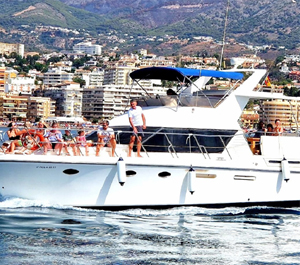
Luxury Spain Holidays – The Ultimate Bucket List Travel Guide
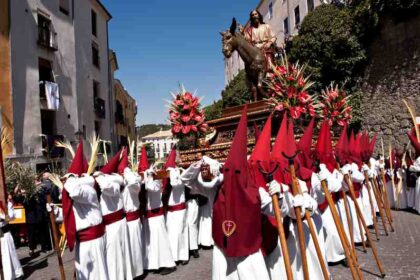
Easter in Spain – Semana Santa Holy Week Traditions

Barcelona Nightlife – Best Discos & Nightclubs Not To Be Missed
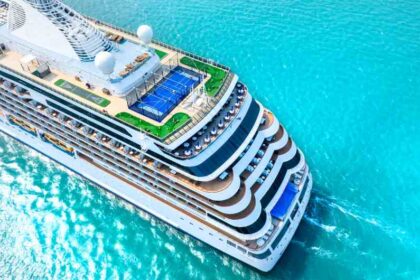
Making The Most Of Shore Sightseeing Excursions In Spain Whilst Cruising The Med
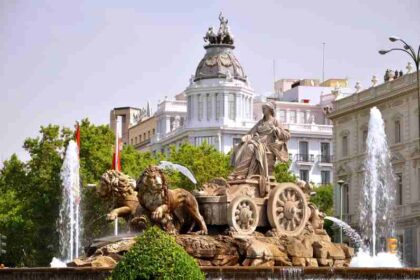
The Ultimate Spain Bucket List – 300+ Spanish Experiences

9 Great Cultural Sites to Visit in Madrid

16 Christmas Traditions in Spain You Should Know About
Leave a reply cancel reply.
Your email address will not be published. Required fields are marked *
This site uses Akismet to reduce spam. Learn how your comment data is processed .
Disclosure: Please note that some of the links included in the above content may be affiliate links. We may earn a commission if you make a purchase at no extra cost to you. Rest assured, we only recommend products and services that we personally use or have used and are happy to recommend. Any commission we earn helps toward the site's running costs.

Travel Smarter - Not Harder
Download free e-guides and travel tips.
Start your Journey today and get access to exclusive FREE content.
Username or Email Address
Remember Me
- WHY VISIT SPAIN?
- TRAVELLING TO SPAIN
- SPAIN ON A BUDGET
- TRAVEL REQUIREMENTS – ETIAS
- SPAIN ENTRY REQUIREMENTS
- SPANISH CUISINE
- SPANISH FOOD
- HOLIDAY IDEAS
- PUBLIC HOLIDAYS
- TOURISM BOARDS
- AIRPORT GUIDE
- DRIVING IN SPAIN
- WEATHER IN SPAIN
- FREE WEB CAMS
- BEST BEACHES SPAIN
- FESTIVALS & FIESTAS
- MUSEUMS IN SPAIN
- CAMPING IN SPAIN
- MARINAS IN SPAIN
- SKIING IN SPAIN
- WATER PARKS
- UNESCO WORLD HERITAGE SITES
- 80 BEST ATTRACTIONS
- 71 BEST PLACES TO VISIT
- REGIONS OF SPAIN
- COSTA DEL SOL
- CANARY ISLANDS
- SAN SEBASTIAN
- Complete List:
- SAGRADA FAMILIA BARCELONA
- BARCELONA FC STADIUM TOUR
- BARCELONA FLAMENCO SHOW
- SEVILLE FLAMENCO SHOW
- SEVILLE CATHEDRAL
- GAUDI`S CASA BATLLO
- THE ALHAMBRA GRANADA
- SANTIAGO CATHEDRAL
- CITY OF ARTS & SCIENCE VALENCIA
- MOSQUE-CATHEDRAL CORDOBA
- CAMINITO DEL REY
- PRADO MUSEUM MADRID
- REINA SOFIA ART MUSEUM
- SCUBA DIVING
- BEST TAPAS TOURS
- BEST WINE TASTING TOURS
- TOUR GUIDES
- HOTELS IN SPAIN
- LUXURY HOTELS
- LUXURY BEACH HOTELS
- HOLIDAY RENTALS
- PARADOR HOTELS
- CHEAP FLIGHTS
- TRAVEL INSURANCE
- FREE TRAVEL BROCHURES
- WIN FREE HOLIDAYS


8 Cool Cities In Spain To Visit For First Timers
Planning a trip to Spain for the first time? Get excited, because Spain is truly amazing.
Spain’s got it all — dreamy architecture, flamenco, tapas, Iberico ham, paella, local markets, and tons of cities that’ll make you want to live there forever.
The country will easily steal your heart with its natural landscapes, from the sun-drenched beaches of the Costa del Sol to the rugged peaks of the Pyrenees, offering tons of opportunities for adventure and relaxation.
It’s also home to some world-famous festivals, such as the Running of the Bulls in Pamplona and La Tomatina in Buñol, both of which showcase the country’s passion, energy, and zest for life!
You’re not going to be able to see it all on your first visit, and chances are you’re going to have to narrow down the cities you want to visit to just a mere handful. In this post, I’ll cover some of the best Spanish cities/small towns for first-timers to visit.
I personally love taking day trips from larger, more well-known cities to explore smaller towns, so I’ve included some side trip ideas below too. These towns are often way less crowded and hold an equal amount of cultural immersion, sights, and downright magic in them!
This post may contain affiliate links. You won’t be paying a cent more, but in the event of a sale, the small affiliate commission I receive will help keep this blog running/pumping out useful and free content. Thanks a lot!
Barcelona, Spain
Barcelona is perhaps the most popular city in Spain, known for its truly unique architecture (Gaudí all day!), rich history, and an ALWAYS lively atmosphere.
One of its most famous landmarks here is the Sagrada Familia , the unfinished masterpiece of architect Antoni Gaudí. While you’re here, you absolutely must spend a morning exploring Park Güell — another of Gaudí’s creations — featuring colorful mosaics and whimsical sculptures.
The city’s Gothic Quarter is another highlight. It’s a maze of narrow streets lined with medieval buildings, leading to the iconic Barcelona Cathedral.
Top 5 things to do in Barcelona
- Visit the Sagrada Familia and Park Güell to admire Gaudí’s architectural brilliance. Better yet, take a Gaudí walking tour ! It’s one of my favorite things to do — I’m a huge Gaudí fan!
- Take a stroll along the bustling Las Ramblas , lined with shops, cafes, and street performers.
- Explore the Gothic Quarter , home to historic landmarks like the Barcelona Cathedral and the Picasso Museum.
- Relax on the city’s beaches, such as Barceloneta Beach , and enjoy the Mediterranean sunshine!
- Indulge in Catalan cuisine at the Boqueria Market , sampling ALL the local delicacies like jamón ibérico and seafood paella.
What else is near Barcelona?
Barcelona pairs well with day trips to nearby cities such as Girona , known for its well-preserved medieval architecture, and Sitges , a charming coastal town with beautiful beaches and a happening arts scene.
Seville, Spain
Seville (Sevilla), the capital of Andalusia, is easily one of the most picturesque towns in Spain. If you can imagine a Spanish town that oozes romantic vibes, it’s Seville.
This city is world-famous for its Moorish architecture, flamenco music, and a blend of cultural activities perfect for first-timers.
The city’s most iconic landmark is the Alcázar of Seville , a royal palace that has gardens as lush as can be and intricate tilework all throughout. The Cathedral of Seville , one of the largest Gothic cathedrals in the world, is also a must-visit for its impressive architecture and the tomb of Christopher Columbus.
My favorite place to spend a few hours in Seville? Plaza de España . Don’t miss the most scenic stroll through Parque de María Luisa to get there!
Top 5 things to do in Seville
- Explore the Alcázar of Seville , marveling at all the architecture and beautiful gardens.
- Visit the Cathedral of Seville and climb the Giralda Tower for panoramic views of the city.
- Experience flamenco at one of Seville’s traditional tablaos, such as La Casa del Flamenco or El Palacio Andaluz.
- Wander through the charming streets of the Santa Cruz neighborhood , filled with whitewashed houses, orange trees, and hidden squares.
- Enjoy tapas and drinks in the lively neighborhood of Triana , known for its traditional bars and flamenco clubs.
What else is near Seville?
Seville is ideally situated for day trips to historic cities like Córdoba , with its magnificent Mezquita (mosque-cathedral), and Jerez de la Frontera, renowned for its sherry wine and equestrian tradition.
Toledo, Spain
Toledo, known as the “City of Three Cultures,” is celebrated for its super medieval vibes, rich history, grand architecture, and cultural heritage.
Perched on a hill overlooking the Tagus River, the city is home to a wealth of historic landmarks, including the imposing Alcázar fortress and the magnificent Toledo Cathedral . Expect the historic streets to be almost like a winding maze, with streets lined with medieval buildings, synagogues, and mosques, reflecting all the influences of its past (Moorish, Catholic, and Jewish).
While you’re here, check out all the gift shops selling medieval swords and knives! Even if you’re not interested in buying, it sure is fun to peruse.
Top 5 things to do in Toledo
- Visit the Toledo Cathedral , a masterpiece of Spanish Gothic architecture, and marvel at its beautiful interiors and intricate artwork.
- Explore the Alcázar of Toledo , a medieval fortress with amazing views of the city and surrounding countryside.
- Wander through the narrow streets of the Jewish Quarter , discovering hidden squares, synagogues, and artisan workshops.
- Admire El Greco’s masterpieces at the Museo del Greco , housed in the former home of the renowned painter.
- Take a leisurely stroll along the city walls for panoramic views of Toledo’s historic skyline and the surrounding countryside. These views are definitely worth checking out. You can even zipline across the river!
What else is near Toledo?
Toledo is conveniently located for day trips to nearby cities like Aranjuez , known for its magnificent royal palace and gardens, and Segovia , famous for its ancient Roman aqueduct and fairy-tale castle.
You may also like:
Planning A Trip To Europe: Travel Solo or Go With Contiki?
Salamanca, Spain
Salamanca, often referred to as the “Golden City,” is best known for its pretty architecture, prestigious university, and youthful atmosphere. This is a lesser-visited city, so it’s a great option if escaping tourists is what you’re after.
Its historic center, designated a UNESCO World Heritage Site, is home to iconic landmarks such as the Plaza Mayor , a grand square surrounded by ornate Baroque buildings. In fact, this is THE largest plaza you’ll find in all of Spain!
The city’s university, founded in the 13th century, is one of the oldest in Europe and is home to a must-visit library and an impressive façade adorned with intricate carvings.
Top 5 things to do in Salamanca
- Hang out in the Plaza Mayor , Salamanca’s main square, to admire the grand architecture and take in the always-lively atmosphere.
- Visit the University of Salamanca , one of the oldest universities in Europe, and explore its historic buildings and beautiful courtyards.
- Wander through the historic center and enjoy the charming streets, picturesque squares, and beautiful churches (like Salamanca Cathedral).
- See the Convento de San Esteban , which is not as commonly known/visited by tourists but it’s VERY pretty and I highly recommend it.
- Climb the towers of the Clerecía Church for nice views of the city and countryside.
What else is near Salamanca?
Salamanca is a great base for day trips to nearby cities such as Ávila , known for its well-preserved medieval walls, and Zamora , famous for its Romanesque architecture and historic churches.
Madrid, Spain
Madrid is the capital of Spain! Known for its rich history, world-class art museums, lively street life, and tons of nightlife, this major city has so much to see and do. If you choose to add Madrid to your itinerary, do yourself a favor and give yourself at least 4-5 days to explore!
The city is famous for landmarks like the Prado Museum , home to masterpieces by artists like Velázquez and Goya, and the Royal Palace , a grandiose royal residence with lavish interiors.
You can explore the bustling Puerta del Sol square , the historic Plaza Mayor , and the elegant Retiro Park , a sprawling green oasis in the heart of the city. And while you’re here, your non-sightseeing focuses should be churros, tapas, and catching a flamenco show!
Top 5 things to do in Madrid
- Visit the Prado Museum to admire its impressive collection of European art, including works by Spanish masters like Velázquez and Goya.
- Explore the Royal Palace , the official residence of the Spanish royal family, and marvel at its opulent rooms, grand halls, and beautiful gardens.
- Wander through the charming neighborhoods of Malasaña and Chueca , known for their funky shops, trendy cafes, and poppin’ nightlife!
- Enjoy tapas and drinks in the historic neighborhood of La Latina , home to some of Madrid’s best tapas bars and traditional taverns.
- Experience the lively atmosphere of the San Miguel Market , a foodie paradise offering a wide variety of Spanish delicacies and gourmet treats.
What else is near Madrid?
Madrid pairs well with day trips to nearby cities such as Toledo , which we covered above (medieval / Game of Thrones vibes), and Segovia , also mentioned above (the fairytale-like castle).
Granada, Spain
Granada, nestled at the foot of the Sierra Nevada mountains, is famous for its Alhambra palace, a UNESCO World Heritage Site. This is hands-down one of Spain’s most iconic landmarks — countrywide.
The city’s Moorish heritage is evident in its historic Albaicín neighborhood , home to a labyrinth of narrow streets, whitewashed houses, and picturesque squares.
Top 5 things to do in Granada
- Visit the Alhambra palace complex, a masterpiece of Moorish architecture with stunning gardens, palaces, and fortifications. This is a MUST for first-timers!
- Explore the Albaicín neighborhood , a UNESCO World Heritage Site known for its Moorish architecture, medieval streets, and great views of the Alhambra.
- Wander through the historic streets of the Realejo neighborhood , home to beautiful churches, charming squares, and hidden courtyards.
- Experience a traditional flamenco show in one of Granada’s intimate tablaos, such as La Casa del Flamenco or Venta El Gallo.
- Go on an adventure! Hike or take a scenic drive through the Sierra Nevada mountains , enjoying views of the surrounding countryside and snow-capped peaks.
- BONUS: Relax with an Arab bath (aka a hammam) at one of the many spas/bathing facilities in town.
What else is near Granada?
Granada pairs well with day trips to nearby cities such as Cordoba (mentioned above), and Malaga , a coastal city with beautiful beaches and lots to see and eat!
50+ Photos That Will Inspire You To Visit Spain
San Sebastian, Spain
San Sebastian, located on the Bay of Biscay in the Basque Country, is best known for its coastal vibes! Here, you’ll find lots of gorgeous beaches, world-class cuisine, and lively cultural scene.
The most famous beach is probably La Concha Beach , considered one of the most beautiful urban beaches in Europe. There’s also a lot to love about its charming Old Town, home to narrow streets, historic buildings, and bustling pintxo bars!
Top 5 things to do in San Sebastian
- Relax on La Concha beach , soaking up the sun and swimming in the crystal-clear waters of the Bay of Biscay.
- Explore the charming streets of the Old Town , known as Parte Vieja, and sample delicious pintxos (Basque tapas) in the city’s traditional taverns and bars.
- Take a stroll along the picturesque waterfront promenade , enjoying breathtaking views of the bay and the surrounding coastline.
- Visit the San Telmo Museum to learn about the history and culture of the Basque Country, with exhibits on art, history, and ethnography.
- Hike or take a cable car ride up Mount Igueldo for amazing views of the city and the bay.
What else is near San Sebastian?
San Sebastian pairs well with day trips to nearby cities such as Bilbao , home to the iconic Guggenheim Museum, and Biarritz , a charming seaside resort town in neighboring France.
Valencia, Spain
Valencia, located on the east coast of Spain, is probably best known for its futuristic City of Arts and Sciences complex and its beautiful beaches .
In terms of sightseeing, you can’t miss the Valencia Cathedral , home to the Holy Grail (!!!), and the colorful Central Market , one of the largest food markets in Europe.
Top 5 things to do in Valencia
- Visit the City of Arts and Sciences , a futuristic cultural complex featuring iconic buildings designed by architect Santiago Calatrava.
- Explore the historic center of Valencia, known as Ciutat Vella . Linger and stroll to soak in the atmosphere of charming streets, historic buildings, and lively squares.
- Relax on the city’s beautiful beaches, such as Playa de la Malvarrosa and Playa de las Arenas , and enjoy swimming, sunbathing, and even water sports!
- Discover the vibrant food scene of Valencia at the Central Market , where you can sample fresh seafood, local produce, and traditional Spanish delicacies.
- Visit the Valencia Cathedral , home to the Holy Grail according to legend, and climb the Micalet Tower for panoramic views of the city and the surrounding countryside.
What else is near Valencia?
Valencia pairs well with day trips to nearby cities such as Alicante , known for its beautiful beaches and historic old town, and Xàtiva , featuring a hilltop castle and picturesque medieval streets!
Getting overwhelmed with planning? One super convenient way to see Spain is on a group tour with Contiki! To better understand if Contiki is right for you, check out my thoughts of the group trip I went on to Spain/Portugal in this post .
So, which cities in Spain excite you the most? No matter which cities you decide on, you should try to watch a flamenco show and eat as many tapas as you can! Happy travel planning!
Other Posts You’ll Love:
50+ photos that will inspire you to plan your trip to spain.
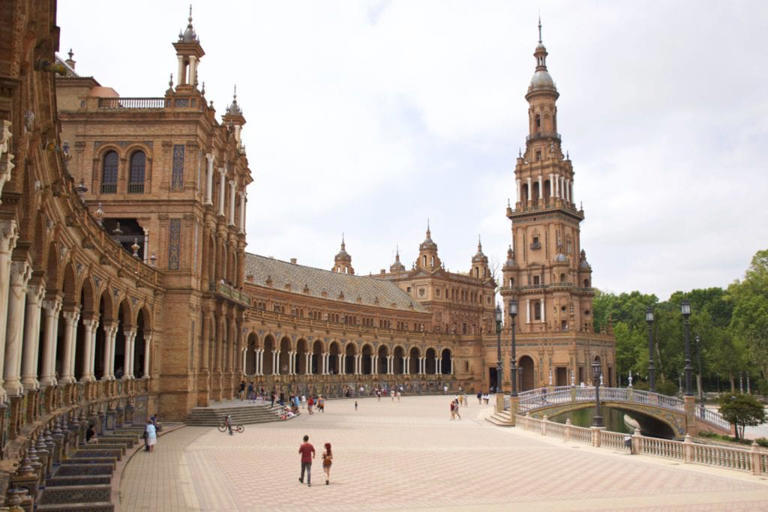
Taking the train in Spain - all you need to know

Apr 3, 2024 • 15 min read
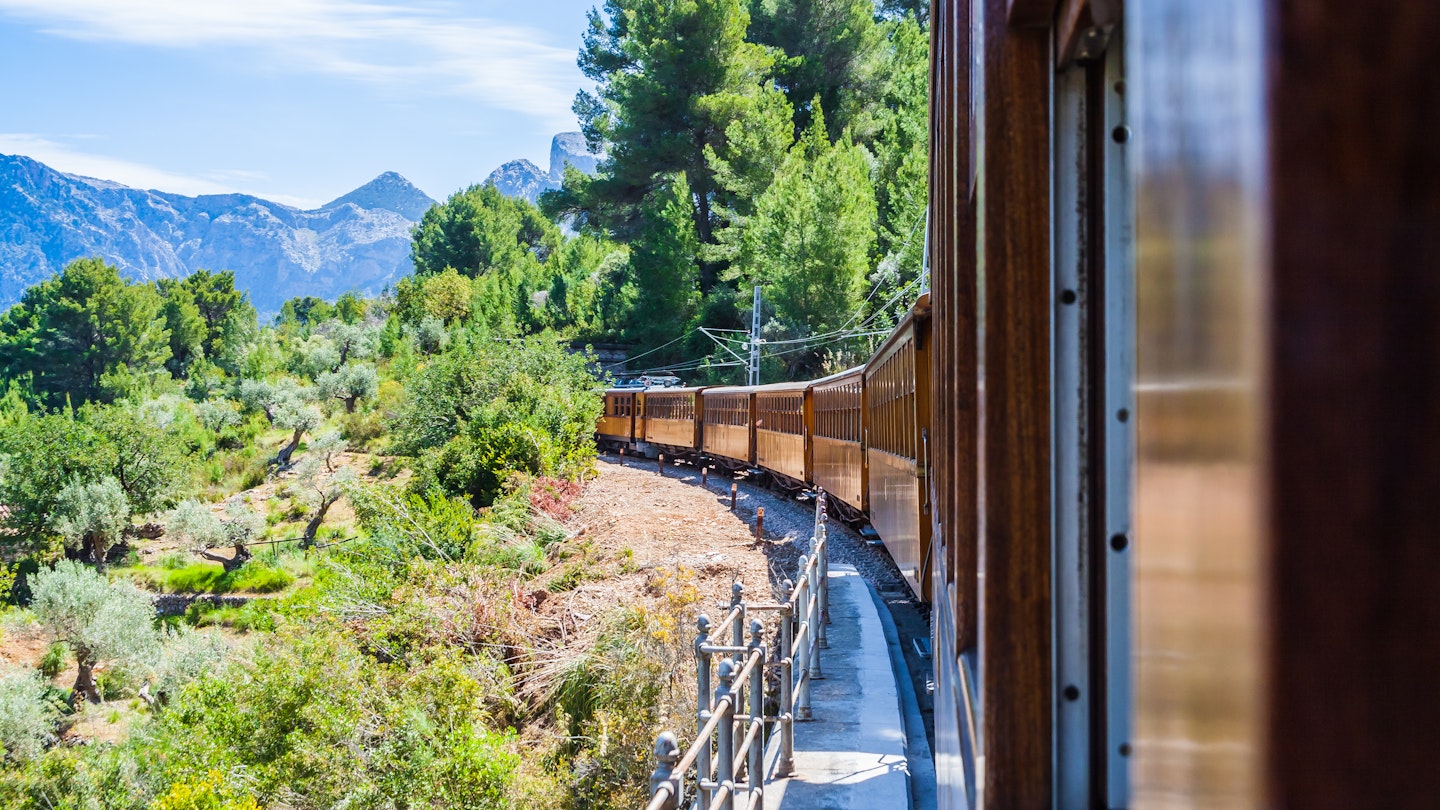
The vintage train from Sóller to Palma de Mallorca is one of the most scenic rail routes in Spain © Shutterstock
Spain boasts Europe’s longest high-speed rail network, second only to China globally, and its trains are exceptional and far-reaching. In one day, you could gawp at Gaudí’s architectural genius in Barcelona , be whisked by rail to Madrid ’s museums, and still arrive in Seville for a sunset flamenco show.
Not that it’s all A to B whirlwind rail routes. There are some outstanding scenic train journeys to slow down and enjoy the Spanish pace of life, whether trundling along the northern coast’s narrow-gauge tracks or meandering into the mountains. And with some new low-cost operators now on the scene, exploring Spain by train has never been more affordable.
With over a thousand stations and thousands more daily departures, getting around Spain by train is a straightforward joy rather than a stressful necessity. Seat reservations on most services guarantee uncrowded carriages, Rioja-serving cafe cars provide perfectly wine-paired panoramic views, and electric-powered trains make journeys even more sustainable. What’s not to love? Here’s everything you need to know to plan a train trip in Spain like a pro.
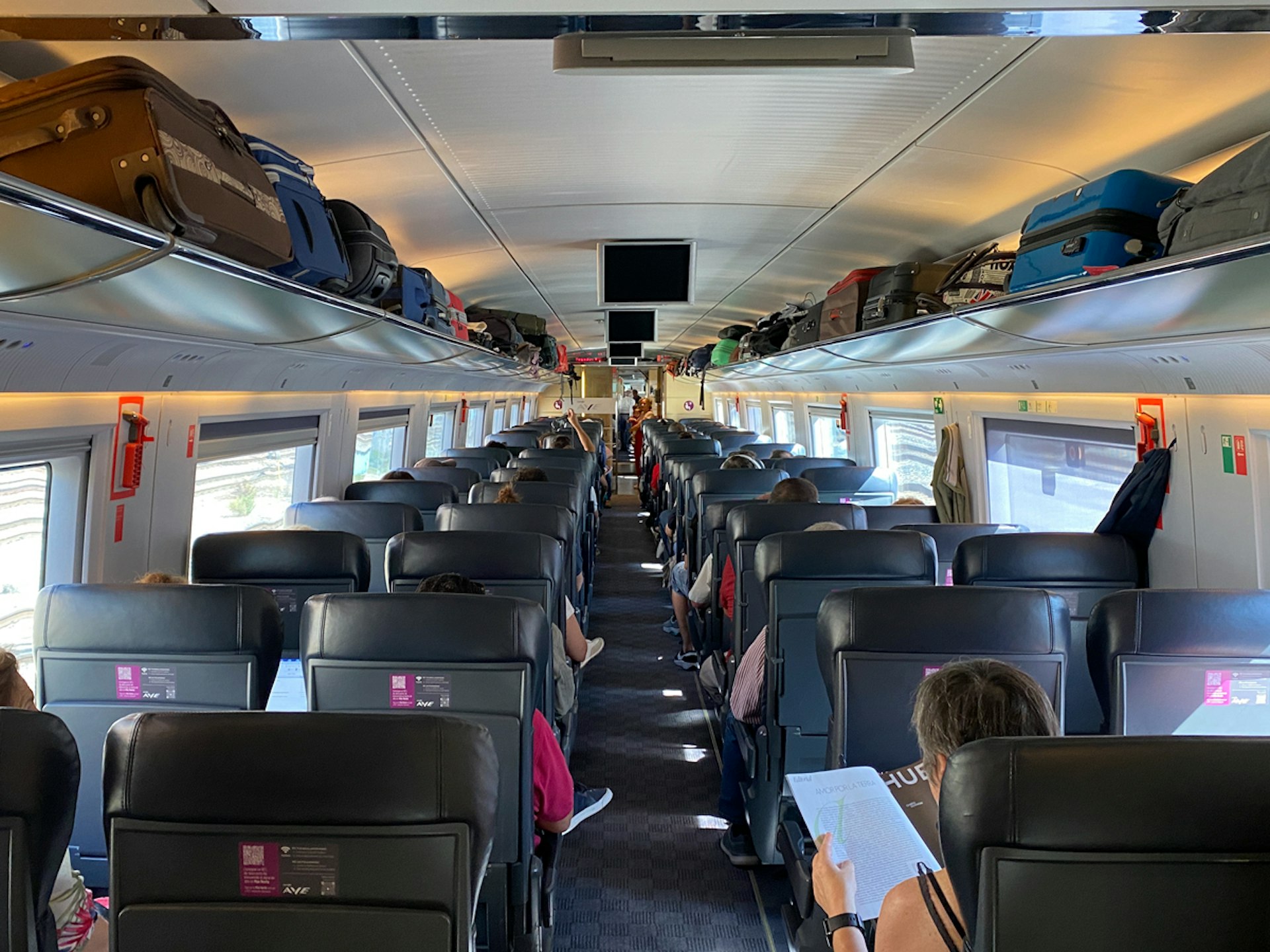
Train services are generally excellent in mainland Spain
You can traverse all four corners of Spain by train, usually on swift, reliable, well-maintained carriages. Few areas aren’t covered by at least a regional service. And where there are coverage gaps, buses will usually take you the final stretch to that pretty medieval village. While strikes can occur, they are rare, and minimum service levels are generally guaranteed. Compensation payments are offered for delays over one hour, which helps keep timetables on track.
Renfe is Spain’s national railway company, operating everything from non-stop regional capital connections to short-hop commuter services. Iryo and Ouigo provide low-cost competition on the main high-speed intercity lines, with the latter’s double-decker trains being a welcome addition.
While the numerous names for differing service and train types can be confusing, the trains in Spain can generally be divided into three categories:
- High-speed, mainly long-distance (larga distancia) services link many major cities, mainly via Madrid. These full-service trains can reach 310km/h (193mph) and include Renfe’s AVE (Alta Velocidad Española), its new no-frills Avlo counterpart, and Iryo and Ouigo. There’s an ever-growing network of high-speed routes , including the popular Barcelona–Madrid, Madrid–Seville, and Madrid–Valencia lines.
- Mid-distance services – although they can sometimes cover long distances and reach speeds of 250km/h (155mph) – make up the majority of other major routes. Renfe services these under names including Media Distancia, Avant and Alvia. Intercity and Regional Exprés services are somewhat slower but only call at major stations. Popular routes include Madrid– Toledo , Granada–Seville, and the Euromed coastal service between Barcelona and Alicante . Nearly all long and mid-distance services use sleek, modern carriages.
- Slower trains , including Regional, Proximidad, and Cercanías commuter services (Rodalies in Catalonia), complete the network. The older Cercanías AM trains, previously FEVE, mainly operate on the northern coast’s picturesque narrow-gauge tracks.
Nearly all large and medium-sized train stations are staffed and contain shops or cafes. High-speed train stations operate similarly to airports, with luggage security scanners and boarding gates. It’s advisable to arrive 20–30 minutes early, especially as boarding can close five minutes before departure. The bonus is you’ll have time to admire the stations. Some, like Toledo’s Mudejar-style ticket hall and art nouveau Bilbao Concordia , are attractions in their own right.
There are tourist trains and unique rail services too
In addition to standard train services, Spain has an exceptional selection of specialist rail routes known as “ tourist trains .” These range from seasonal, short routes, such as the scenic Tren dels Llacs in the Pre-Pyrenees, to indulgent, multiday sojourns like the luxury Transcantábrico train hotel. There are currently no standard domestic night trains.
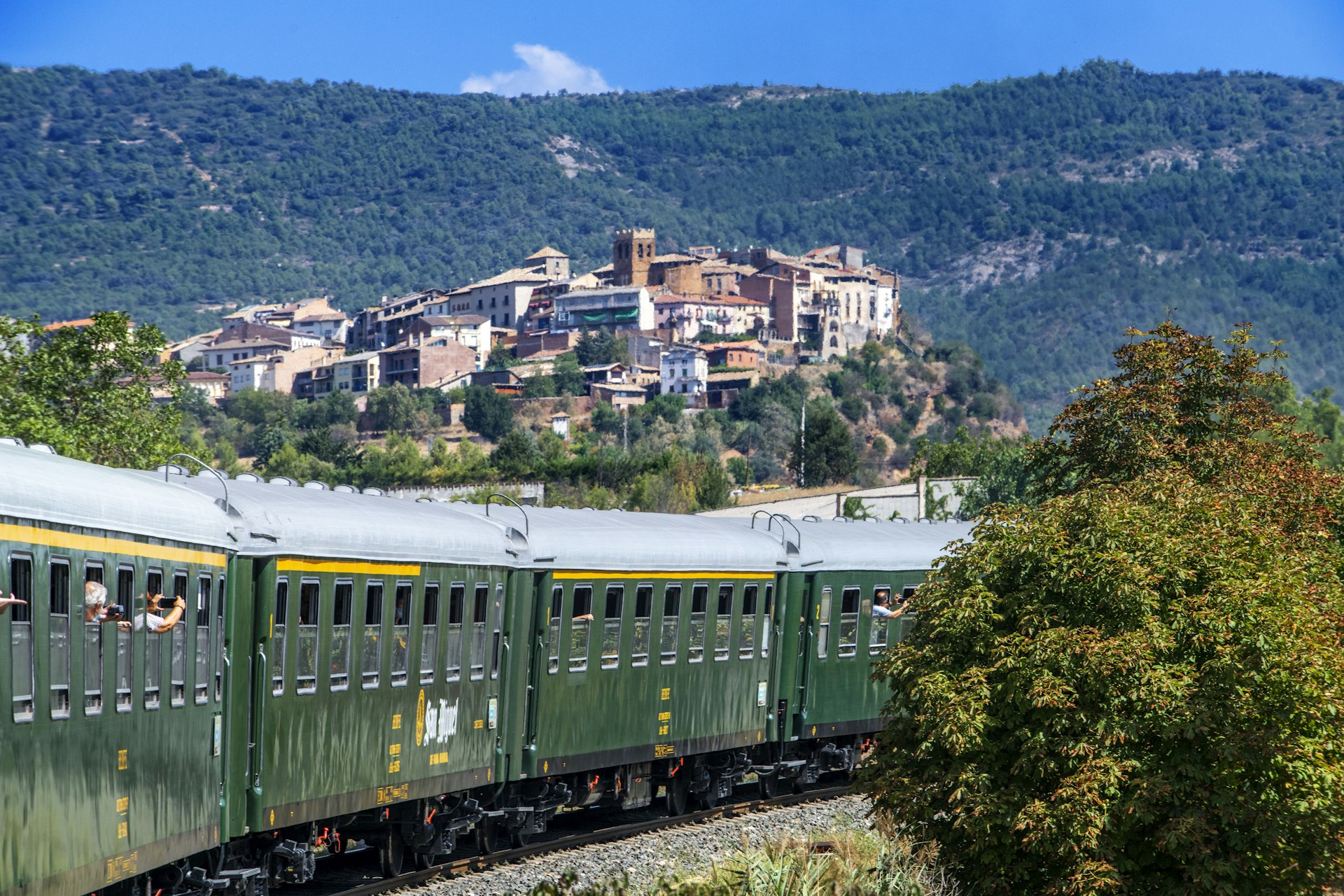
International and island rail routes are limited
Away from the mainland, the rail situation is starkly different. The Canary Islands have no train services, and only Mallorca in the Balearic Islands has limited rail connections . These consist of three short, modern lines and the vintage Sóller train.
Traveling to and from France by train is possible on France’s TGVs (from Paris) and Renfe’s International AVE services to Marseille and Lyon . Fares start from €29. You can also cross via Hendaye in the Basque Country or take the slower, scenic sleeper service via the Pyrenees . The Trenhotel (night service) between Madrid and Lisbon has been discontinued, leaving the Tren Celta between Vigo and Porto and the slow route to Lisbon via Badajoz as the only connections with Portugal . Work continues on improving the tracks to accommodate a direct, high-speed link between the two Iberian capitals.
Book ahead to save money and guarantee your seat
Spain’s rail operators all use dynamic pricing for high-speed and long-distance services. Therefore, early booking is advised, especially as seat reservations are mandatory. Advanced Avlo tickets between Madrid and Barcelona start from €7, with Ouigo and Iryo also offering competitive pricing on primary routes. A same-day ticket can sometimes cost more than 10 times more than booking in advance. Prices are less competitive on routes solely operated by Renfe.
When booking tickets online to or from major cities, use the dropdown city name followed by todos (all) to check for direct and affordable tickets from all stations. Provide the Passport or ID number of the photo document you’ll be traveling with, as tickets are personal. The second surname can be left blank – Spanish people take both their father's and mother’s surnames. Tickets can be printed, collected at self-service machines, or displayed as QR codes on mobile devices. Overall, Ouigo and Iryo's websites are easier to navigate than Renfe's, which can be glitchy. While most people would recommend using a third-party booking service – handy for comparing prices between all operators – direct reservations avoid booking fees.
Even short-distance, popular services with fixed fares (some mid-distance and regional trains) can fill up. I’ve previously struggled to get last-minute weekend tickets on the Madrid to Toledo route. Secure all tickets ahead if your vacation coincides with a major holiday such as Easter (Semana Santa) or Christmas, including around Three Kings Day on January 6.
Iryo and Ouigo release tickets many months ahead. Renfe’s tickets should be available at least 60 days ahead, but this isn’t always true. Check regularly in the months leading up to your departure and sign up for newsletters on the three websites to receive ticket availability and discount updates.
Occasionally, two single fares (ida) can be cheaper than a return (vuelta) . Reservations can also be made at station ticket machines (in English) or staffed desks. Larger stations may have separate sales points for particular types of tickets.
You’ll always be assigned a mandatory seat reservation. However, if you’d prefer to select your own to guarantee a window, you can change it for a nominal fee. Confusingly, Renfe’s website has this step after choosing a payment method.
Cercanías and Cercanías AM tickets can’t be purchased in advance and should be purchased at the ticket office, self-service machine, or onboard from the conductor when traveling from the tiniest unstaffed stations. This is the only time you’re allowed to board a train without a ticket.
If you wish to upgrade from basic class (básico) on high-speed routes, you can choose from Elige, Elige Confort and Prêmium on Renfe, or similar options on Iryo. Upgrades can include access to premium station lounges, at-seat food service, and more spacious seats. Solo travelers may want to upgrade to enjoy an individual seat in the 2+1 configured carriages. Ouigo allows these seats as a paid add-on without upgrading.
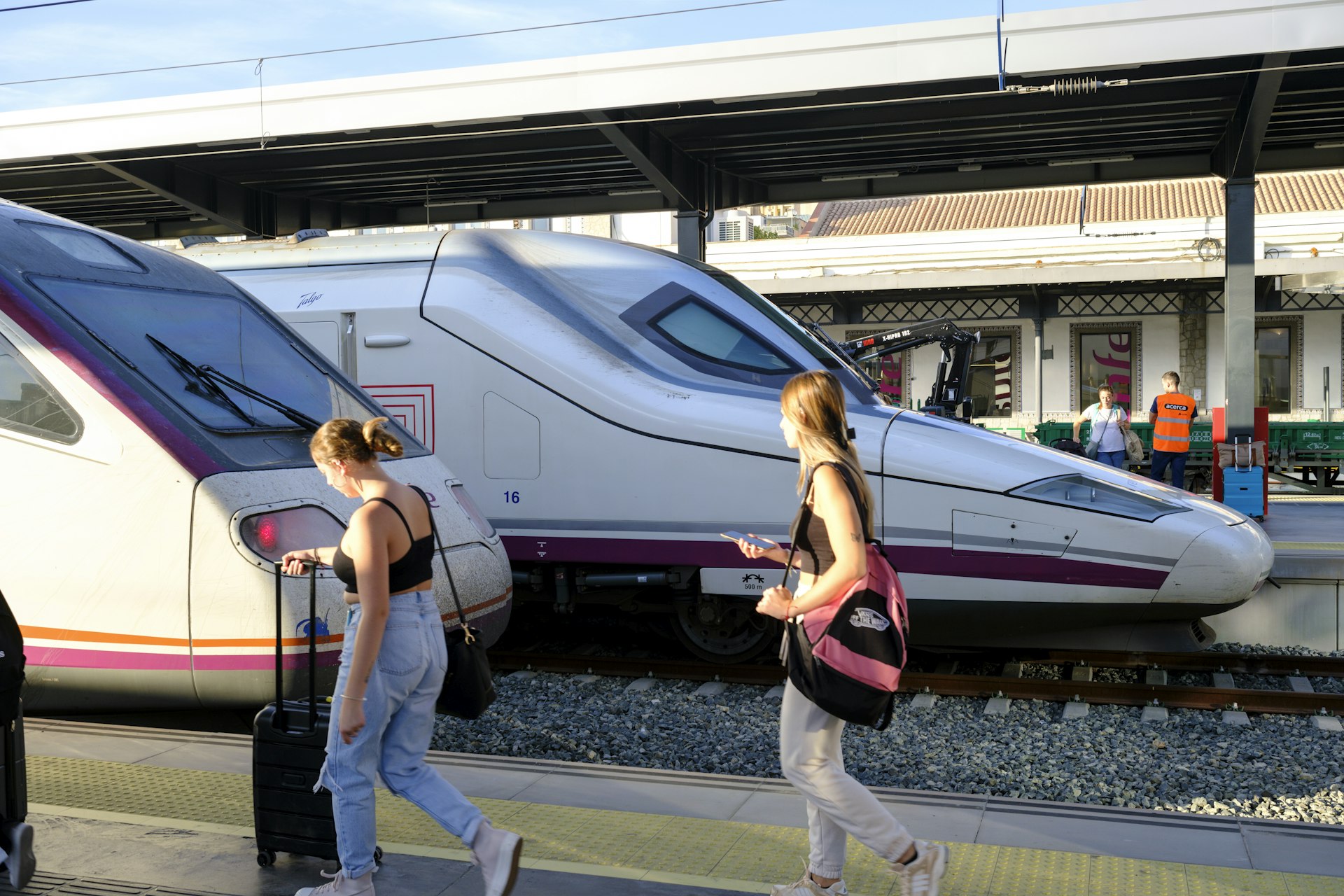
Discounts and offers: know your benefits and bring ID
Much noise was made about the launch of Spain’s fixed-price travel pass . Yet this system, established to offer discounted fares on repeat return trips, is primarily aimed at locals and commuters.
Renfe does offer a Spain Rail Pass for travelers , covering between four and ten journeys. However, depending on the routes you plan to take, pre-booking discounted, advanced fares can be cheaper. Some region-specific options exist, such as the better value three-day Galica Rail Pass .
Other discounts available on Renfe include:
- Small group discount when booking four or more travelers together.
- Seniors discount, up to 40%, for over 60s. However, this requires purchasing a card ( La Tarjeta Dorada ) in person before making the reservation. Advanced, discounted fares can be better value.
- Youth Discounts for under 25s with a European Youth Card or suitable International Student Card. A digital card can be purchased online by citizens of most countries.
- Babies travel for free, as do children, although the age cap varies between operators.
Considering an Interrail or Eurail pass? Check on any savings first. All high-speed trains in Spain require seat reservations, an additional cost not included in these passes. Avlo, Iryo, and Ouigo are likewise excluded, and these cheaper advanced tickets may be better value than using the pass, though there is less flexibility.
Money-saving tip: high-speed trains include a free local ticket
If you’re traveling on a high-speed AVE or long-distance service operated by Renfe or Iryo, Combinado Cercanías is included. This allows for free use of local Cercanías trains to reach your departure station and again on arrival. Scan the QR code at barriers, or use the PDF code to get a zero-priced ticket at Cercanías’ self-service machines.
Seat reservations ensure most train journeys don’t feel crowded
Traveling by train in Spain is so enjoyable because all long and mid-distance services require a seat reservation. With no congested corridors or jostling vestibules, these trains never feel crowded, even when full. However, some regional and Cercanías services can be packed, particularly around commuter hours and Friday and Sunday evenings. You might want to avoid peak times or, when available, pay for a regional service seat reservation.
Plan around major events and regional holidays during your trip, such as Semana Santa, when ticket demand and crammed suburban trains are common. Trains in Spain operate every day of the year, though some services may finish earlier on public holidays. If you’re traveling on weekends or during holidays, check onward public transport in advance as small, rural stations may have a reduced weekend bus service.
Train can be the fastest, most affordable transport method
Using the train in Spain can be quicker and cheaper than flying. For example, a flight from Madrid to Barcelona takes 1¼ hours compared with 2½ hours by high-speed rail. But once you factor in security checks, out-of-city airport transfers, and runway taxi times, the overall journey length by plane becomes longer.
Driving distances are considerable. The same journey by car will take closer to seven hours. It’s unquestionably worth renting a car if you’re planning a road trip , but generally, long-distance jaunts are best by rail.
Most train terminuses are connected to city buses and, in larger metropolises, commuter rail or metro systems. Barcelona-El Prat Airport and Madrid–Barajas Airport are on the train network. If you wish to visit smaller towns or villages that are not on the train network, consider other ways to get around Spain .

Onboard facilities differ between service types
All of Spain’s high-speed train services are spacious, comfortable, clean and well cared for. Carry-on luggage can be placed in overhead racks, while storage areas at either end of the carriage accommodate bulkier luggage. Popular services (especially on Friday and Sunday evenings) can quickly fill, and train staff will usually assist in rearranging suitcases to fit. Cercanías services can be more dated and crowded and often lack enough dedicated luggage space.
If you’re traveling by bicycle, check the luggage policies of Renfe and Iryo . In some instances, bikes must be disassembled or an additional fee paid.
The dining carts on Spain’s trains are typically stand-up, cafe-style rather than seated dining carriages. They’re good for stretching your legs or getting an alternative window view, but dining at your seat table is often more comfortable. A selection of hot meals, snacks and drinks – usually all of decent quality – are available, and certain ticket types offer pre-ordered meals served at your seat. Iryo has particularly impressive dining options .
On some routes, a trolley service may be provided in addition or as an alternative. Mid-distance and Avlo services have vending machines rather than dining carts. Bringing your own food and even alcohol onboard Renfe’s services isn’t a problem.
Complimentary (sometimes patchy) wi-fi is provided on Iryo and Renfe’s high-speed services, alongside entertainment portals accessible on your device. Ouigo charges per connection. Plug sockets (F-type) are available at seats on high-speed and mid-distance trains. Nearly all trains, except commuter services, have toilets.
Plan the perfect train trip with these scenic routes and tips
The most popular train routes for travelers in Spain are the high-speed connections that rocket between Seville, Madrid, Barcelona and Valencia. But riding the rails in Spain isn’t only about barrelling between urban sprawl. These are some of our favorite scenic rail routes worth planning into your trip.
- Santander to Oviedo : Cross the lush landscapes of Northern Spain on this slow, scenic rail route using Cercanías AM’s narrow-gauge tracks. This six-hour journey provides some of the expensive Transcantábrico Train’s panoramas for a bargain €16.55. There are no seat reservations, which is handy, as you can switch sides to marvel at both the sparkling Bay of Biscay and the mighty Cantabrian Mountains , Spain’s answer to the Dolomites.
- Barcelona to A Coruña : Once served by the discontinued sleeper Trenhotel, this is one of Spain’s longest rail routes, taking nearly 14 hours. The 9:05am Alvia departure can be affordable to cross seven of Spain’s autonomous communities. Pack snacks and pay for a window seat (ideally on the right) to see the full scope of Spain’s landscapes, from arid pastures and fertile farmlands to the verdant Galician Massif . Consider hopping off a few stops early in Ourense to use the town’s free-to-access thermal pools the following morning.
- Granada to Almería : Leaving the magnificent Moorish Alhambra behind, set off across western Andalucía towards the coastal city of Almería. It’s a showstopping three-hour journey traversing the foothills of the Sierra Nevada, snow-capped peaks looming beyond, before cutting through carpets of cork trees. Book a late afternoon departure for ethereal golden light, or take two single tickets to plan a lunch pause at Guadix, best known for its cave houses.
- Palma de Mallorca to Sóller: Step onboard the rickety, wooden carriage of Ferrocarril de Sóller , constructed in 1912, for a one-hour-long trundle from Mallorca's capital to the pretty port town of Sóller. En route, you’ll wend through the Tramuntana Mountains, unlit tunnels, and citrus groves close enough to touch. All seats are excellent, but you might want to stand in the open-air platforms between carriages.
- Zaragoza to Canfranc : A one-way ticket on this twice-a-day, 2½-hour regional train costs just €16.90, and you’ll get plenty of panoramas for your money, especially after Huesca when the tracks slowly climb up into the Pyrenees. Our resident rail expert, Tom Hall, calls it one of Europe’s best train routes , partly because the landmark Canfranc Station has recently been reborn as a grandiose hotel .

Station tips when traveling Spain by train
Most large cities have multiple train stations, so always confirm departure points. When traveling to dedicated AVE stations outside major cities, check the station’s distance from the city center and pre-plan your connecting travel. Some stations, such as Antequera ’s Santa Ana, can be as far as 15km (9 miles) from the Old Town.
Spain’s largest stations, such as Madrid Atocha and Barcelona Sants, can be confusing due to split-level and separated boarding areas for different services. Don’t be afraid to ask for help navigating the station. A quick flash of your ticket will soon have you pointed in the right direction.
All major stations have cafes and kiosks where you can pick up food, although preparing a train picnic from a delicatessen might be preferable. Still, a quick tapas in Atocha's Tropical Garden, even if the pond-residing turtles have now been rehomed, is a solid start to any journey. If you’re on a connecting service with time to explore beyond the station, most larger terminals have lockers or left luggage desks (consigna) .
Many stations are accessible, but there’s room for improvement on older services
Adif, the agency in charge of Spain’s rail infrastructure, provides in-station and boarding assistance for travelers with accessibility needs via the Acerca service, offered at 145 stations.
When booking tickets online, H seats – accessible spaces that can anchor a wheelchair – can be requested on the opening screen, and Acerca assistance can be requested later in the booking process. A minimum of 12–48 hours' notice is stipulated, depending on the operator. However, in larger stations, staffed service centers can usually provide support without pre-booking if you arrive and register at the desk ahead of travel. Check which facilities are available at each station on Adif’s website .
In addition to offering boarding support (many train types require a stair-climber lift, not just a ramp, while others like Avlo have level boarding), Acerca can provide technical aids for hearing and a guided sight service. Contact Adif Acerca for information on induction loop systems or to discuss alternative routes should your planned journey include a non-accessible station without in-person assistance. Tactile paving, step-free access, and elevators are installed at most major stations, and nearly every train has a conductor or staff member onboard who can assist.
On high-speed, long-distance, and most other services, wheelchair-accessible bathrooms are located in carriages with H seats. Ouigo trains have a call button on adapted seats to provide food and drink service, as the cafe is located on the top deck. Cercanías AM carriages have no H seats but offer a dedicated space for wheelchair users with tie-downs. However, many older, narrow-gauge trains lack accessible bathrooms.
Explore related stories
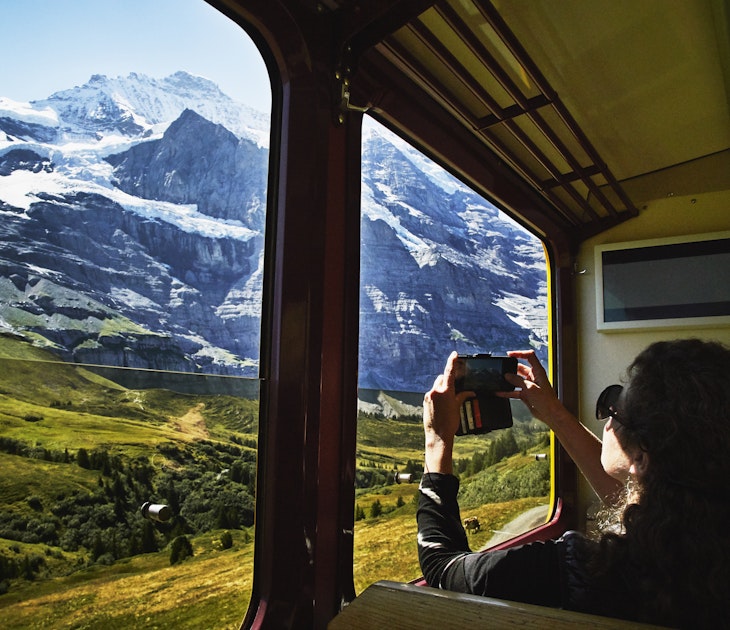
Sustainable Travel
Jan 16, 2024 • 8 min read
Rolling forests, saw-toothed mountains, bridges spanning river gorges - these European train rides put on quite a show.

Dec 25, 2023 • 11 min read

Dec 19, 2023 • 6 min read

Nov 1, 2023 • 4 min read

Oct 19, 2023 • 8 min read

Oct 6, 2023 • 8 min read

Jun 26, 2023 • 5 min read

Jun 18, 2023 • 6 min read

May 19, 2023 • 12 min read
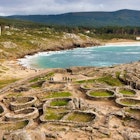
May 5, 2023 • 7 min read

IMAGES
VIDEO
COMMENTS
The 34 museums of Valencia are there to suit all tastes. From the second largest art gallery in Spain at the Museo de Bellas Artes, to the IVAM's modern art, including the Museo Nacional de Cerámica, the Fallero, the Centre del Carme or the Bombas Gens art centre. View more.
Learn about the best places to visit with our guide to the top attractions and things to see and do in Valencia, Spain. On This Page: 1. La Ciutat de les Arts i les Ciències. 2. Las Fallas Festival. 3. Oceanogràfic de València. 4.
Valencia Old Town Tour with Wine & Tapas in 11th Century Historic Monument. (1533 reviews) from $ 82.72. Read More. San Jose Caves Guided Tour from Valencia. (340 reviews) from $ 76.10. Read More ...
There are also ultra-modern visitor attractions at the City of the Arts and Sciences, and it all goes to make Valencia one of Spain's most complete destinations. Let's explore the best things to do in Valencia: 1. City of the Arts and Sciences. Source: Tatiana Popova / shutterstock. City of the Arts and Sciences.
It celebrates the power of iron and glass to permit the construction of large open spaces, but still utilizes domes at…. See ways to experience (54) 2023. 2. Oceanogràfic València. 27,871. Aquariums. Oceanogràfic of Valencia is the biggest aquarium in Europe.
A cultural stroll: between the classic and the avant-garde. Valencia is perfect to discover on foot One of the most fascinating attractions is the Plaza de la Reina, with the Cathedral and the Miguelete tower, where you should climb the 207 steps for some beautiful views. In the city centre you can also find the Silk Exchange-one of Valencia's most beautiful buildings, a World Heritage Site ...
By ILoveHackney. It celebrates the power of iron and glass to permit the construction of large open spaces, but still utilizes domes at…. See ways to experience (54) 2023. 2. Oceanogràfic València. 27,877. Aquariums. Oceanogràfic of Valencia is the biggest aquarium in Europe.
Discover the best attractions in Valencia including Ciudad de las Artes y las Ciencias, Catedral de Valencia, and Iglesia de San Nicolás. ... L'Eixample & Southern Valencia. Spain's most famous aquarium is the southernmost building of the Ciudad de las Artes y las Ciencias. It's an impressive display, divided into a series of…
9. Try tapas by a Michelin-starred chef at the market. No trip to Valencia is complete without a trip to the Mercat Central, an arresting modernist building that dates back to 1928. Peruse the food stalls in the morning then stop for gourmet boccadillos (sandwiches) and tapas at Central Bar .
The Silk Exchange (La Lonja de la Seda) [Show All] 1. The City of Arts and Sciences. The City of Arts and Sciences is arguably the most important tourist attraction in Valencia. I don't know a single soul who wouldn't agree that this architectural masterpiece designed by Santiago Calatrava is a sight to behold.
Valencia. Spain's third-largest city is a magnificent place, content for Madrid and Barcelona to grab the headlines while it gets on with being a wonderfully liveable city with thriving cultural, eating and nightlife scenes. Never afraid to innovate, Valencia diverted its flood-prone river to the outskirts and converted the former riverbed ...
Valencia, Spain's third largest city, sits on the East coast of the Iberian Peninsula along the Mediterranean. While the larger Spanish cities have a distinctly urban, high-energy feel, this port city has a more laid-back atmosphere and a commitment to celebrating its natural sights. Old meets new
Hot tip: Take advantage of the strong local cheese and sausage culture and pack some tasty treats along with a blanket. A picnic in the park is one of the most fun things to do in Valencia on a budget and is suitable for all ages. 16. Nose around the world's largest miniature museum.
There are several cultural and tourist attractions here, including the Palau de les Artes (a huge concert venue), the city's science museum, Hemisferic (IMAX cinema - more on that below!), Umbracle (gardens) and Oceanografic (largest aquarium in Europe). The City of Arts and Sciences is a Valencia must see!
Valencia Tourism Valencia Hotels Valencia Guest House Valencia Holiday Homes Valencia Flights Valencia Restaurants Valencia Attractions Valencia Travel Forum Valencia Photos Valencia Map. ... Spain. Beaches. 2023. Coves de Sant Josep. 1,169. 41 km away. La Vall d'Uixo, Valencian Community, Spain. Caverns & Caves. Mundomar. 5,015. 106 km away ...
What to do in Valencia, Spain, including the best day trips, top museums, festivals, flamenco, and paella. ... Top 25 Valencia Sights and Day Trips. ... Damian Corrigan is a travel writer who has traveled extensively throughout Spain since moving there in 2003. He has written about the country full time since 2006. TripSavvy's editorial ...
Enjoy an afternoon of the finest basketball. Cheer on Europe's best basketball players at the Fonteta Pavilion. From October to early June, you can take in the games of the top-flight Valencia Basket Club's men's and women's competition. You can get yourself kitted out and buy a souvenir at the Valencia Basket store. SEE MORE.
Valencia top ten tourist attractions: we offer a list of the most popular museums, sights and famous tourist attractions of Valencia, Spain. Find out the best places to visit, Valencia sightseeing, the best attractions and activities in the city. The main highlights that you can't miss.
Valencia's City of Art and Sciences is one the most popular attractions in Valencia. It is a futuristic cultural world that spans over five buildings and covers 350,000 square metres. You may simply want to head to the City of Art and Sciences and take a wander amongst the stunning buildings designed by local architect Santiago Calatrava.
6. Museo de Bellas Artes. The Museum of Fine Arts of Valencia is Spain's second-largest art gallery. The museum displays art from the 15th to 19th centuries, including works by important Valencian painters like Joaquín Sorolla and Francisco de Goya. For any art lover, this is a must-see stop.
Cordoba. (mentioned above), and. Malaga. , a coastal city with beautiful beaches and lots to see and eat! Read Next: 50+ Photos That Will Inspire You To Visit Spain. San Sebastian, located on the ...
Using the train in Spain can be quicker and cheaper than flying. For example, a flight from Madrid to Barcelona takes 1¼ hours compared with 2½ hours by high-speed rail. But once you factor in security checks, out-of-city airport transfers, and runway taxi times, the overall journey length by plane becomes longer.